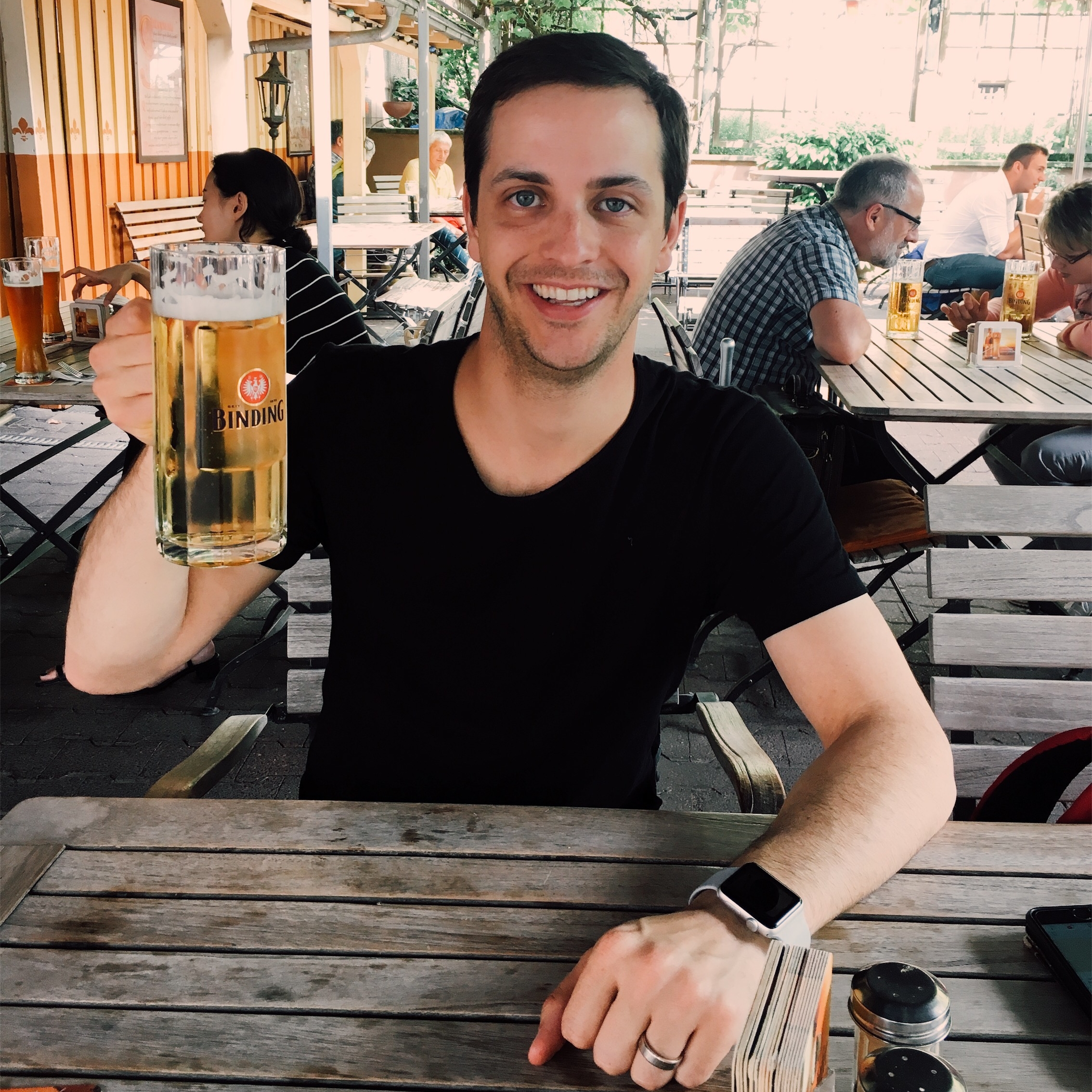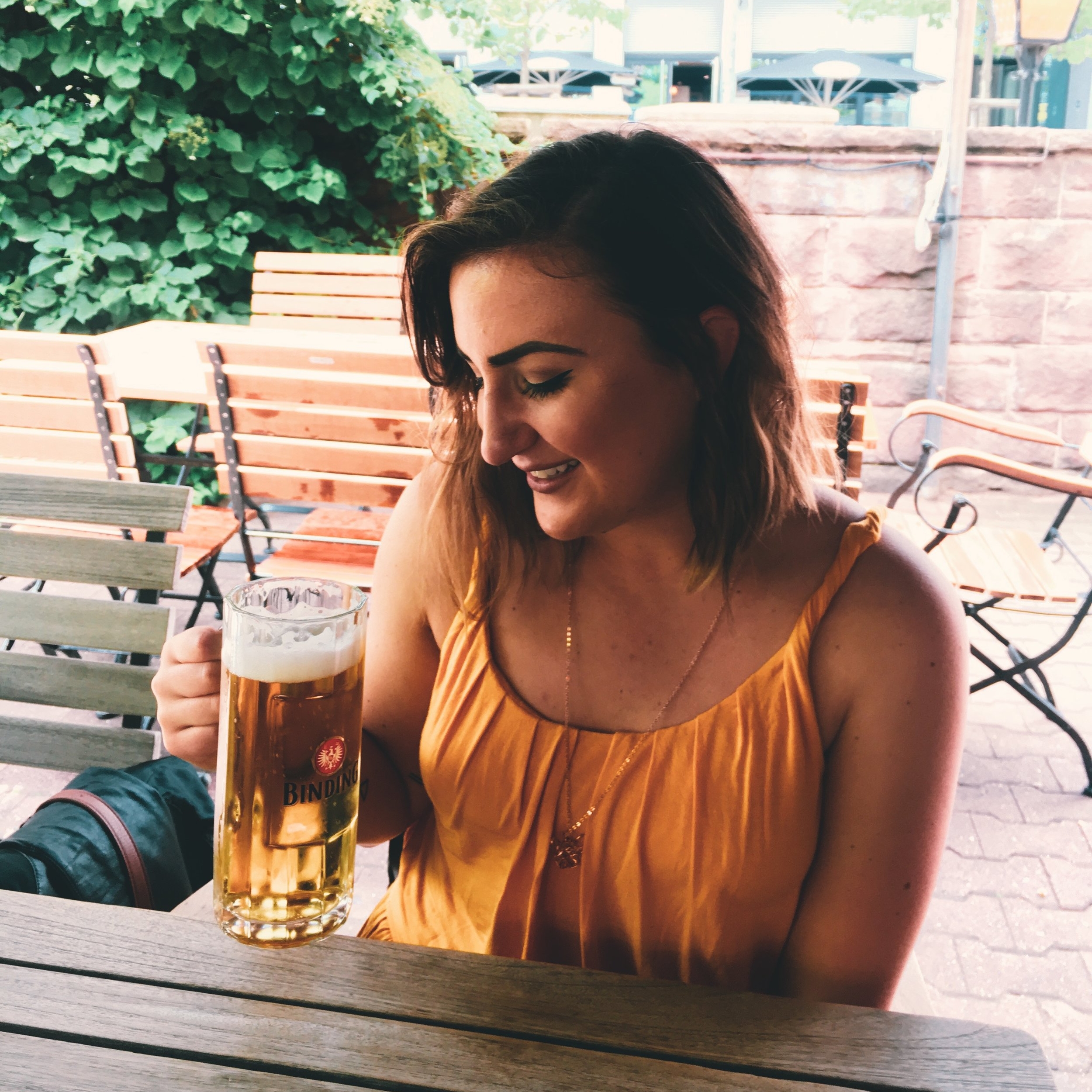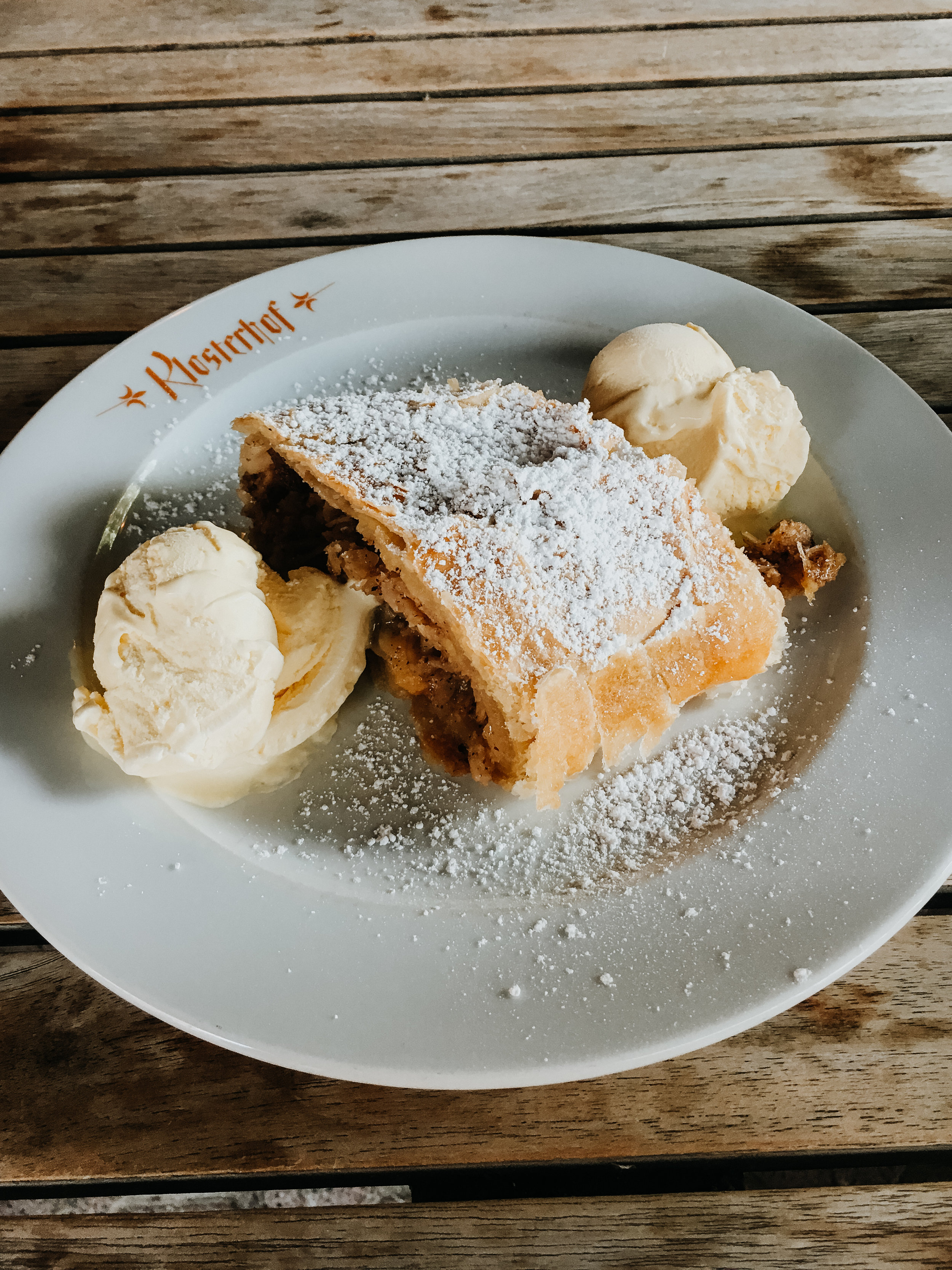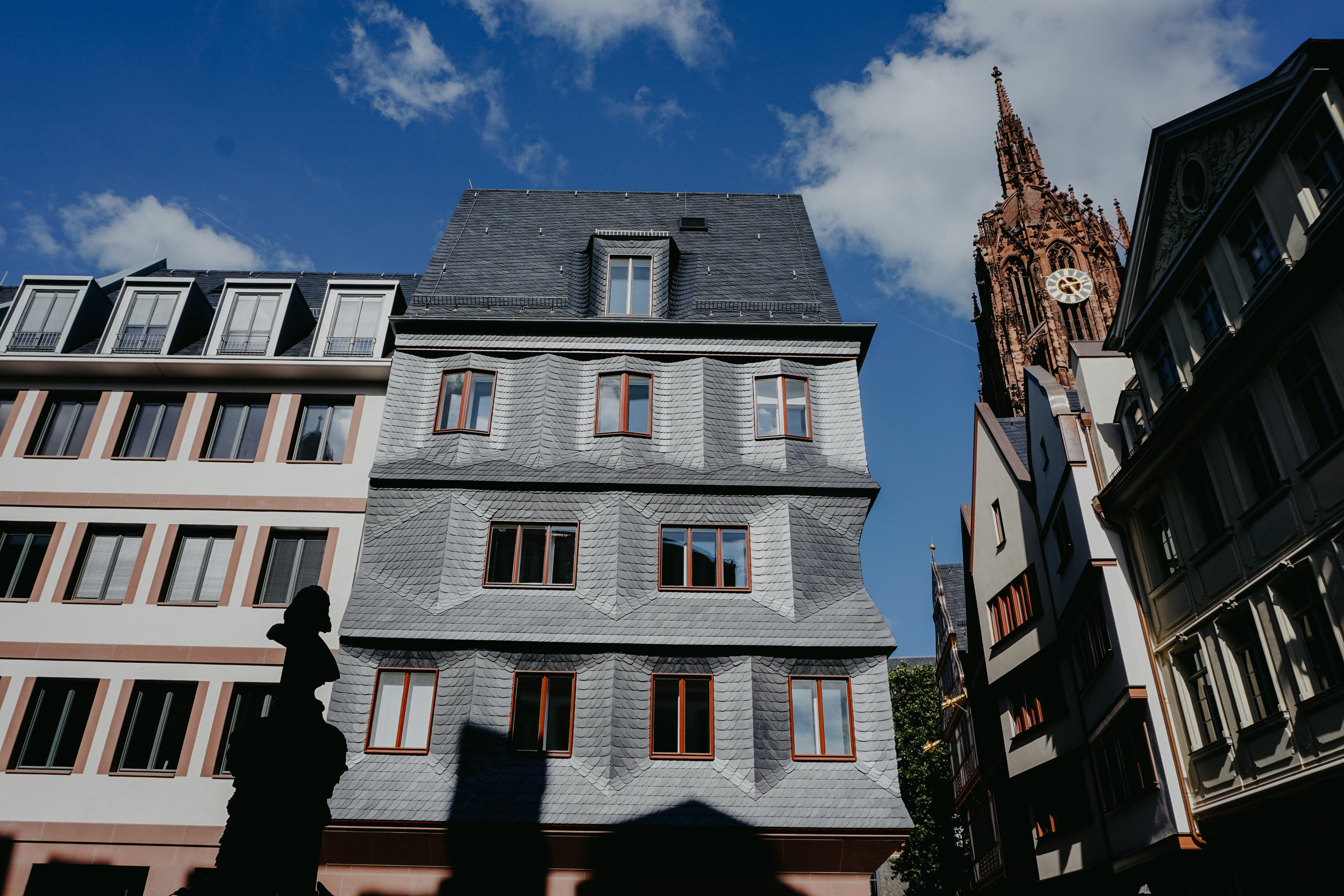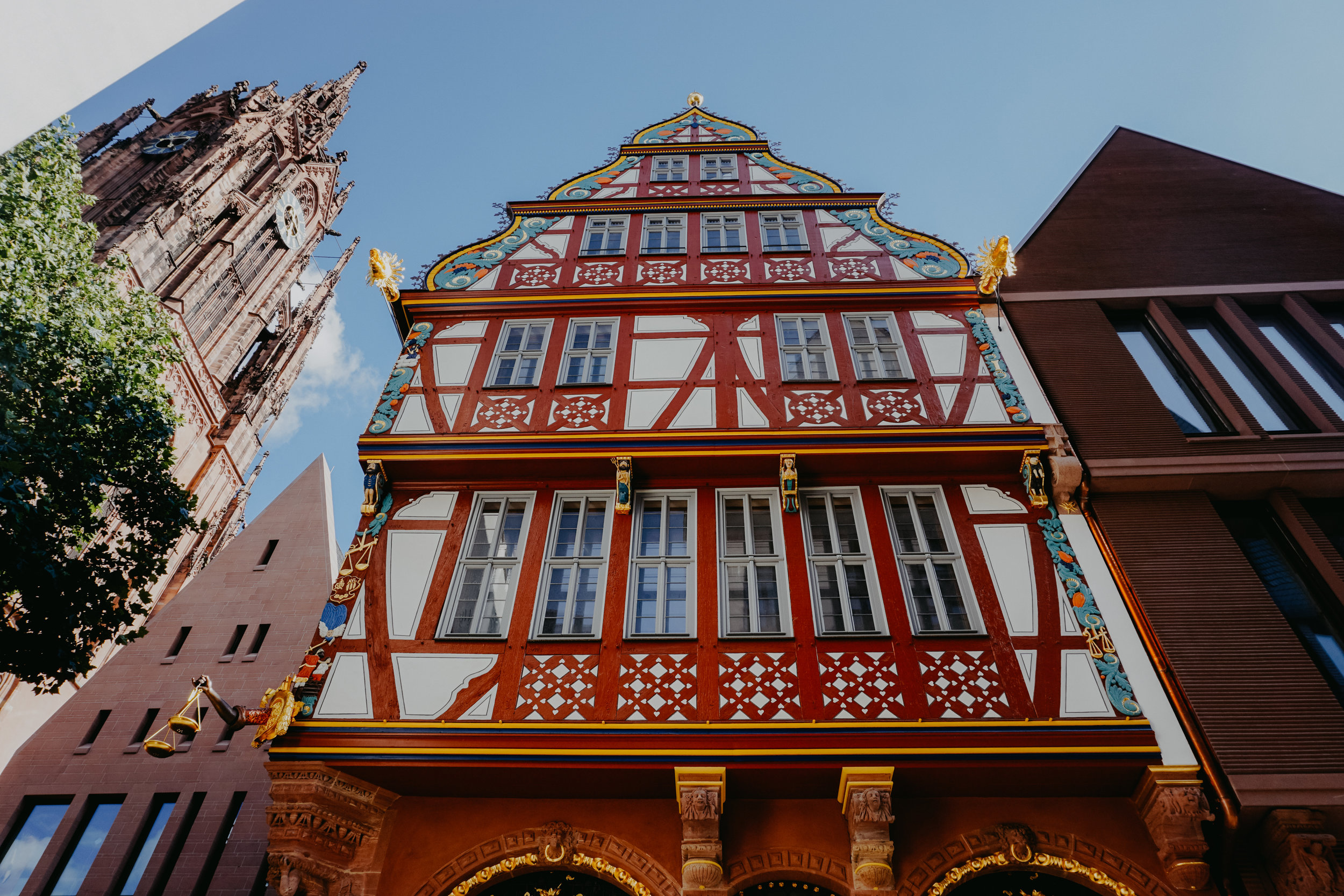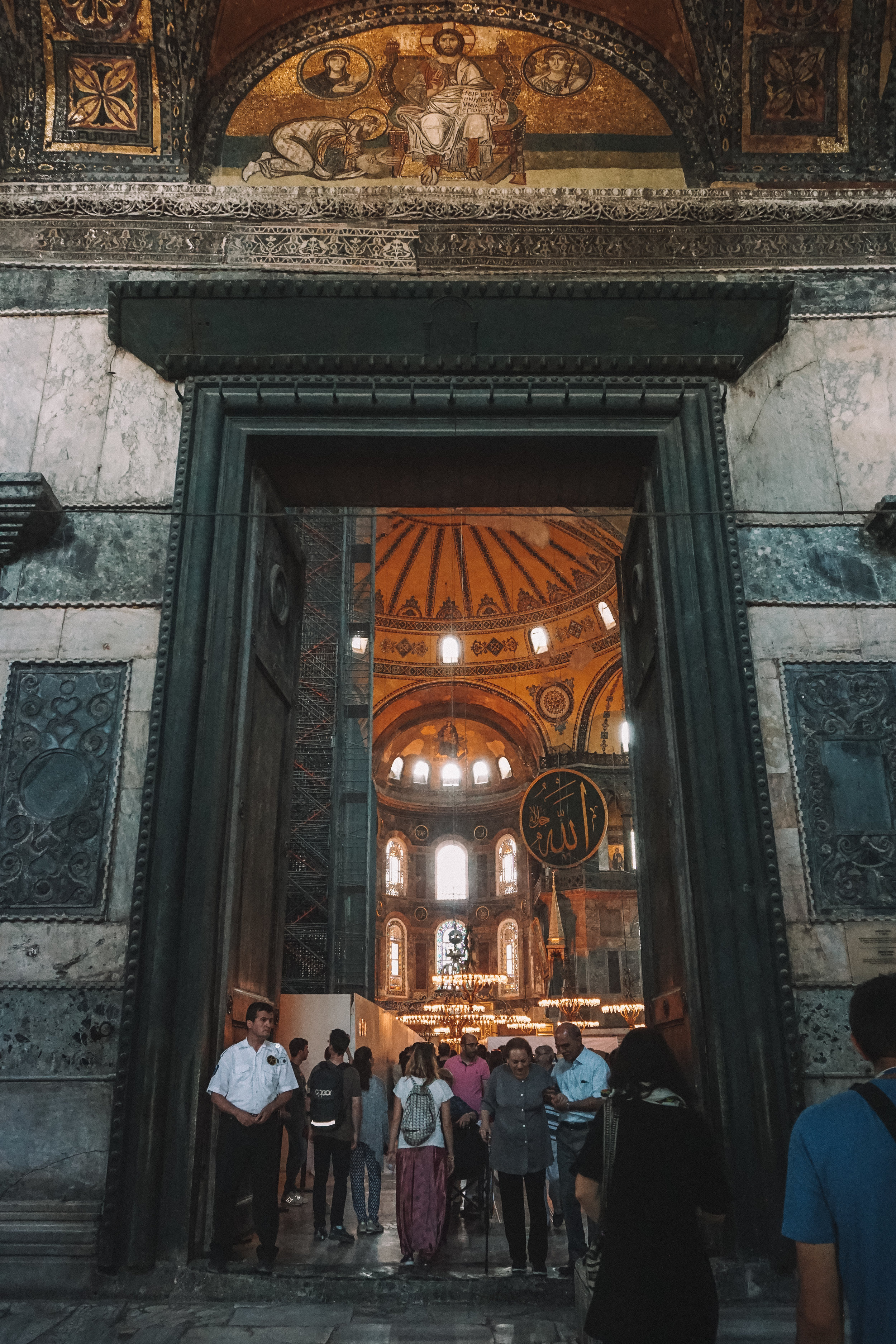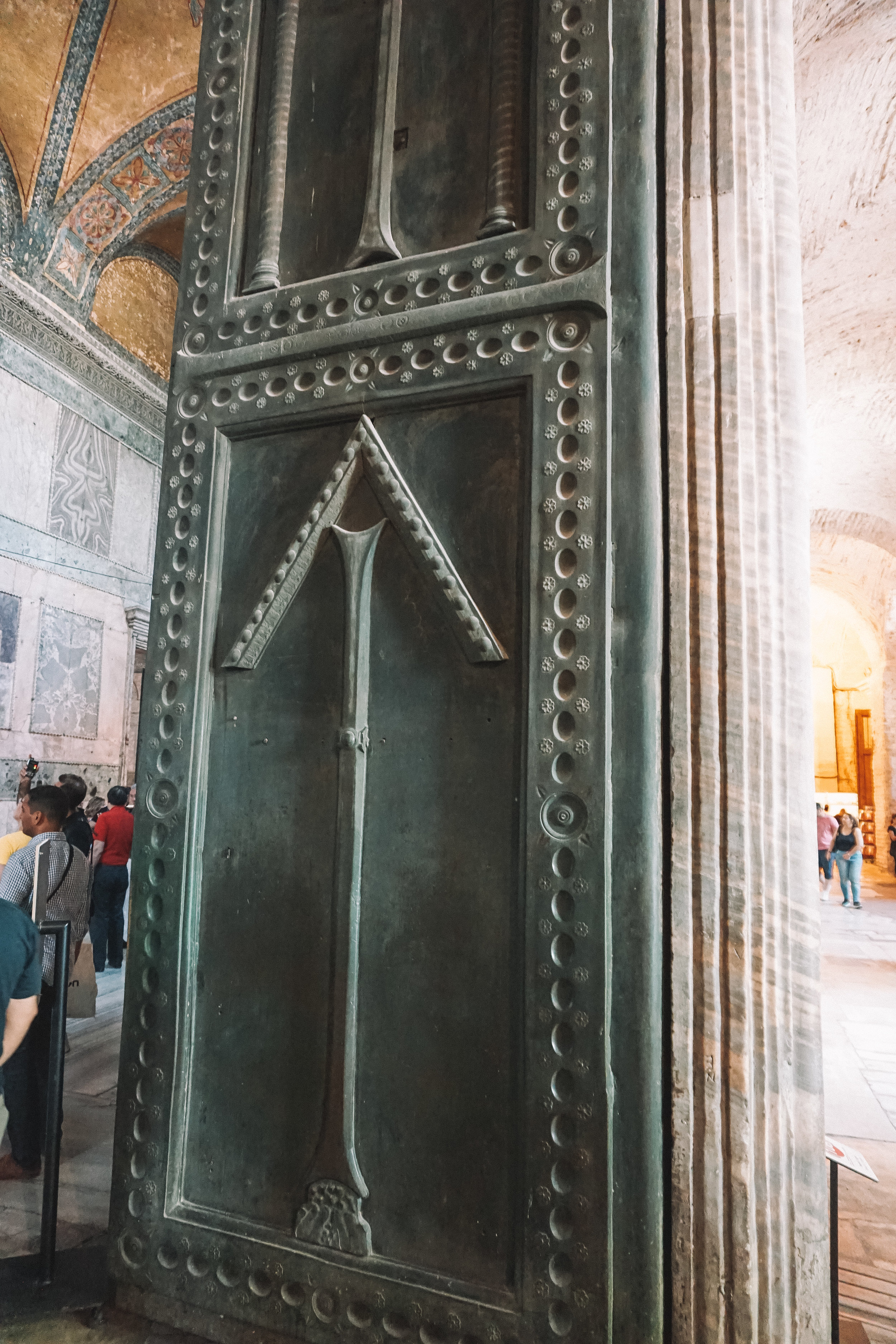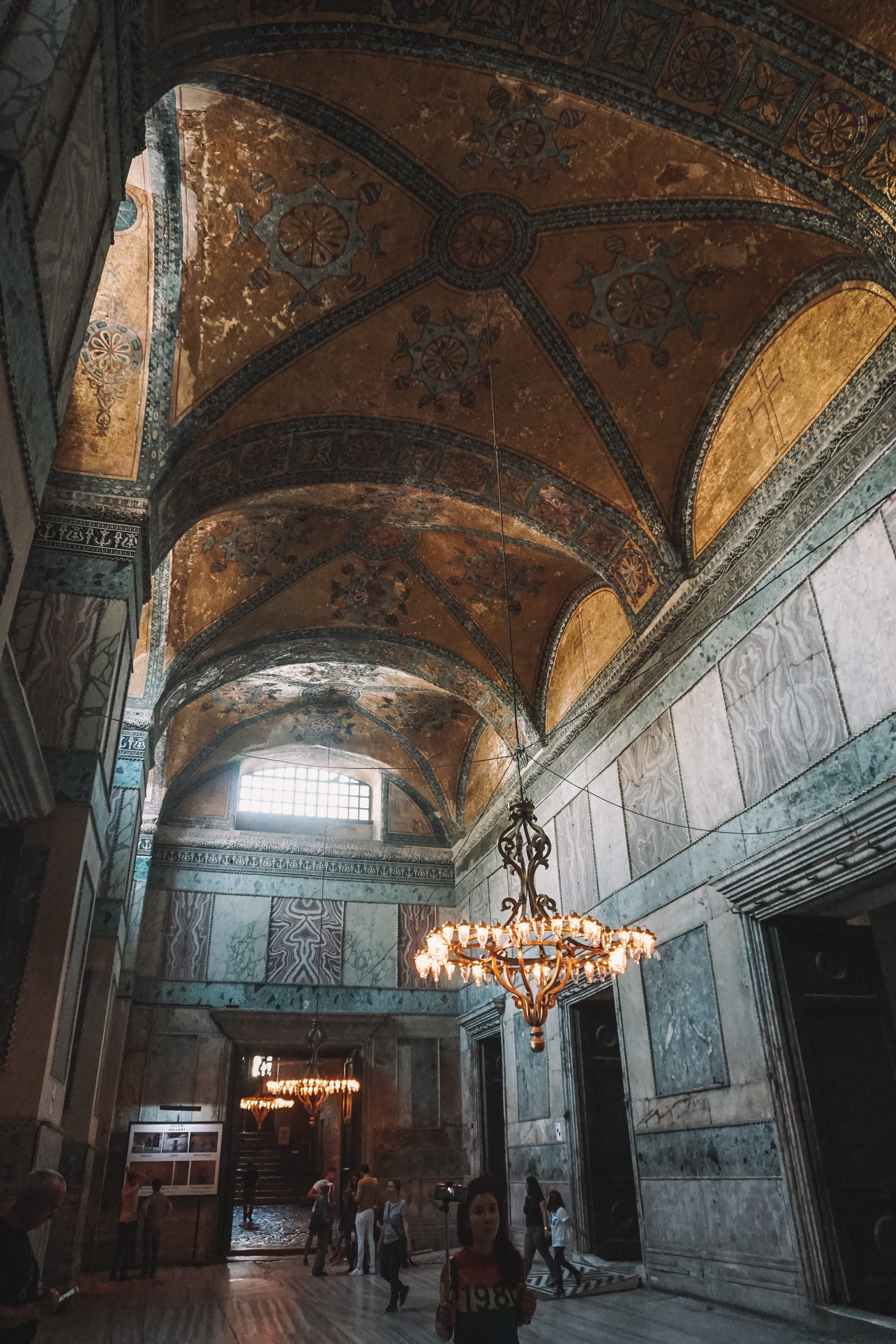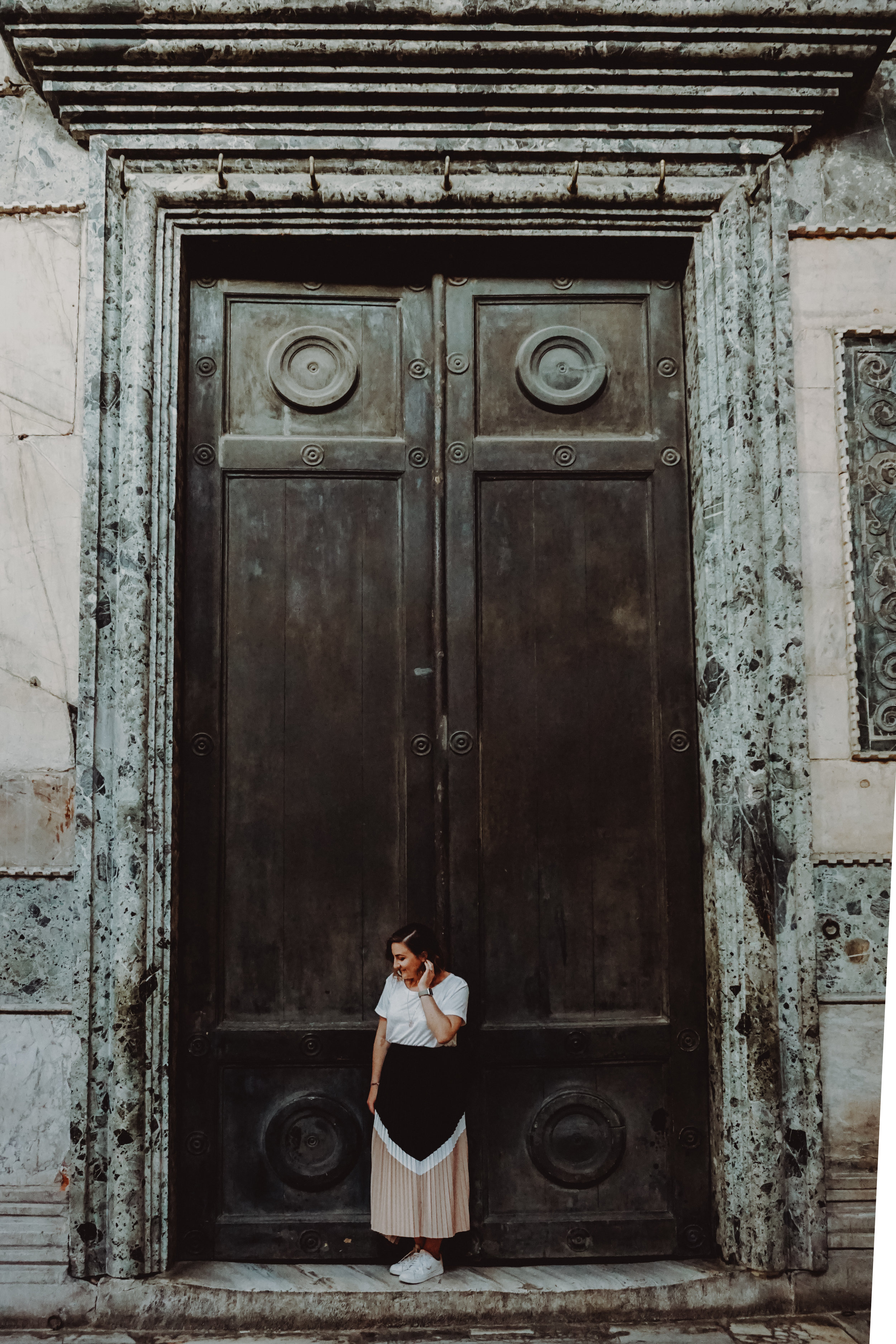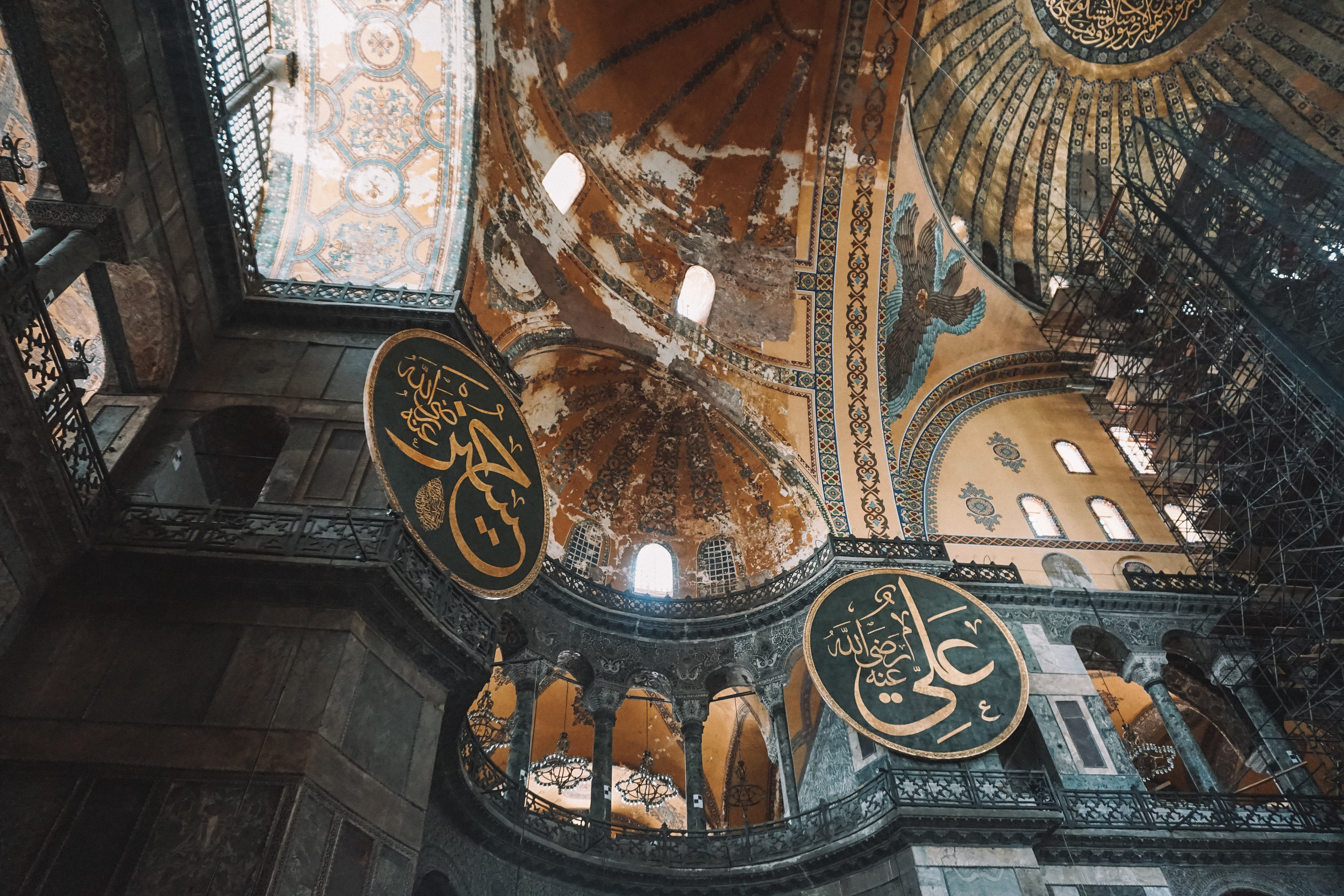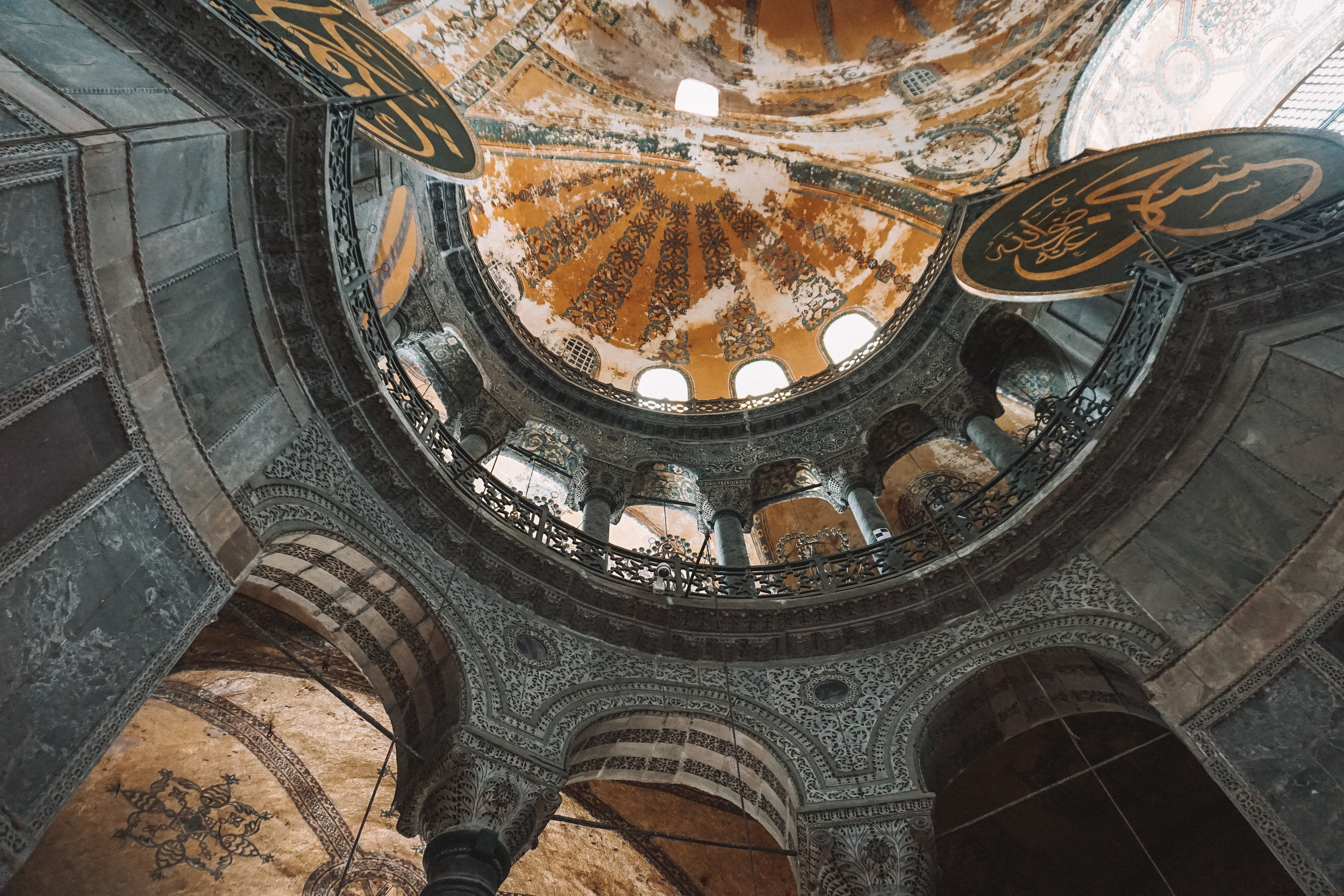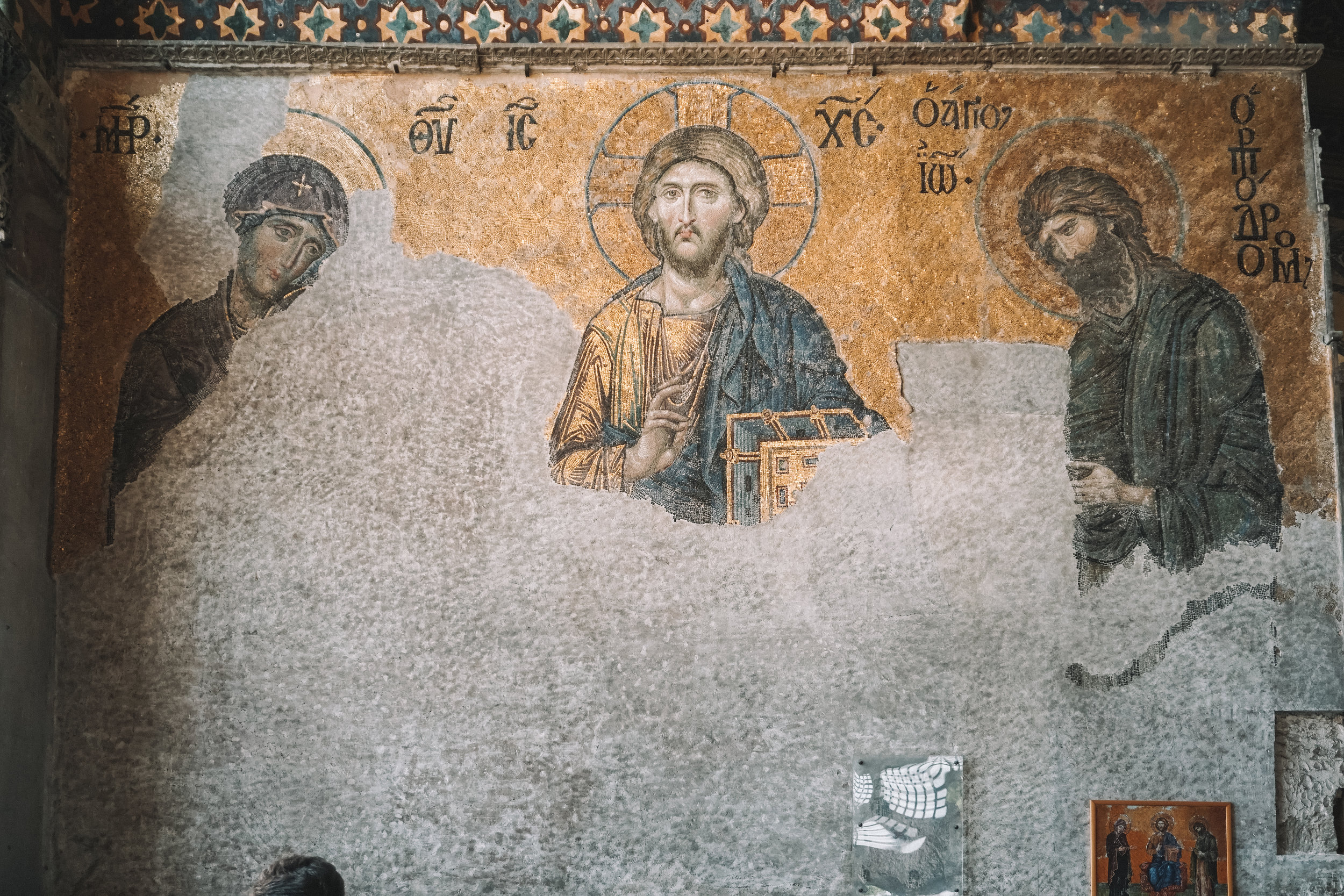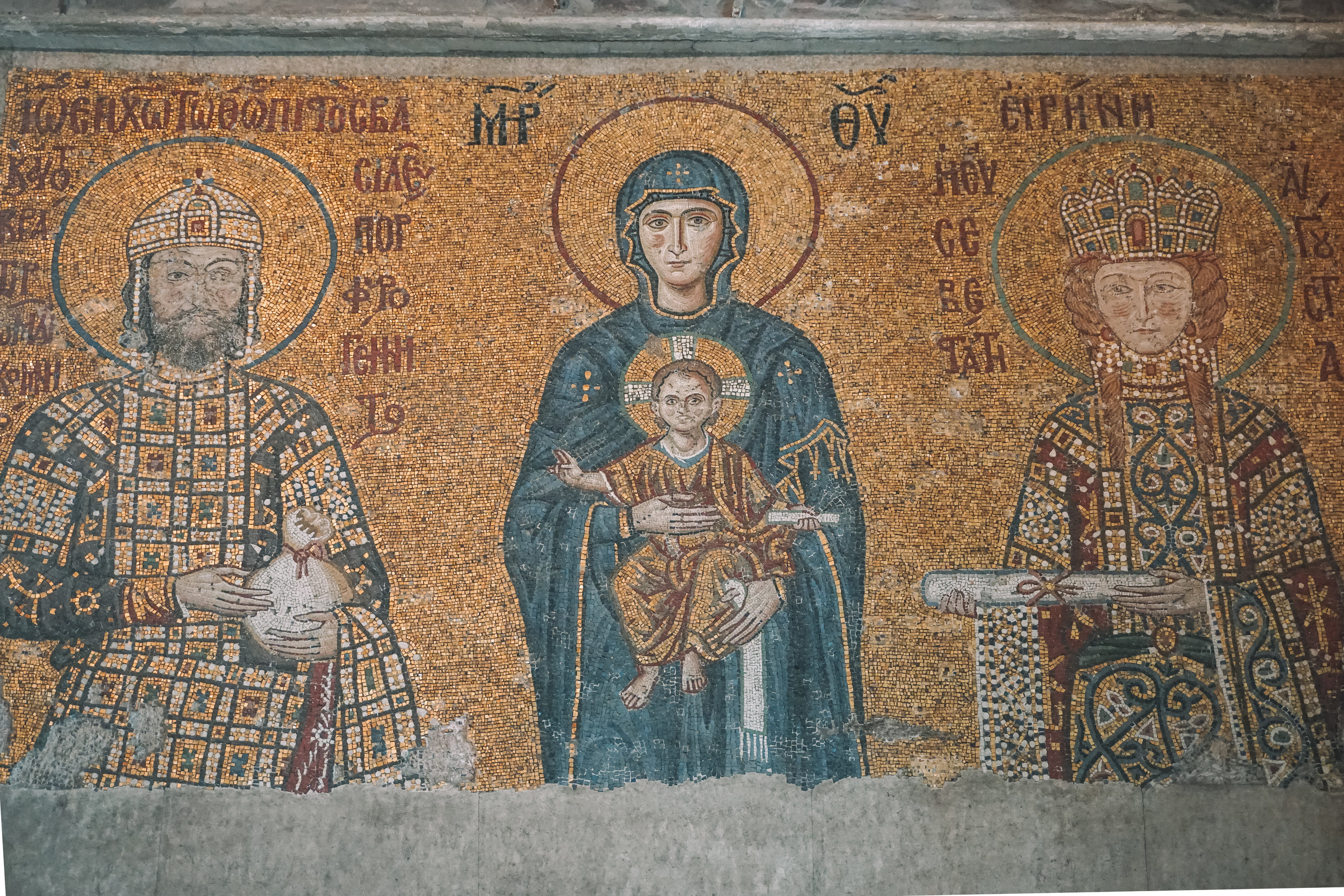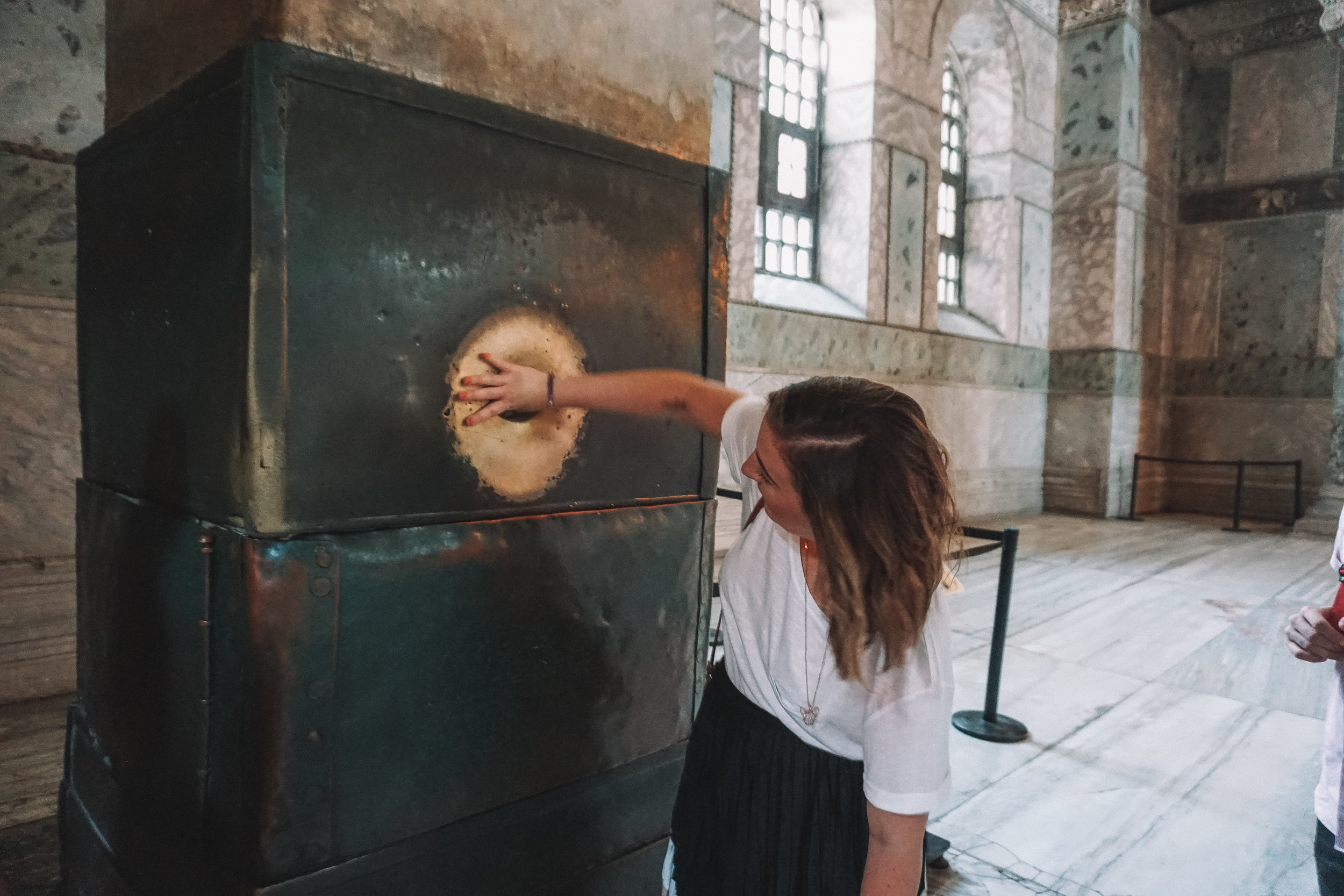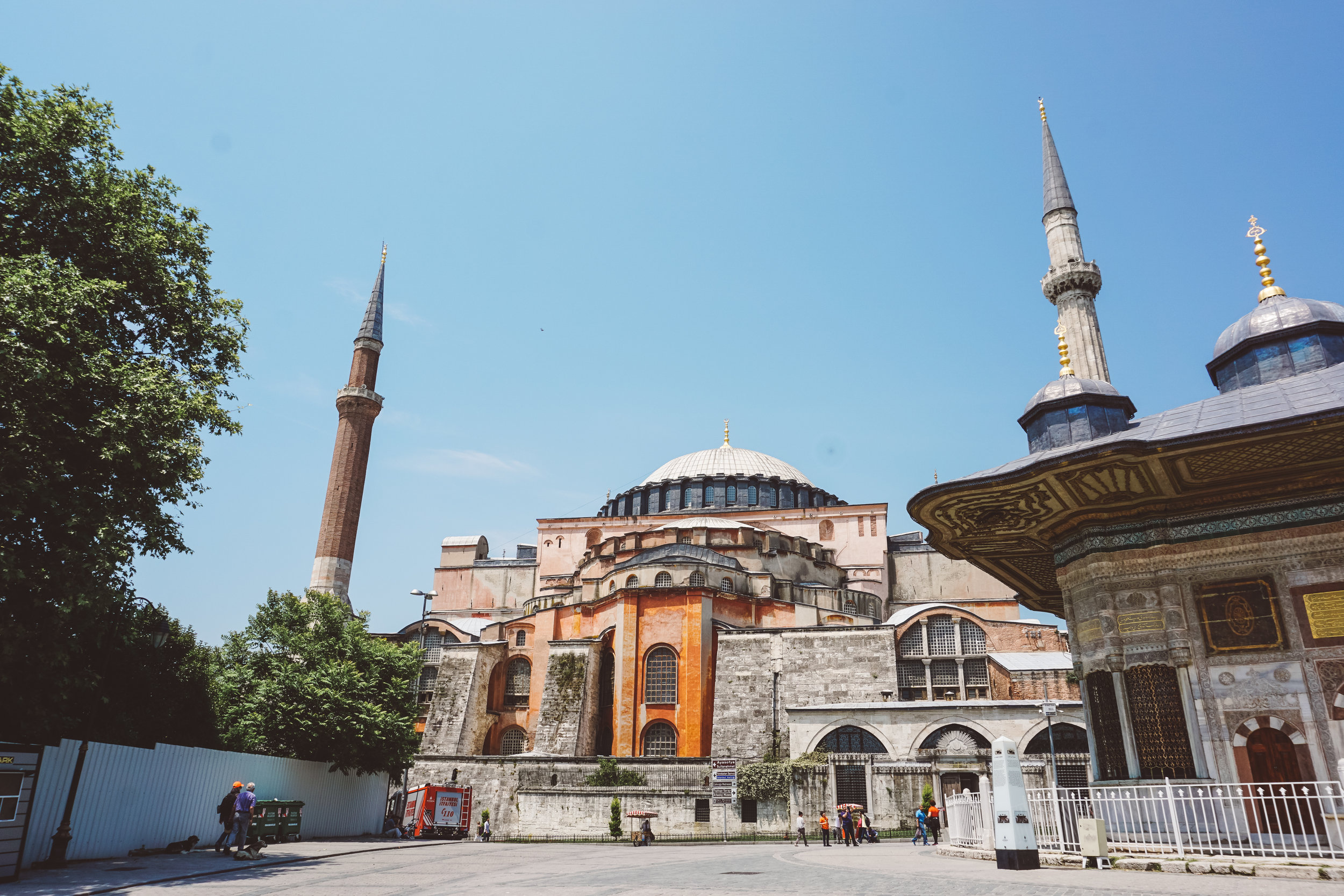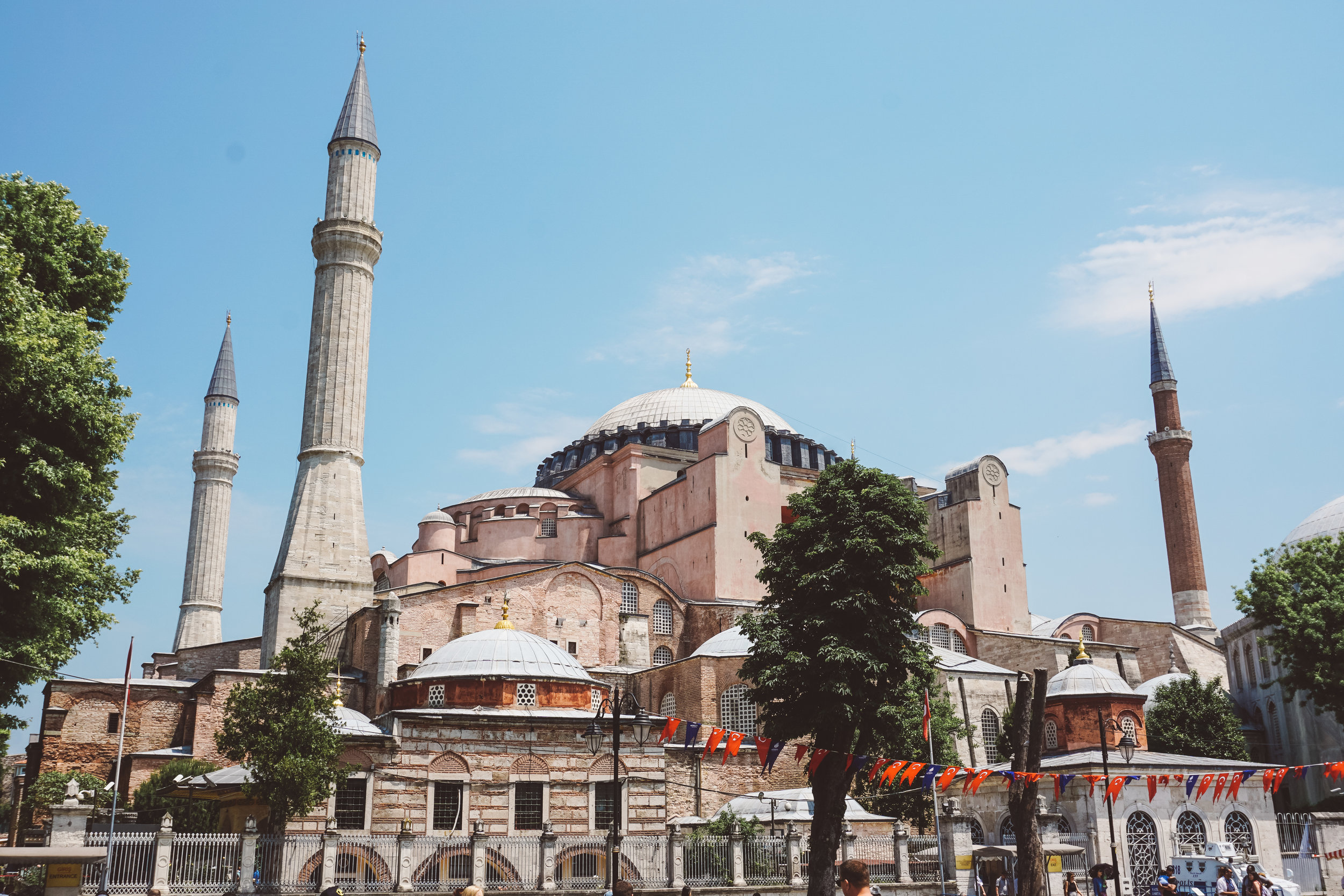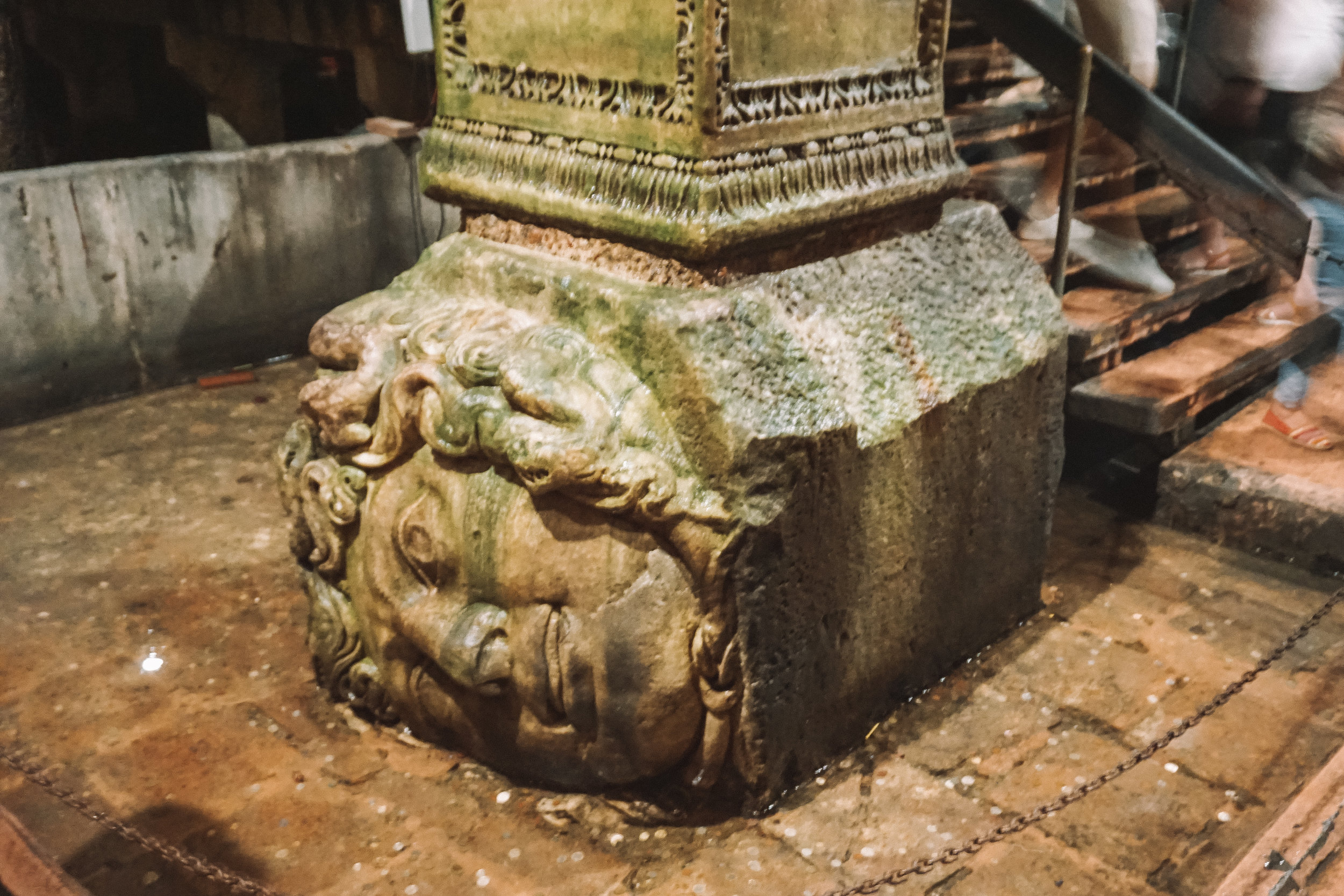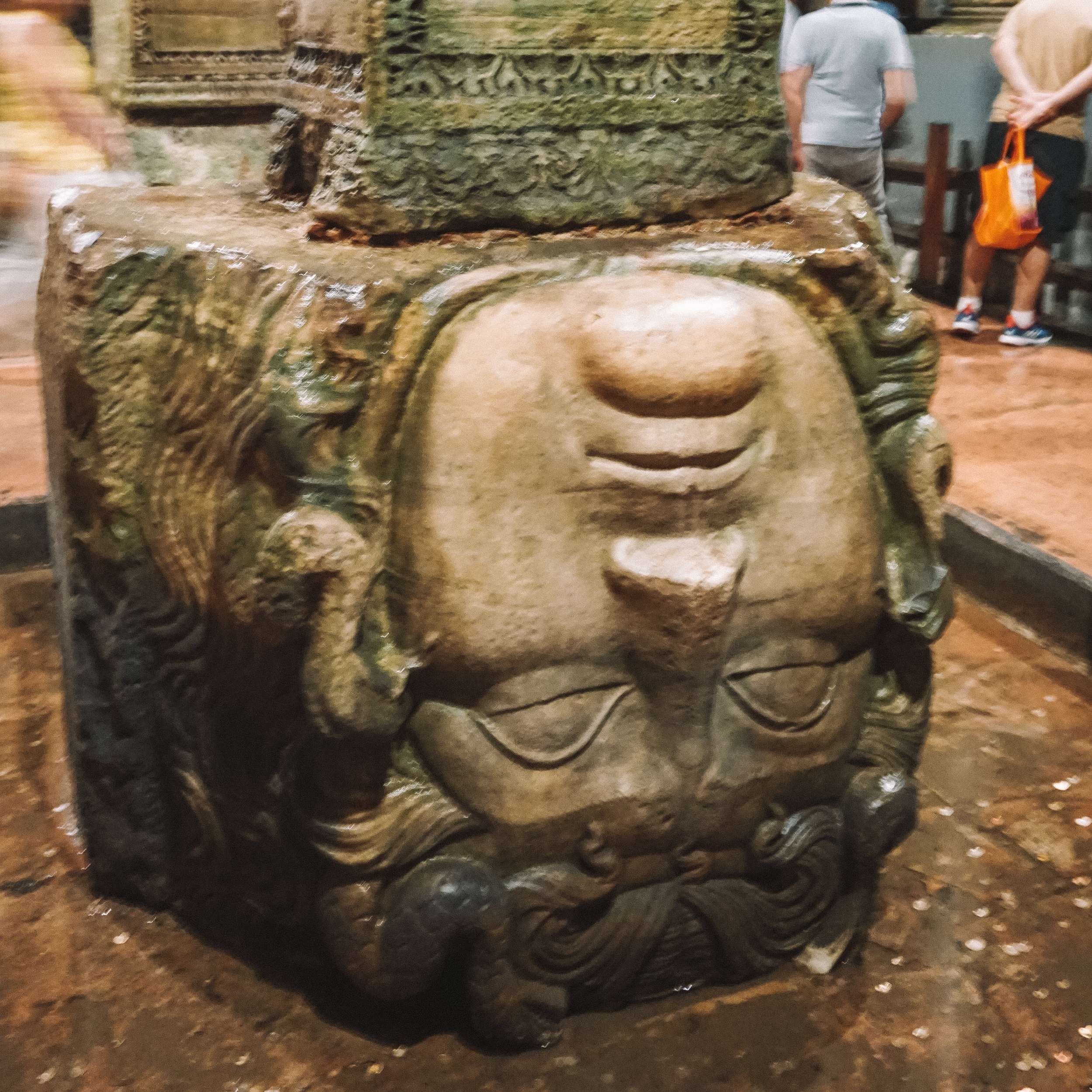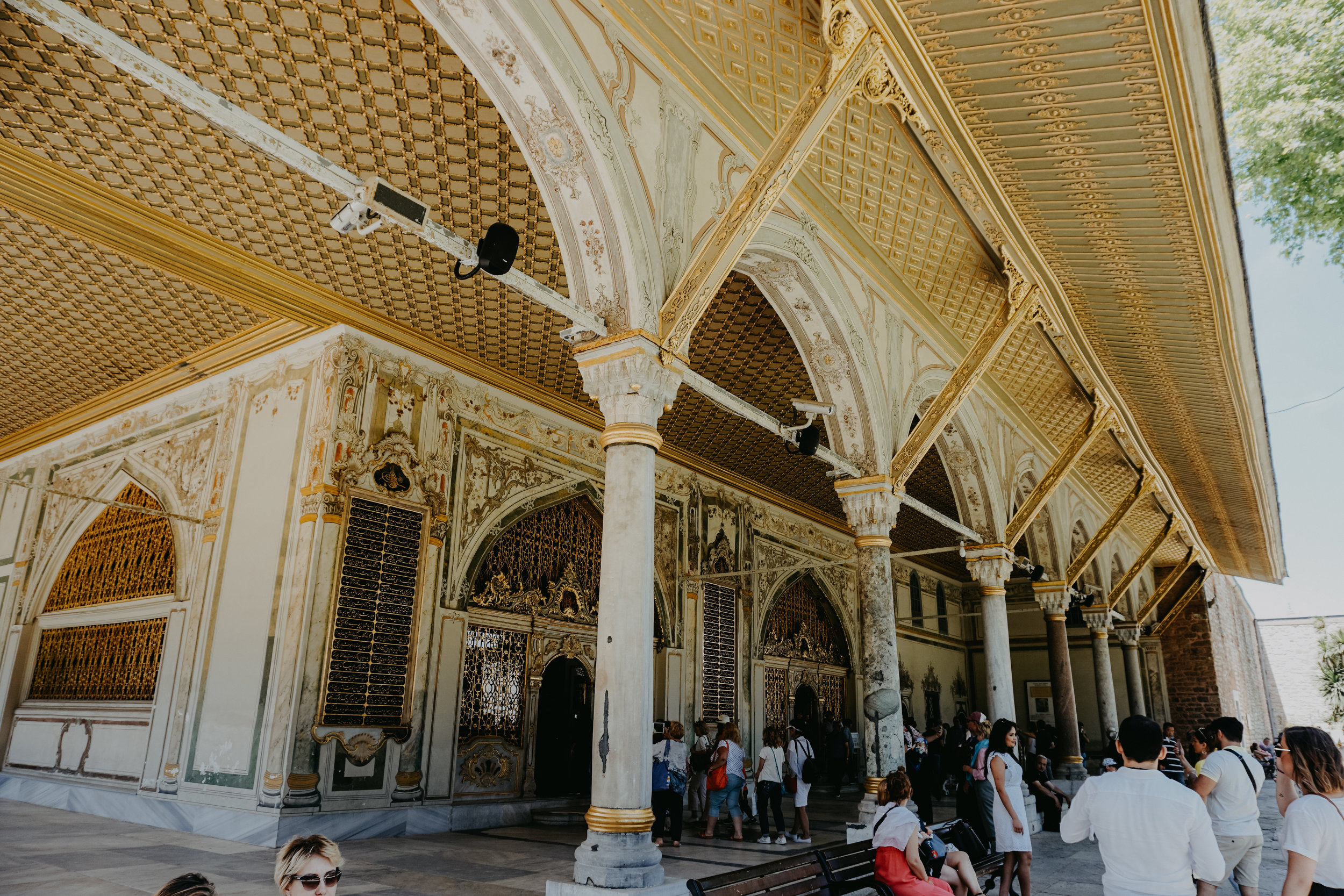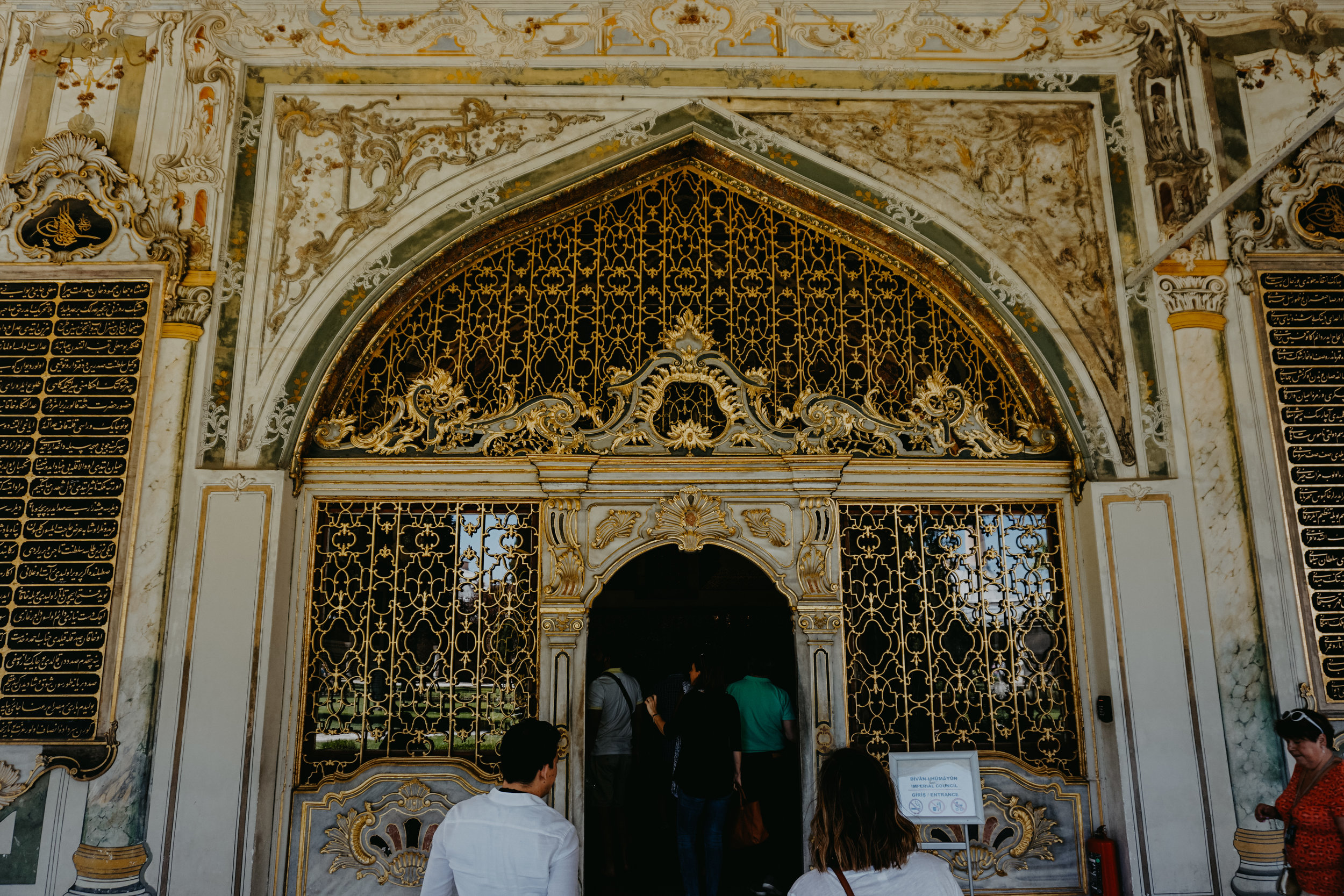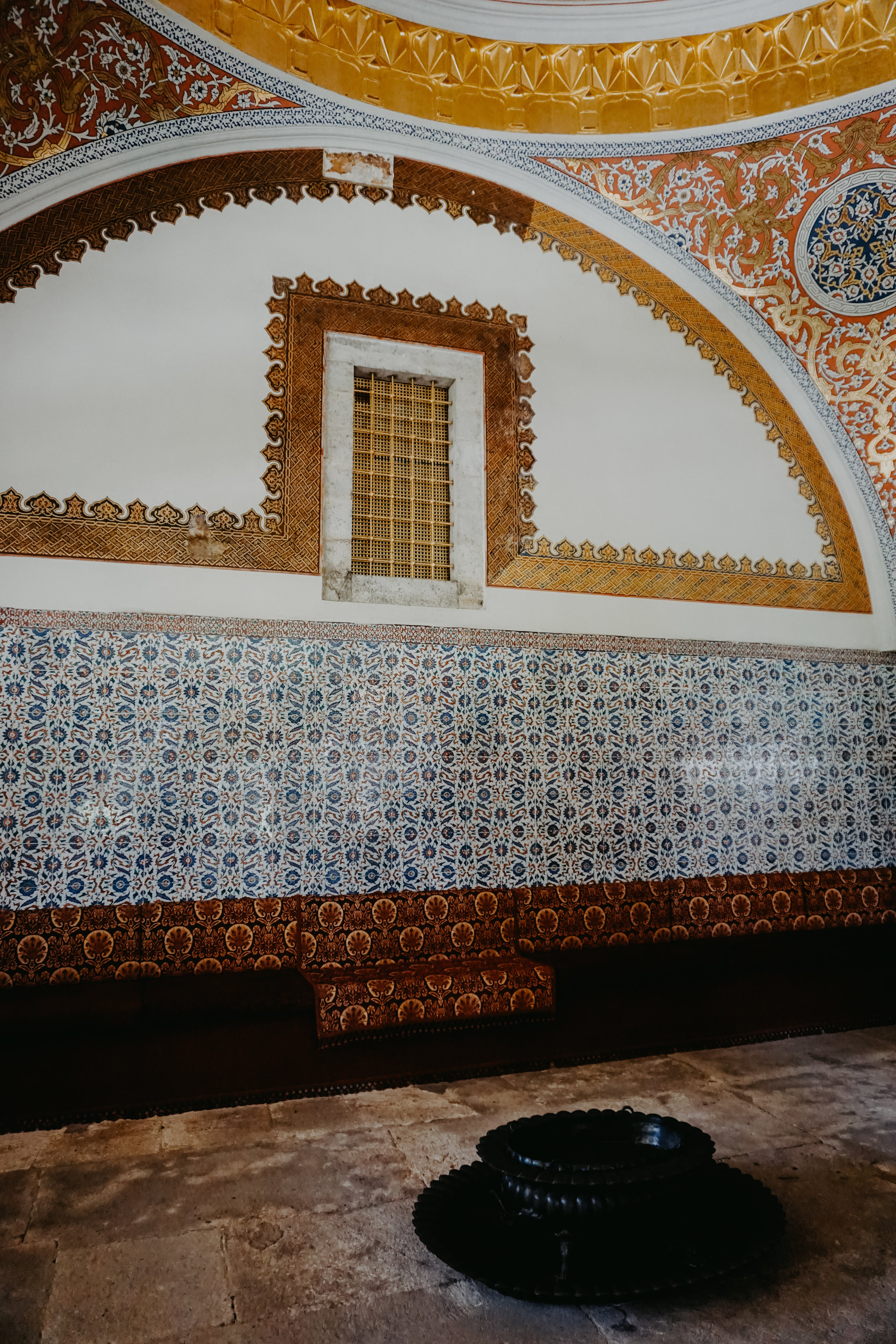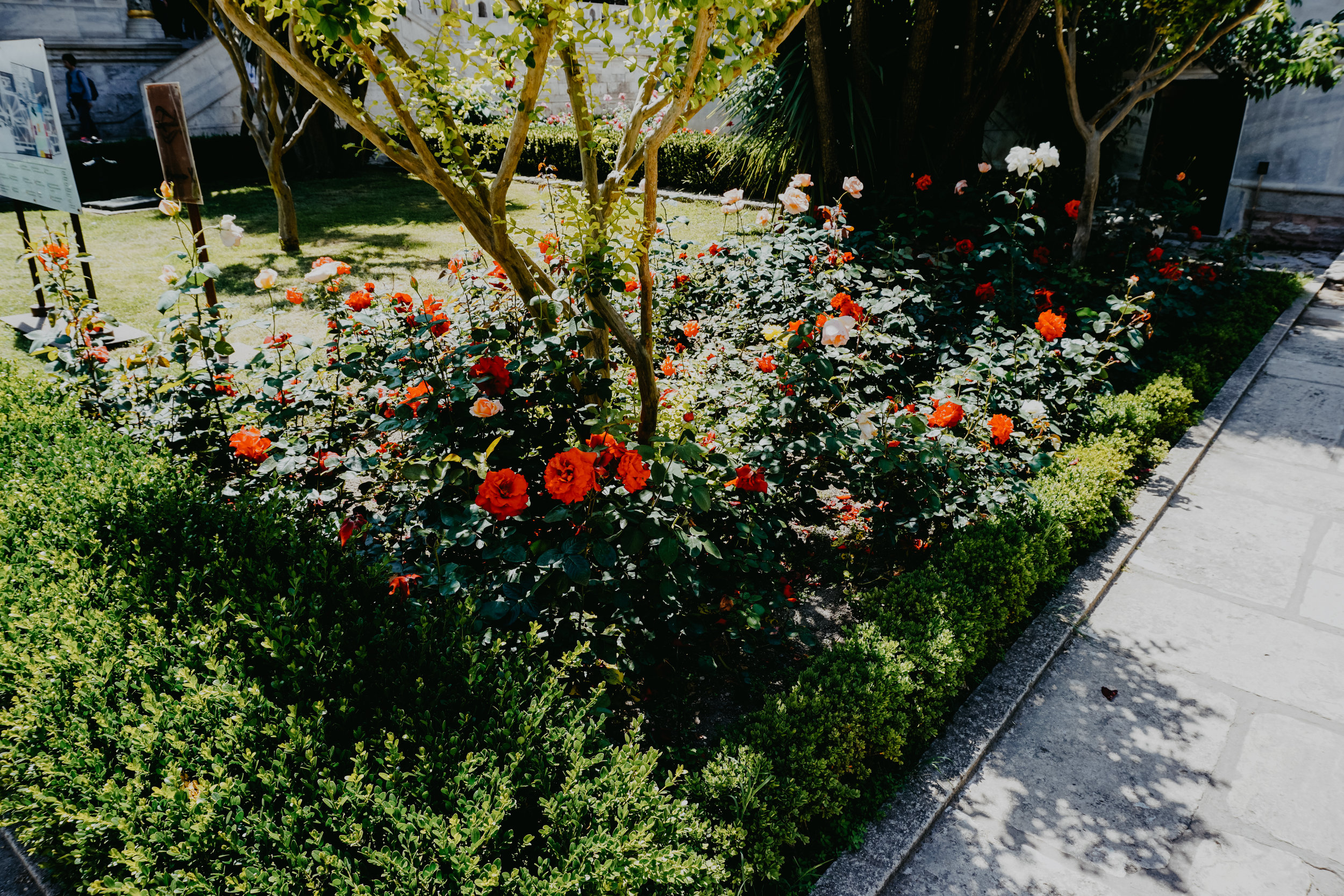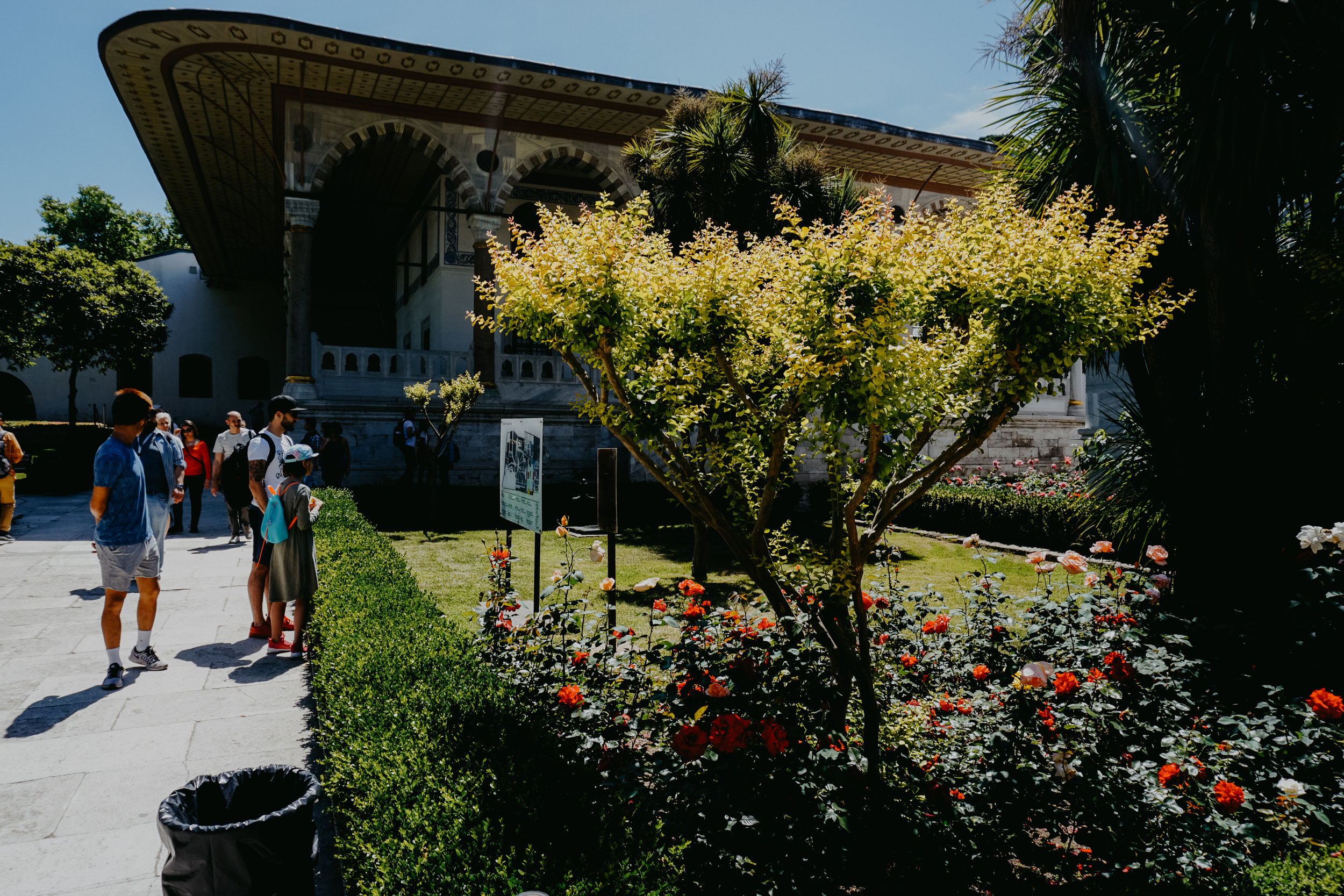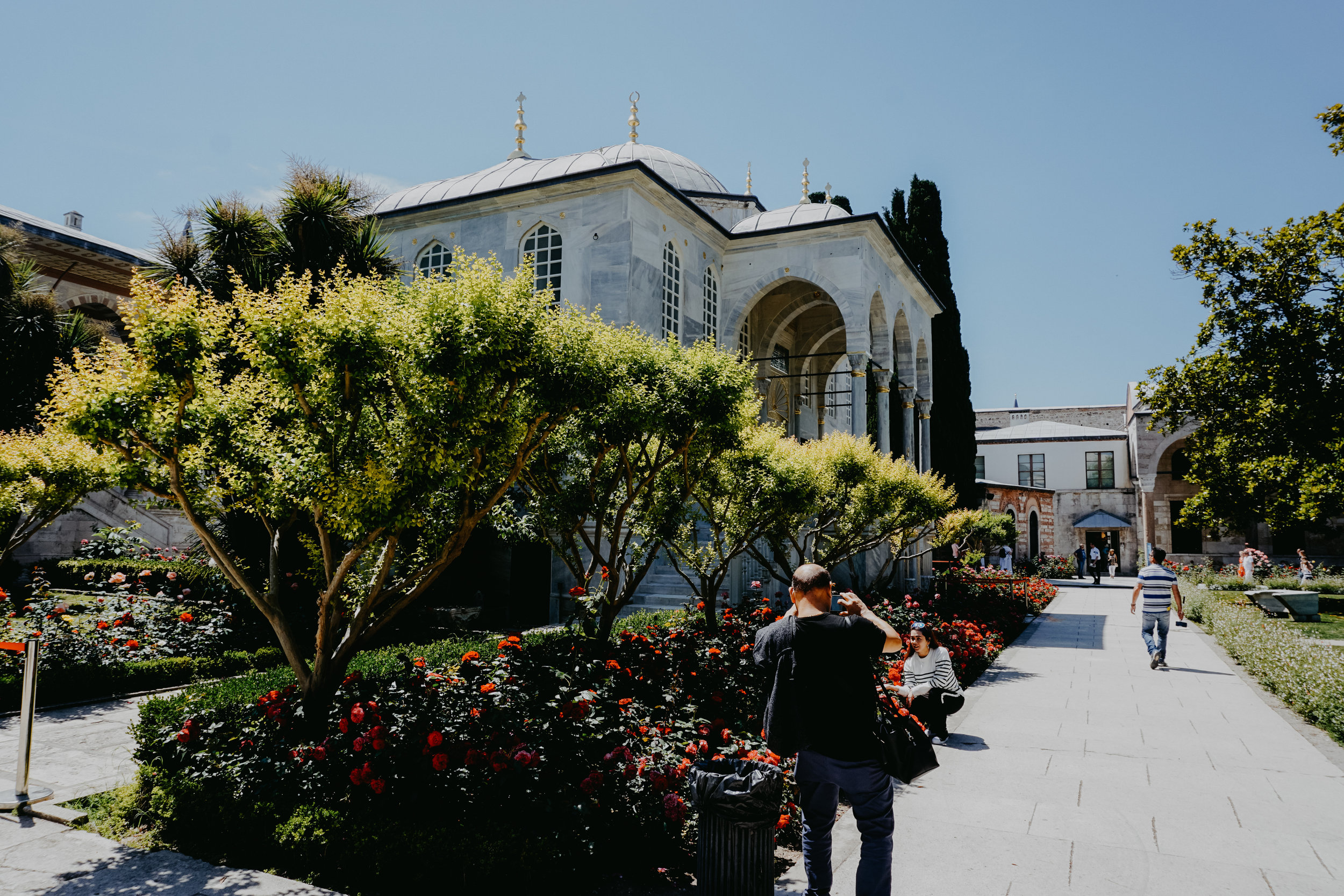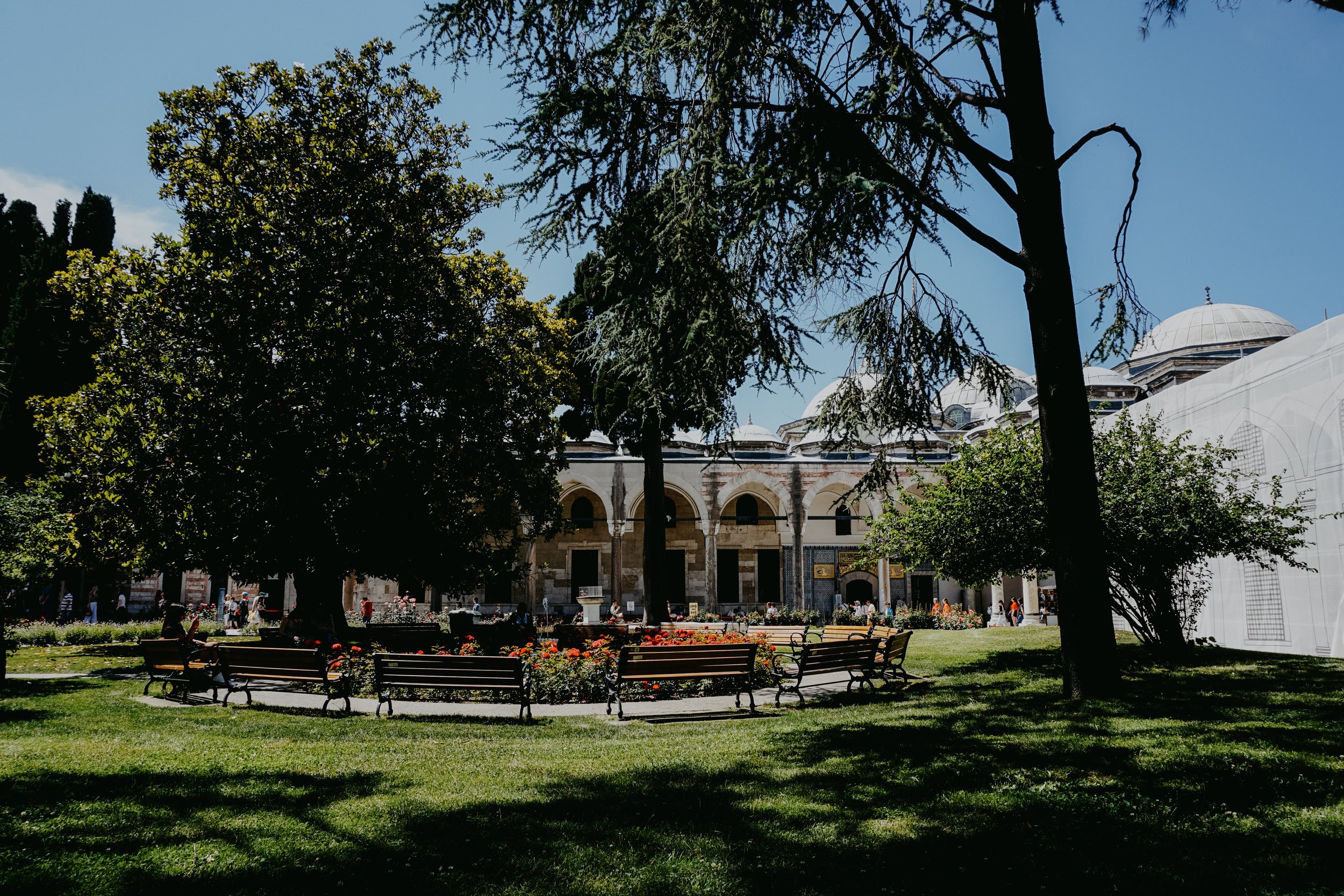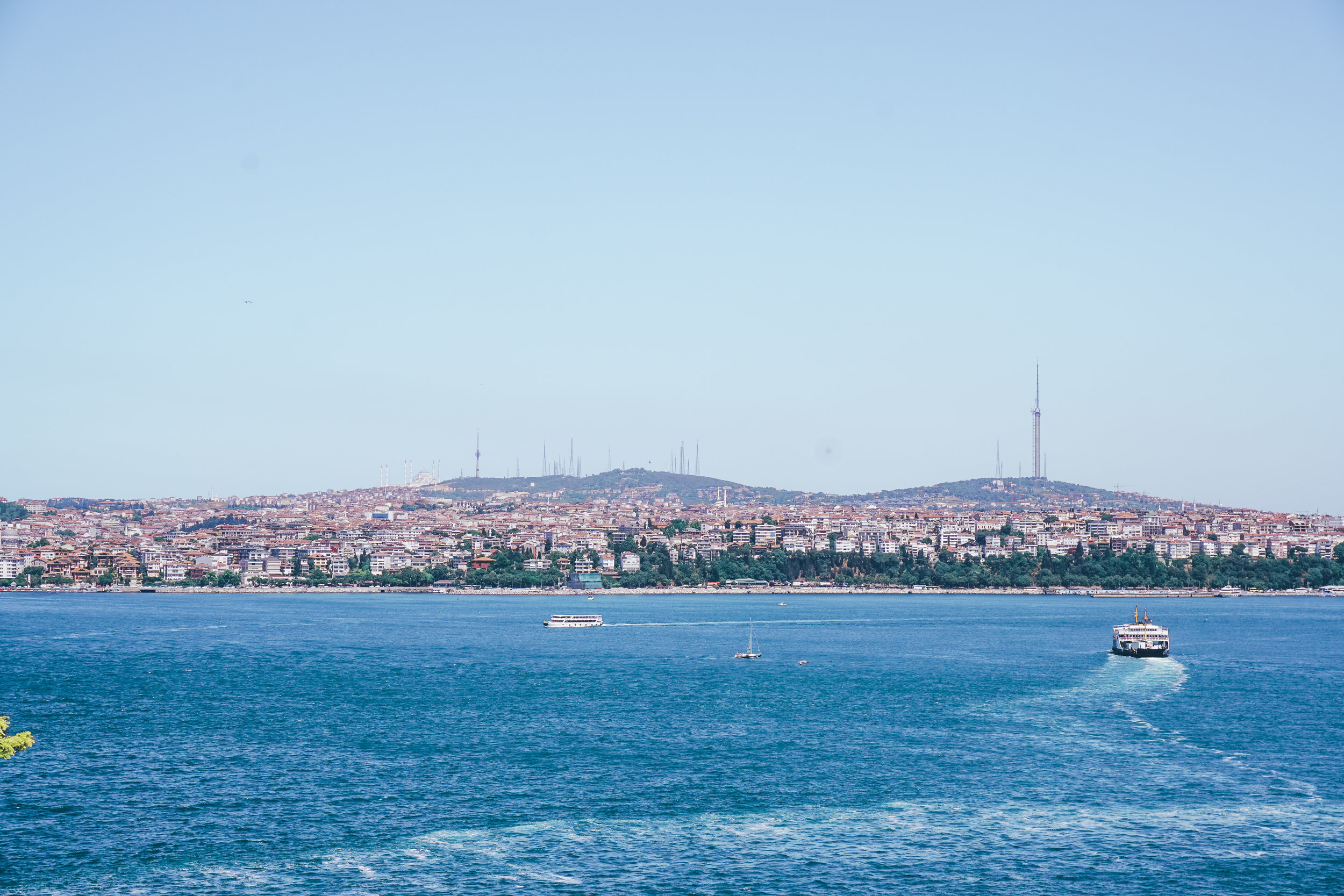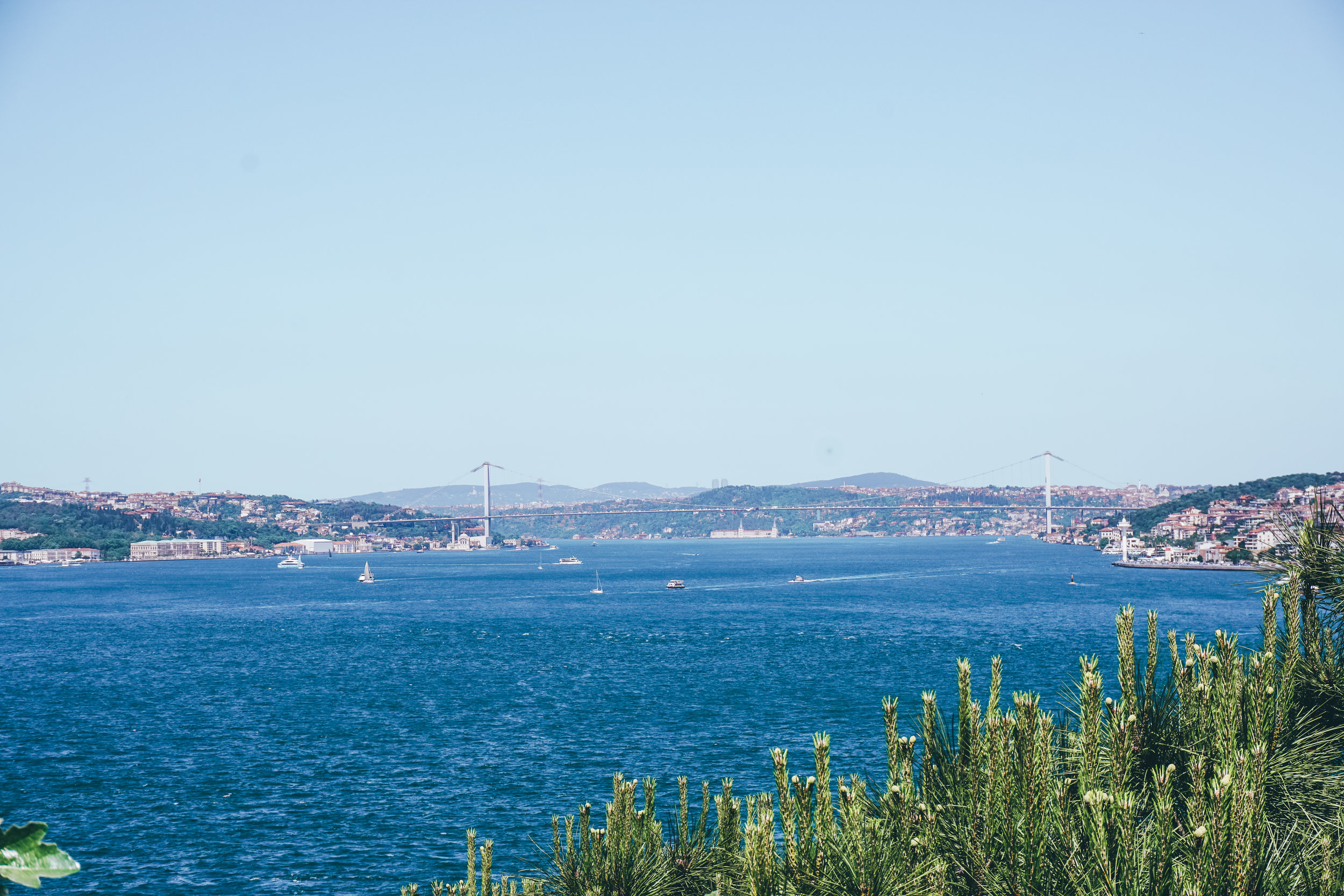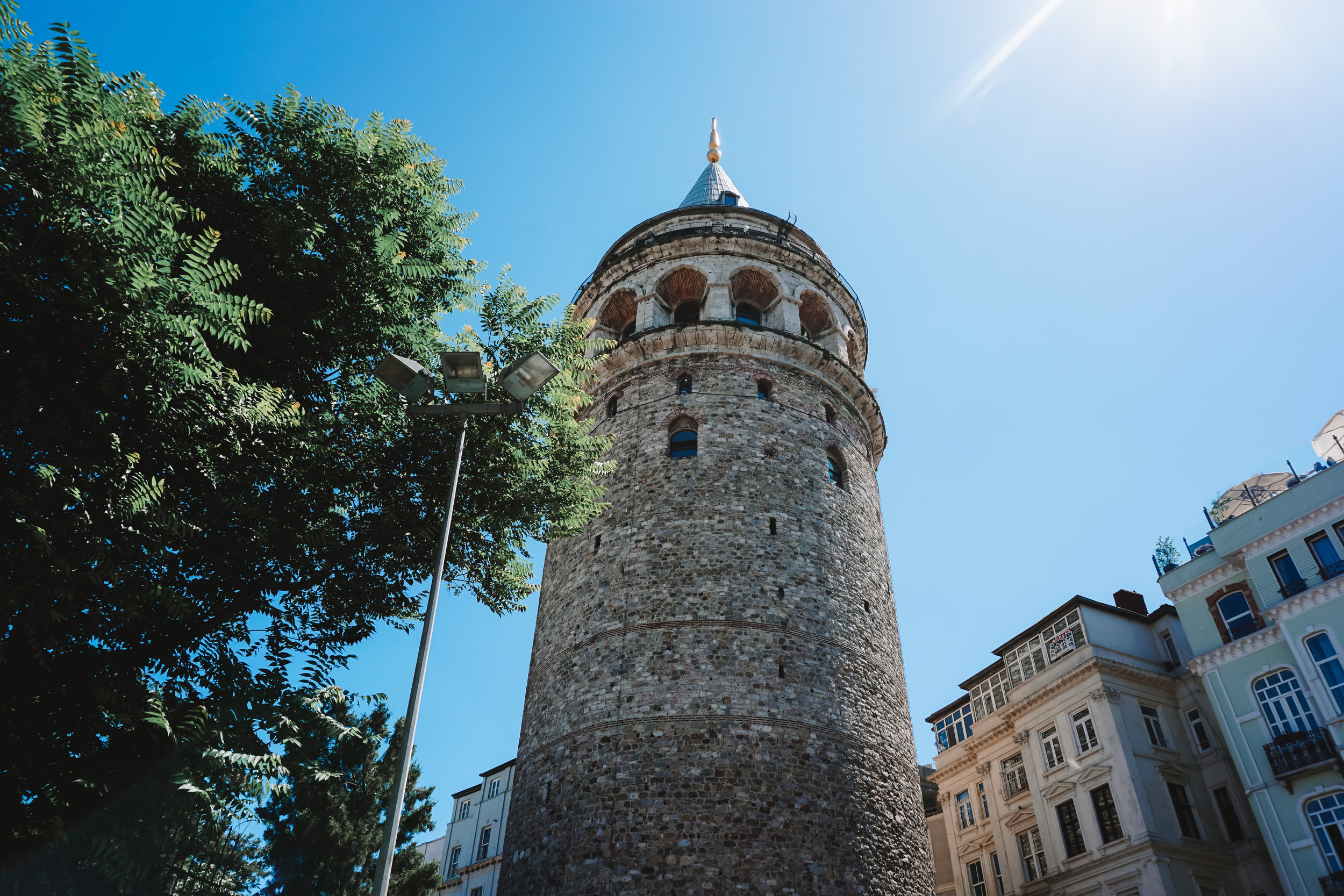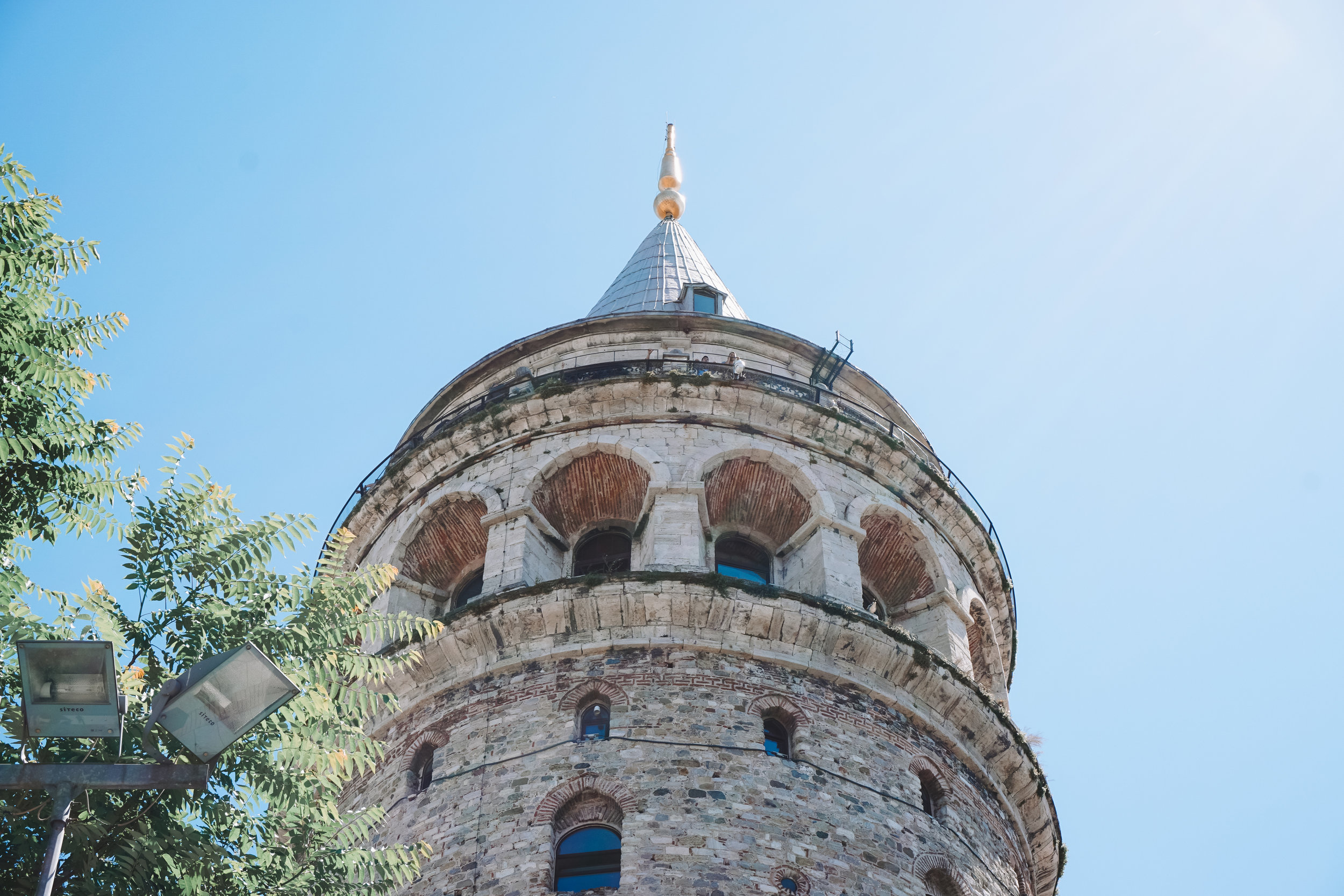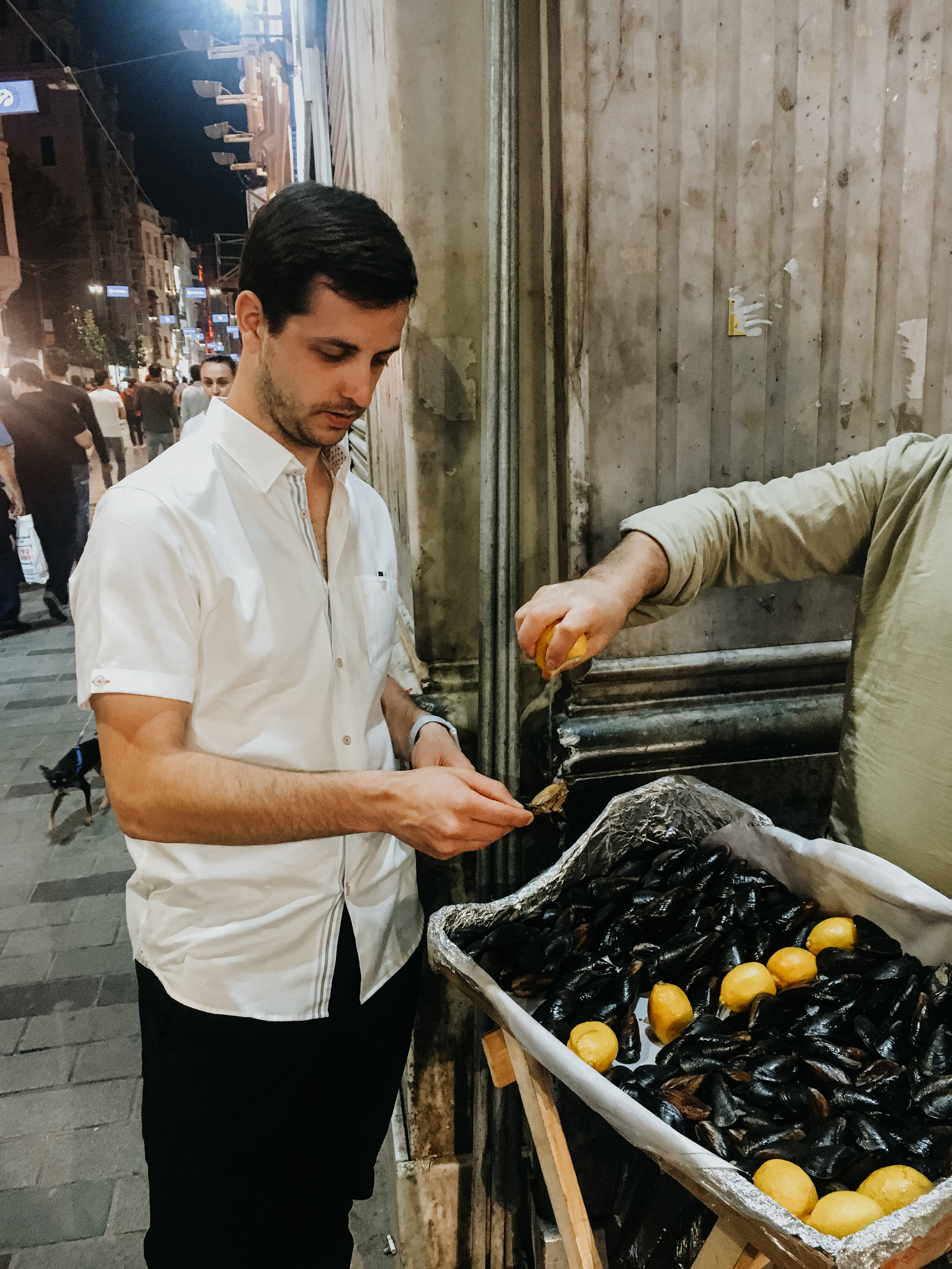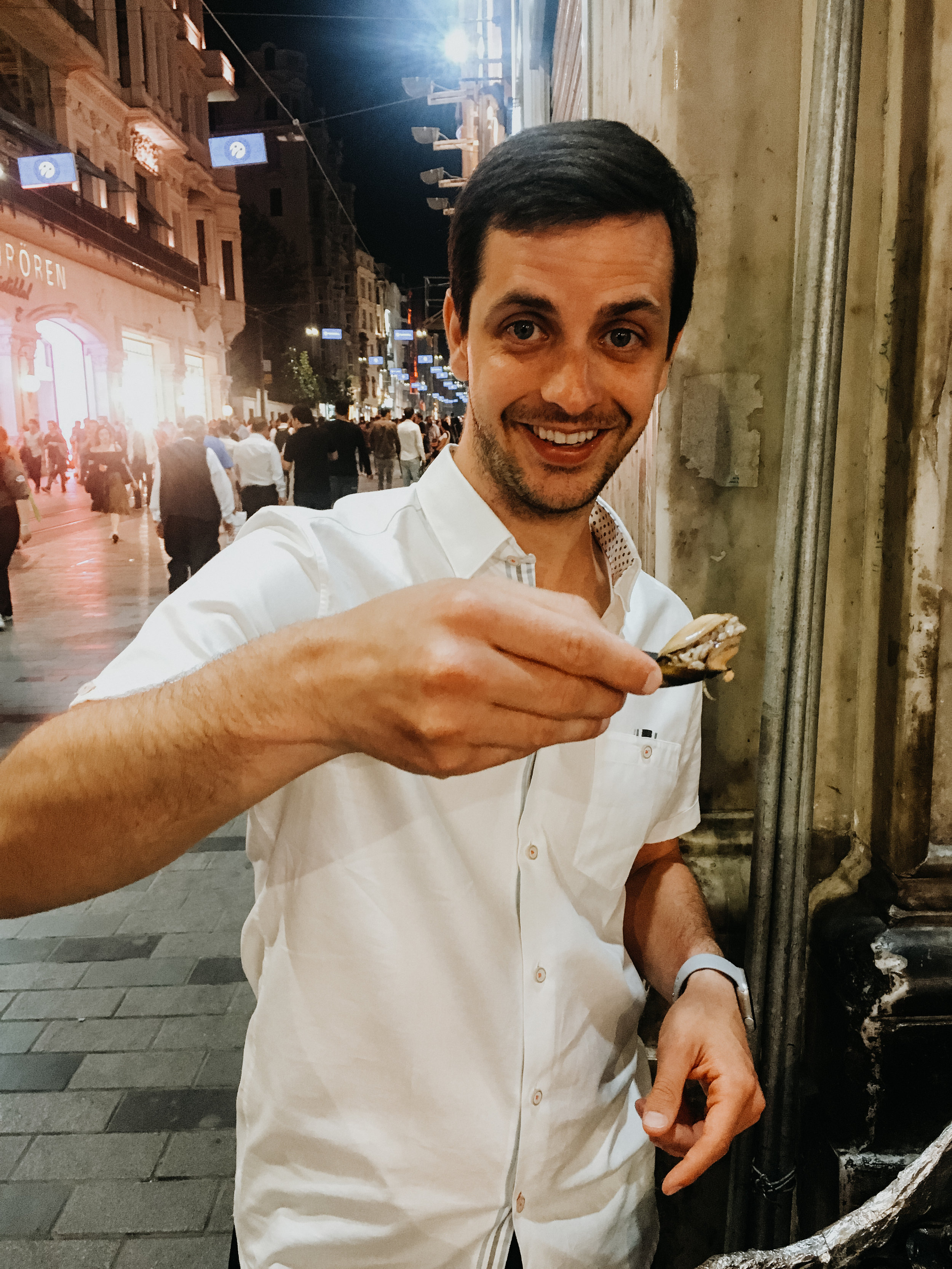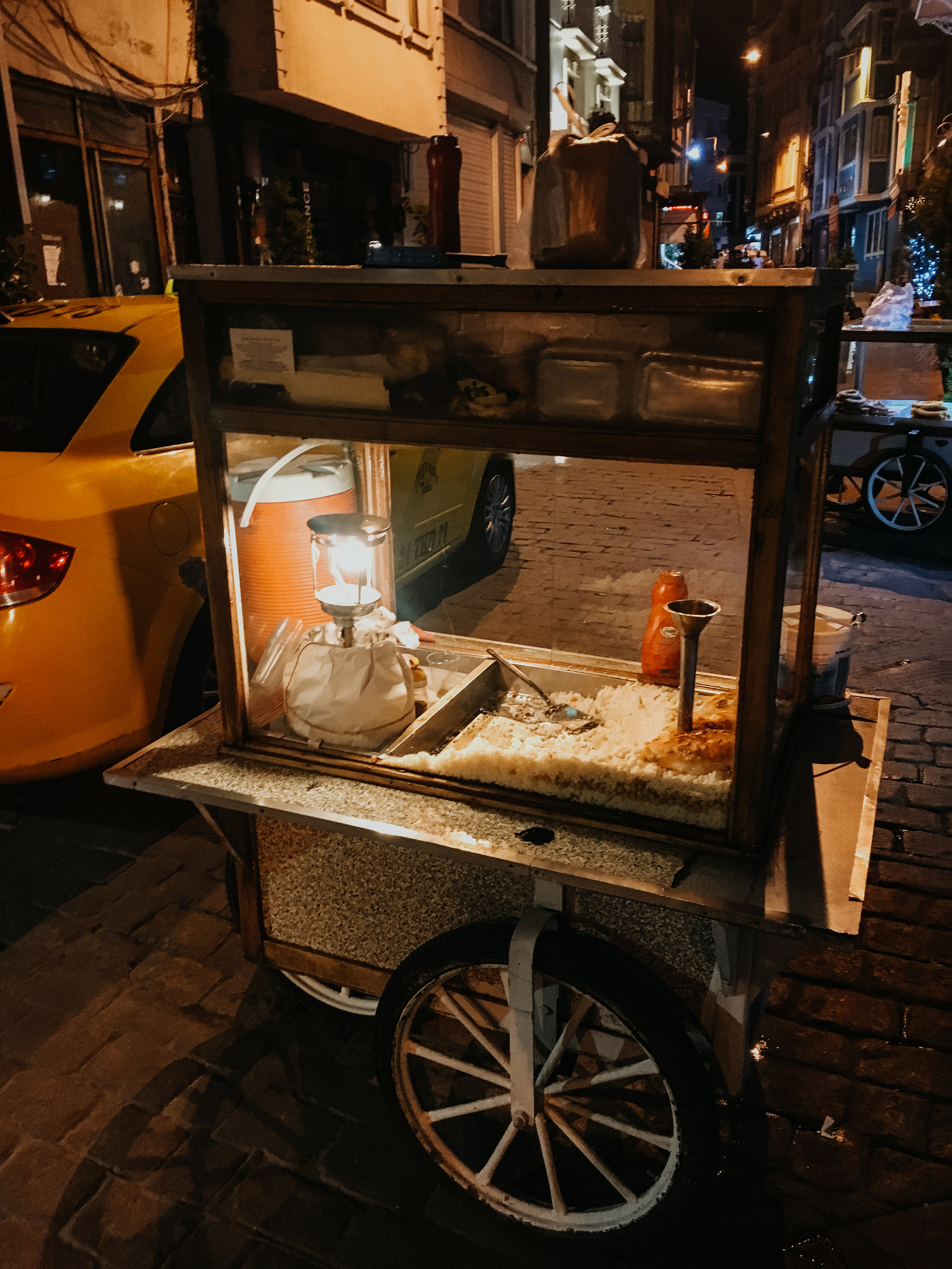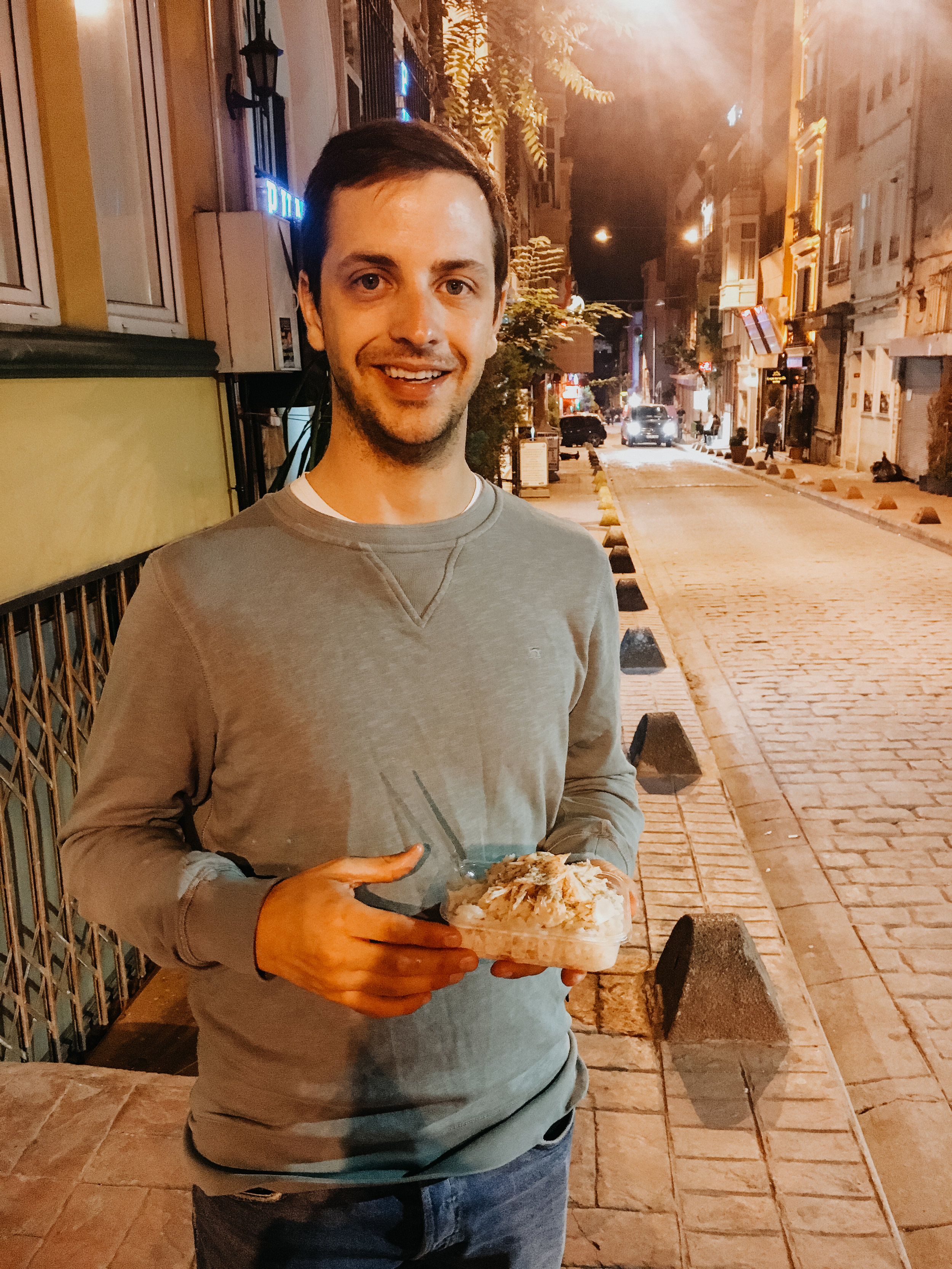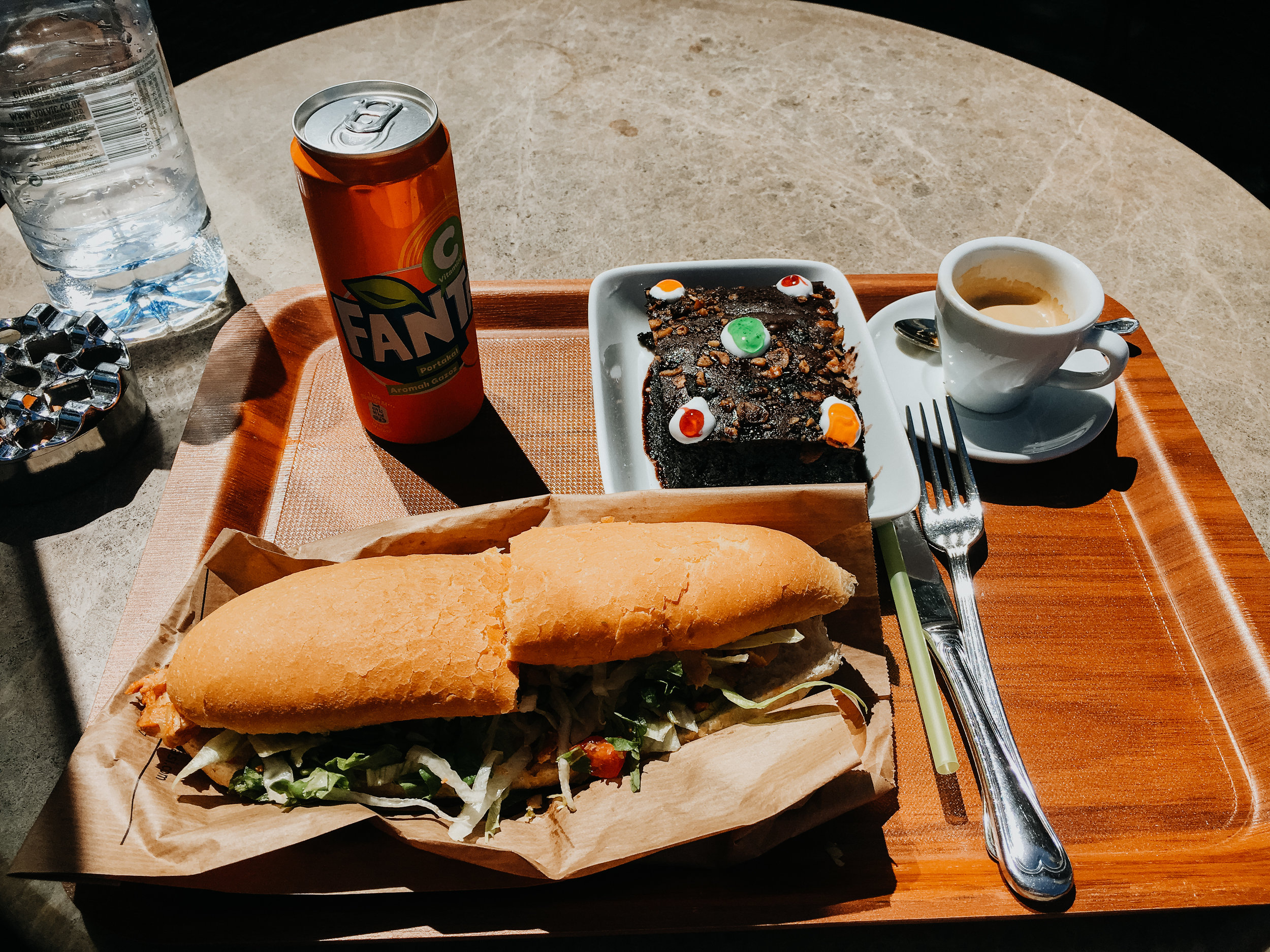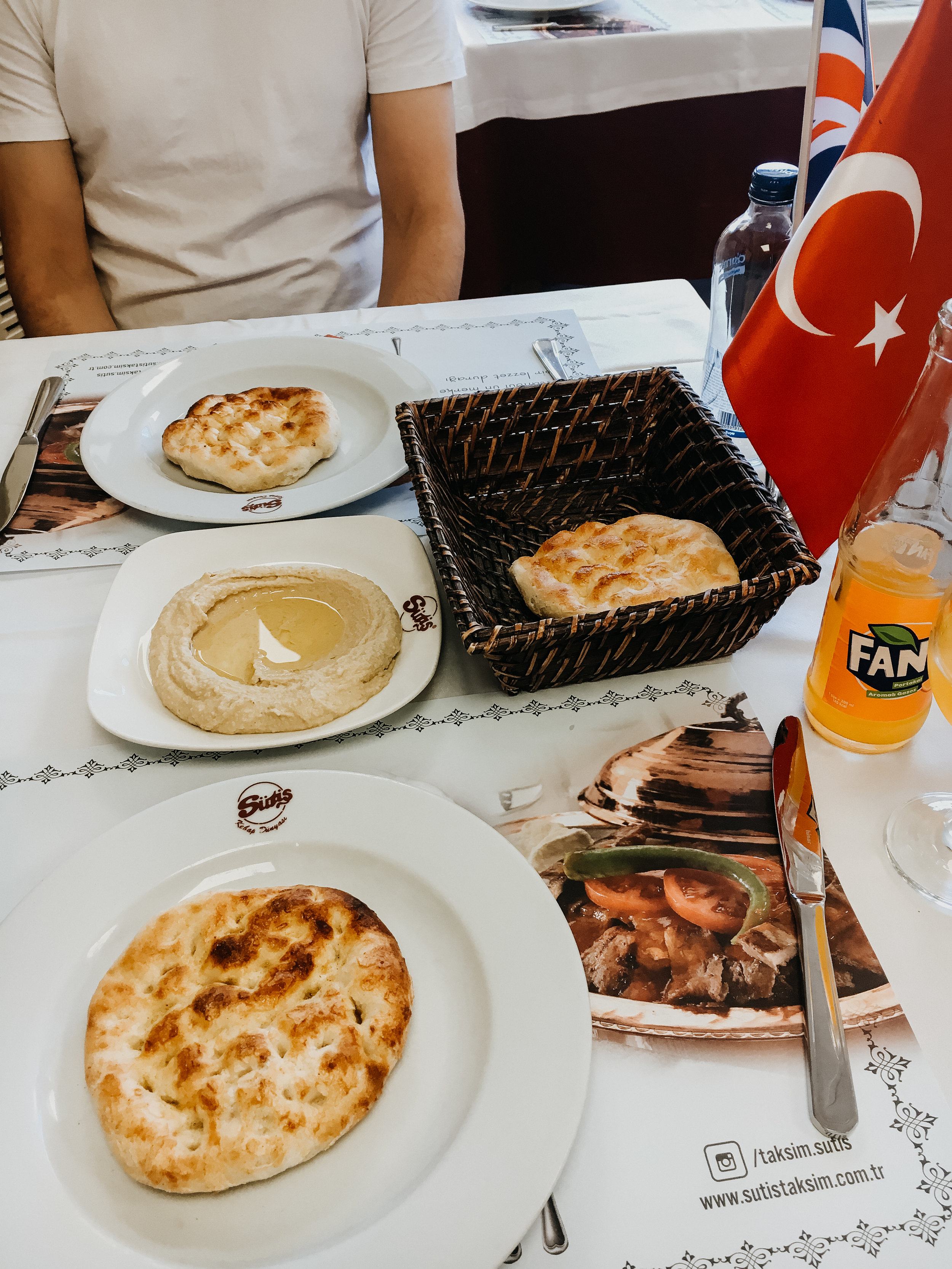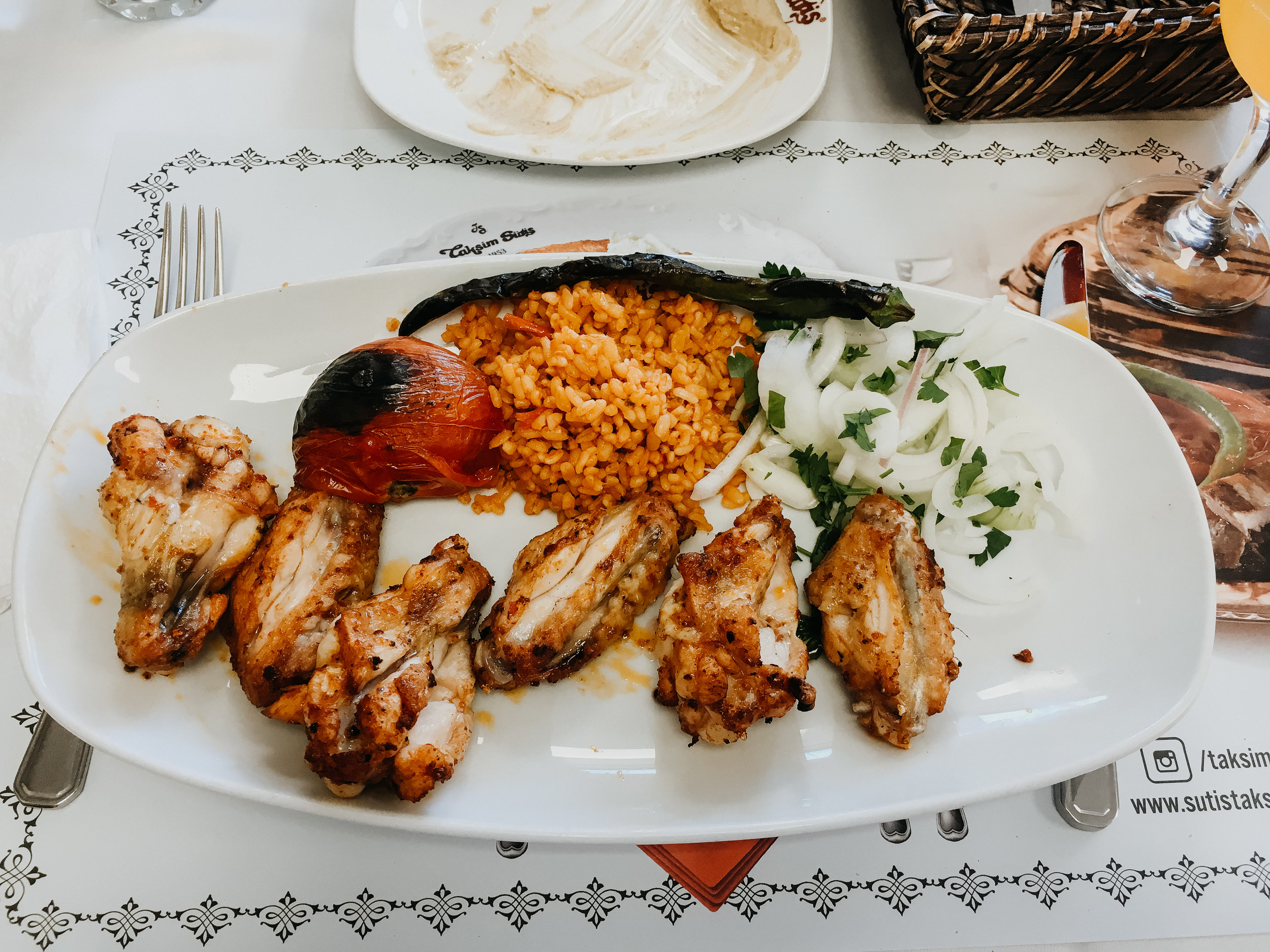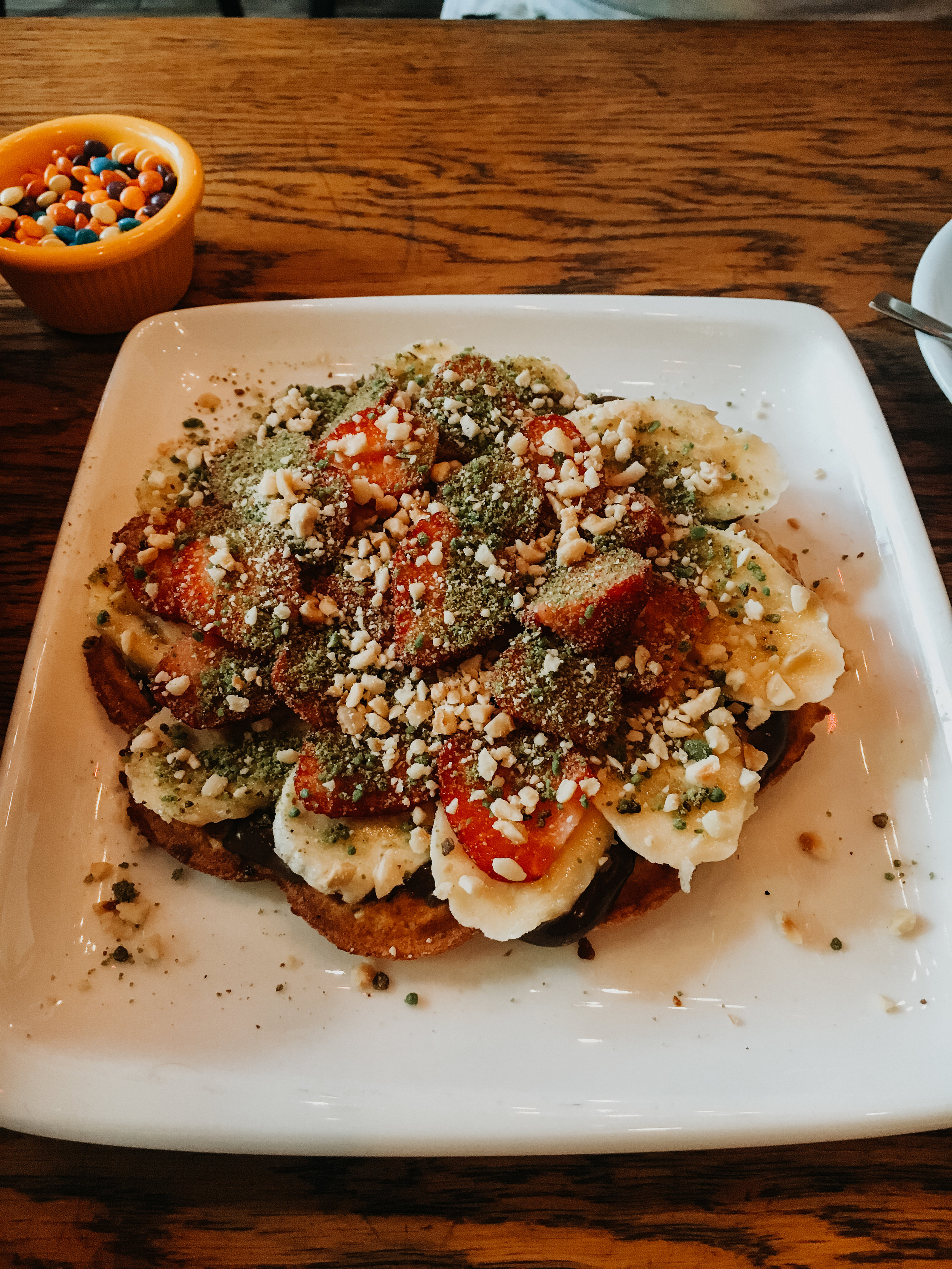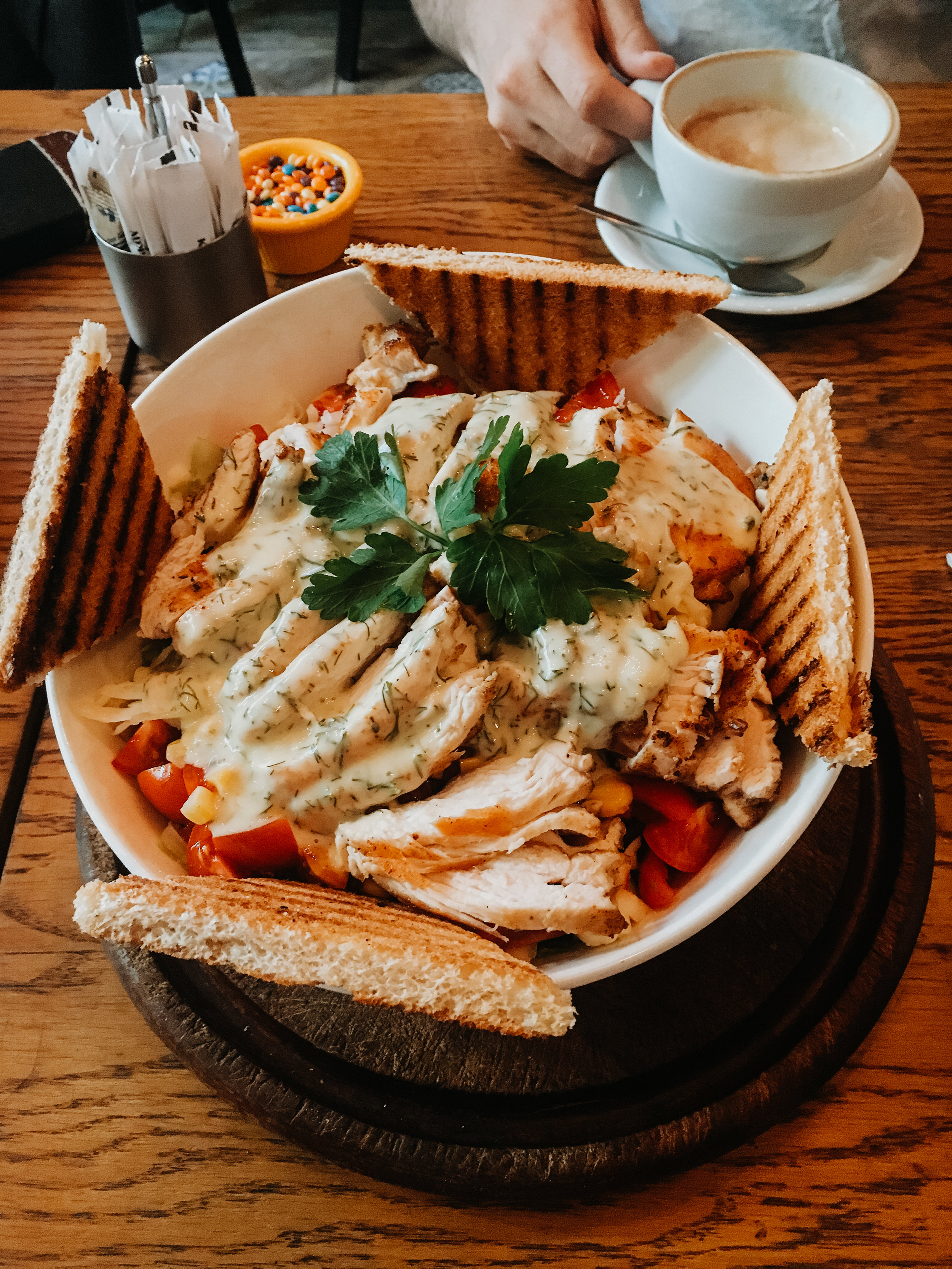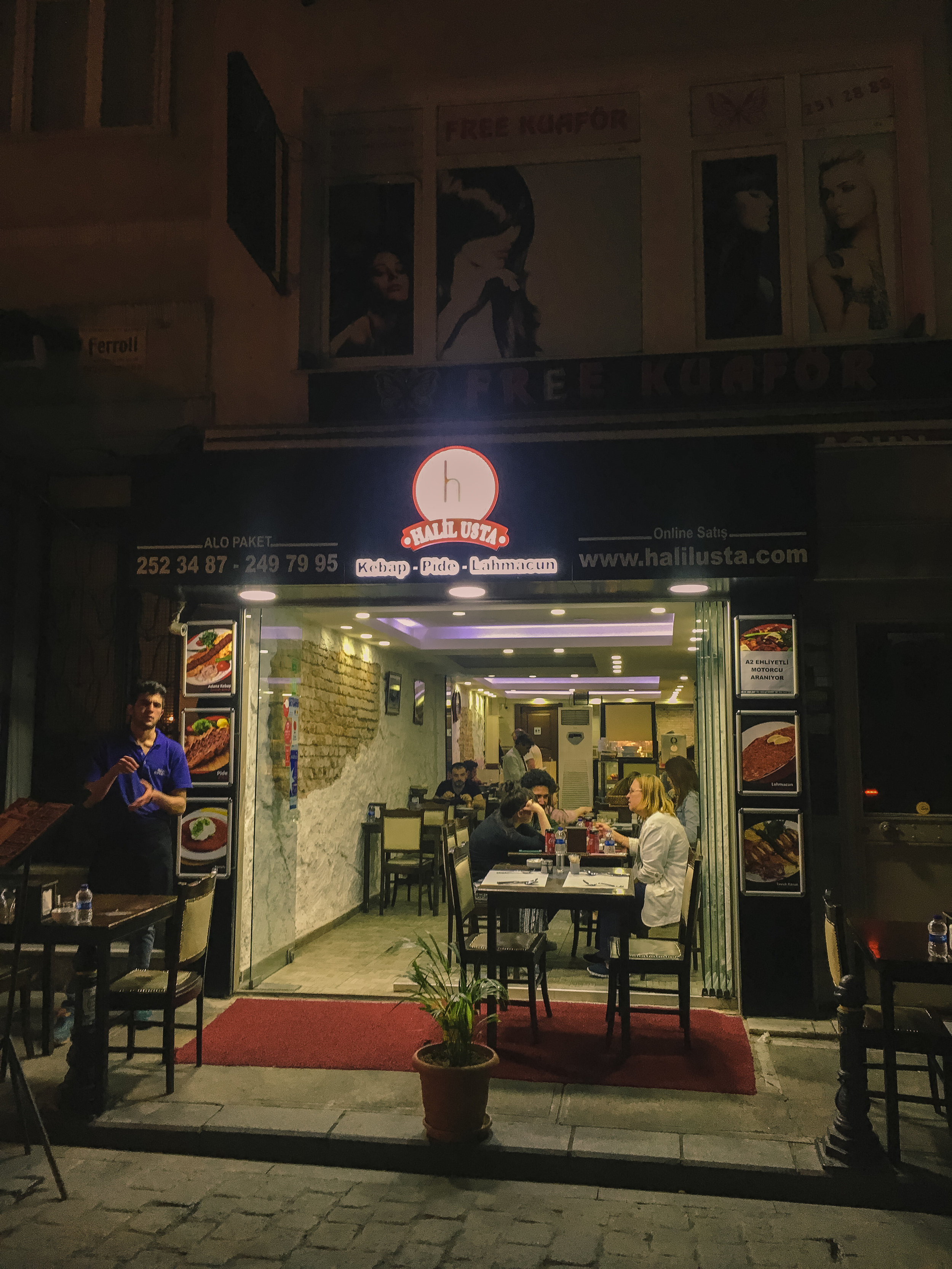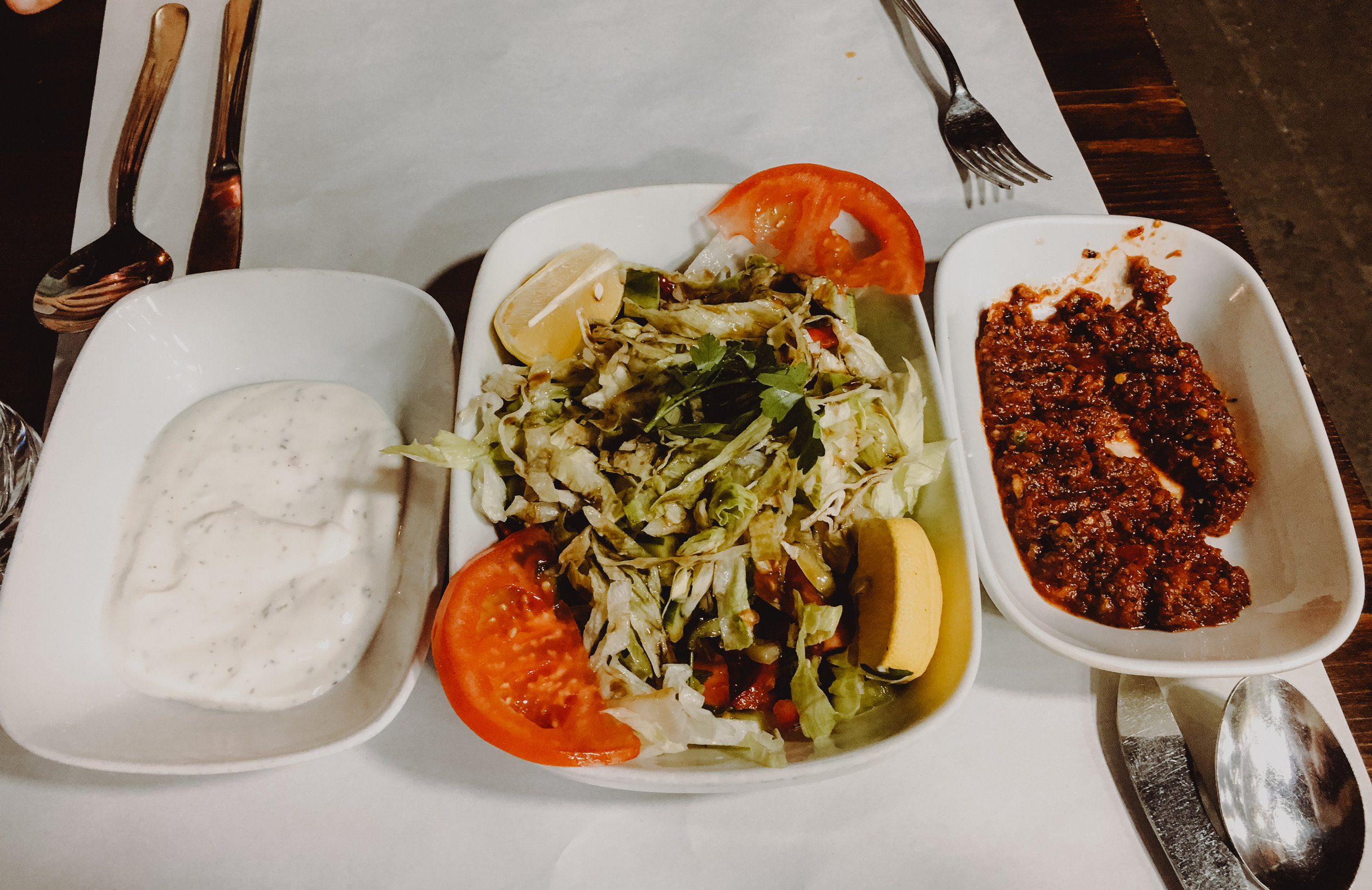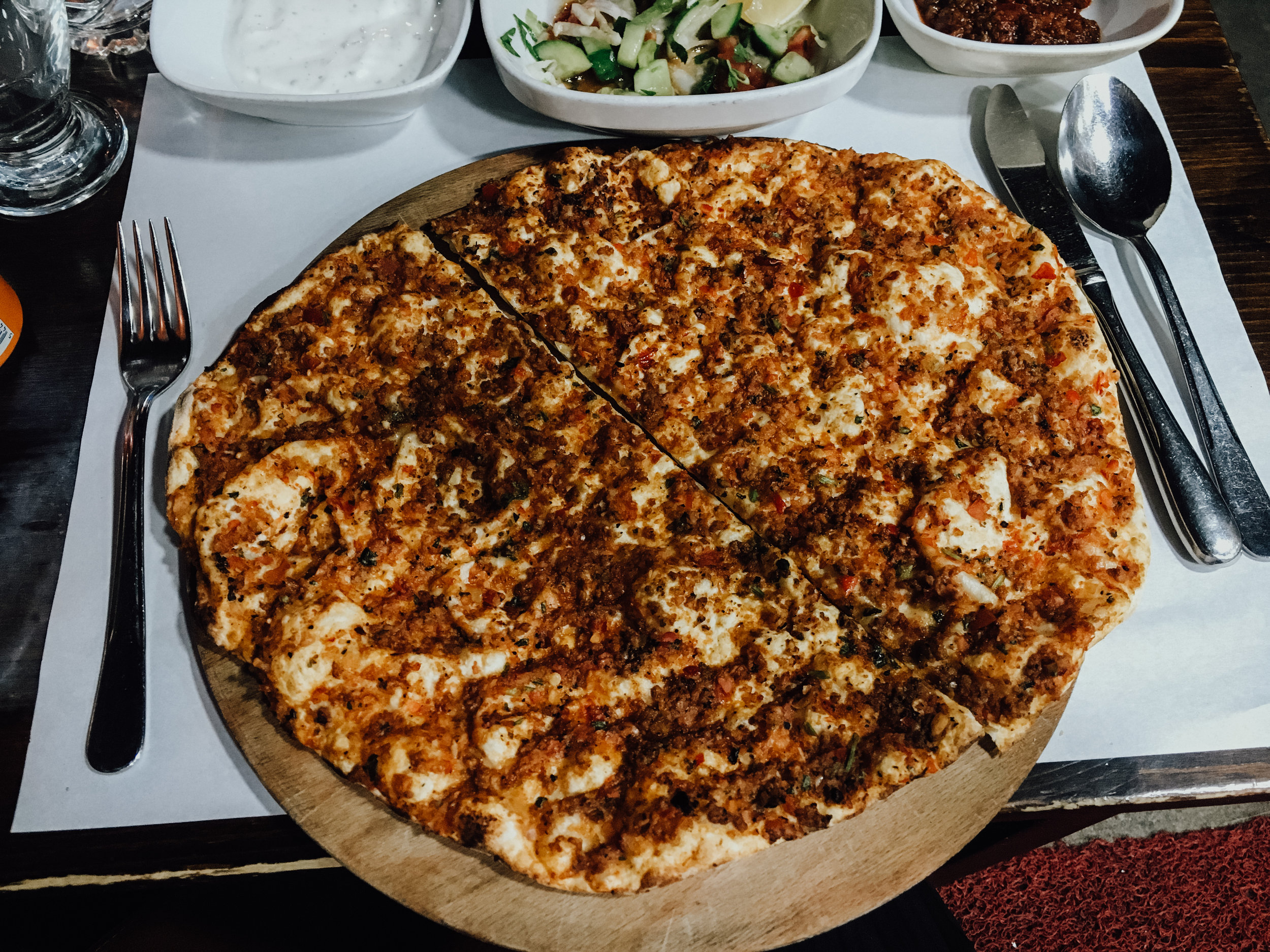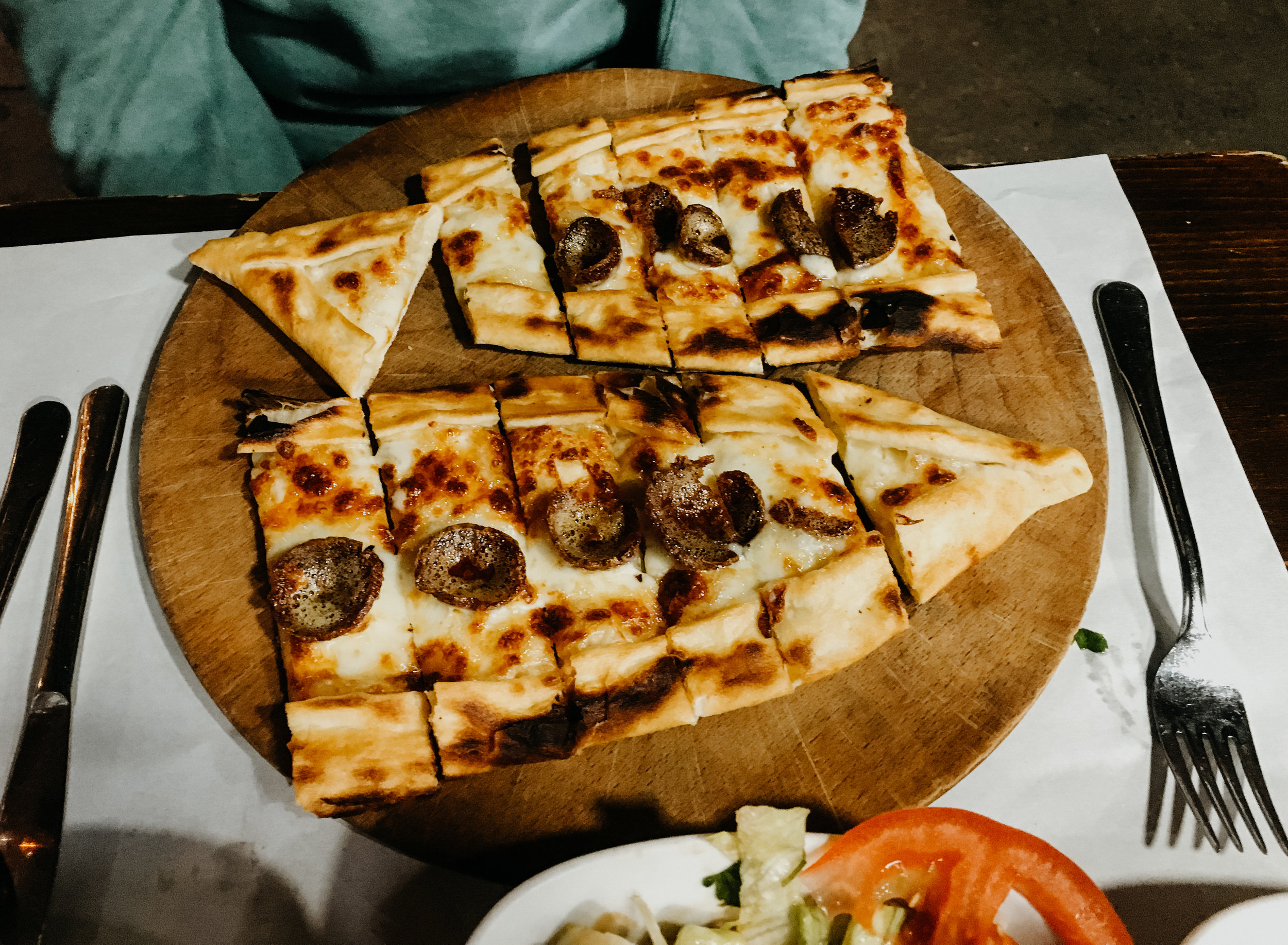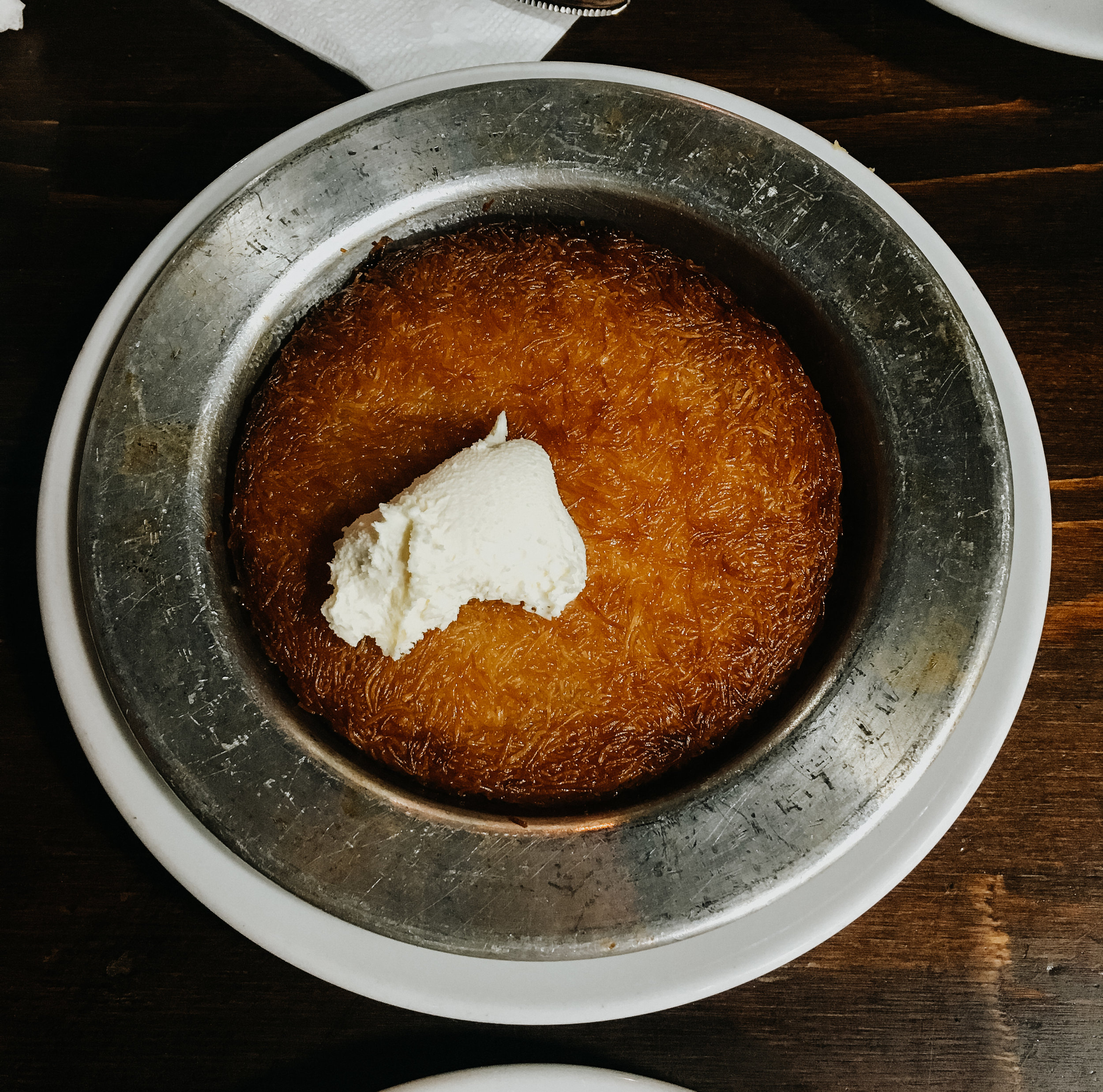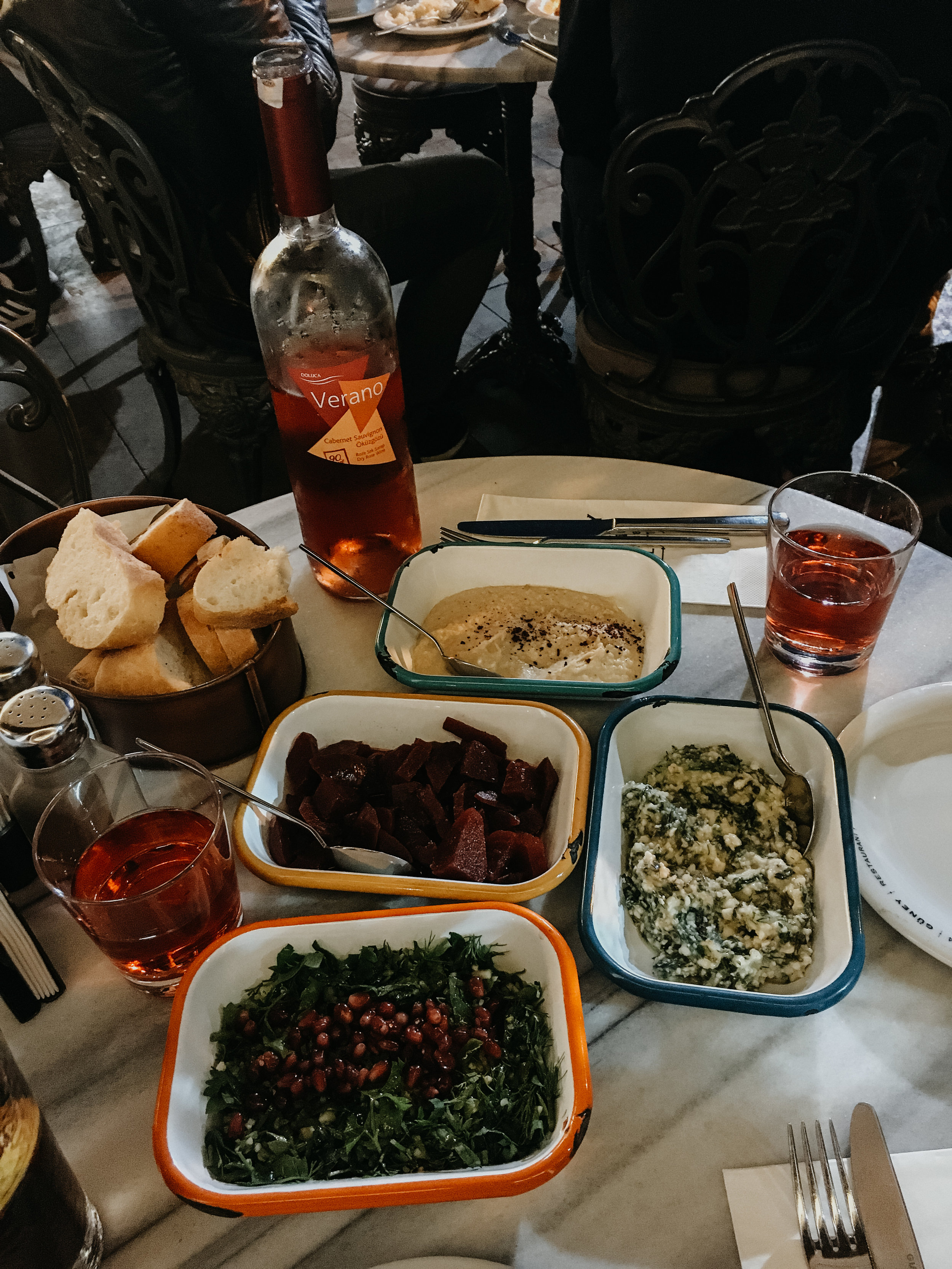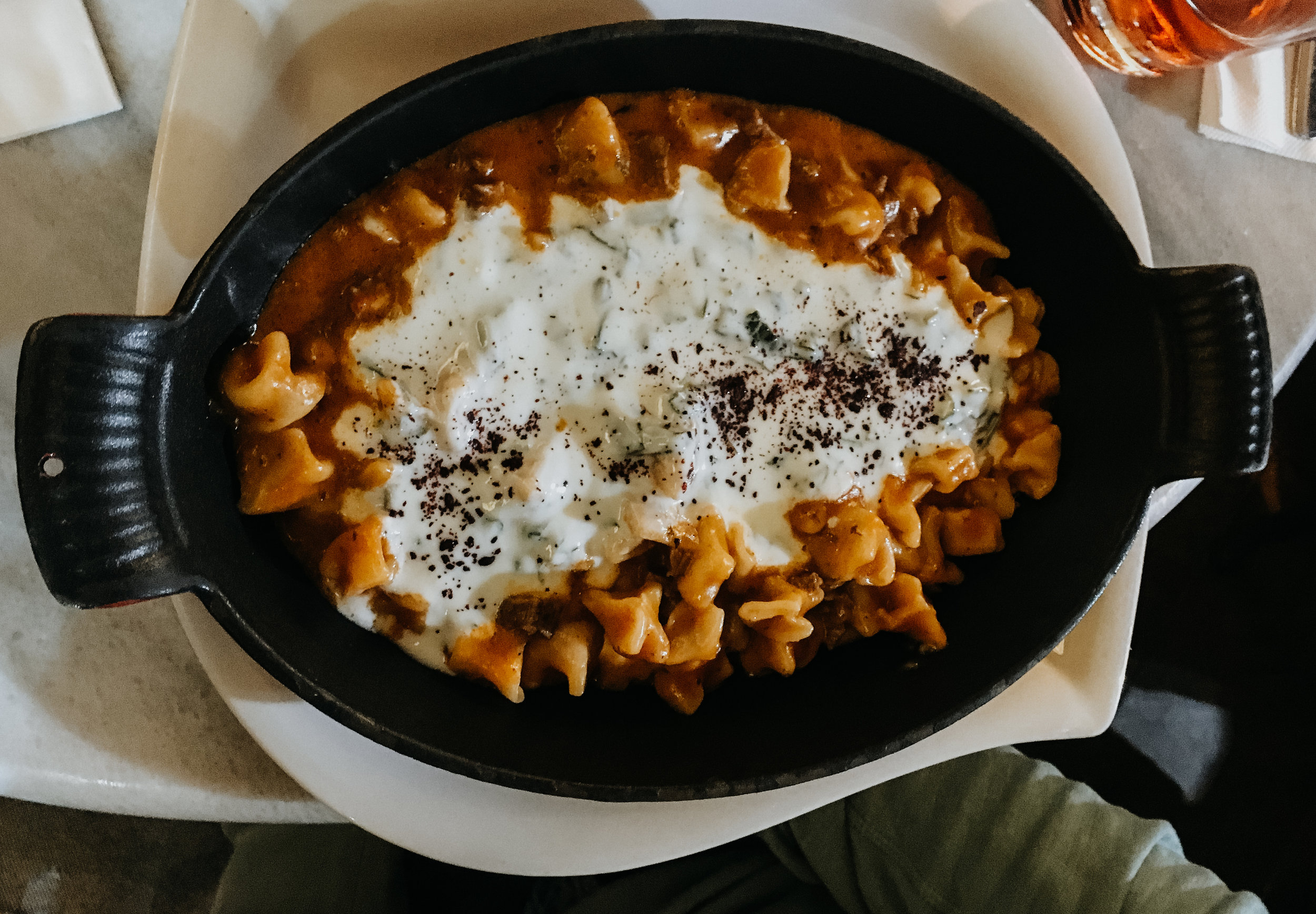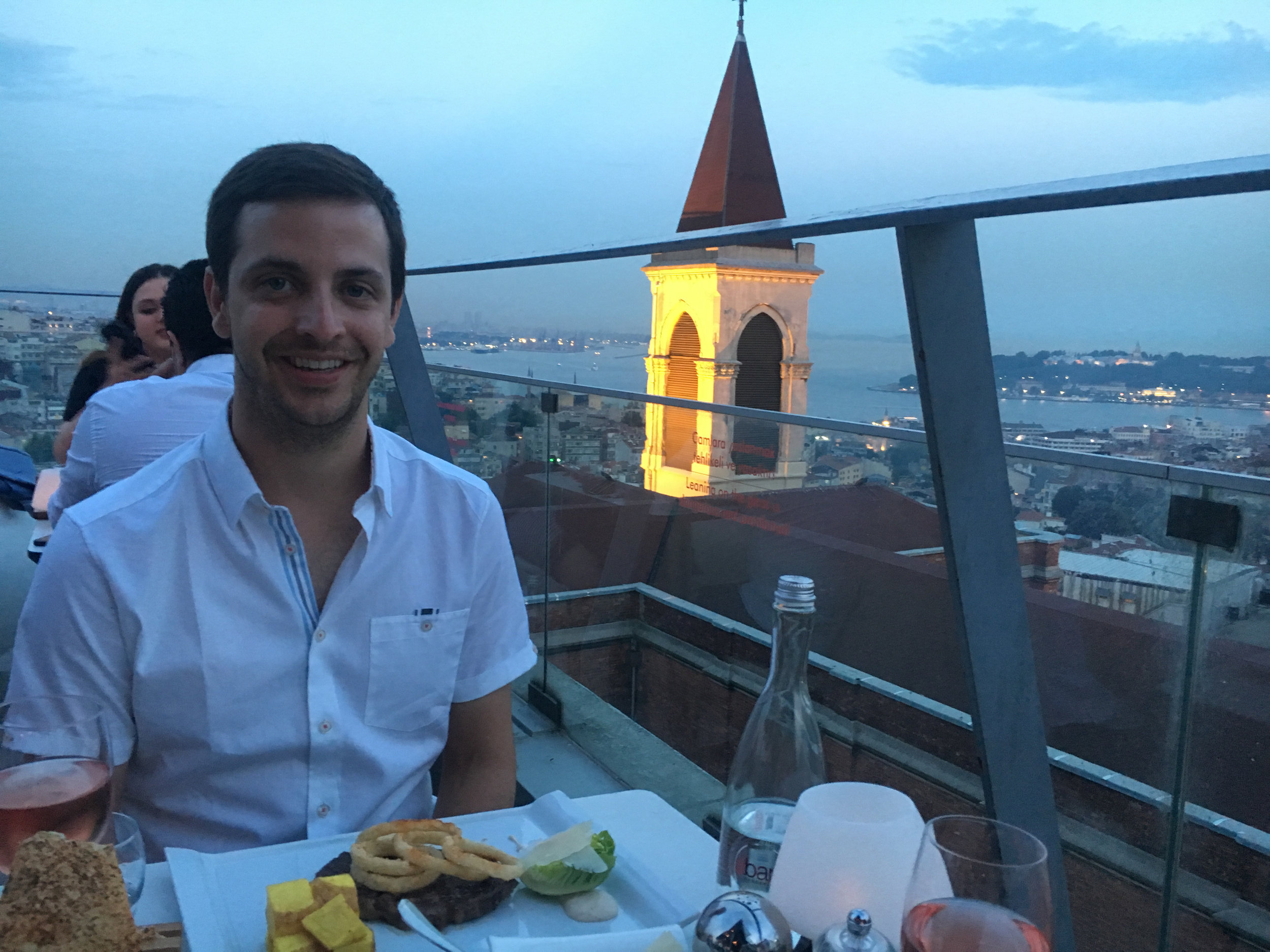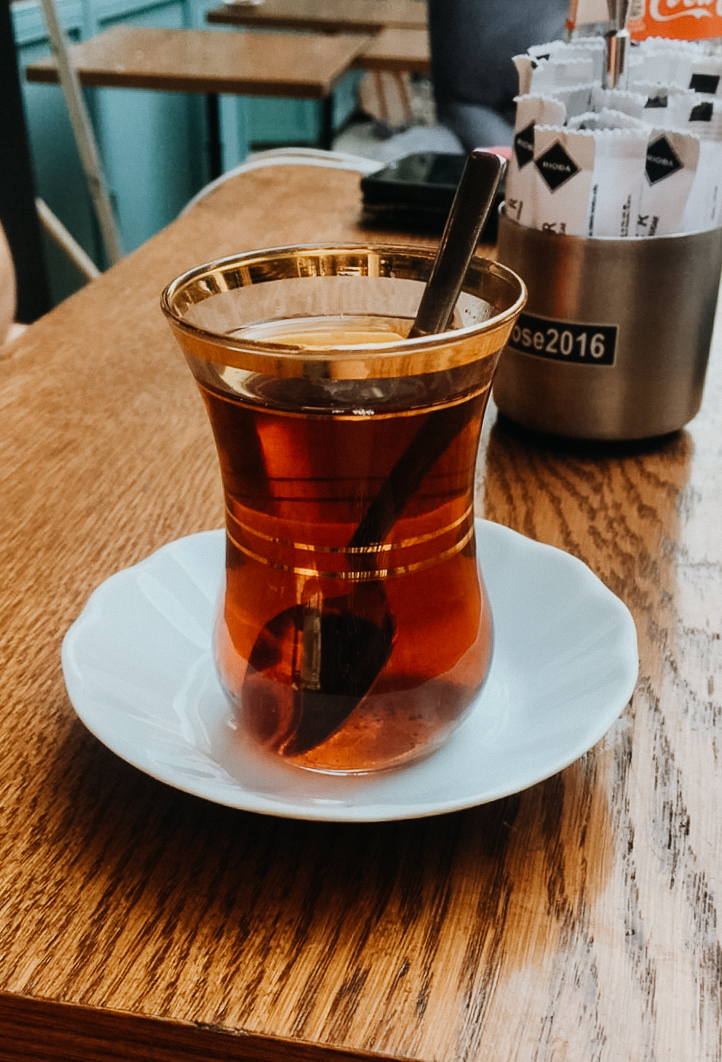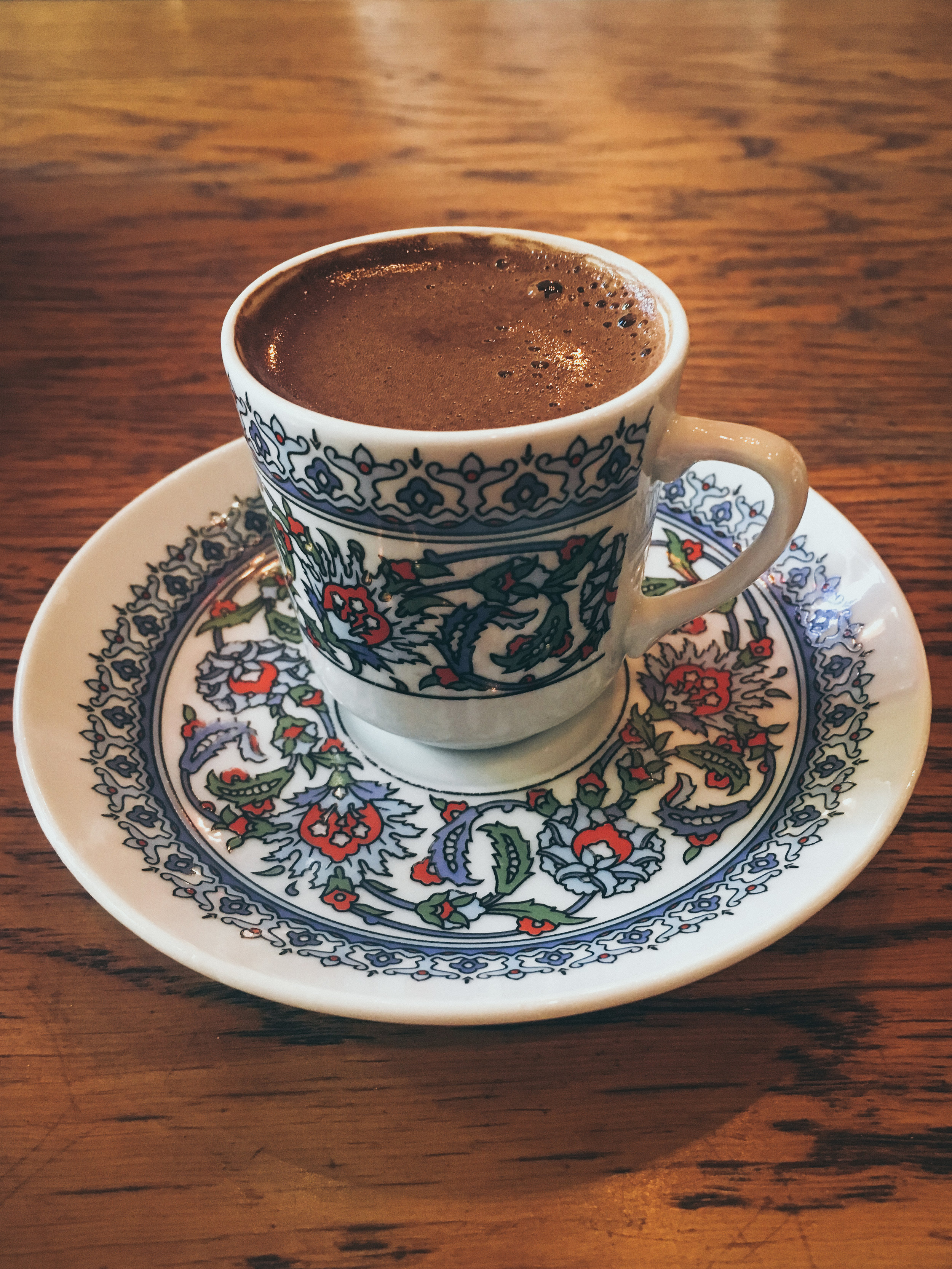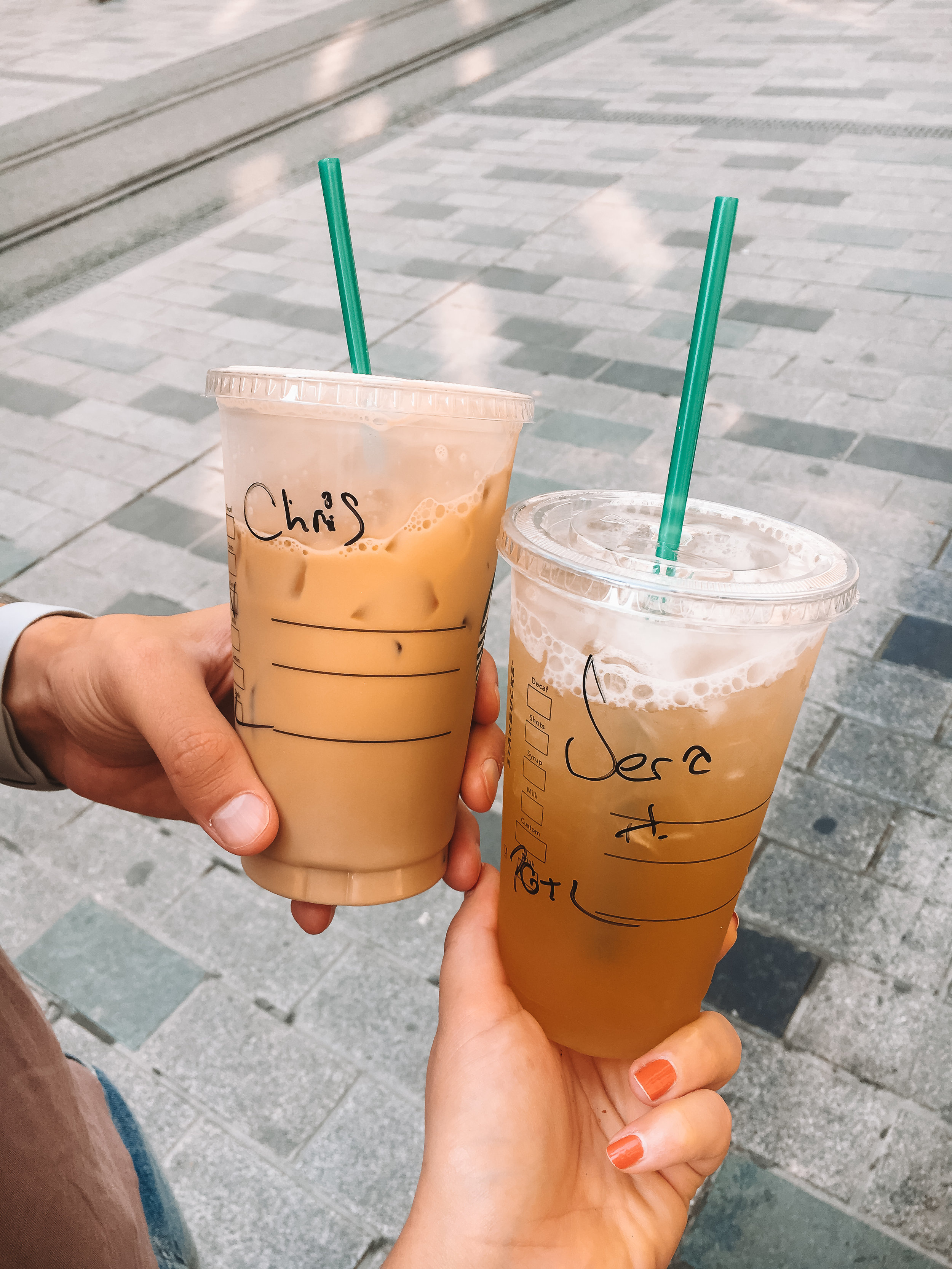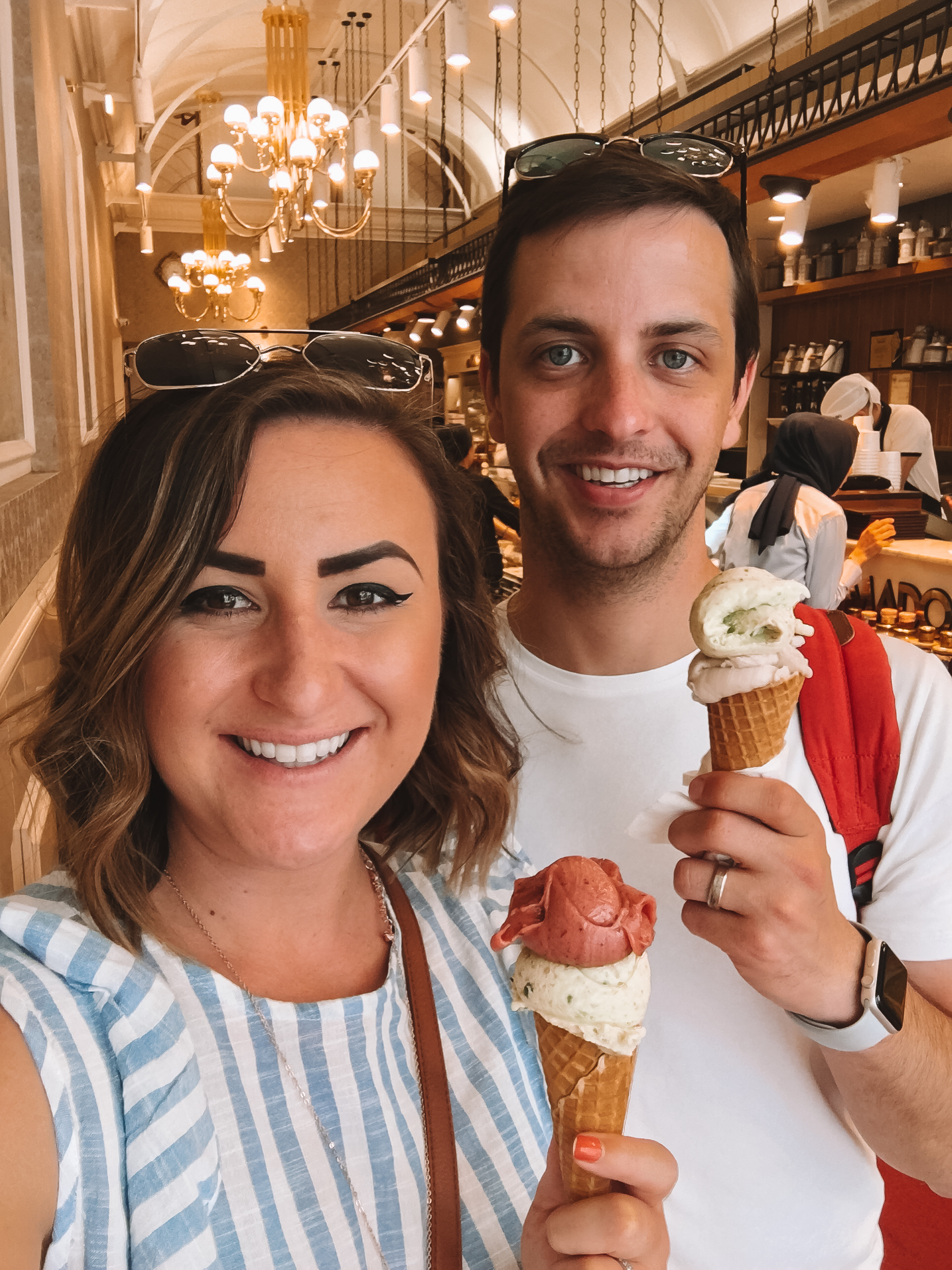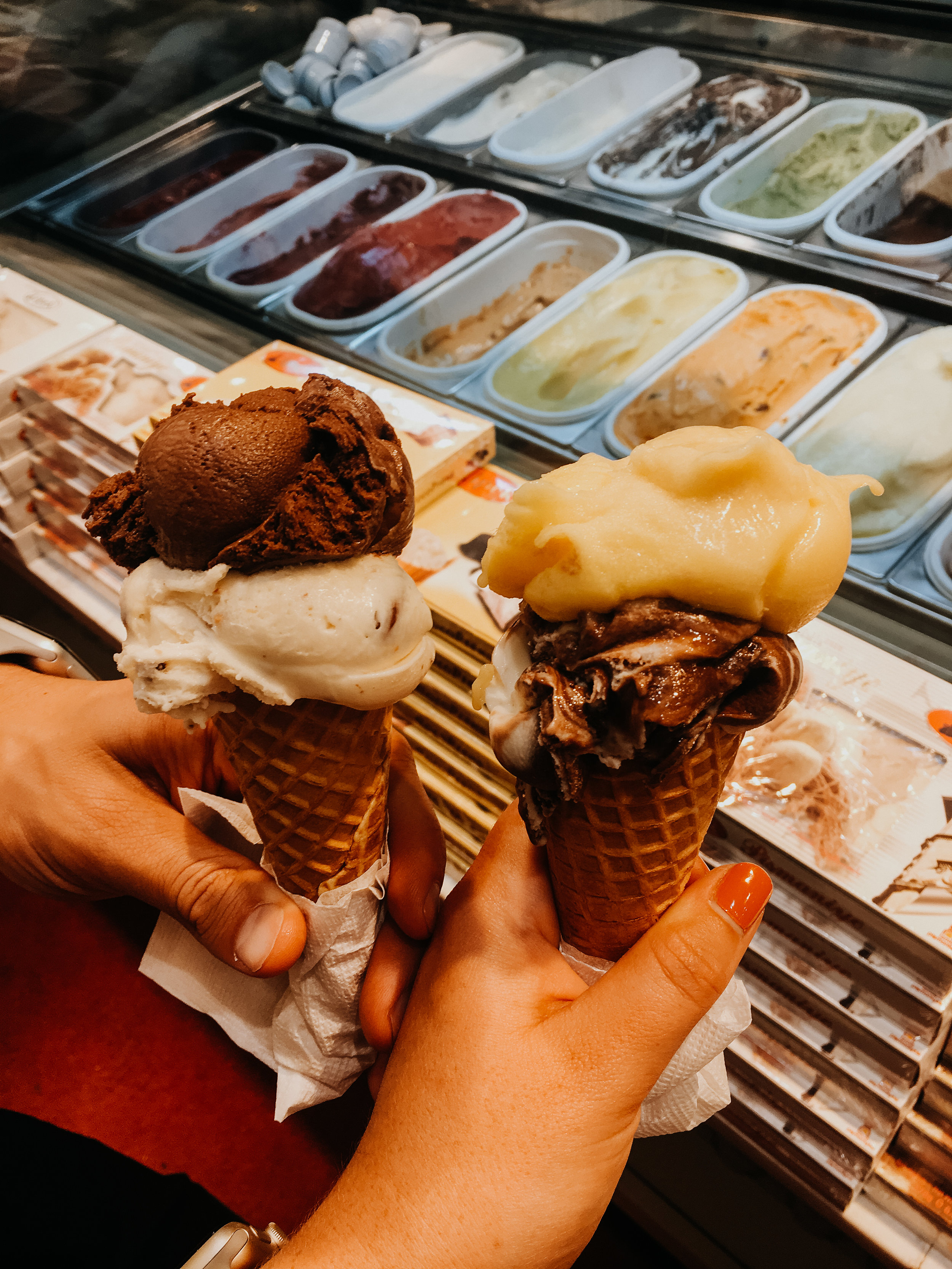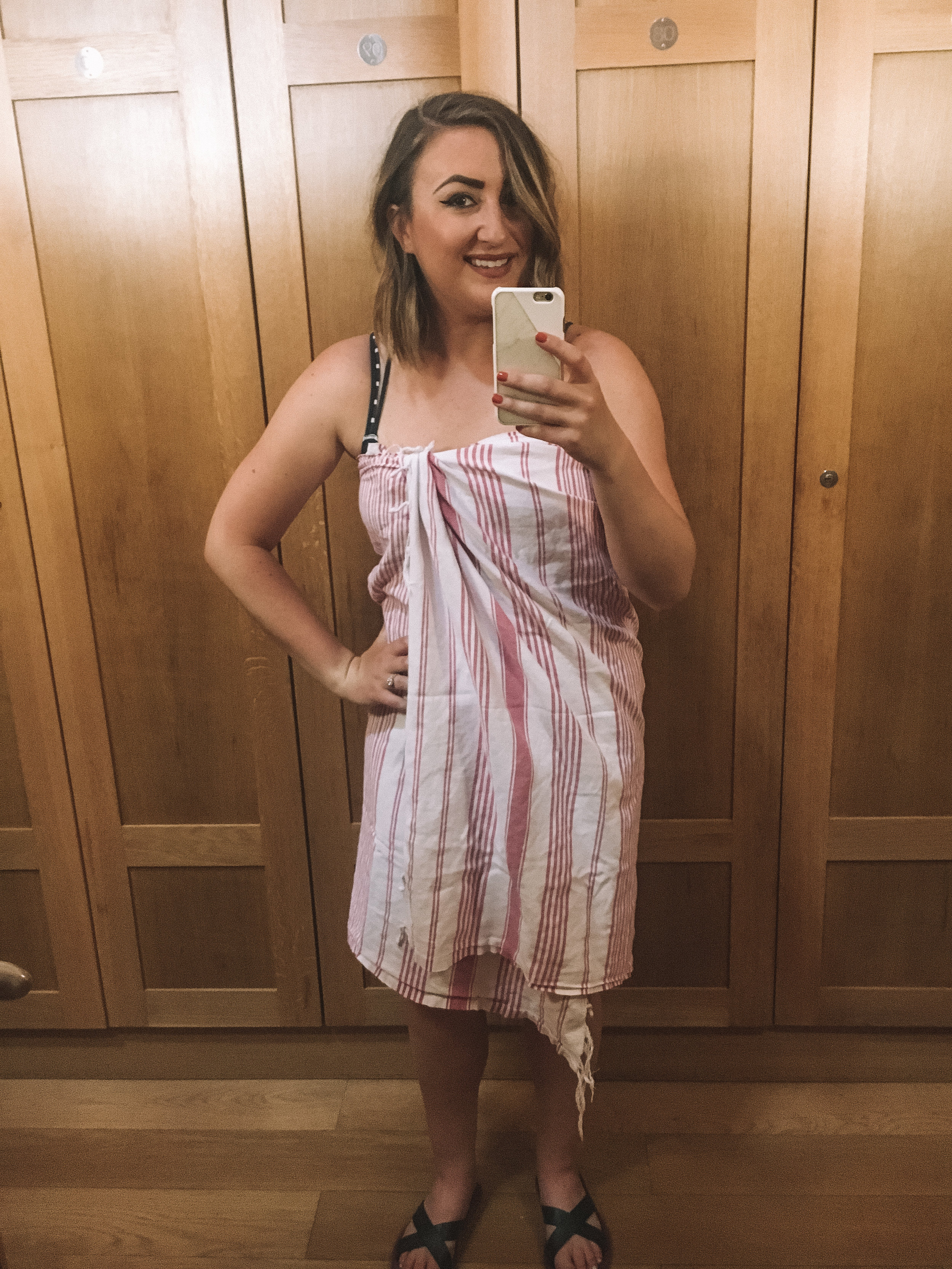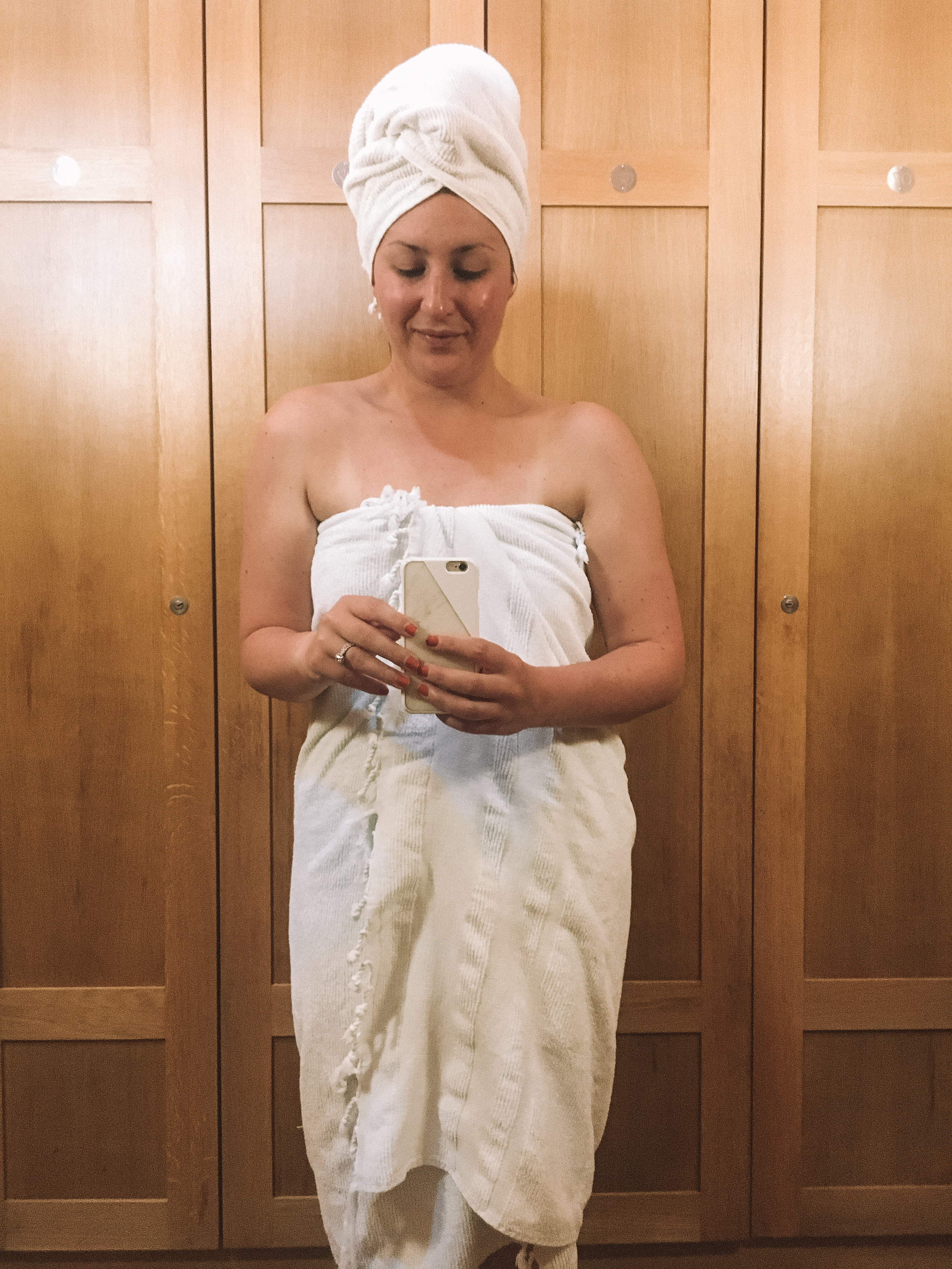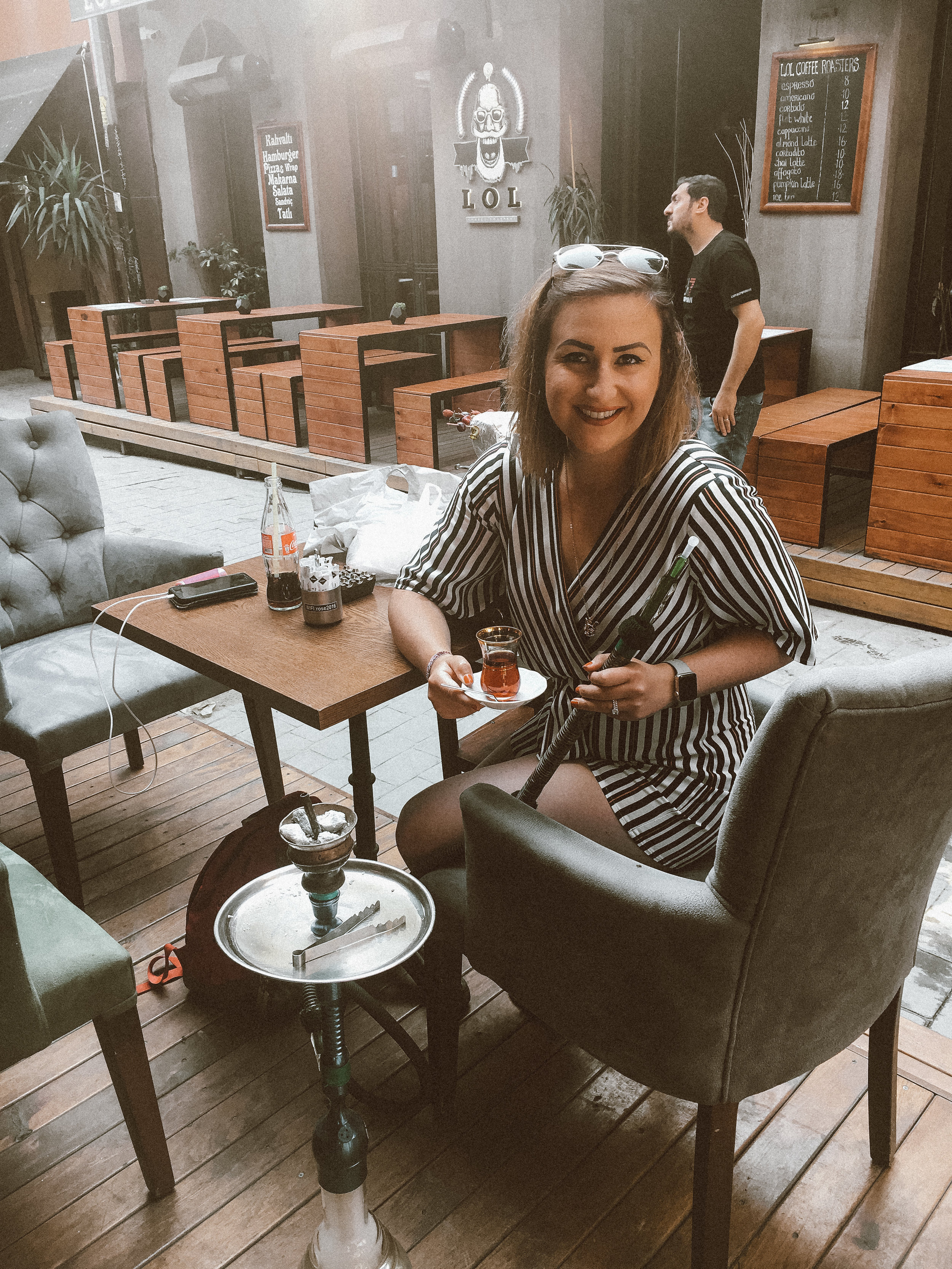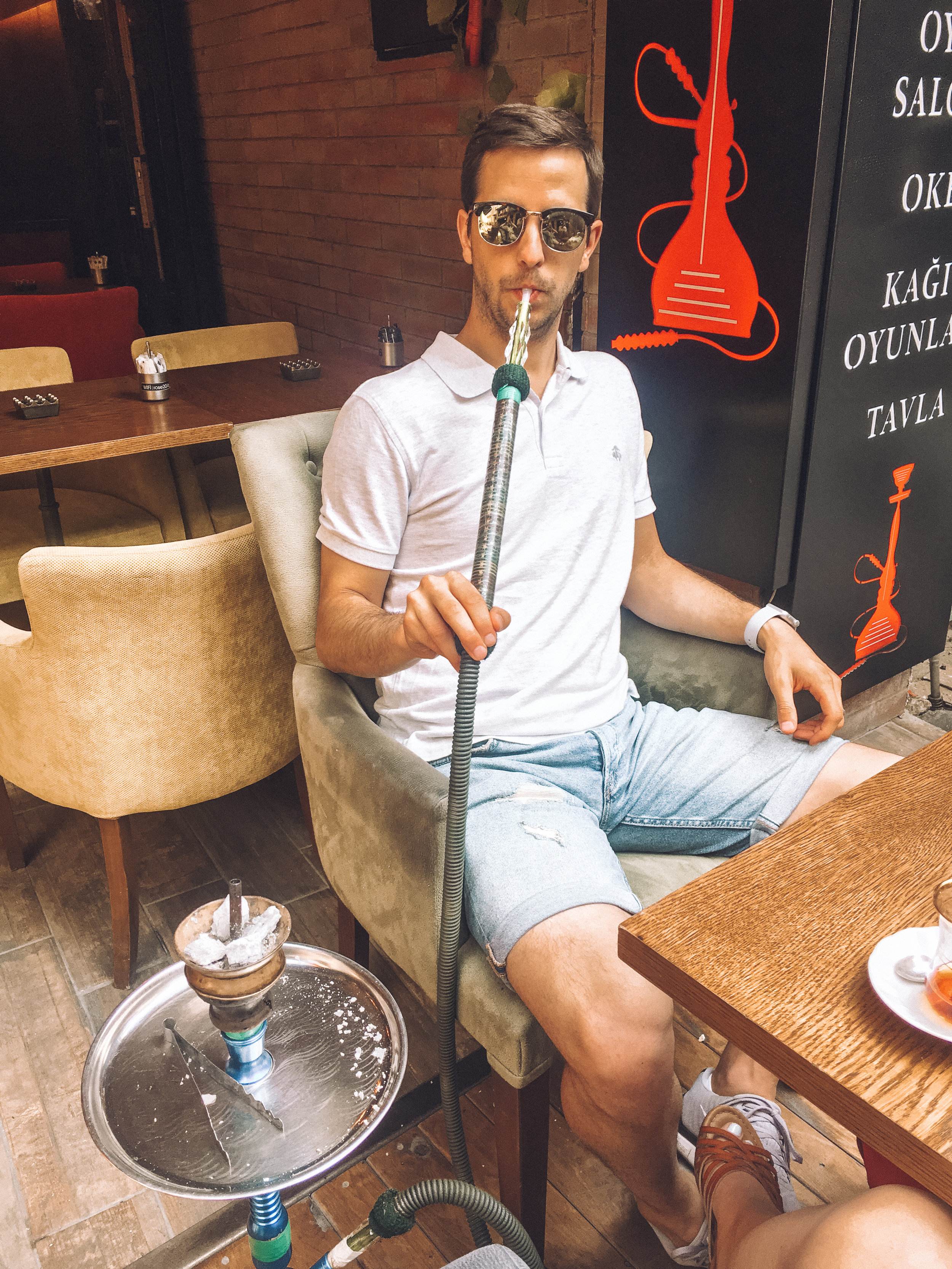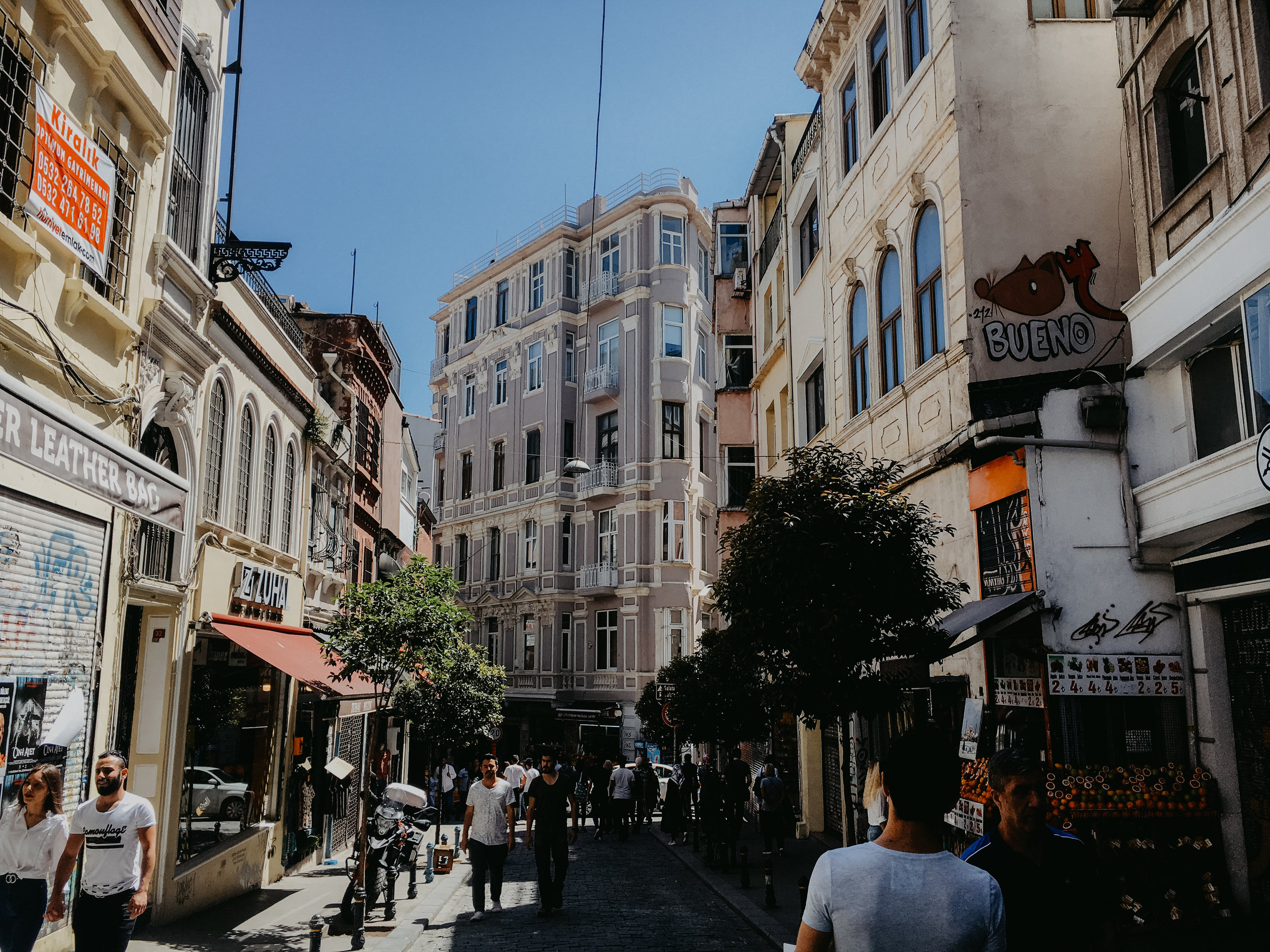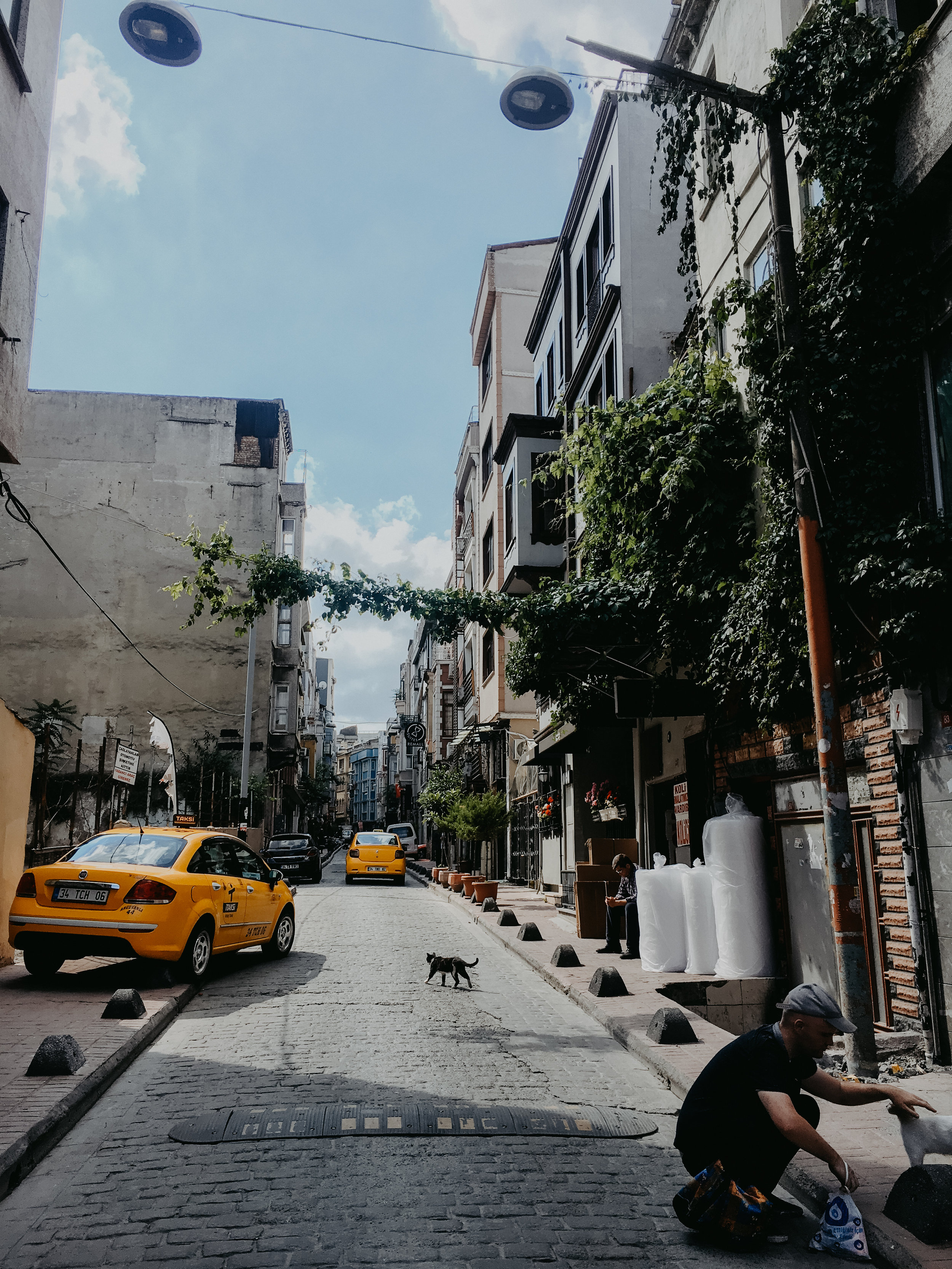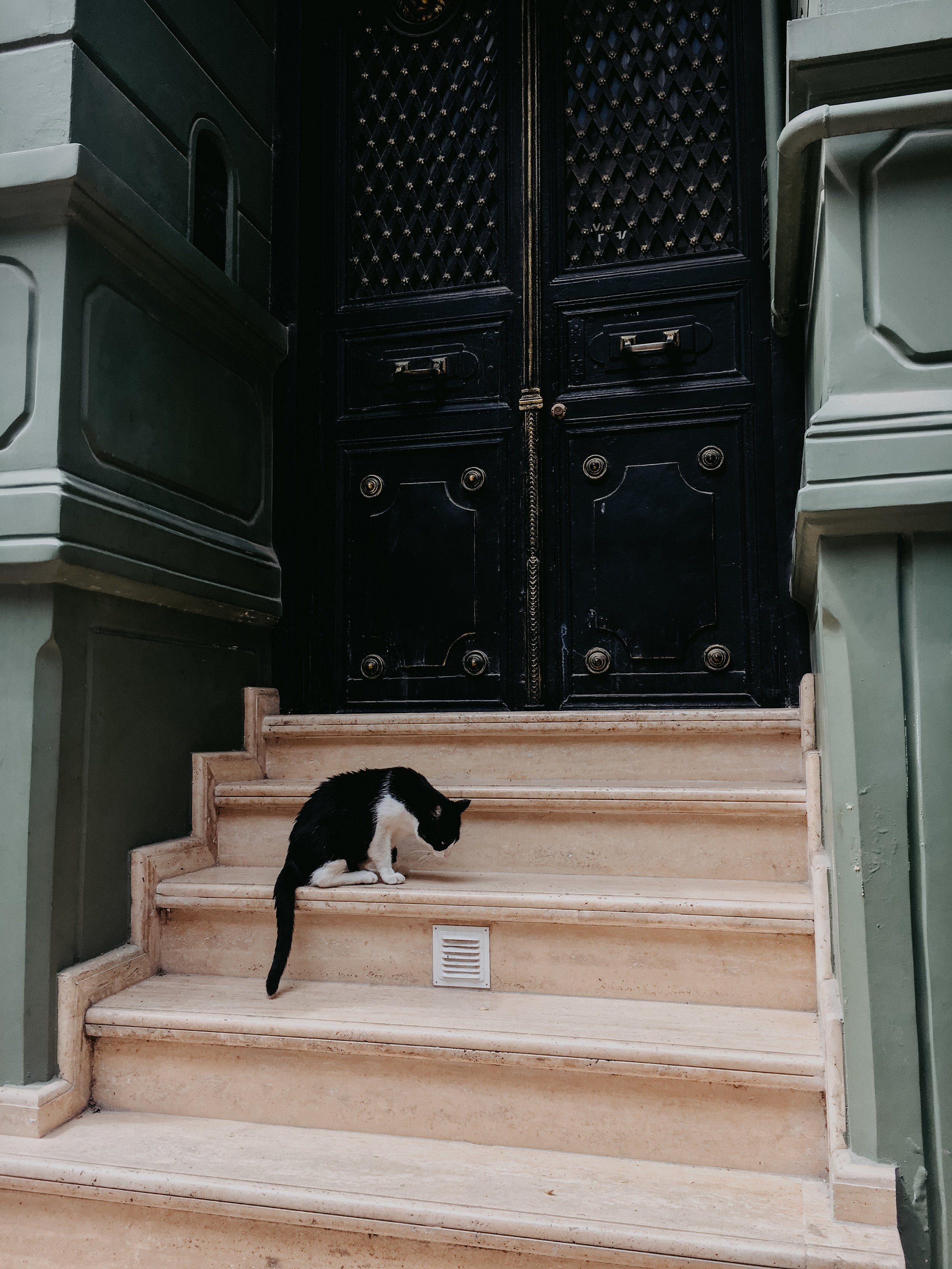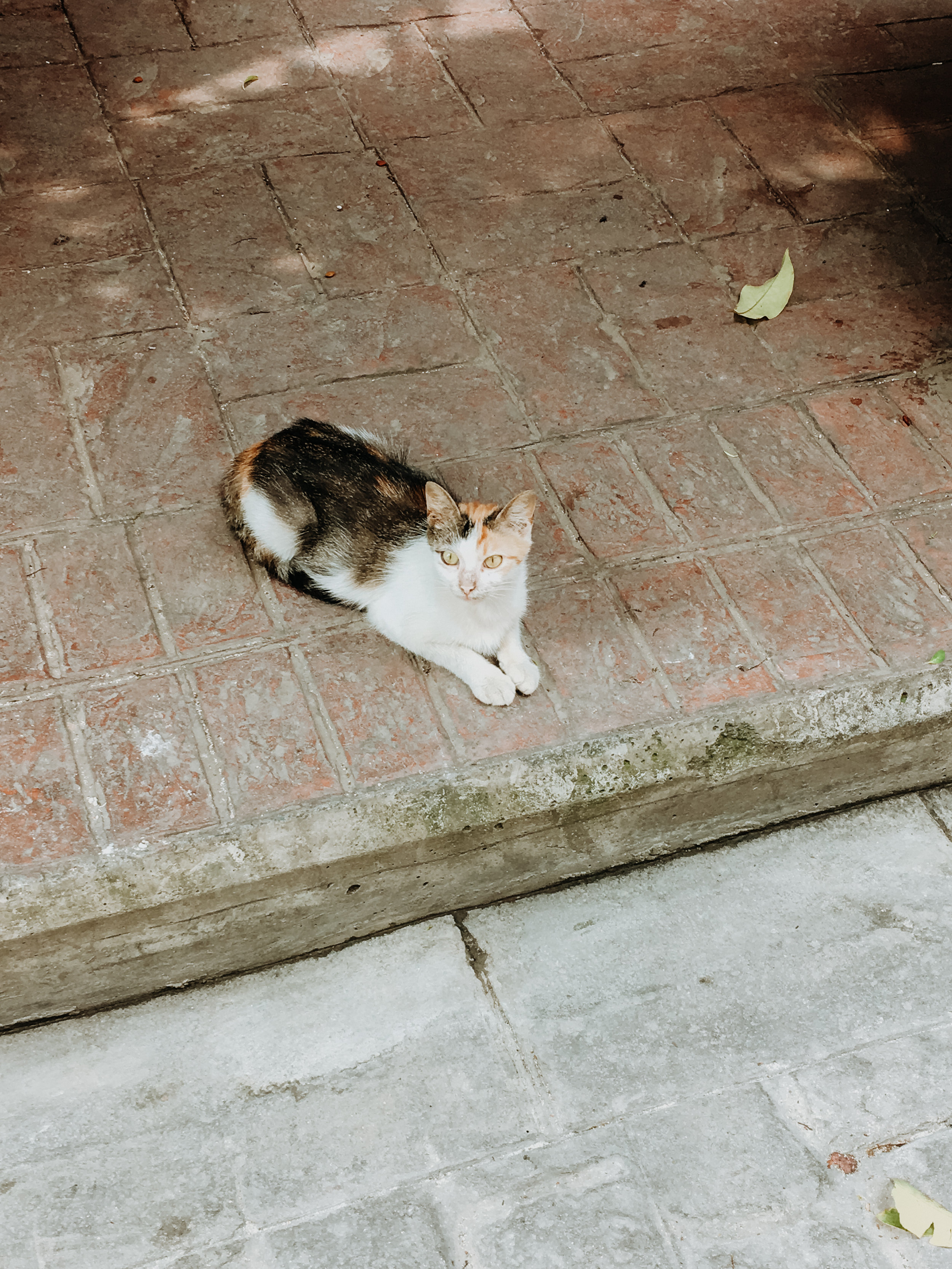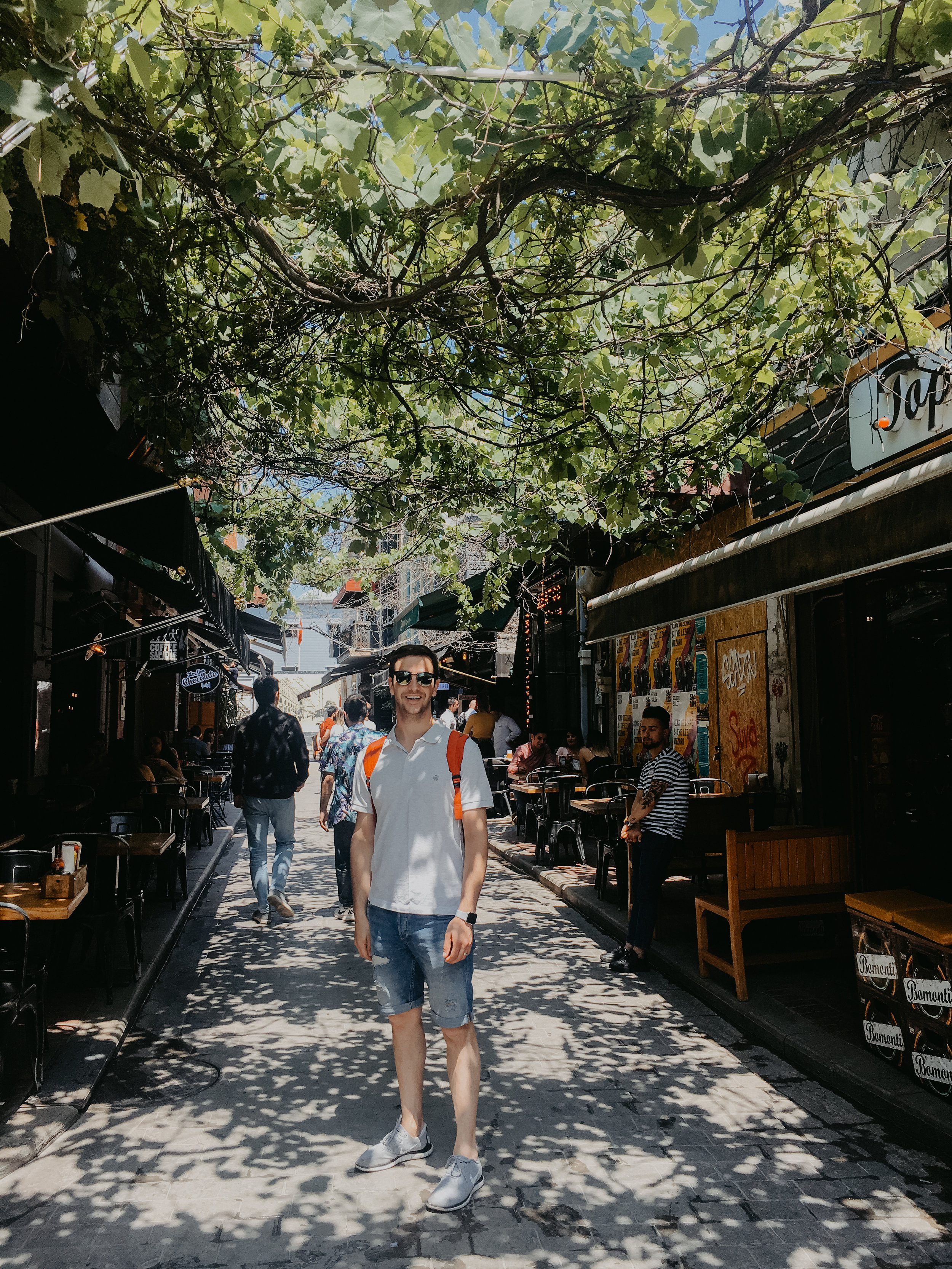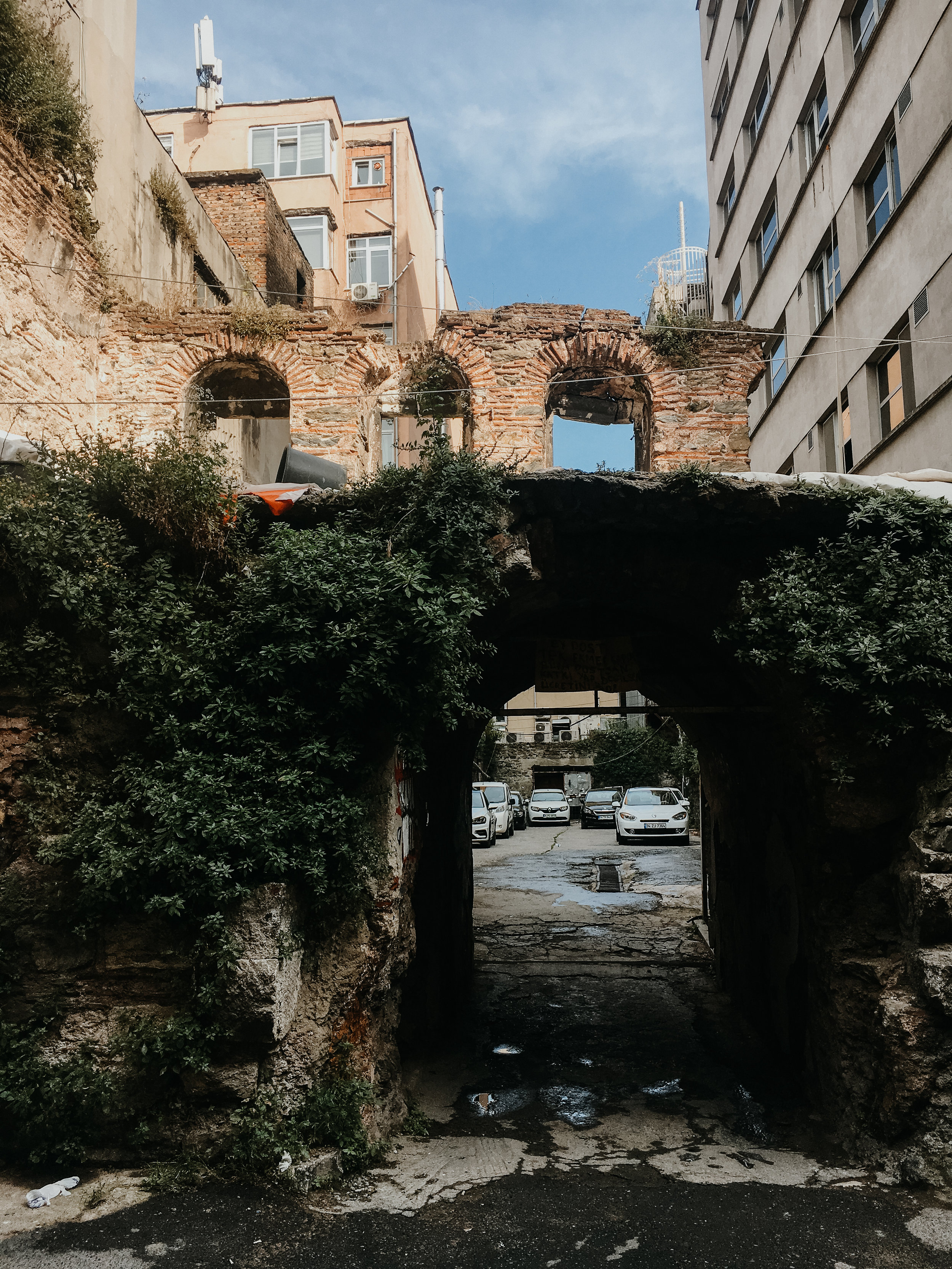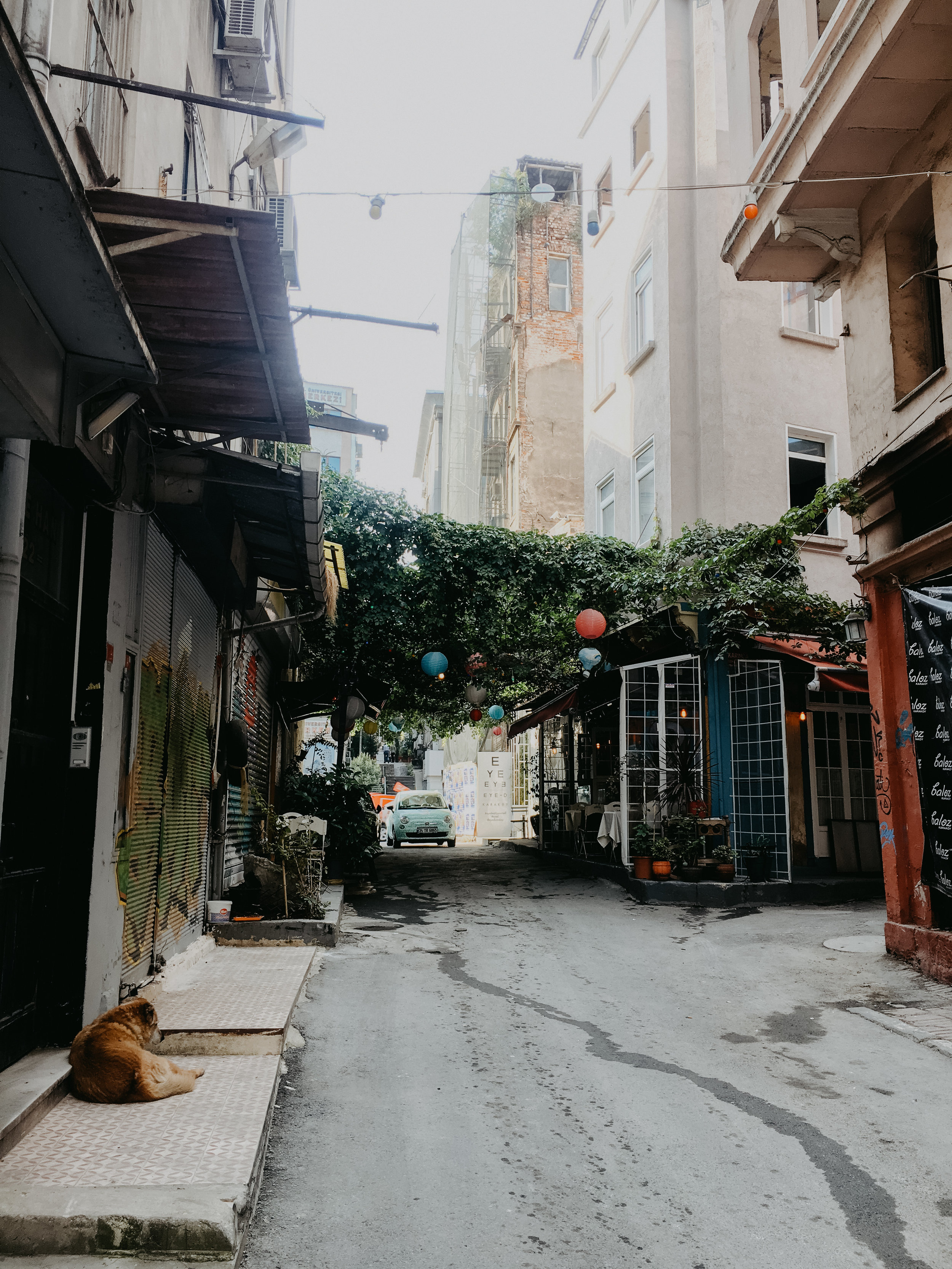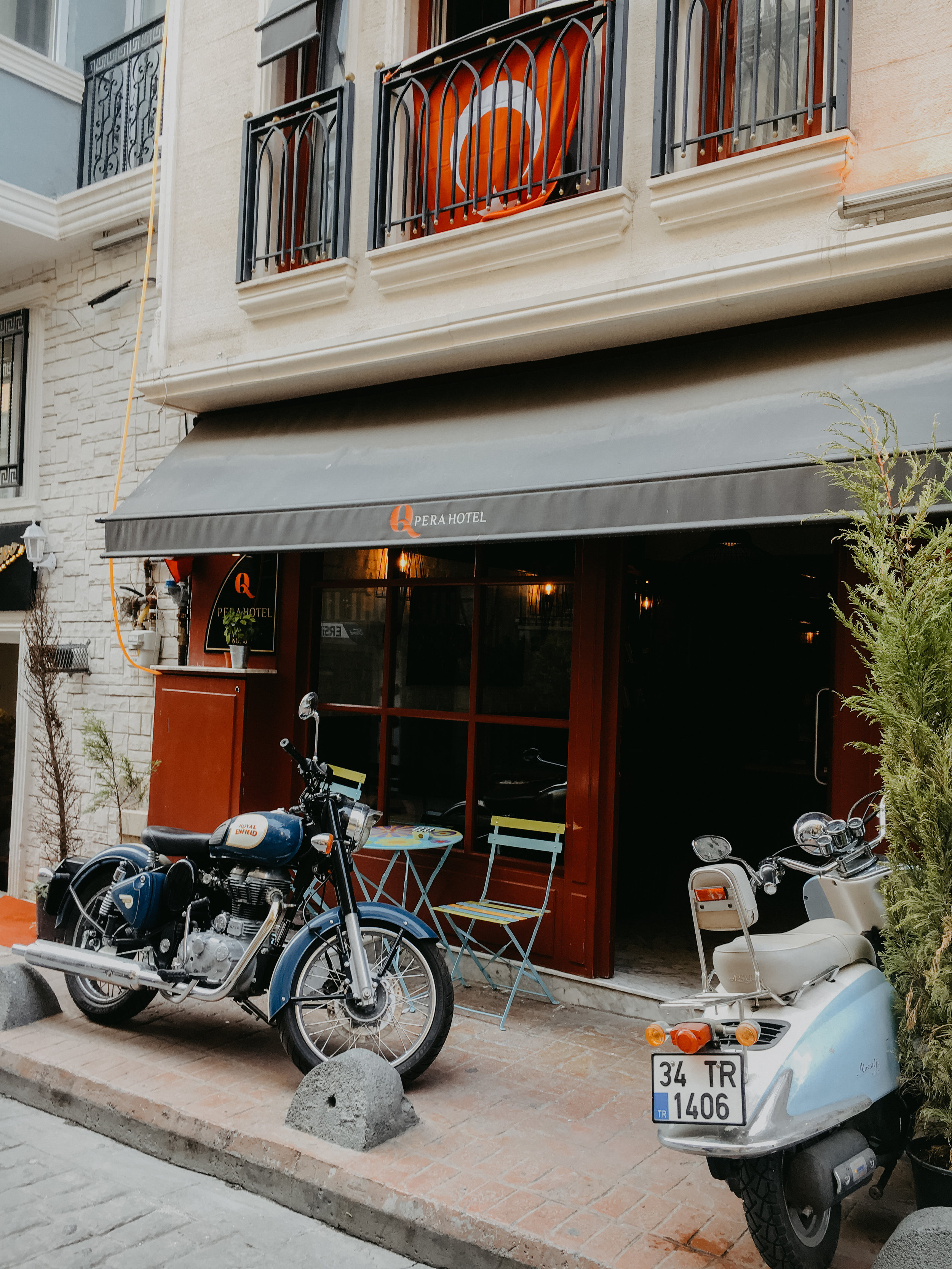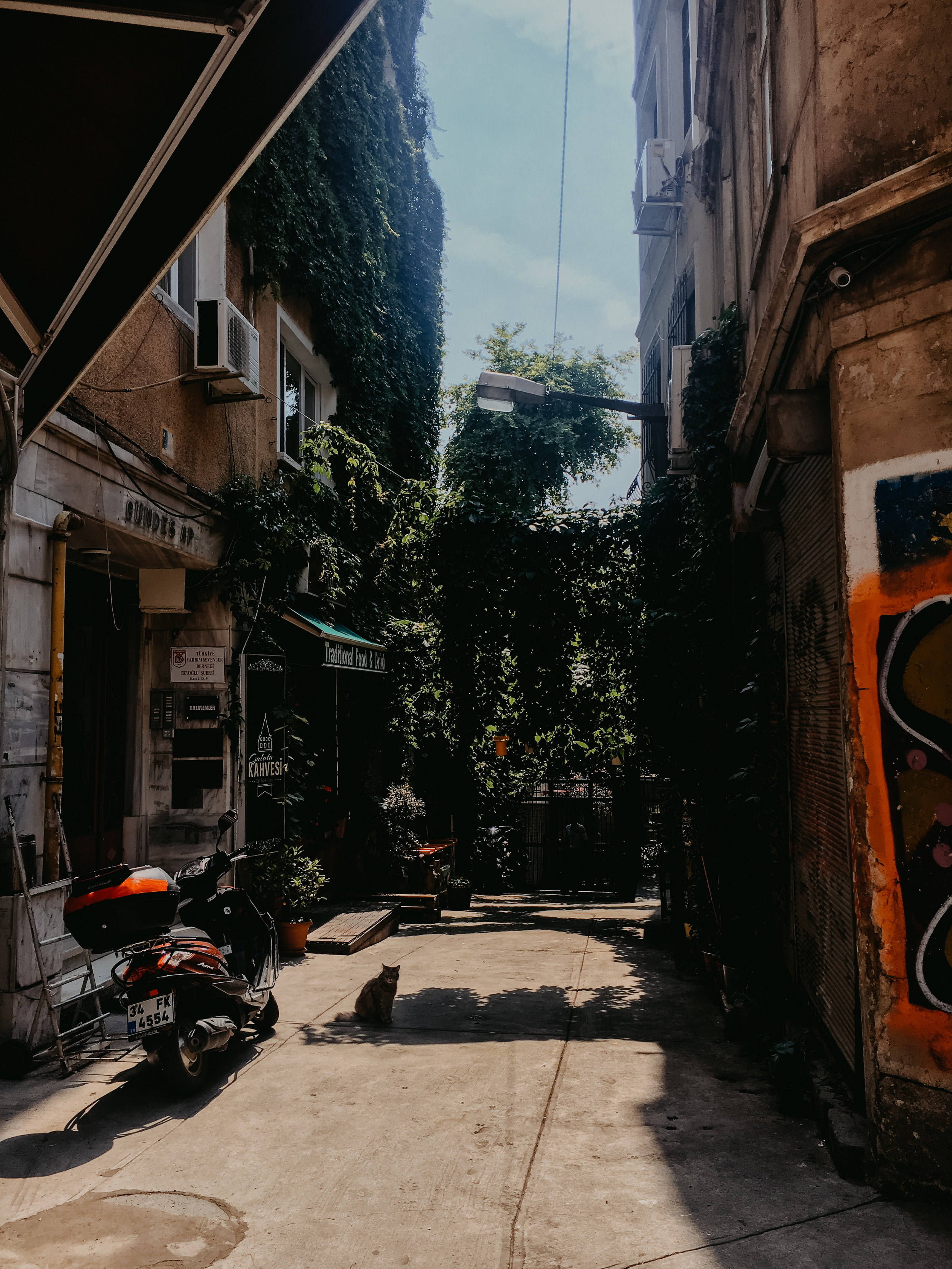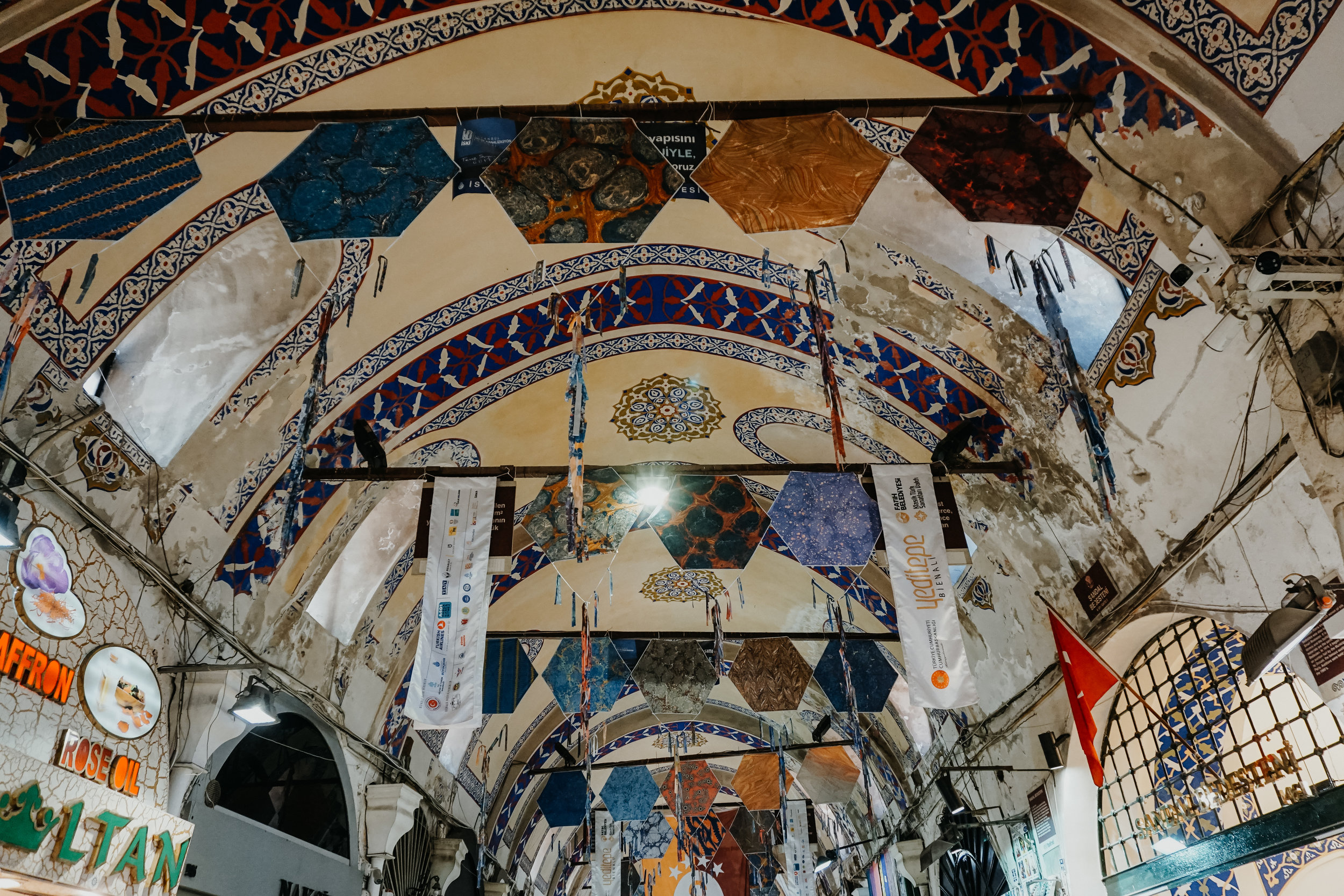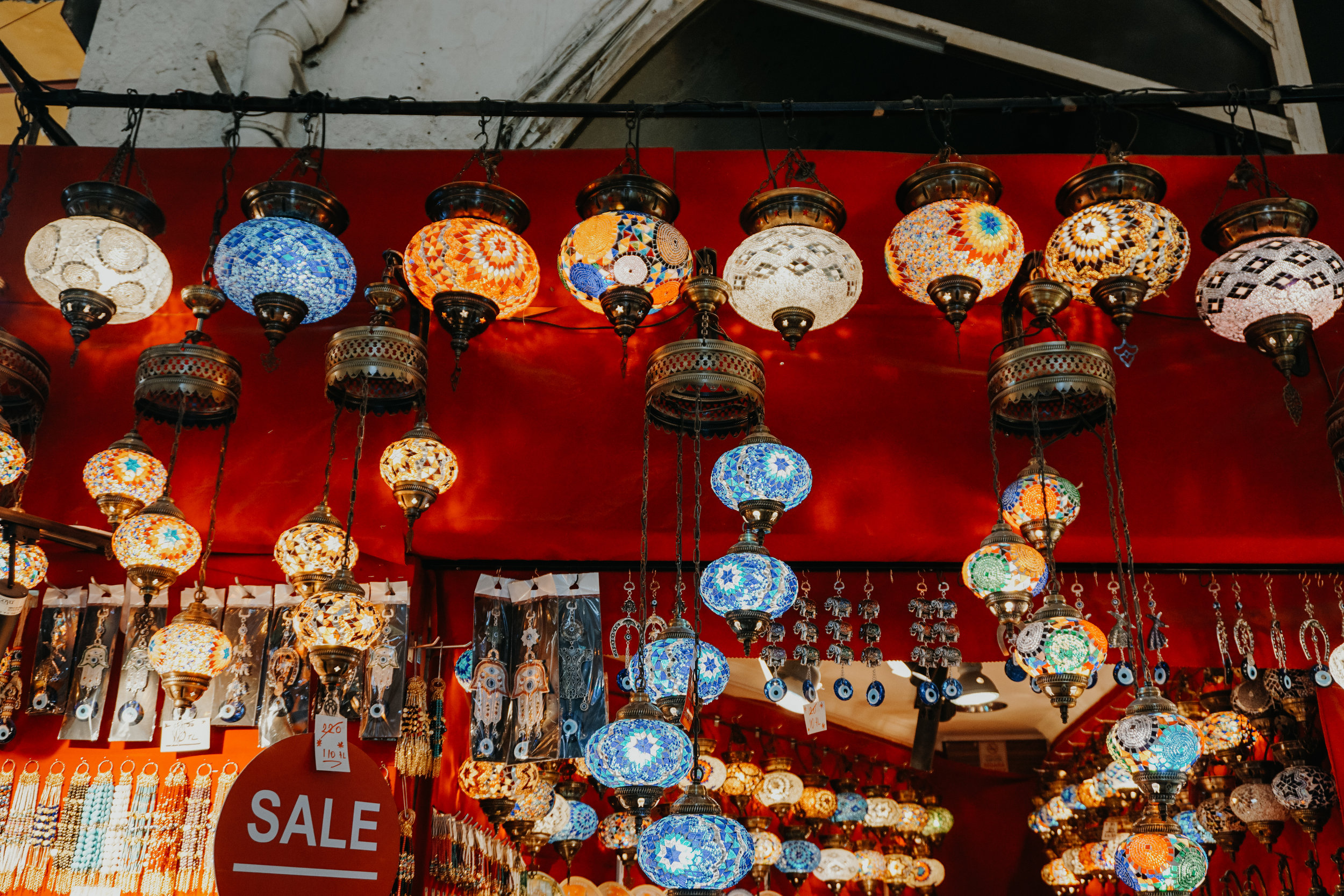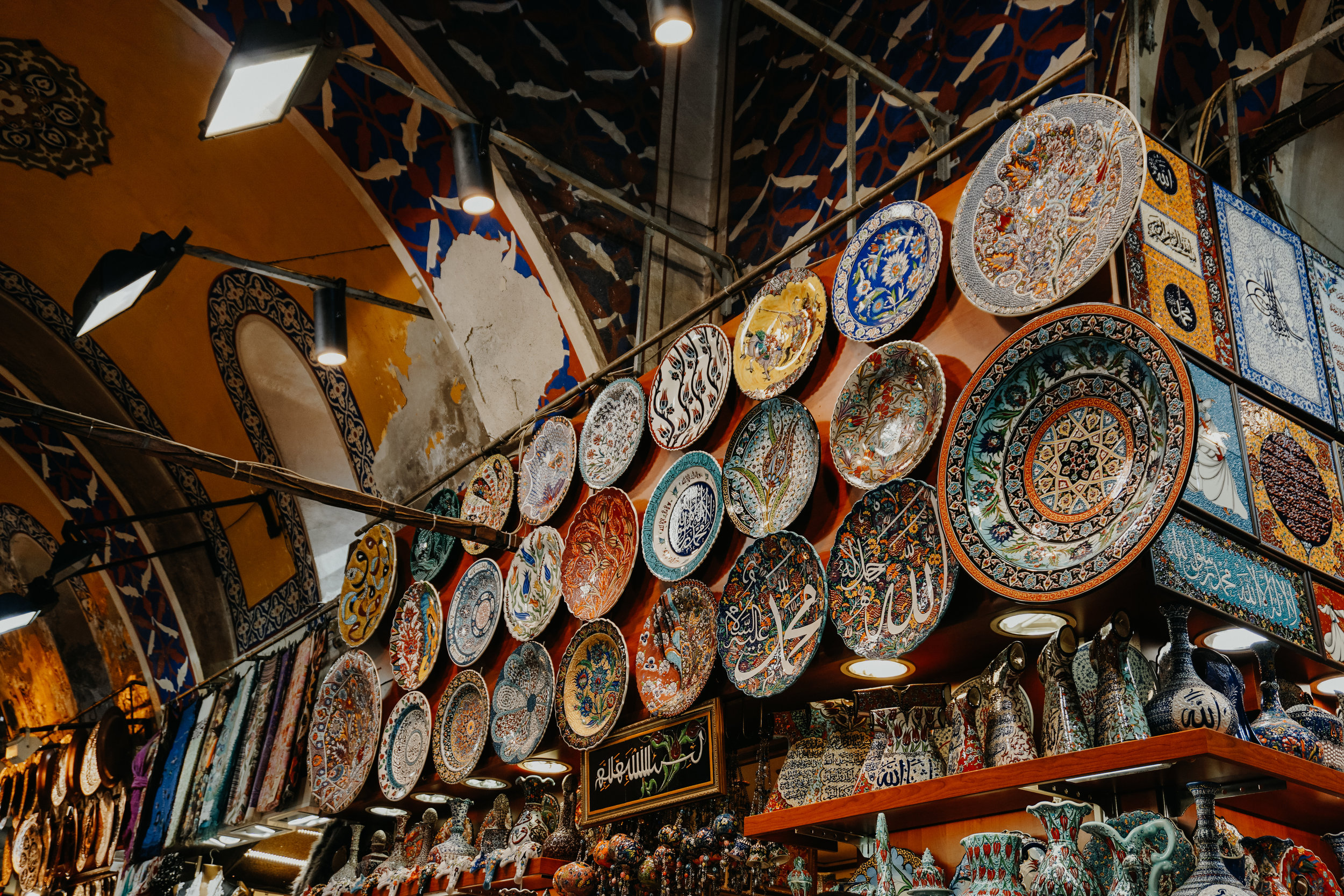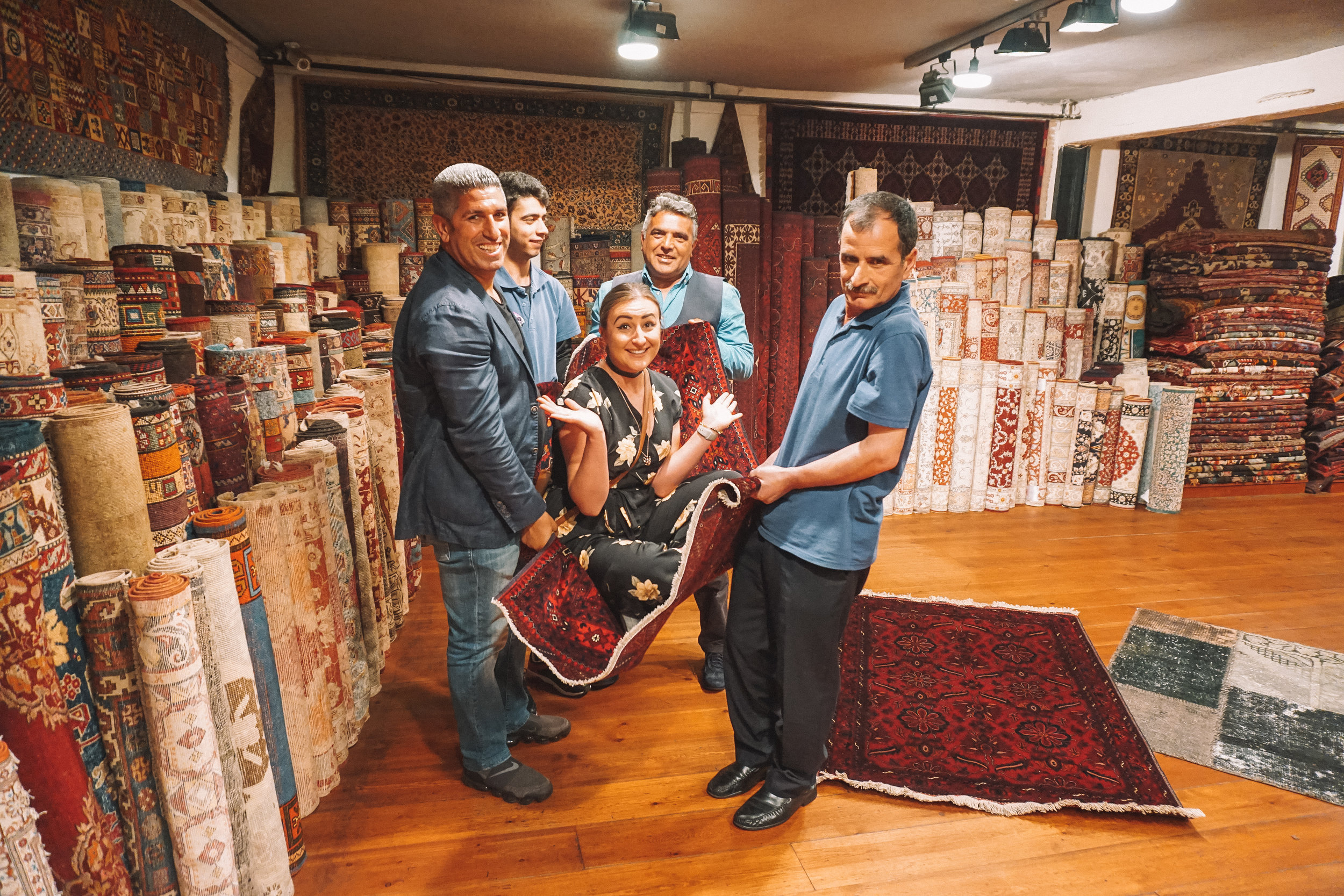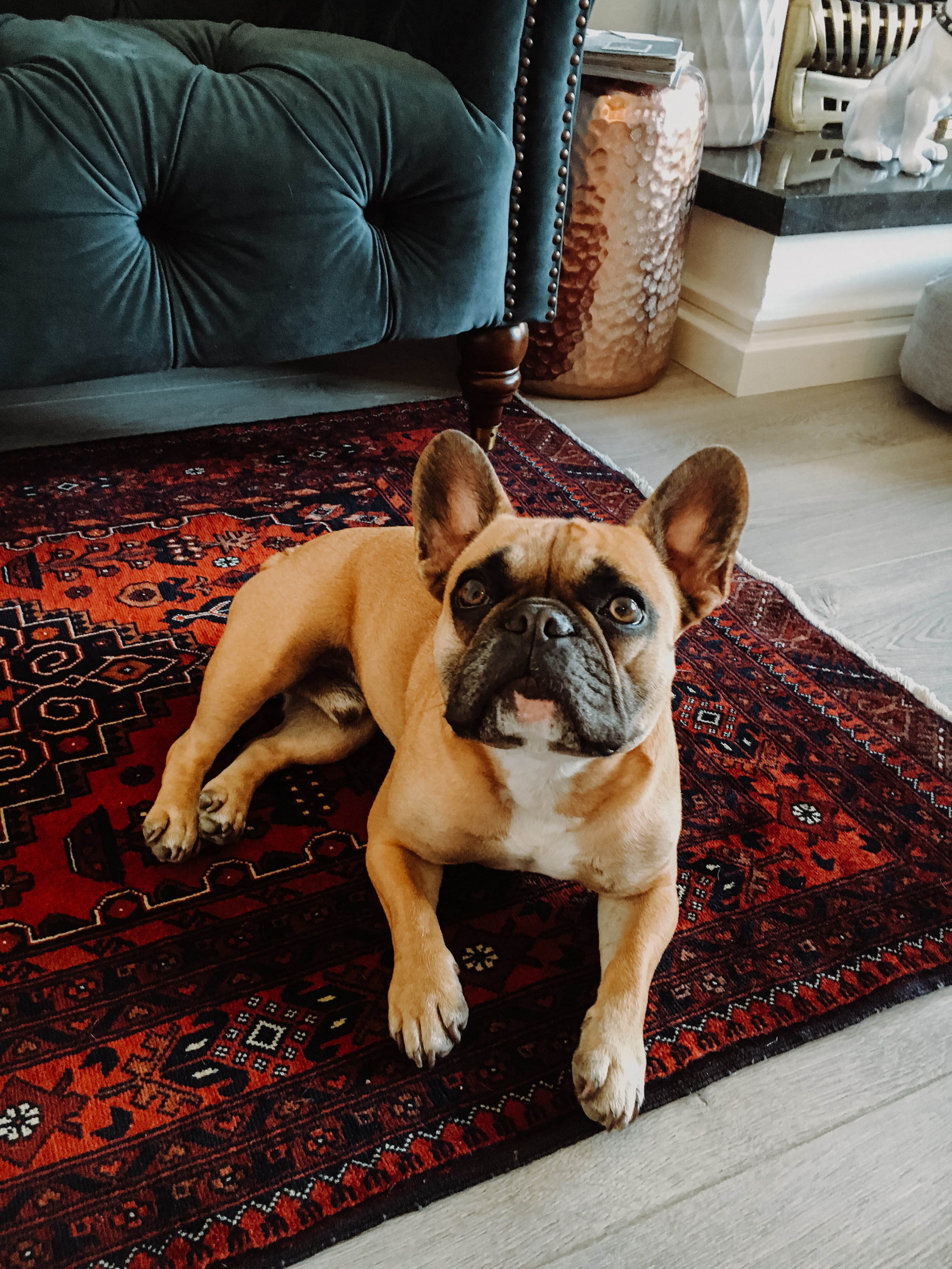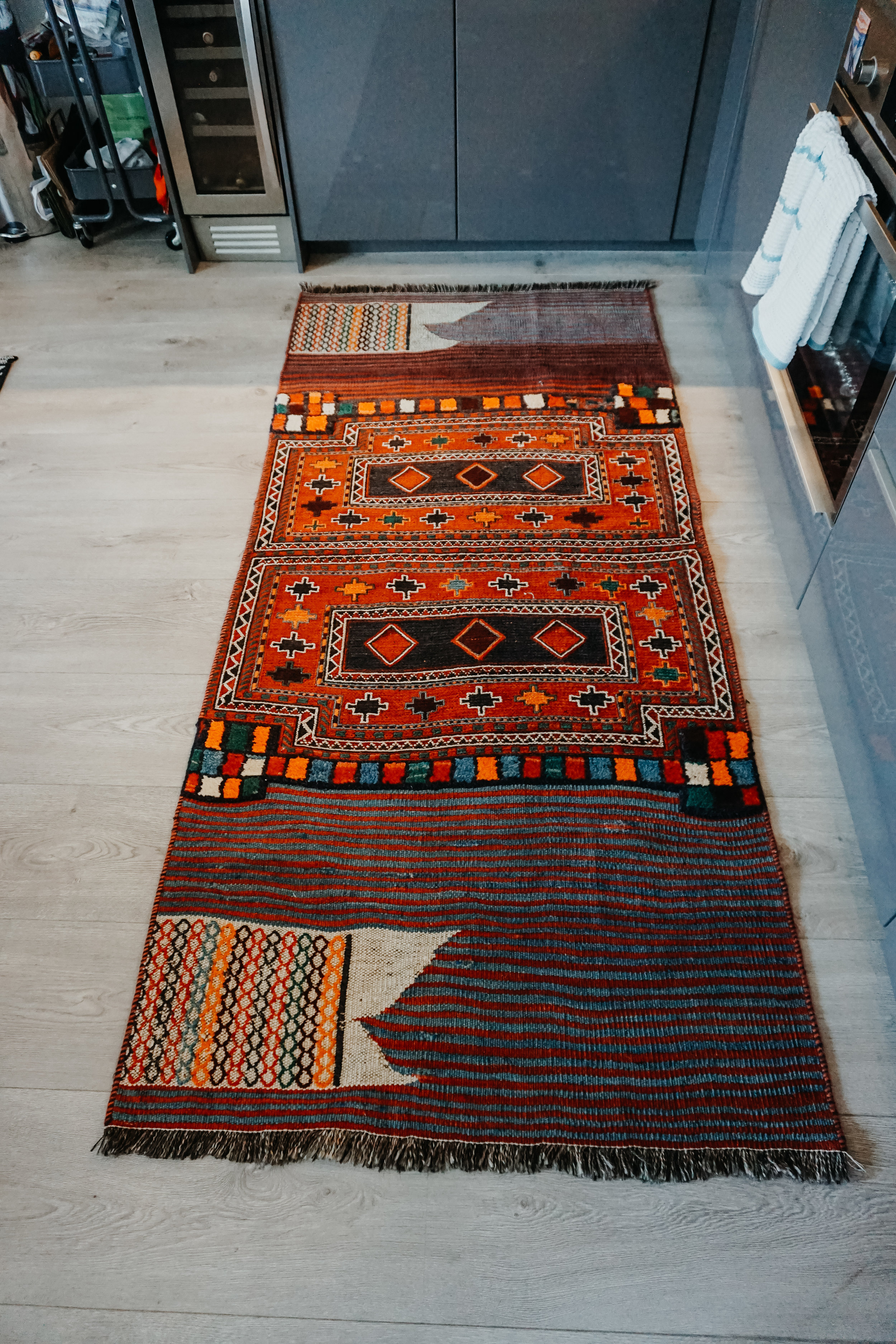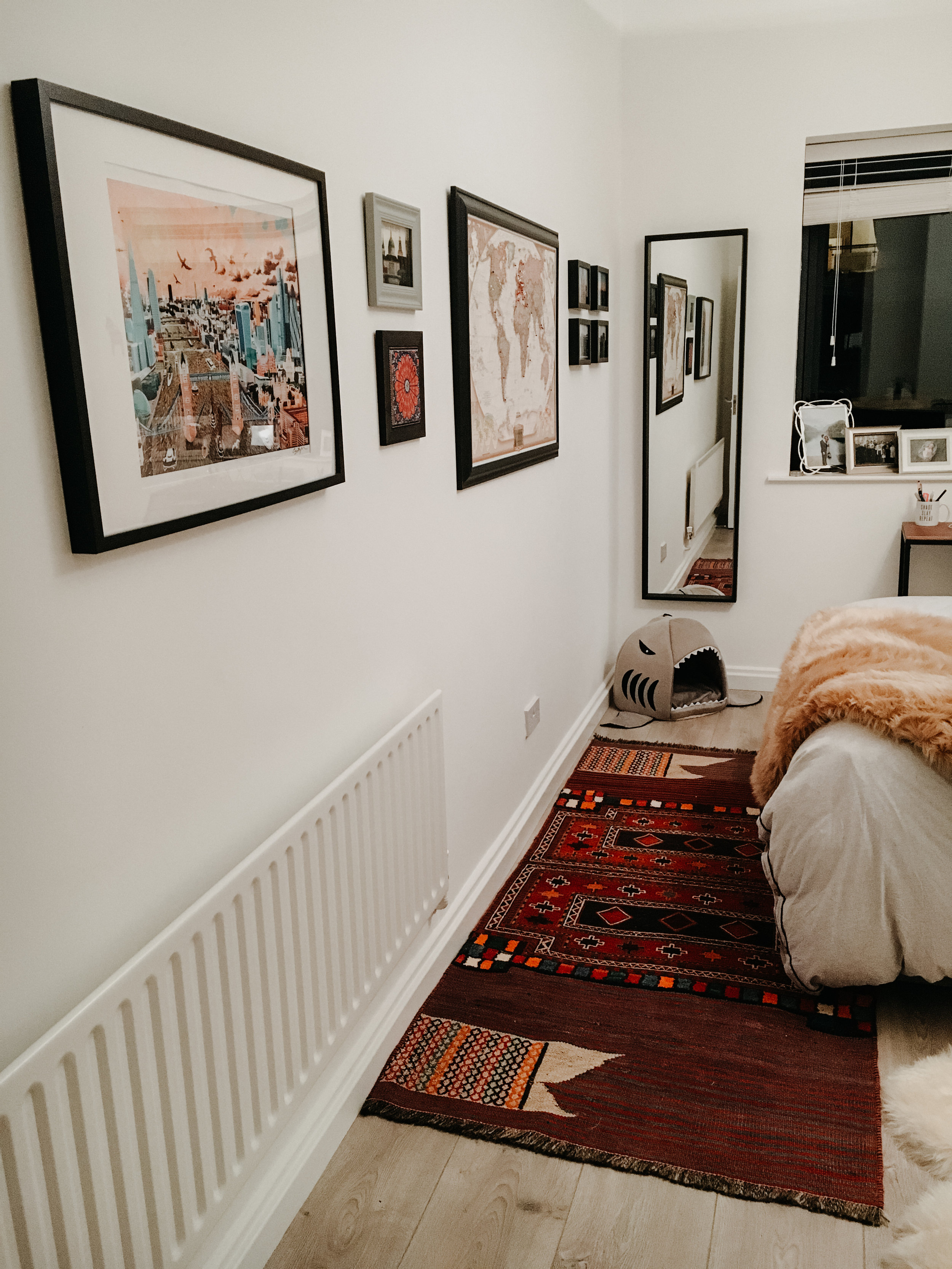ISTANBUL
Merhaba and welcome to my post about all things Istanbul! Where the East meets the West, Istanbul is a city rich in history and culture. It is the furthest East Chris and I have traveled as of yet, so we were excited to step out of our European comfort-zones and experience a place with a little more spice. We fell in love. The people of Istanbul were kind and hospitable, the architecture is some of the most magnificent we have ever seen, and the food... oh my goodness the delicious food. Istanbul captured our hearts in 4 short days. I hope you enjoy reading about our time in Istanbul and bonus! -- an unexpected afternoon in Frankfurt, Germany! Prost!
Chris and I wanted to take advantage of the June bank holiday, so we planned a little longer vacation than normal in a destination a little farther away. I honestly can't remember how we decided on Istanbul. It was one of those snap decisions -- I got fixated on us going, so before we knew it, airfare and accommodations were booked!
There are direct flights from Dublin to Istanbul, but those were too expensive for my taste, so we went with Lufthansa, which had us making a quick stopover in Frankfurt. Last time we flew with Lufthansa, we had a major fiasco with our luggage not making it and consequently we got locked out of our apartment [if you missed that crazy story, you can read about it here]. This time, we had our carry-on luggage, our layovers were both an hour and a half long, it was going to be smooth sailing, right? Wrong.
On Friday morning, we sat on the Dublin Airport tarmac for over an hour because we "lost our spot" in the take-off line. Aren't Germans supposed to be punctual? ;) This caused us to land late in Frankfurt and miss our connecting flight to Istanbul. Not the start we wanted for our trip. Nicely enough, Lufthansa automatically rebooked us for the next flight out of Frankfurt to Istanbul, which was for 9:40 that night. This meant we wouldn't get into Istanbul until 1:30 a.m., but it also meant we had 7 hours to go and explore Frankfurt for the day. When life hands us lemons, we have a great recipe for lemonade.
Here's a quick guide for taking advantage of a long layover in Frankfurt!
FRANKFURT, GERMANY
Frankfurt is a popular layover city, but is also a financial hub in Europe and pretty cool city. It is towering with skyscrapers, but has kept its old world charm with cobblestone streets and buildings like the Central Station, Römerberg, and the Old Opera House.
It's easy to get into the city from the airport. There are trains galore, but the cheapest and quickest is the S-Bahn. In the airport you can follow the signs for the S-Bahn, buy your ticket from the green machine, and hop on the train to the "City". A roundtrip ticket to the city and back costs €9,55 and it takes a grand total of 11 minutes to get to the Hauptbahnhof.
Pro tip: The Frankfurt Airport has luggage storage, so you can ditch your bags before heading into the city.
Our first order of business upon arriving at the Hauptbahnhof was to find the closest beer hall in the city. We were hungry, a bit salty, and needed to sit down and relax. We found a place called Klosterhof that looked authentic and were excited to make our way through the city to get there. Once we had our route, we set out in the rain to see Frankfurt from the ground for the first time.
The Hauptbahnhof from the outside is a really beautiful old building surrounded by a green park and skyscrapers. The juxtaposition was cool and reminded me of Minneapolis a bit.
Here are a few snapshots of the Hauptbahnhof and the park we walked through to get to our beer hall.
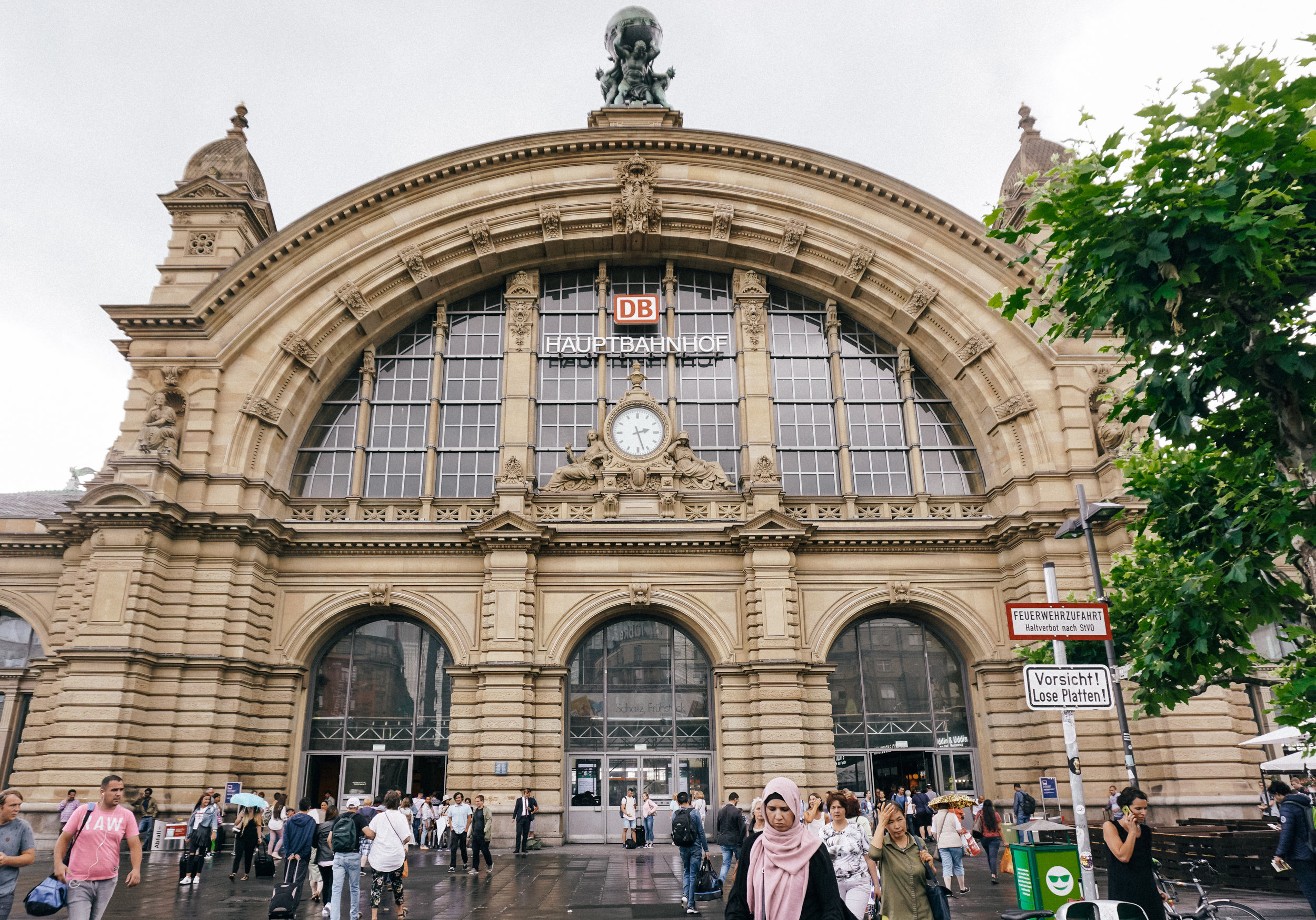
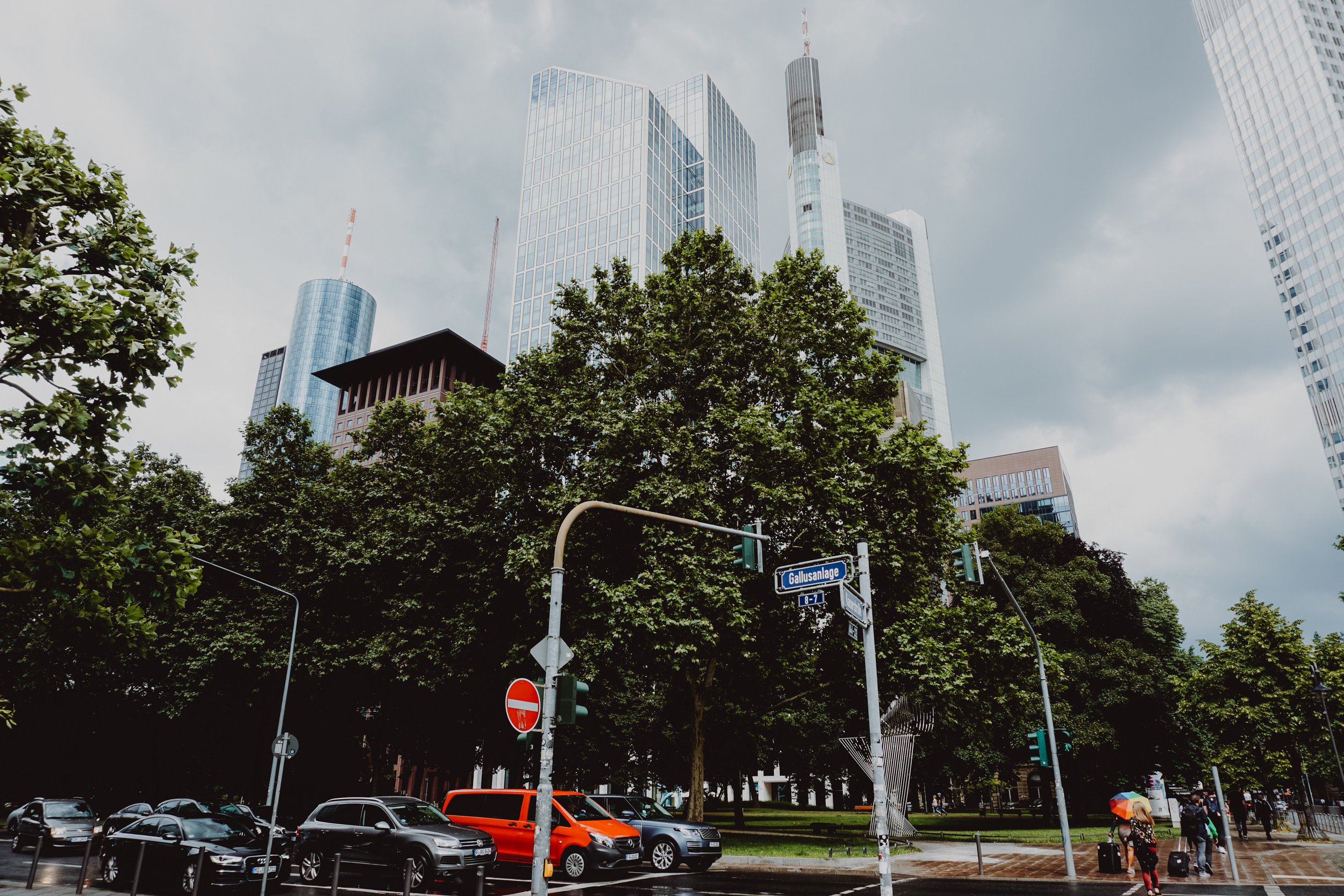
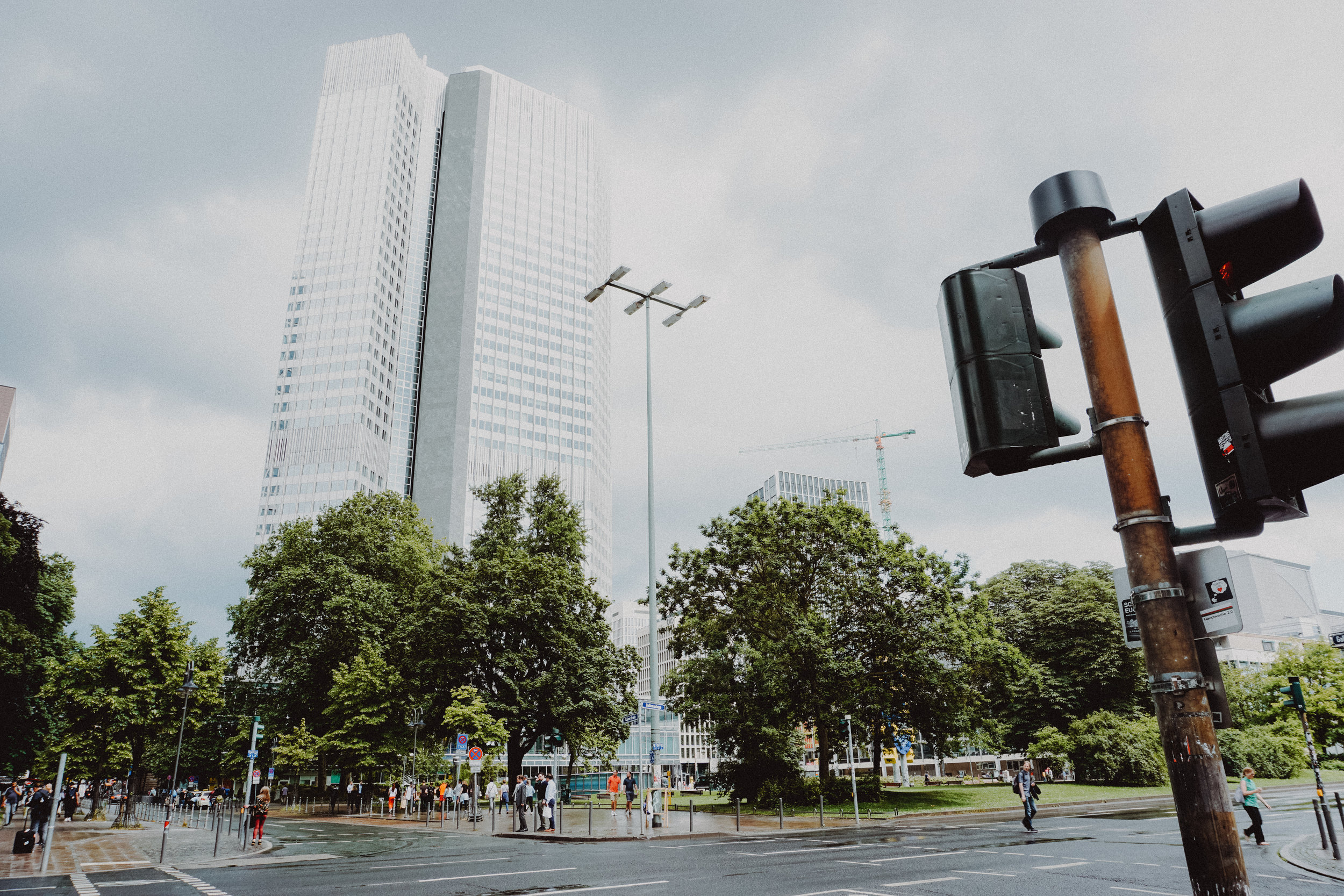
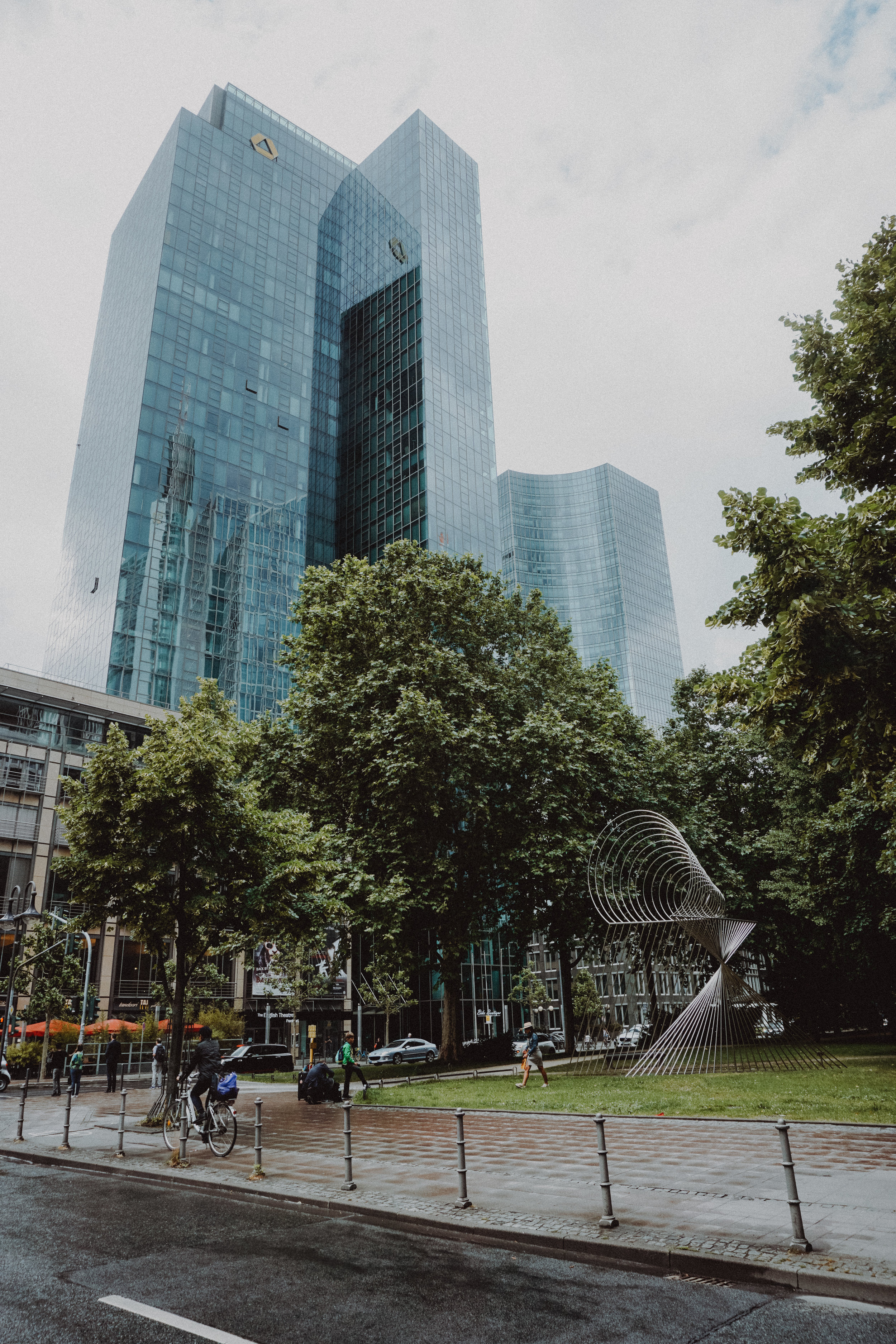
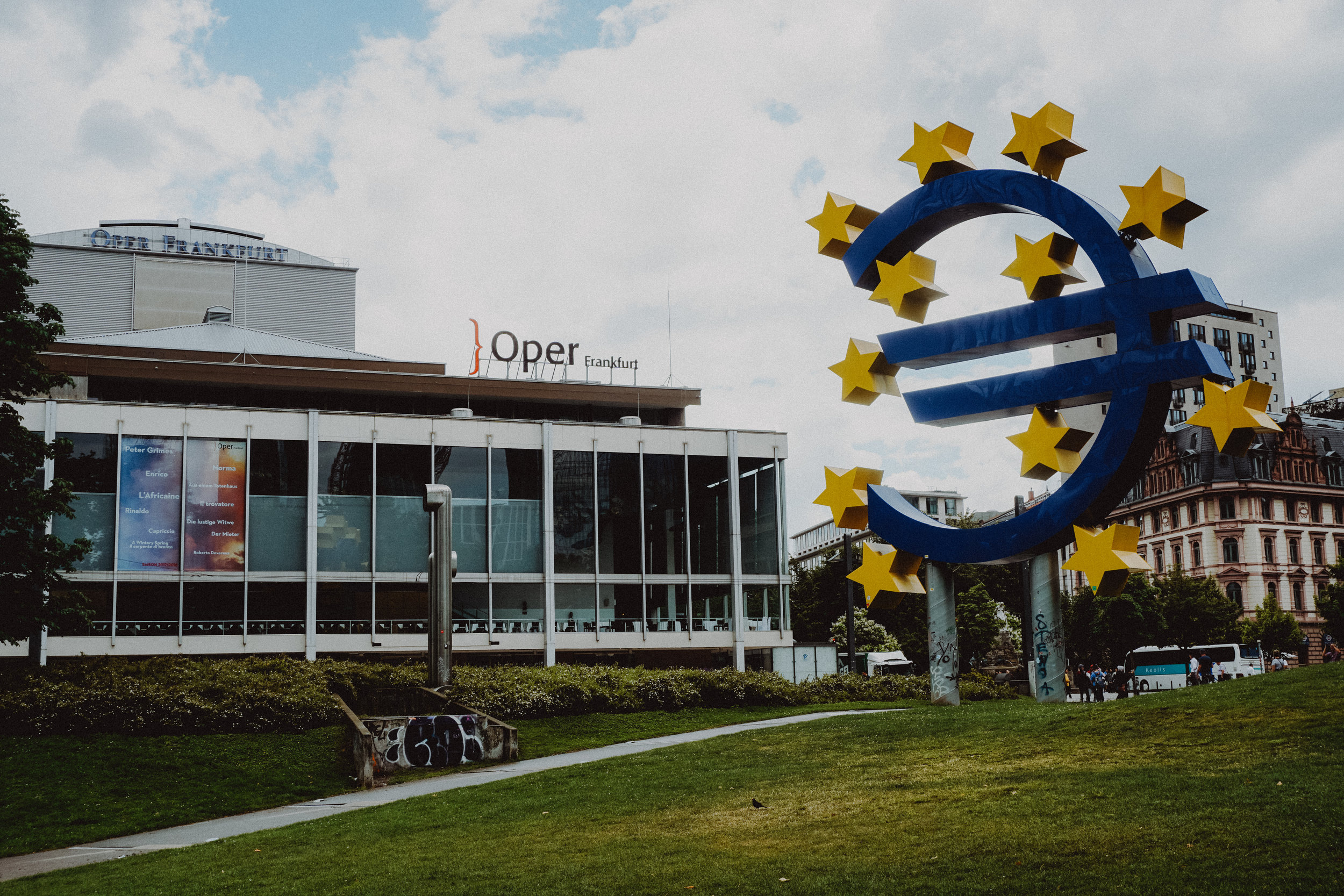
Lunch Spot / German Beer Hall:
There were a ton of cute cafes in Frankfurt, but as mentioned above, if I'm in Germany for a short period of time, I want beer and Wienerschnitzel, so a beer hall is where I'm going. A quick Google Maps search led us to Klosterhof. It was about a 10 minute walk from the Hauptbahnhof -- be prepared to go through some interesting parts of the city to get there. It wasn't unsafe or sketchy, just a bit "adult" if you catch my drift.
Klosterhof is a little hidden, so you have to look out for it. The inside of the restaurant was all wood and quintessential German, but the beer garden is where it's at. It had been raining, but there were covered tables, which allowed us to sit out there. The air was humid and the temperature was high, so I ordered a Radler, which is half beer, half lemonade, and Chris ordered a house brew. Within the first few sips of our delicious and healthy* German beers, we were feeling 1000x better.
*According to Schloss Brauhaus in Schwangau, Germany, beer has all your daily vitamins and is a nutritious beverage.
The menu boasted German classics, which meant Wienerschnitzel for me and Schläger Chorherrenschnitzel [try saying that one 5x as fast as you can] for Chris. Unfortunately, the Wienerschnitzel was a bit of a let down -- maybe they do it better in Bavaria considering its proximity to Austria, but Chris' meal was dynamite. It had pork, cheese, cooked apples, bacon, and potatoes fried in butter. #drooling We still had beer to drink, so we ordered a homemade apple pie for dessert that was heavenly.
We had a few issues paying for our meal at the restaurant with our cards. Nothing was working and the ATM down the street wasn't working, so we were in a bit of a bind. We had used our credit card earlier in the day and our debit card should have been working, so what on earth was going on?! We called Chase, we called our Irish bank, we tried everything. Cue Sara meltdown. The restaurant let us walk away, which was nice since we didn't have to spend our layover washing dishes, but unsettling because we felt uneasy about our cards not working and not being able to pay for our meal. We decided to press on and explore the city and would try any and all ATMs along the way. Long story short, we ended up finding a Deutsche Bank ATM which worked no problem, got our cash, and walked back to the restaurant to pay our tab. Phew! What a relief.
Pro tip: always have cash just in case.
Things to Do in Frankfurt:
Seriously how great is the Internet? With one Google search, we had a list of things to do and see in Frankfurt in a matter of seconds. Once our money sitch was handled, we had about 3 hours to explore, which turned out to be plenty of time.
1) Römerberg -- a picture-perfect square dating back to the 15th century, it has been the site of the city's government since that time. The square used to host markets, fairs, tournaments, festivals, executions, and imperial elections and coronations. It is as German as German gets and oozes charm.
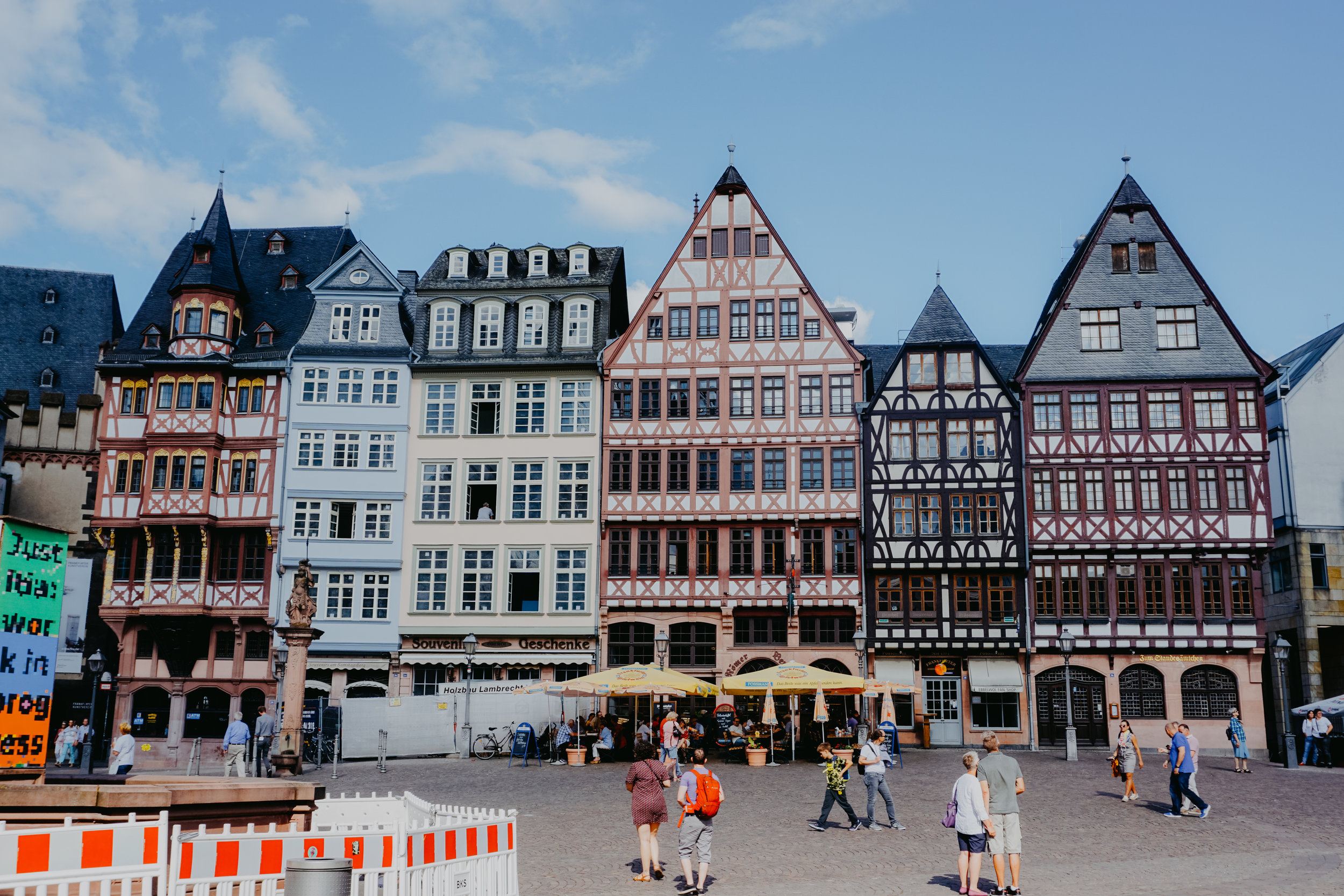
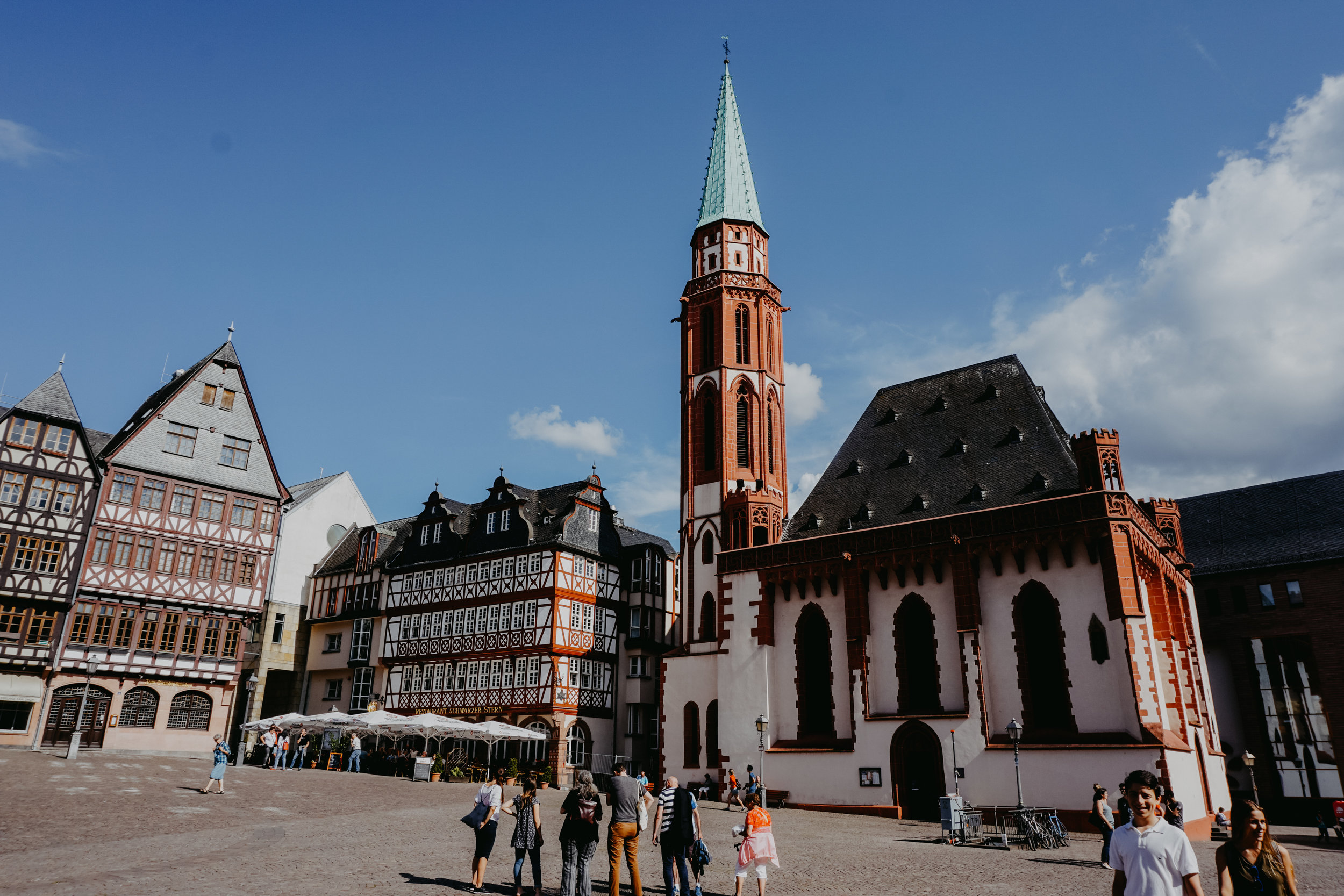
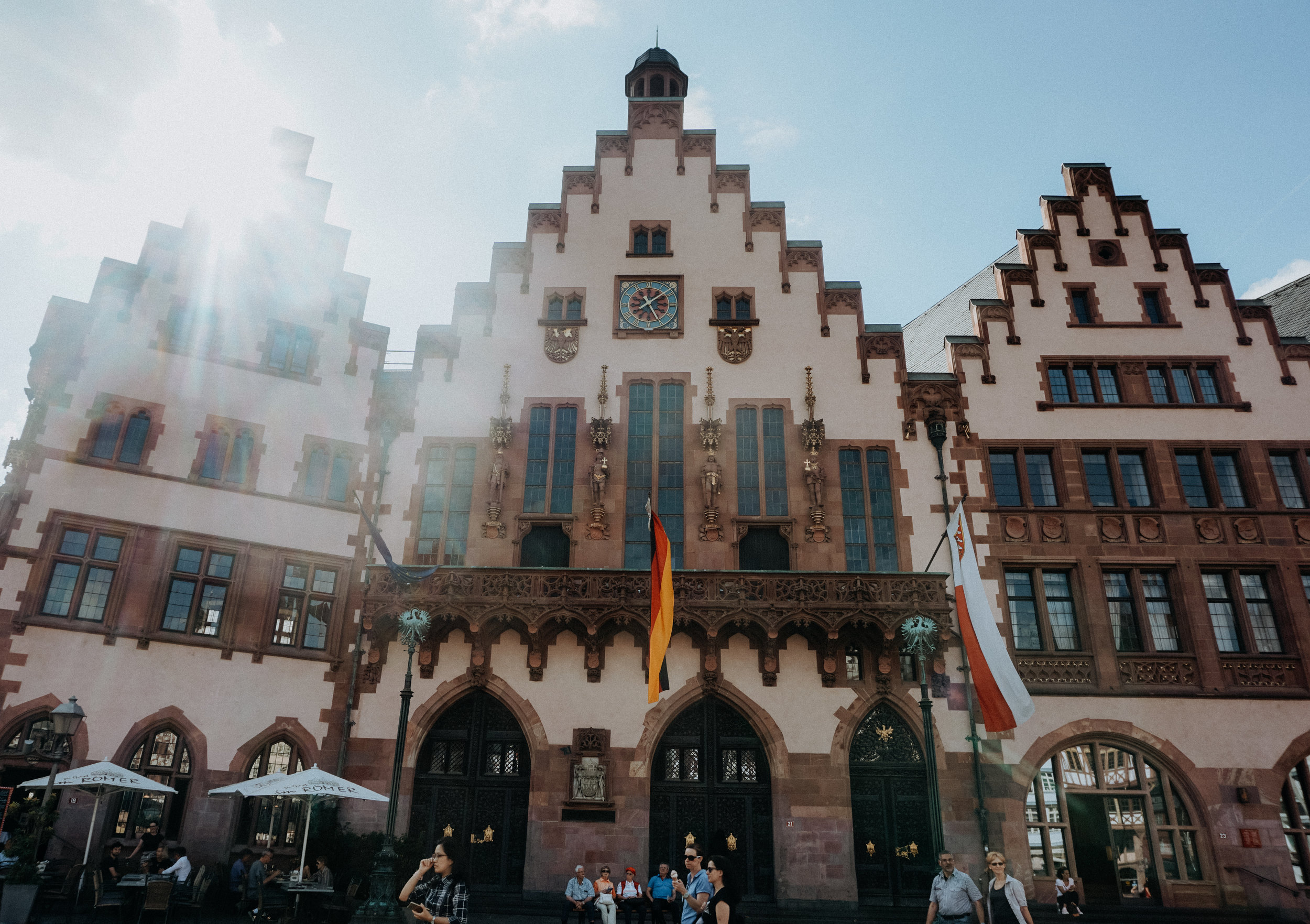
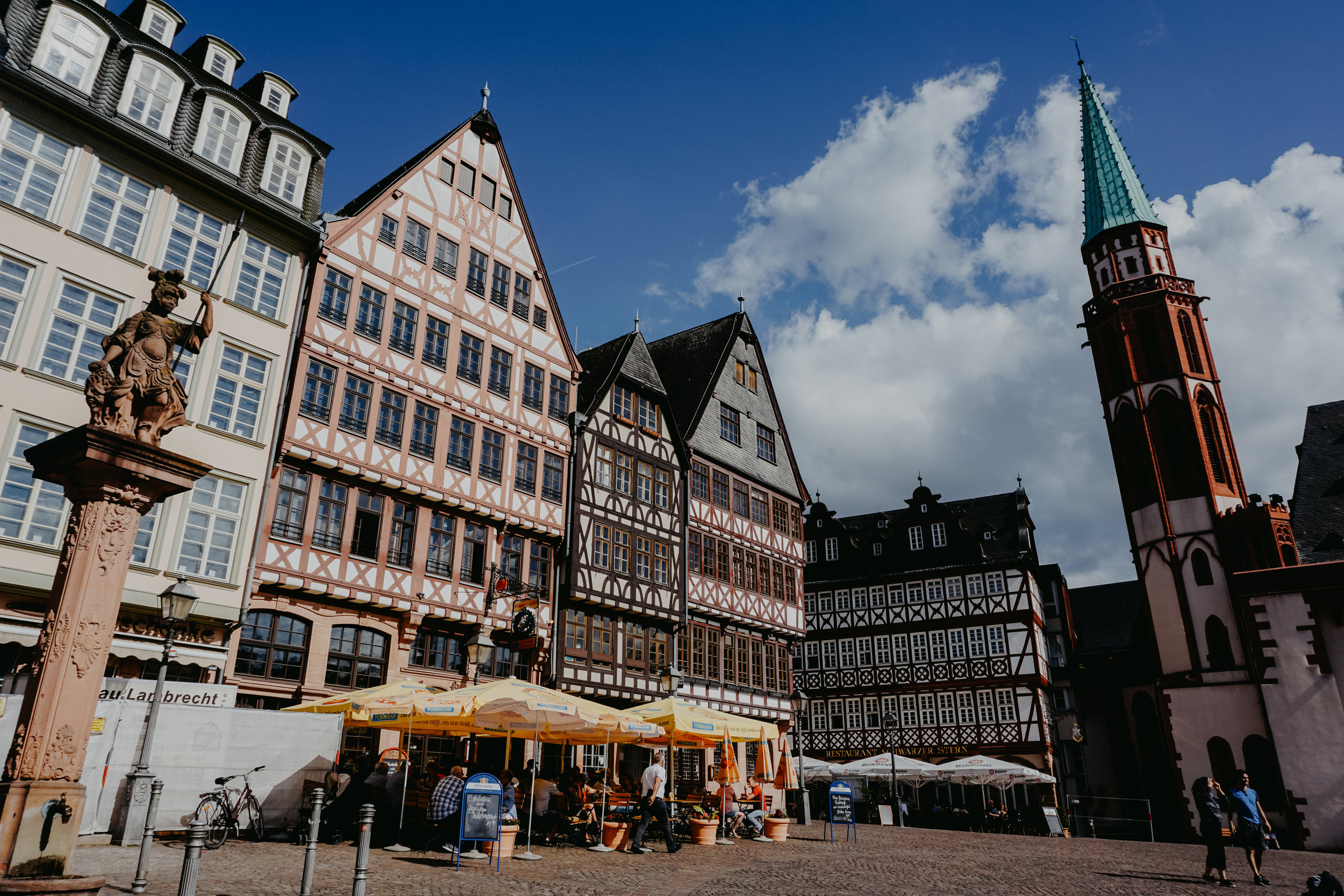
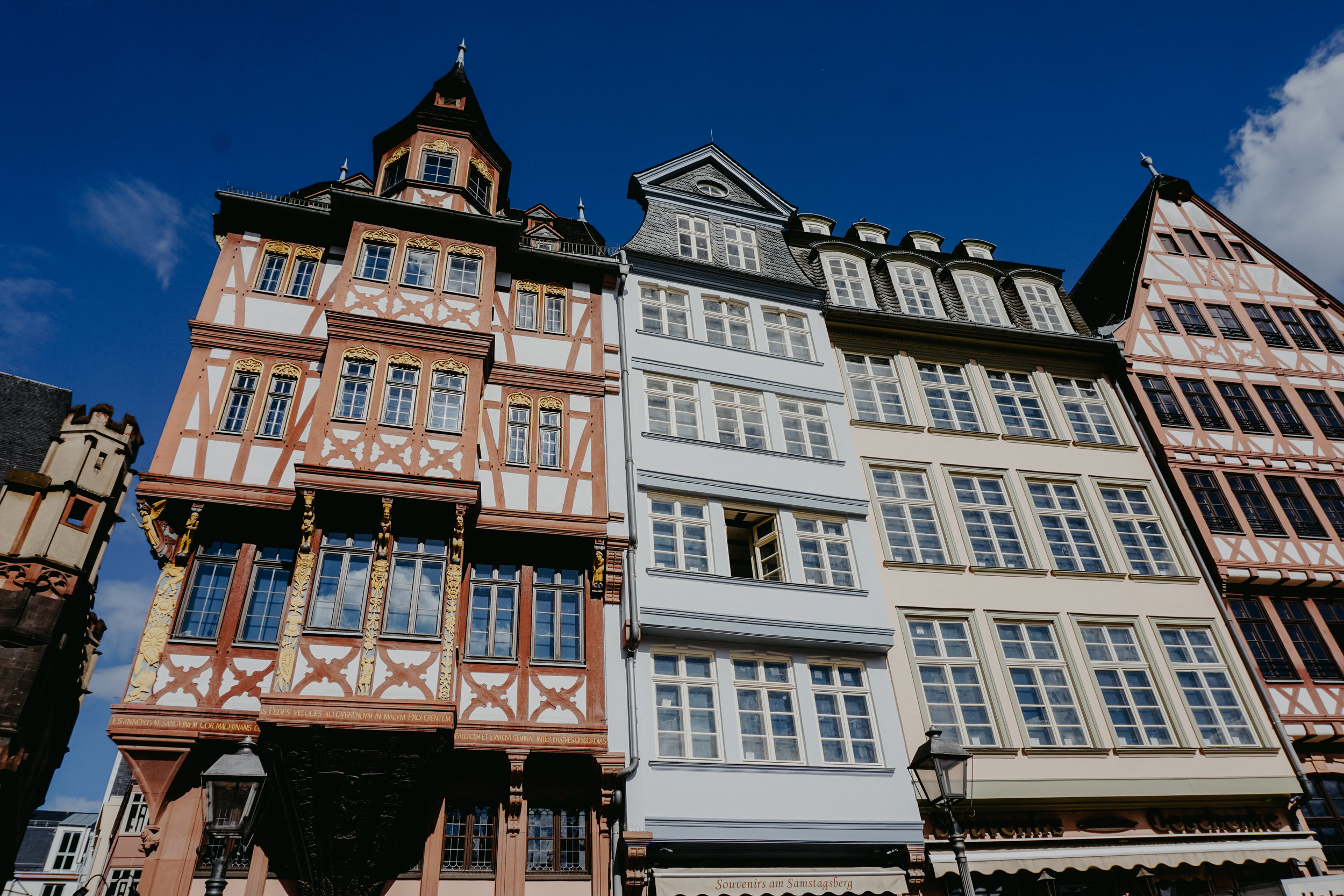
2) Frankfurt Cathedral -- located right behind Römerberg is the towering Imperial Cathedral of Saint Bartholomew. It is a Roman Catholic Gothic church that opened in 1550. The walk to the church takes you through a bunch of other amazing buildings, so make sure to stop and appreciate the surroundings. The inside of the church is red brick, which is not something I think I've seen before. This is worth the quick visit.
3) St. Paul's Church -- this evangelical church was first consecrated in 1833. It has served as more than just a church, hosting meetings for the first all-German Parliament. The church was completely destroyed during WWII, but rebuilt by 1948 and is a significant place for German democracy.
4) Goethe's Birth House -- the birthplace of one of the greatest writers in German history. This house was nearly completely destroyed during WWII, but was carefully reconstructed to its original form. We didn't have enough time to go inside, but I would have LOVED to. Having studied German extensively in college, Goethe's work was a staple in our classes. His literary works are beautiful. We snapped a shot of the house and again, the positioning of an old home with a giant skyscraper shining above created a cool shot.
5) Goetheplatz -- a city square that is a gateway to Frankfurt's shopping district, skyscrapers, and Römerberg. It is a central meeting point. This is where we were able to find the Deutsche Bank to get cash and where our moods took an upswing. It's a bustling area and offers fun views of the city.
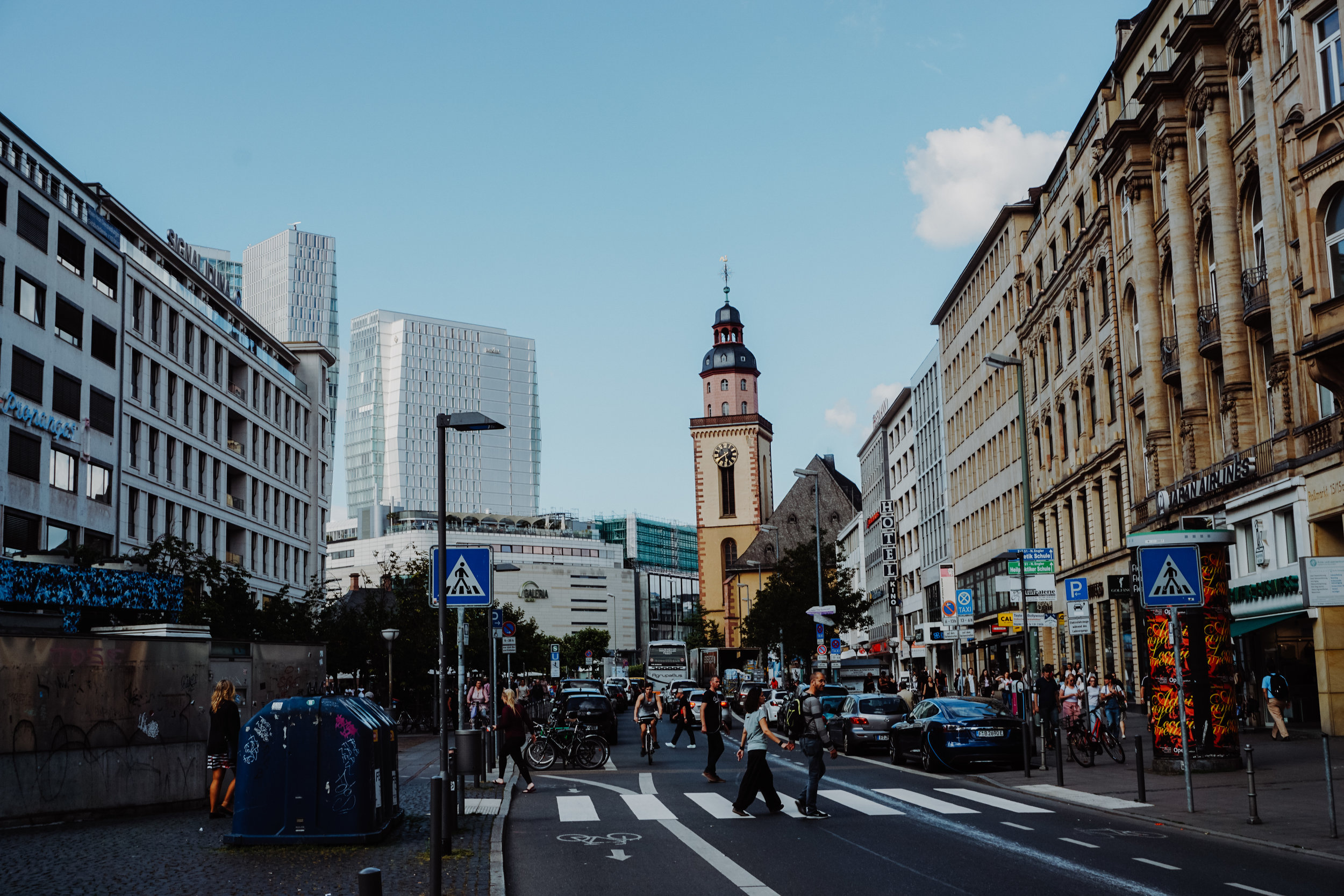

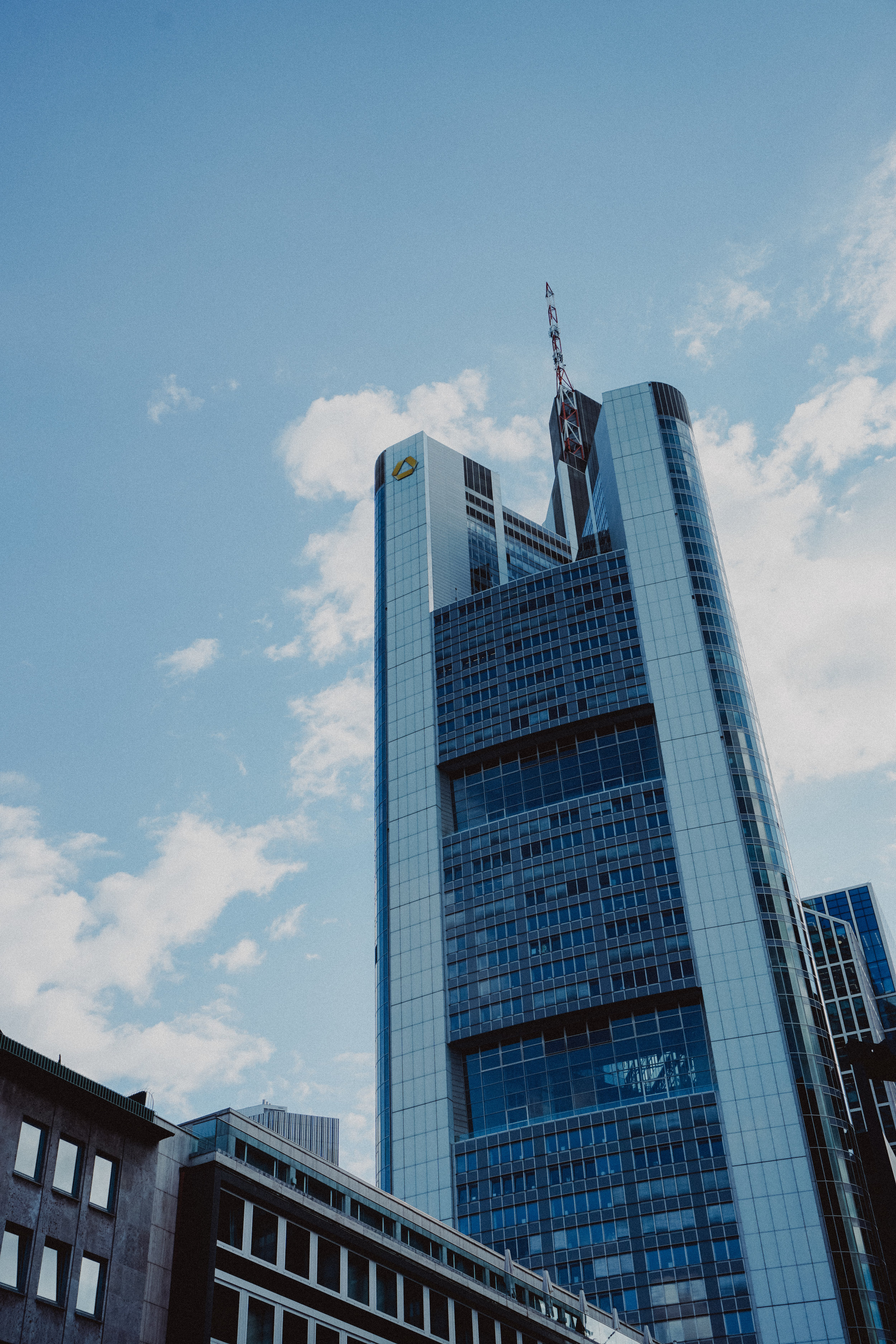
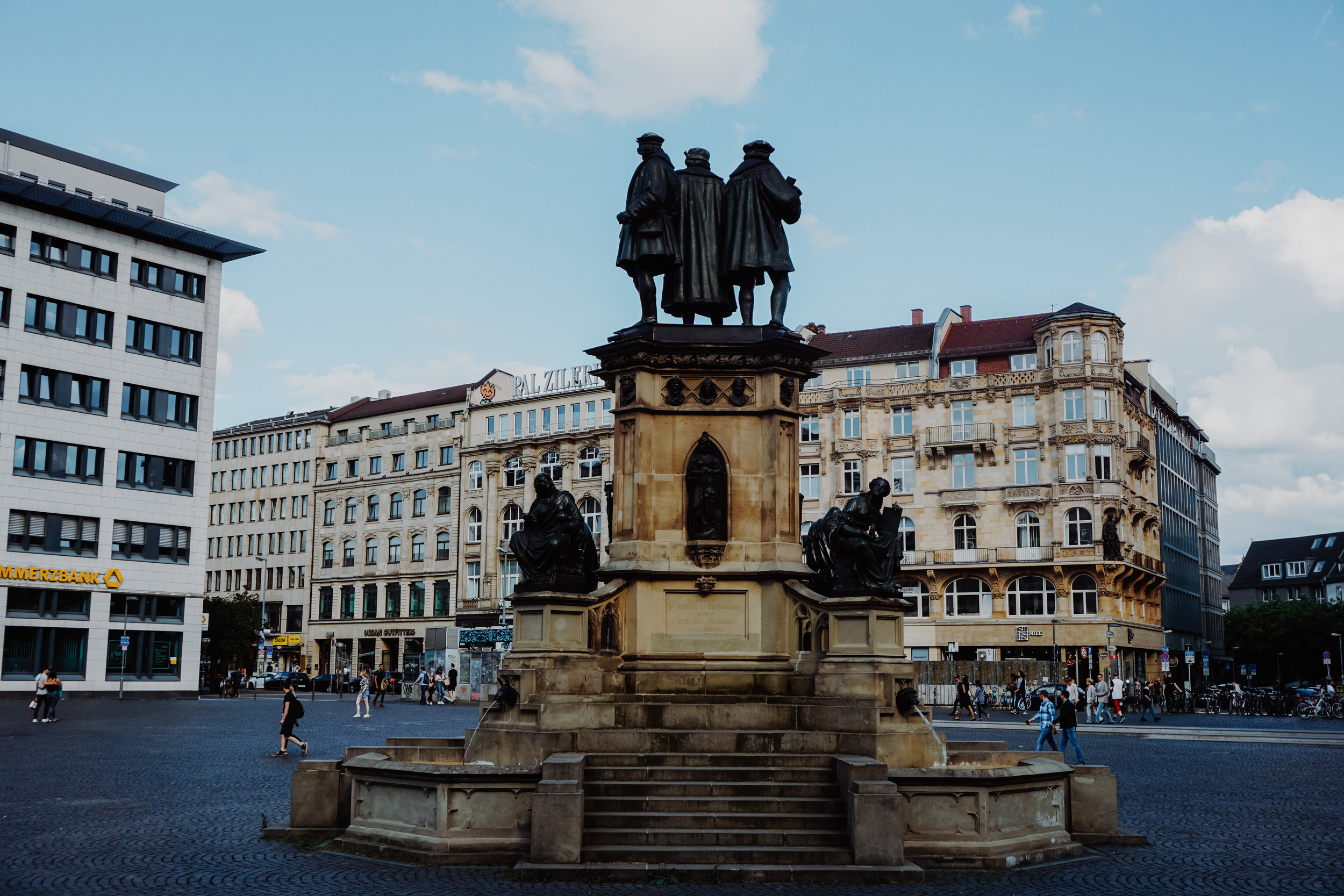
6) Main Tower Observation Deck -- this is a must do if you find yourself in Frankfurt. The Main Tower is one of Frankfurt's many skyscrapers and has an observation deck 200 m / 54 stories high. Luckily, there is an elevator to get you most of the way. :) The main observation deck is open-air and was very windy the day we were there! That afternoon, the rain disappeared and we had clear, sunny skies, so we were able to see as far as our eyes could see. It was so fun to look down and see where we had all been that afternoon and appreciate how green the surrounding areas are. There was no line when we went in the afternoon, so it made for a quick trip to the top. Tickets were only €7,50 per person.
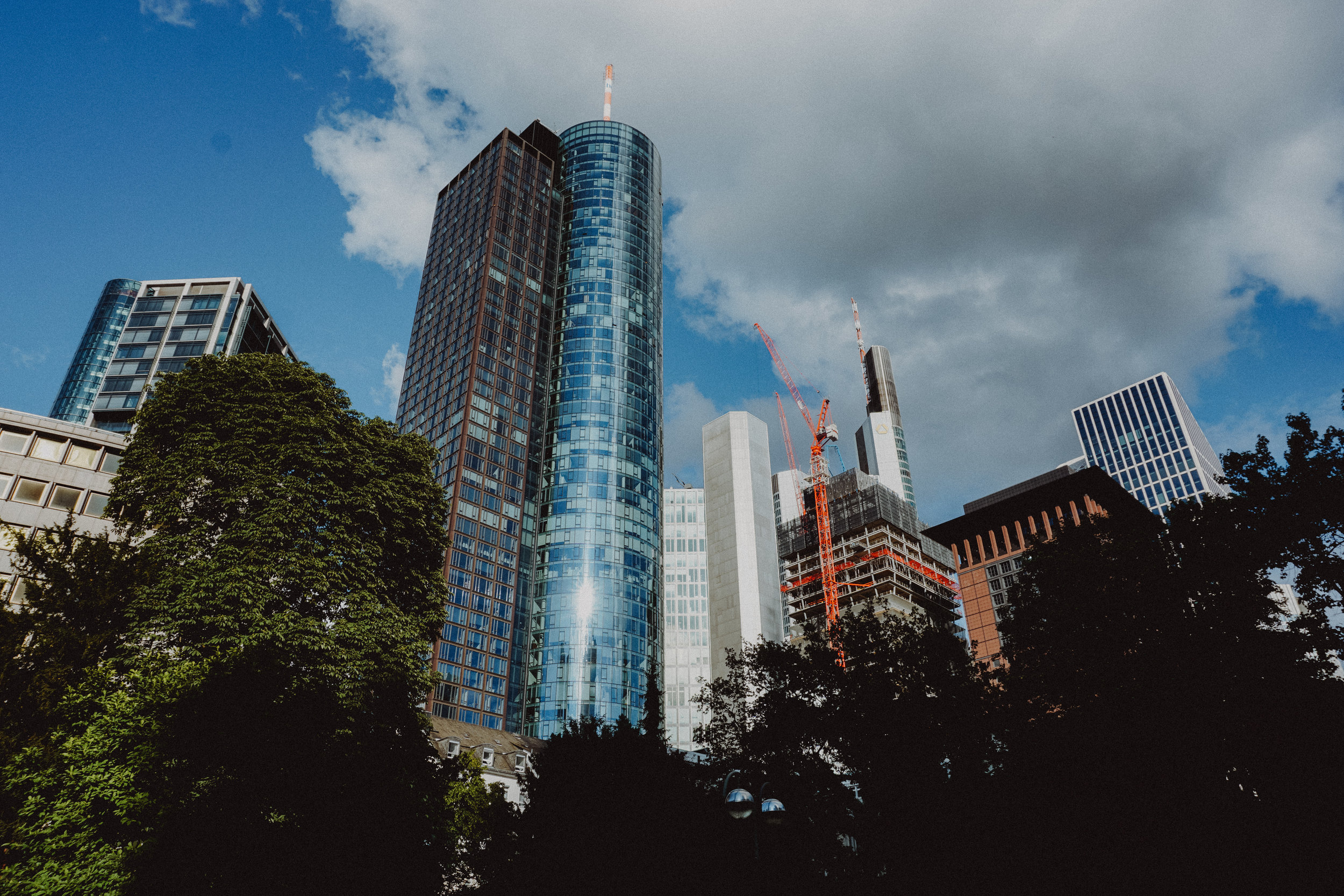
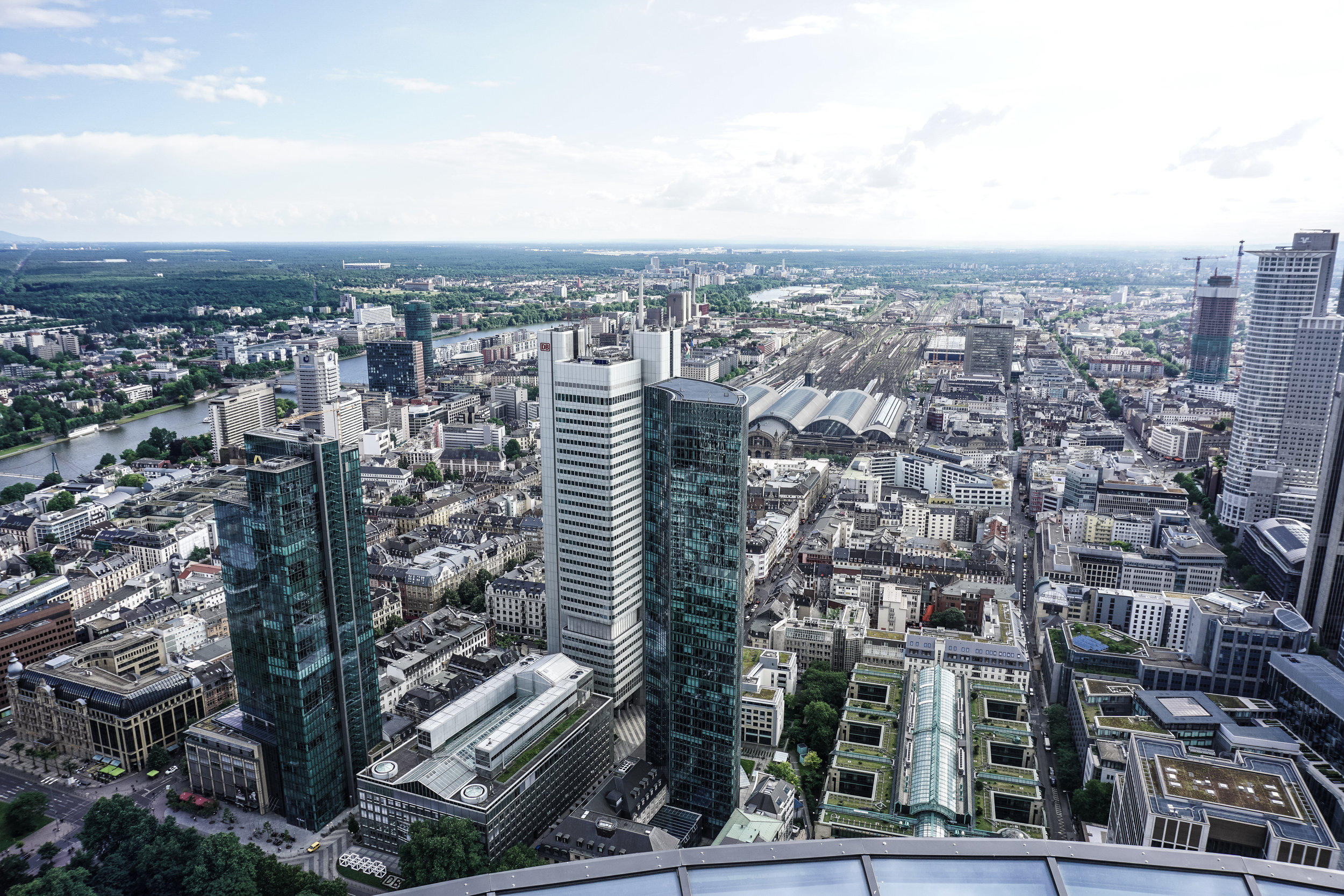
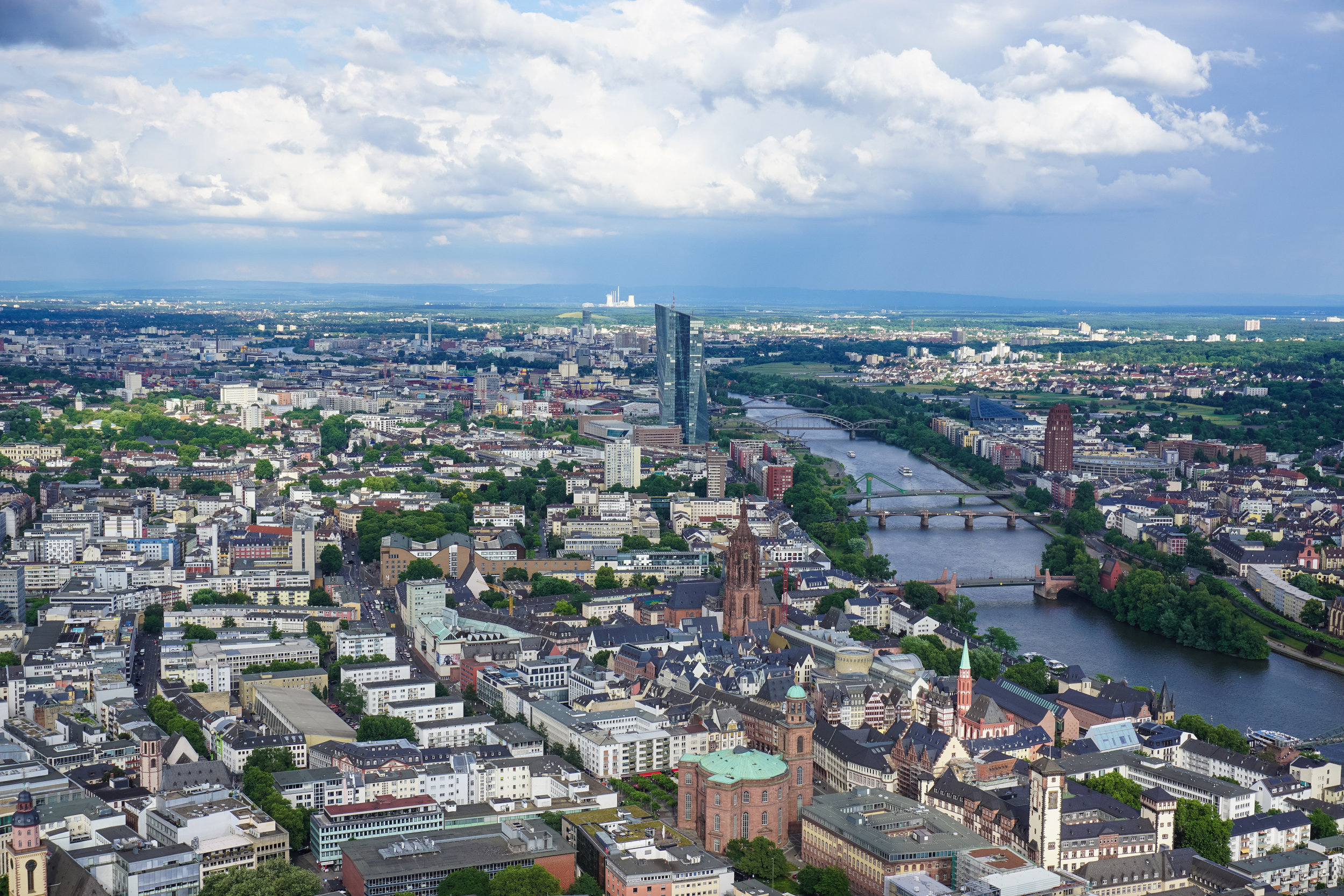
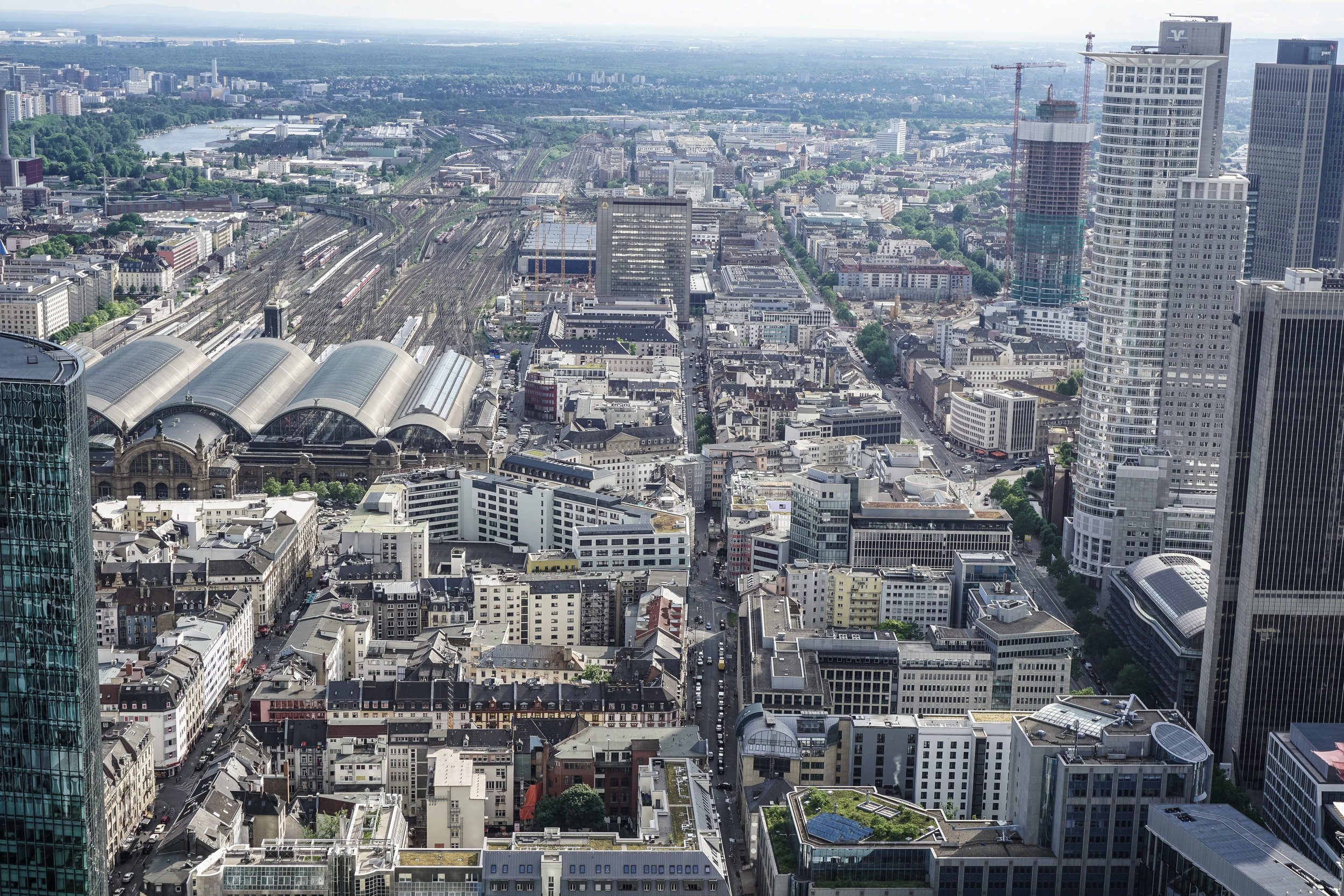
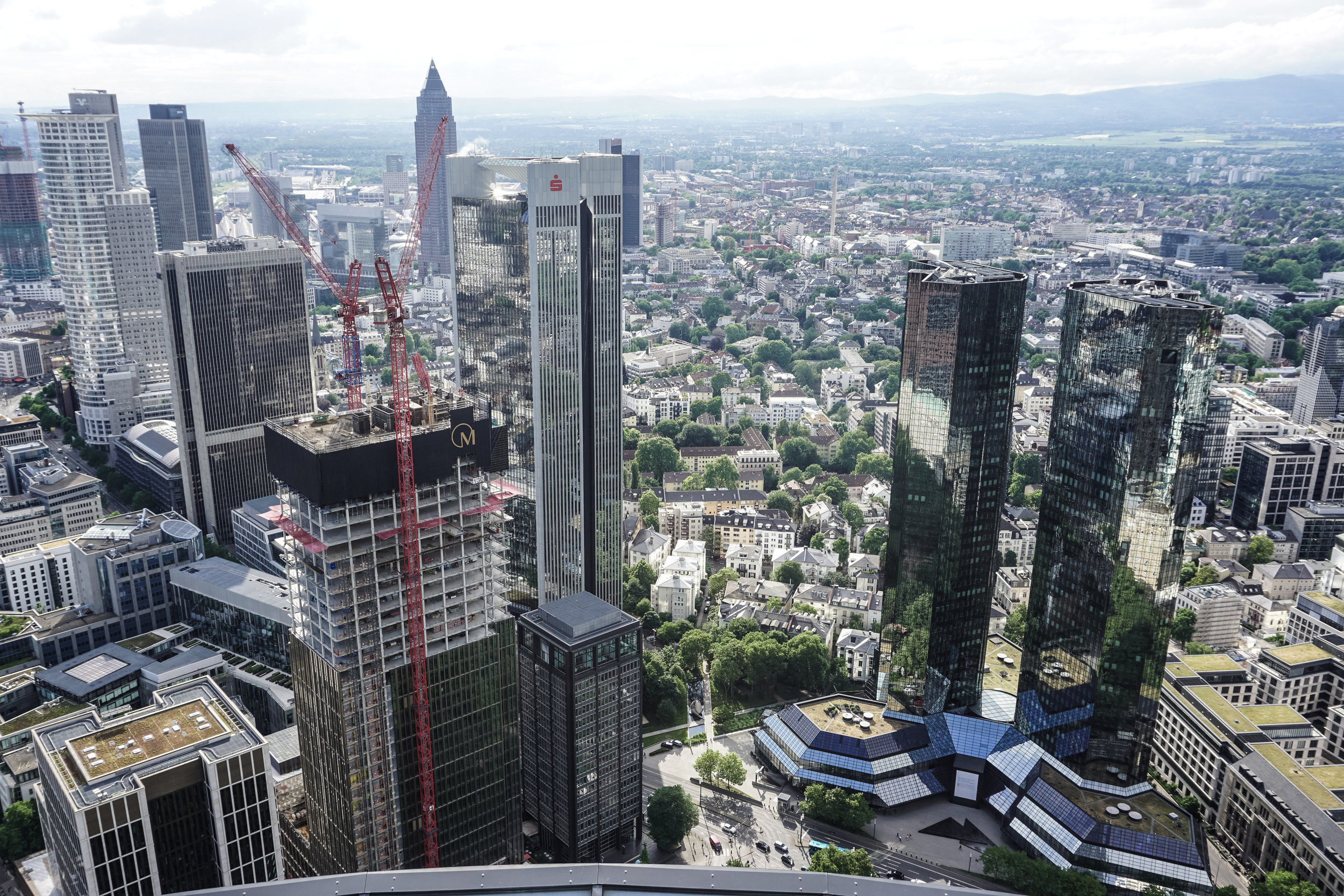
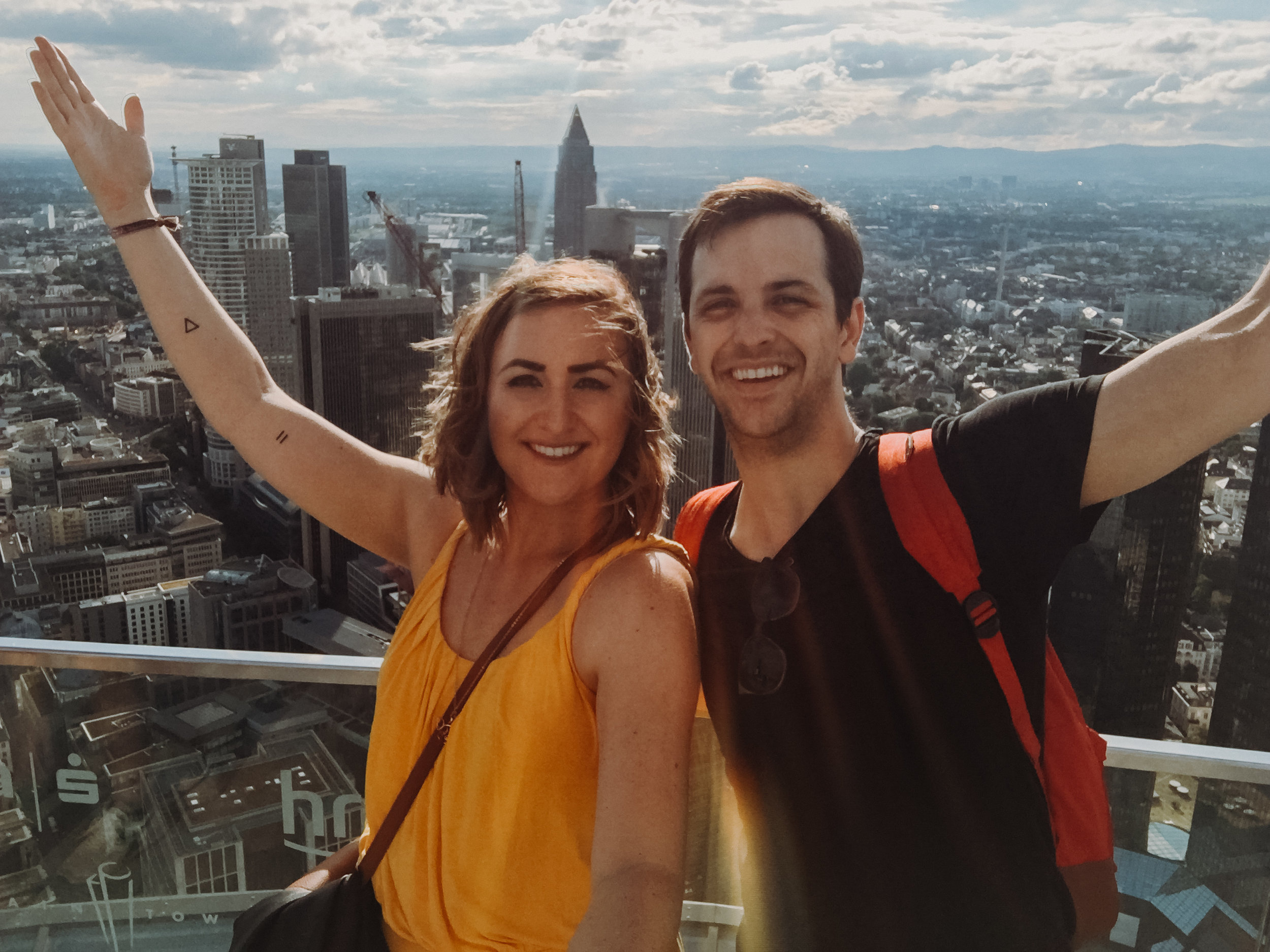
7) Die Alte Oper / Old Opera House -- right around the corner from the Main Tower is Frankfurt's Old Opera House. This stunning building was first constructed in 1880, but like much of Frankfurt, was destroyed during WWII. It took 40 years to rebuild the opera house, which now hosts balls and international congressions.
Seeing the Old Opera House completed our day tour of Frankfurt as we had to make our way back to the train station. We were able to walk through city parks the entire way and enjoyed our last few minutes in the city. We took the S-Bahn back to the airport, grabbed our luggage, and went to relax in the airport's priority lounge until it was time to board.
It had been a long day with some trying times, but we made the most of our situation and are so glad we ventured into the city. Frankfurt is the only skyline you'll see in Germany and when you get down to ground level, you get to see how cool of a city it truly is. We love any time we get to spend in Germany and are grateful we got to see a new city there. Vielen Dank Frankfurt!
Now for what we all came for, our Turkish adventure...
ISTANBUL, TURKEY
Byzantium. Constantinople. Istanbul. Where the East meets the West. Once ruled by the Greeks, then the Romans, and conquered by the Ottomans, Istanbul is a city with thousands of years of history. It is the only city that spans two continents: Europe and Asia. There is a completely different vibe and atmosphere in Istanbul compared to the likes of Copenhagen, Munich, and Vienna. I know, you're probably saying, "well duh, Sara", but so many articles had talked about how you can see the European influences and Asian influences. And yes, on the European side, there were some touches of Europe, but Istanbul is its own flavor. It is a massive city, bustling with people and traffic [officially 15 million; unrecorded more like 20 million], and yet has the charm of an old world.
Travel Visas:
First things first, when planning your trip to Turkey, make sure to visit the Republic of Turkey's Ministry of Foreign Affairs website page to see if you need a visa to enter the country. If you're from the United States like we are, Turkey requires a visa to enter its borders. If you're like me and realized this only days before departure, no stress is needed. Turkey has an e-visa service that allows you to apply online and it takes one business day to get approval. If you're in a total panic, you can pay a little more money to have it expedited to two hours, or as short as 15 minutes. The cost of the visa was $20, but with administrative fees, it comes out to about $40 per person. You also get the option to add notifying the US Embassy in Turkey of your travel dates for $10 per person. We elected notifying our embassy because better safe than sorry, right? Plus, it made the Moms feel better. :)
Accommodations:
One of the biggest components of traveling is figuring out where to stay. The first piece is to figure out the best neighborhoods to stay in. If possible, we like to stay within walking distance of sites. With a place as big as Istanbul, it can be difficult to decide where to stay. My recommendation is to stay near Taksim Square, or near the Galata Tower, or in the Old City on the European side. You can't go wrong with any of these neighborhoods.
We stayed near Taksim Square in the most beautiful Airbnb. It was an entire apartment with exposed brick, stunning tile work, and the most amazing velvet couch. Check out pictures of it here. Our location was on the cutest street and we were about a 5-minute walk to Istanbul's best shopping street. To get to the Galata Tower was probably a 20-minute walk and to get to the Old City was about a 45-minute walk. If we ever go back, I would probably stay closer to the Galata Tower since it seems like a more central location. I think we paid $85 per night, but there are tons of cheap, incredible Airbnbs listed for Istanbul, so I would highly recommend looking into that! If you go the hotel route, I suggest looking into 5-star options.
Private Tour Guide:
For whatever reason, Chris and I hadn't done a whole ton of research before heading to Istanbul, so we bought a pocketguide book at the airport and did some online research while we waited for our flight. I had previously read about how great the private tours are in Istanbul, so Chris did a little digging and found a company called Guided Istanbul Tours. For $150 per day + entrance fees + transportation fees, you can get a private tour guided by a Turkish local who has a degree in tourism. You have the option of doing 1, 2, or 3 days, and we chose the 2-day tour. Each day has a set itinerary that lasts 7 hours. We chose to do the private tour on Saturday and Sunday, our first two days in the city, in order to see as much as possible upfront and get a lay of the land before exploring our last couple days on our own.
Our guide's name was Özgür and he was wonderful. He is from Bursa, Turkey, but has lived in Istanbul for over 10 years. He has a degree in tourism, but was studying to become a pilot for Turkish Airlines. His wife is a flight attendant for Turkish Airlines -- how cute are they? Each morning, he picked us up outside of our Airbnb to start the day. He was even accommodating and picked us up a little later than normal on Saturday morning since we hadn't gotten much sleep due to our late flight into Istanbul.
Özgür arranged all of our taxis and transportation, which will be important to remember later on, and was our expert on all things Istanbul. On the way to our different destinations, we were able to ask questions and learn about Turkey, the Islamic religion, etc. Seeing as this was our first time in a country that had a predominantly Muslim population and it was the furthest East we had been, we had a lot of questions and things to learn. Further down in my post is a section on the interesting bits of information we learned from our two days with Özgür.
Our 2-Day Itinerary Looked Like This:
Day 1:
- Hippodrome
- Blue Mosque / Sultanahmet Camii
- Hagia Sophia / Ayasofya
- Basilica Cistern
- Topkapi Palace
- Grand Bazaar
- Süleymaniye Mosque
Day 2:
- Bosphorous Cruise
- Dolmabahce Palace
- Spice Bazaar / Egyptian Bazaar
- Galata Tower
- Taksim Square
Both of our days were jam-packed, but the first one was much more intensive than the second. Having Özgür as our private guide was totally worth it. We learned so much more about all of these sites than had we just done audio guides or tried to teach ourselves. He took the effort out of it all. We didn't have to read plaques, or listen to a tape, we just got to listen to him and the stories he told. We were able to ask as many questions as we wanted with no pressure since we weren't part of a group tour. We didn't even have to get our own tickets. With his official tour guide badge, we were able to skip all the lines, which was a huge bonus. Plus, he was able to be our photographer for the two days. :) For all of these reasons and more, I highly suggest paying for a private guided tour of Istanbul. We don't regret it for one second.
Ramadan:
We traveled to Istanbul during Ramadan, the month in which Muslims fast to commemorate the first revelation of the Koran to Muhammad. It is one of the Five Pillars of their faith and one of their highest holy seasons. I wasn't sure how this was going to affect our trip: Would stores be closed? Attractions closed? Would it be rude to eat during the day? Short answer: no, no, and no. :)
We learned that the men fast from sun up to sun down and most who fast will slow down their activities during that time. Those men who must work have the option of not fasting since they need the energy to get through the day. Özgür wasn't fasting since he was studying full time and tour guiding on the weekends, so he and his wife donated money to a family in need in their neighborhood instead.
Because the men who fast typically stay inside all day, the usually crazy busy city was actually less crowded. There was never a time that I felt like I was in a city with 20 million people. Not that we had to wait in lines for the places we visited, but those lines were shorter than usual according to Özgür. We never had to wait for anything. What was really fun to see though was how the city came to life at night. As soon as the sun is set, the Imams call out signifying the end of the daily fast and the restaurants and streets became filled. The absolute best part was that more street food vendors came out and stayed out late into the night.
There were also special markets that popped up all over the city for the month of Ramadan.
Now that I've covered some of the logistics, it's time to get down to where we went, what we saw, things we ate, goods we bought, and more. Similar to my post about Amsterdam, I'm breaking Istanbul down into categories. Enjoy!
MOSQUES
Mosques dot the entire city of Istanbul. Some are smaller, but a lot of them are massive structures. You can't miss them with their large domes and minarets [the slender towers around the corners]. They are magnificent. Each mosque has its own Imam, who is the leader of prayer for that mosque. The Imam also leads the Call to Prayer five times each day that is projected from the minarets of the mosque. I loved hearing the Call to Prayer and the different styles of each Imam.
There are cleanliness rules to enter mosques. Those going in for prayer must wash themselves using the spigots outside the main courtyard. Most wash themselves three times: once for Allah, once for the Prophet Muhammad, and once for yourself. Shoes must also be removed before walking on the carpet inside. Further, the dress code includes men wearing loose and modest clothing, women must cover their wrists, ankles, and hair. For tourists, it was bit simpler -- we had to make sure our legs were covered and I had to cover my hair. Each mosque makes this an easy task by providing skirts and scarves for those who need them.
Inside each mosque, the Imam leads prayer from the very spot that faces the direction of Mecca. The men and women have separate areas in which they pray. The men get a massive space with the beautiful carpet and the women have a small sectioned off area in the back. When we asked Özgür about that, he explained that historically, a Muslim man cannot have any physical contact with a woman who is not his wife. This can go so far as when a woman is out in the market, she pays by putting the cash on a table and the male seller puts her change on the table as well so as to not touch hands. Depending on how strict you are in your faith, some still adhere to this, but it seems like the younger generations don't. During prayer, the men stand shoulder to shoulder as an act of being close to your "brothers", so if women were to pray with the men, there would be physical contact standing shoulder to shoulder. He also explained that you are supposed to be focused and of pure thought while in prayer, so if there are women bending down and praying in front of you, your mind could become unfocused. I have thoughts on this last piece, but that's not for here, that's for over a cocktail. Özgür told us he was not strict in his faith, so it was nice to have open, honest conversation with him to understand the religion from his perspective.
We visited two functioning mosques: 1) the Blue Mosque, known as Sultanahmet Camii to locals, and 2) Süleymaniye Camii; and the Hagia Sofia, known as Ayasofya to locals, a Christian church turned mosque turned museum, which I am putting under this section since its latest function before becoming a museum was a mosque.
The Blue Mosque / Sultanahmet Camii
Many of the mosques in Istanbul were commissed by Ottoman sultans, which is commemorated in the name of each mosque. The Blue Mosque was commissed by Sultan Ahmet I, hence Sultanahmet Camii, with camii [pronounced jah-me] meaning mosque in Turkish. Only tourists call it the Blue Mosque, which comes from the 20,000+ blue İznik tiles that line the mosque's interior walls. Fun fact: the tile makers had so much pressure on them to complete the Sultan's order that the Sultan had to ban anyone else from ordering tiles until his was complete.
The mosque took seven years to build and was completed in 1616 and sits opposite of the Ayasofya. There are separate entrances for visitors, which is where we got my head scarf and Chris his skirt. The first thing you see when you walk in is the courtyard, which is made of marble from the island of Marmara. The second thing you notice is the large dome surrounded by semidome and the six minarets. There is a funny story behind the six minarets. Legend has it that Sultan Ahmet I asked for minarets capped with altin, which means gold, but the architect heard alti, which means six. Lucky for the architect, the Sultan was happy with the result of six minarets since it was the only mosque to have six apart from the Great Mosque in Mecca. According to Özgür, there was backlash about the Blue Mosque having six minarets, so the Sultan sent money to Mecca to have a seventh minaret added to the Great Mosque.
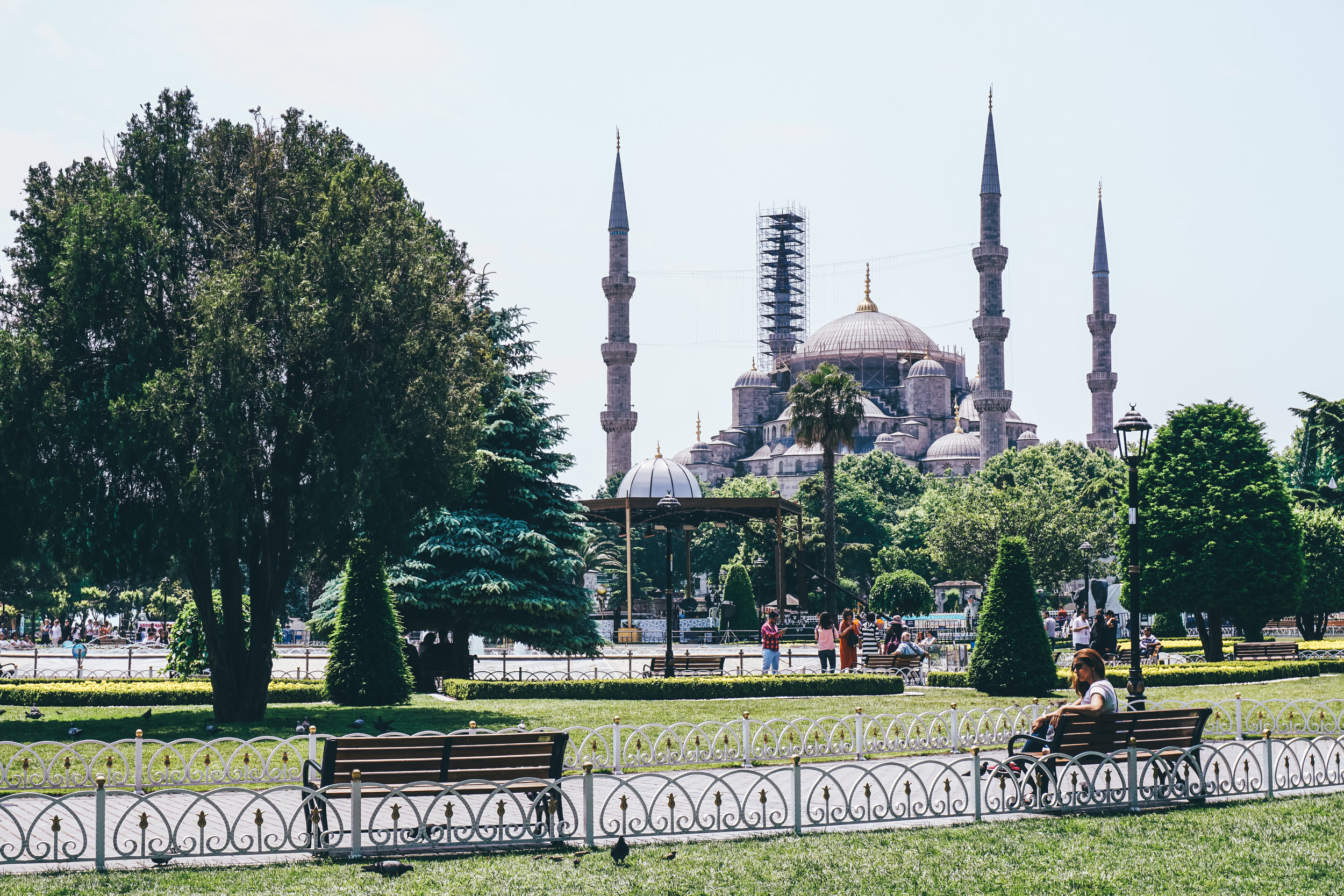
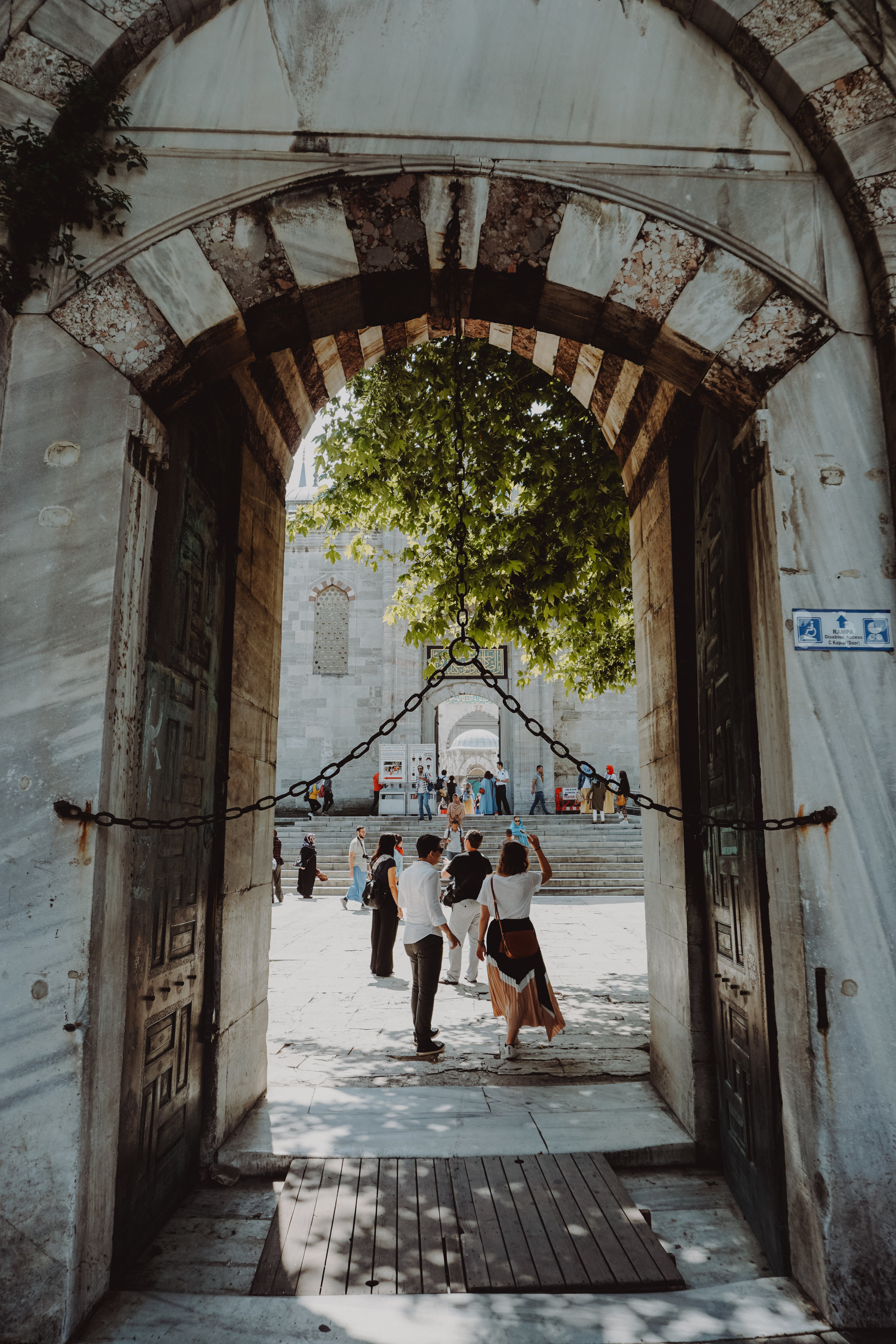
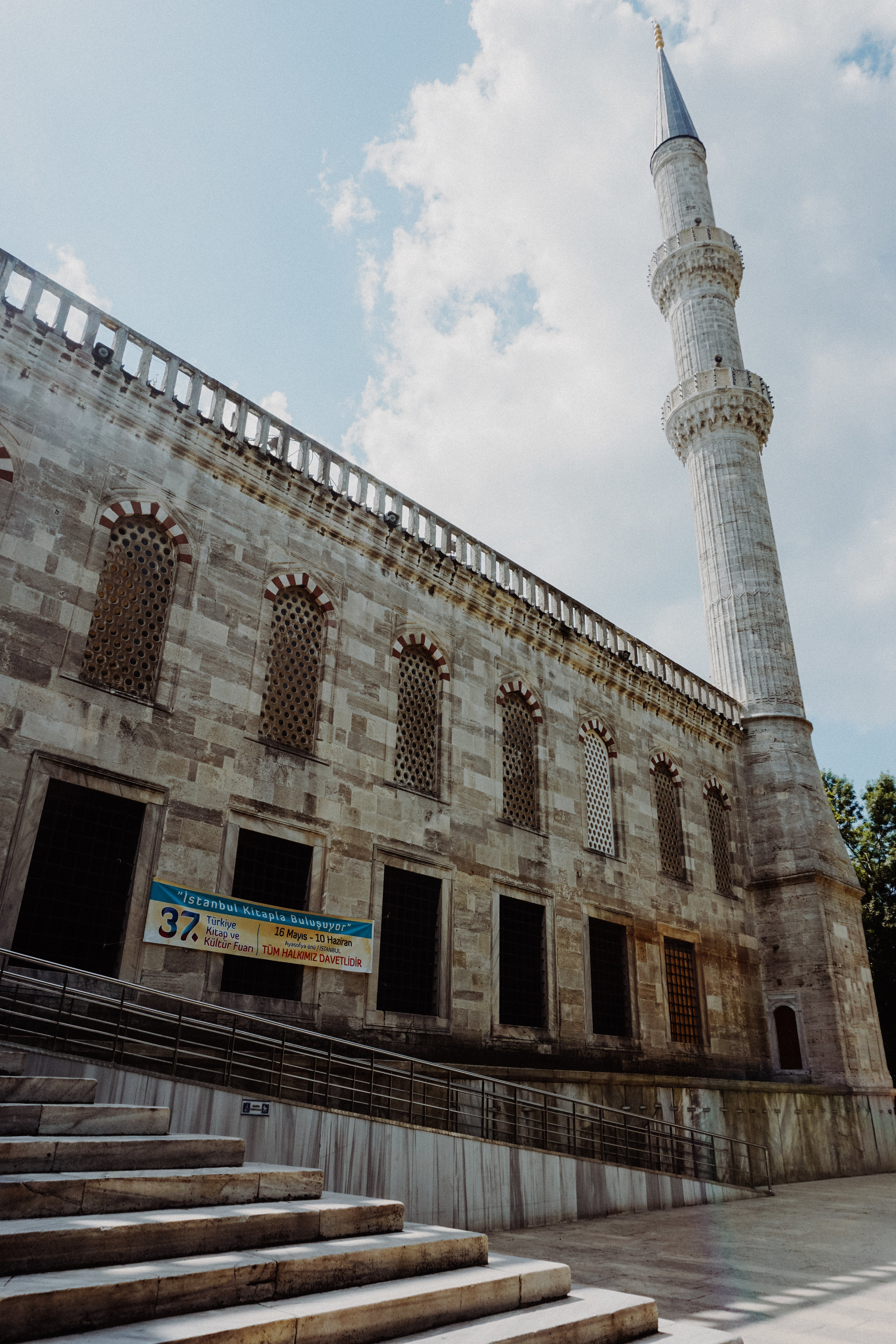
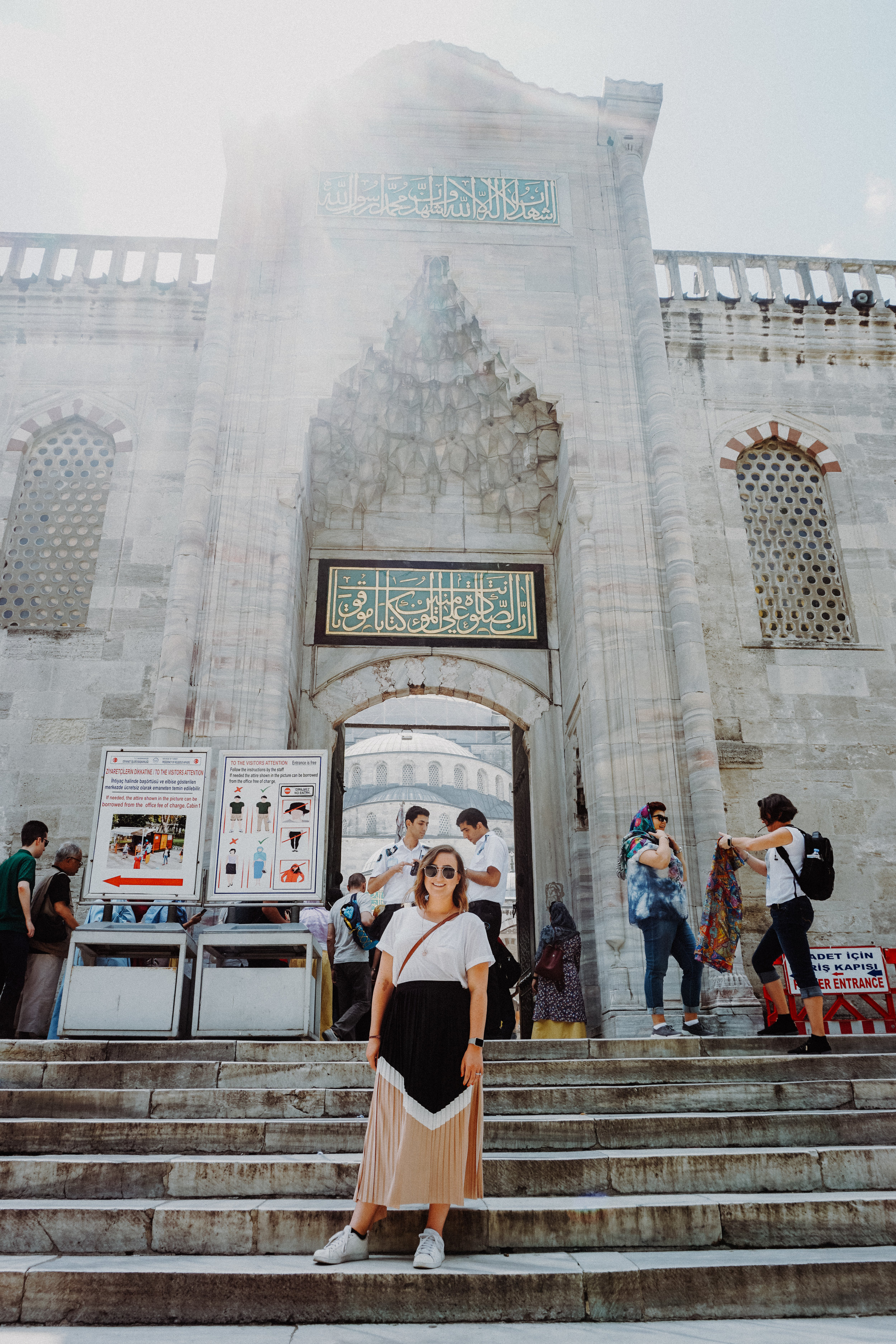
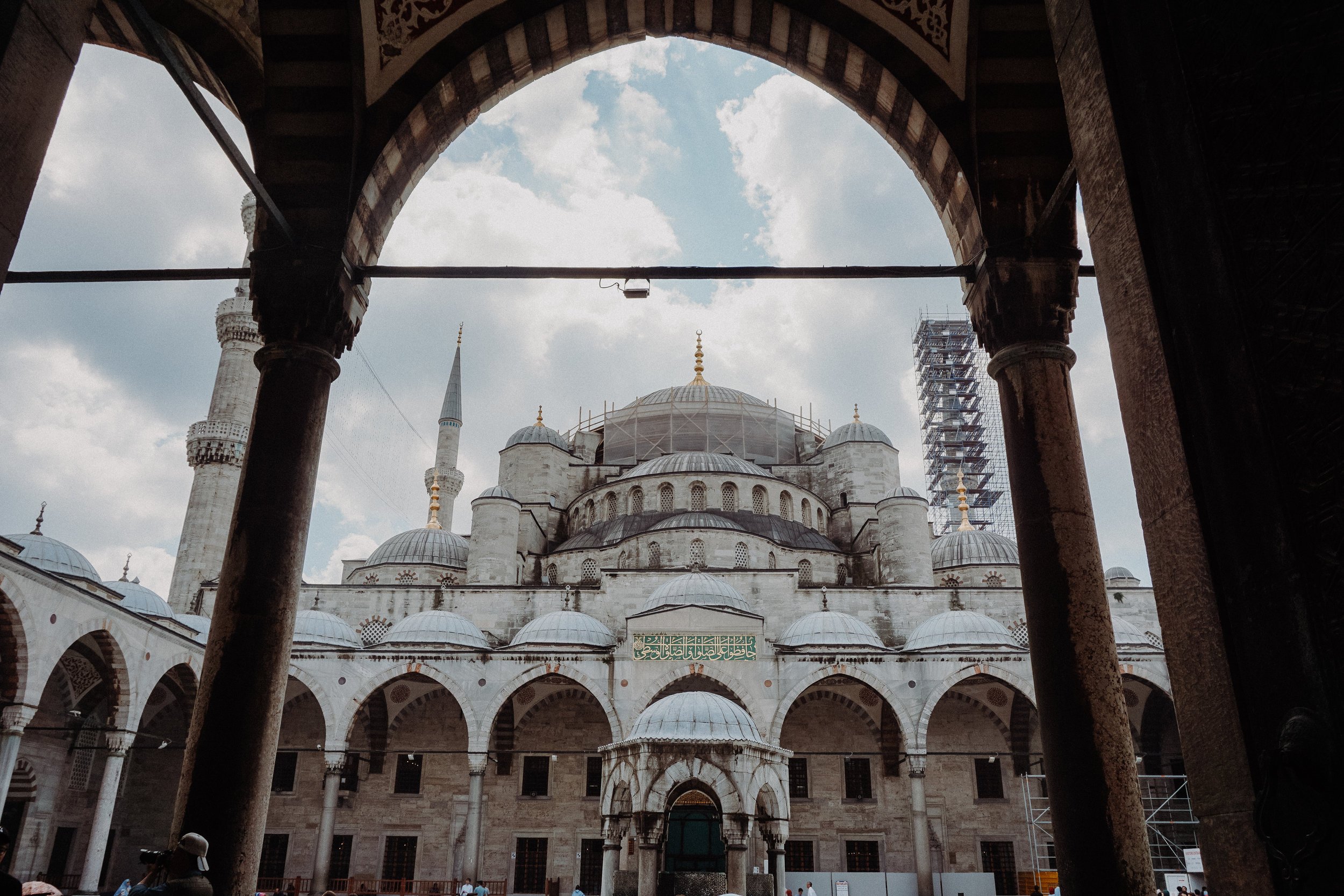
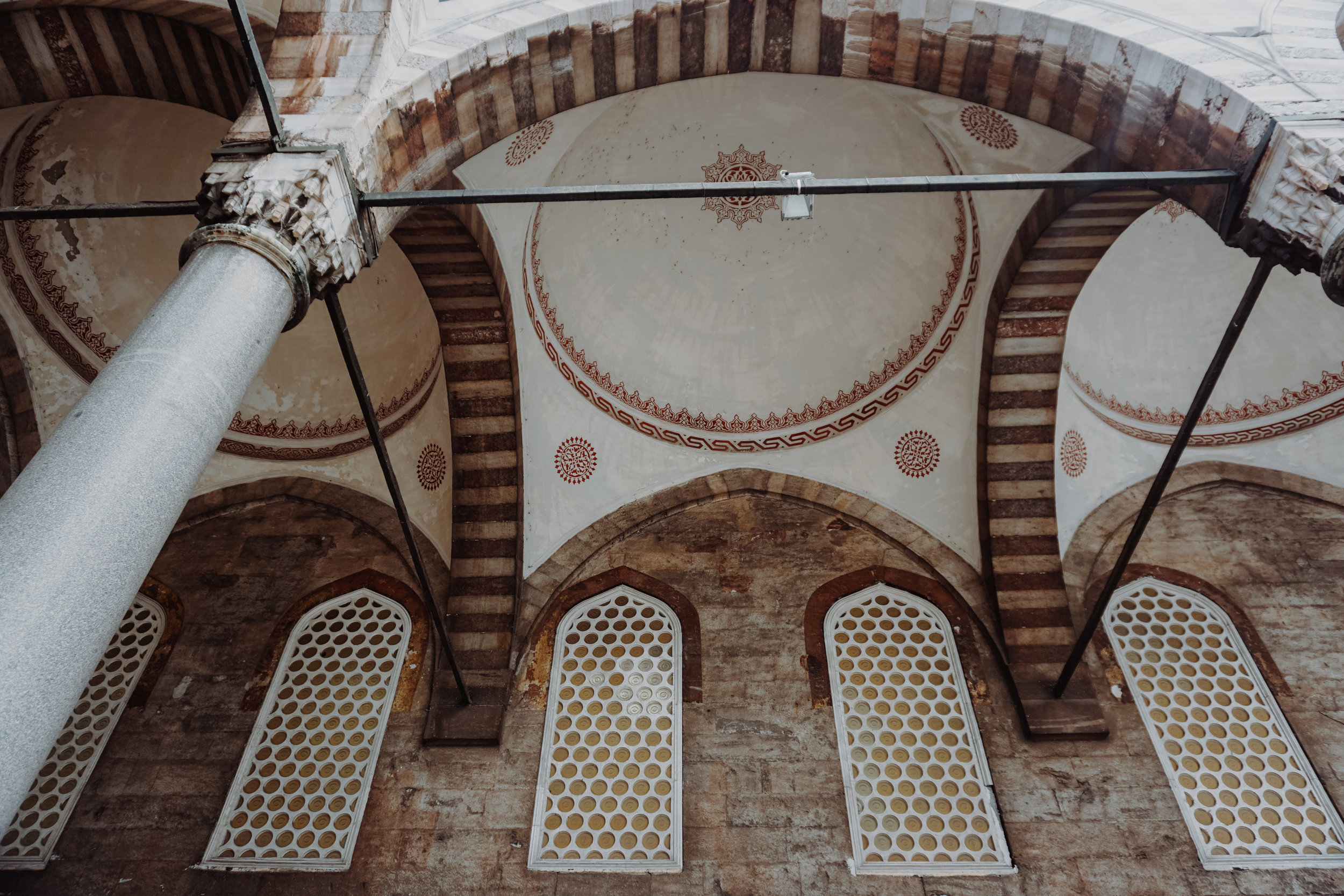
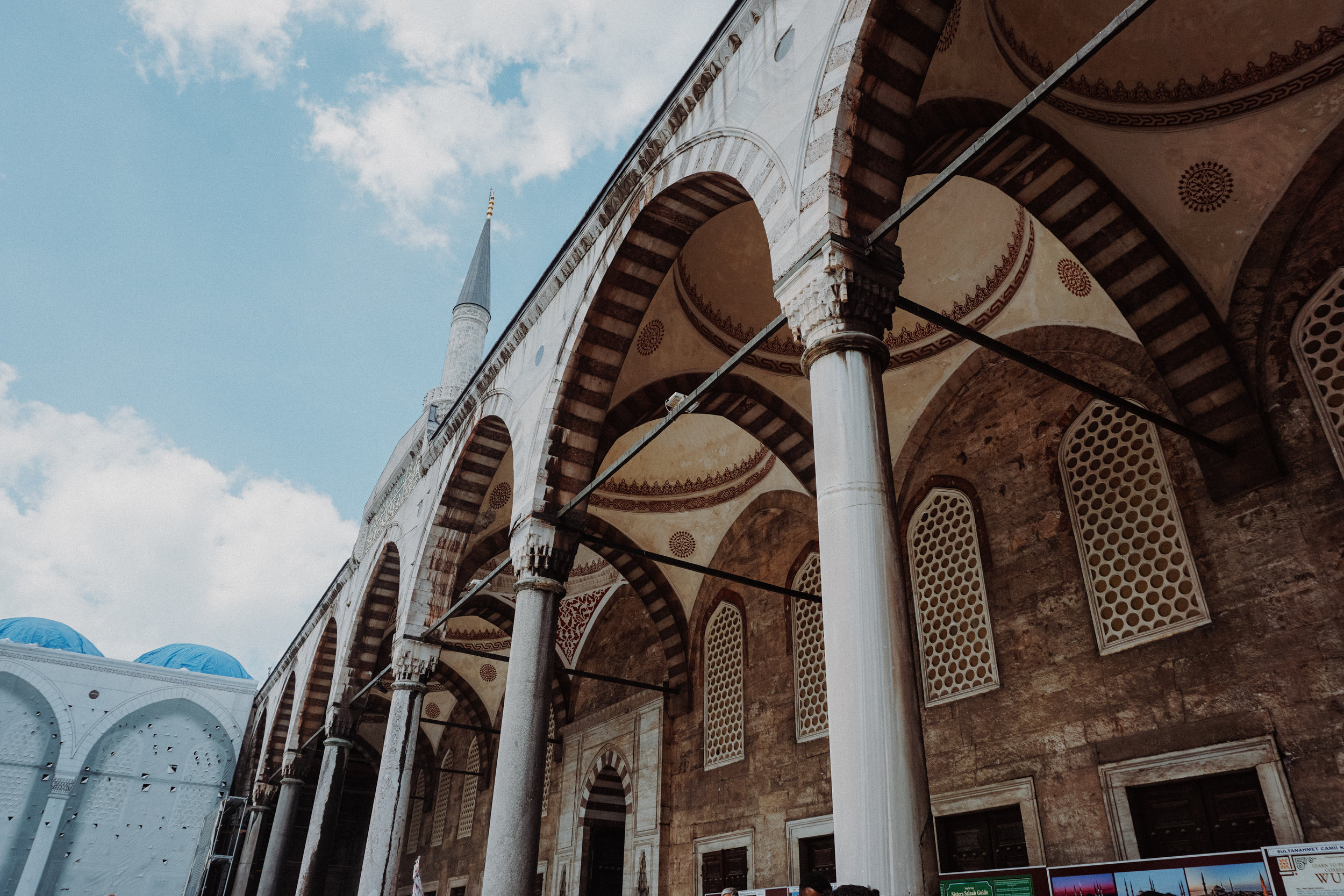
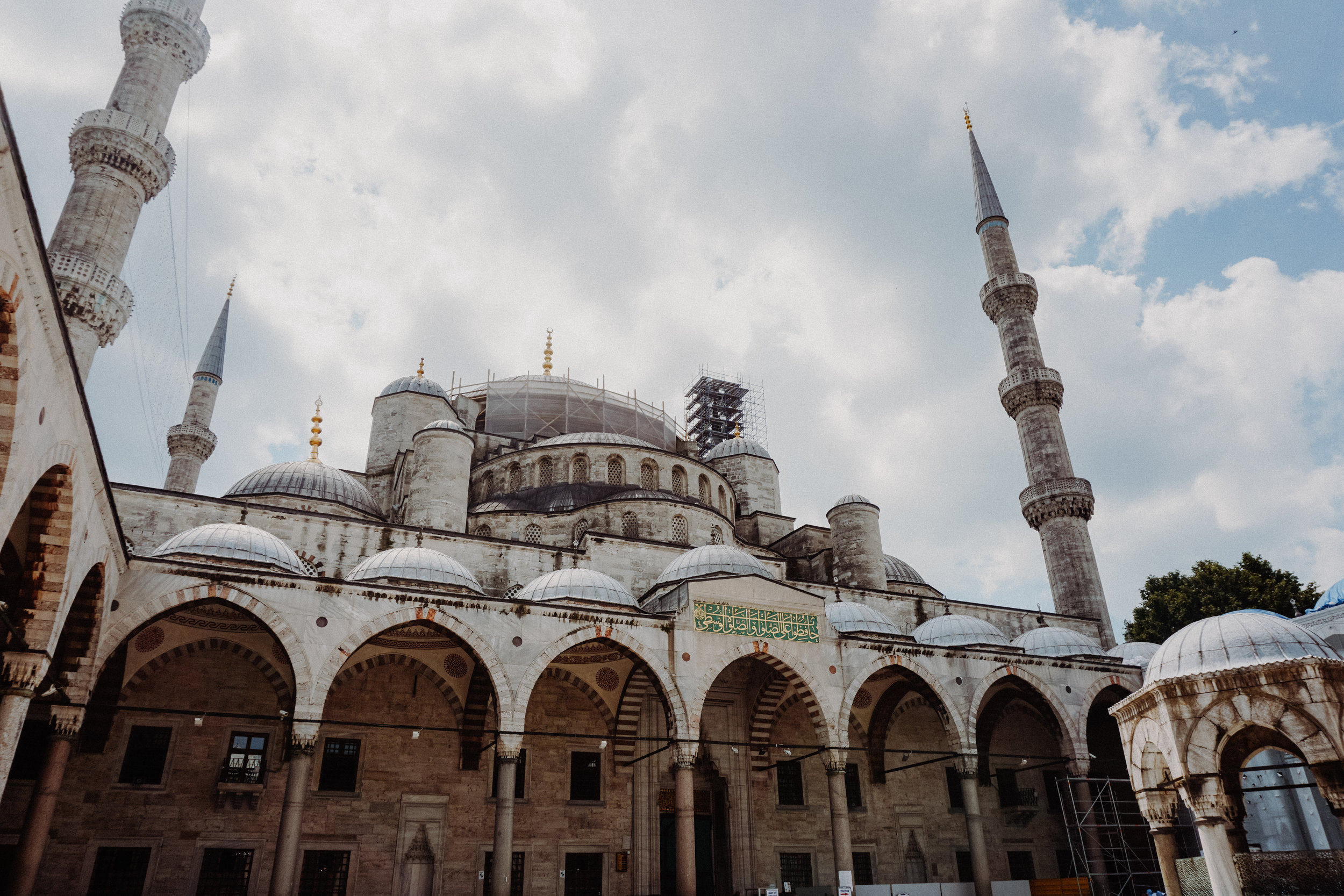

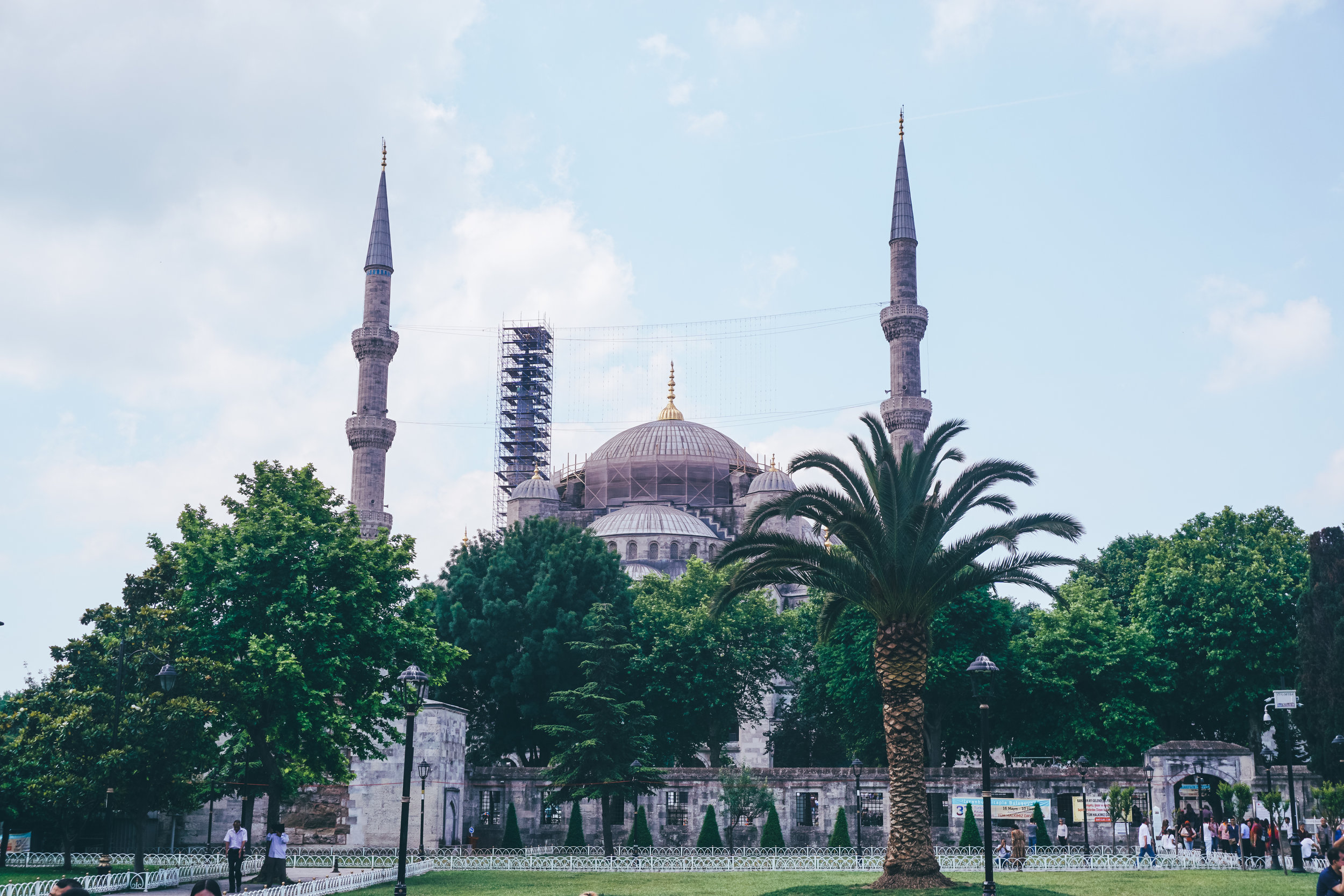
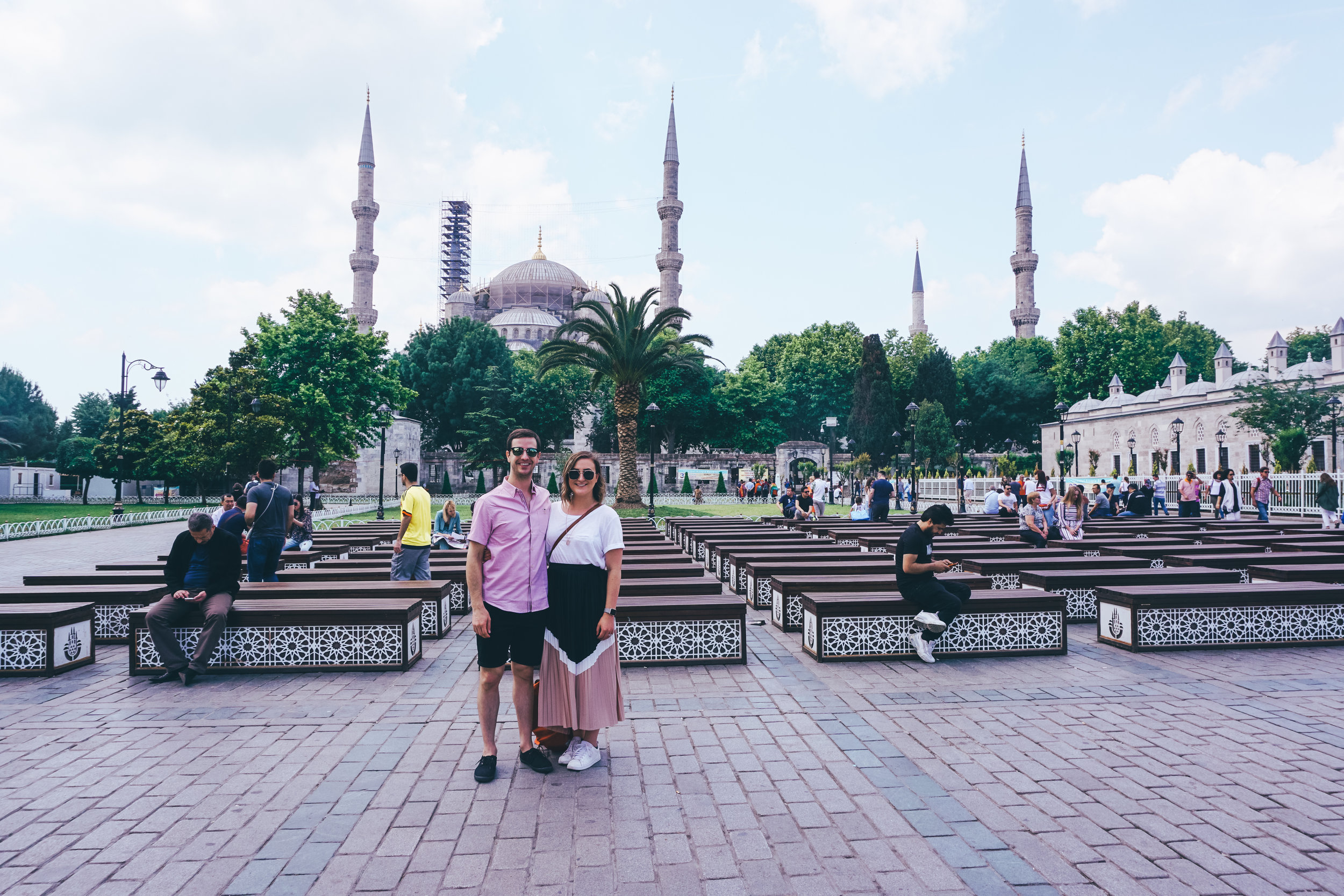
The interior of the mosque is being renovated, but what we could see was covered in the aforementioned blue tiles. The ceiling work is really incredible. The prayer hall is noticeably barron, but the red floral carpet is plush.
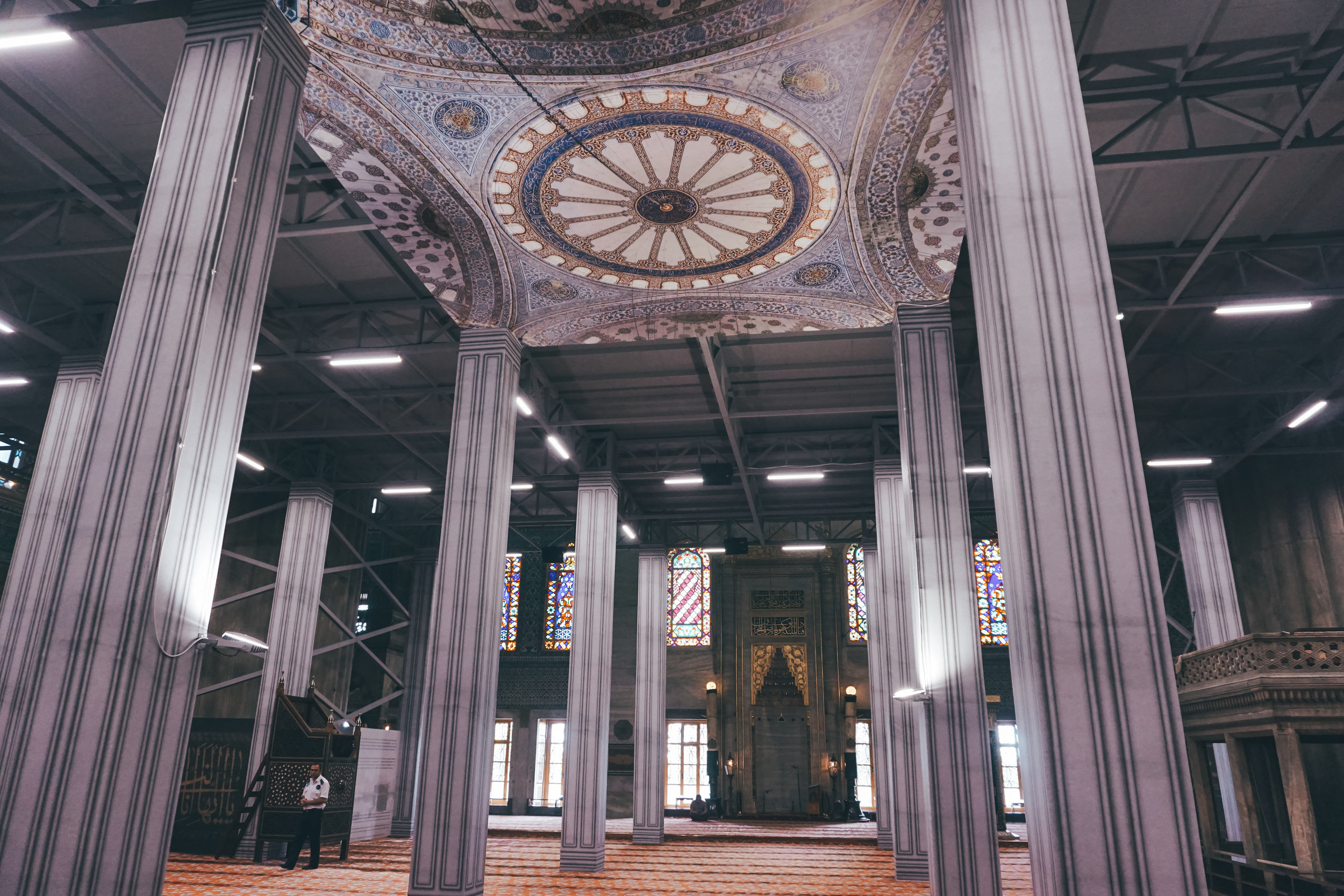
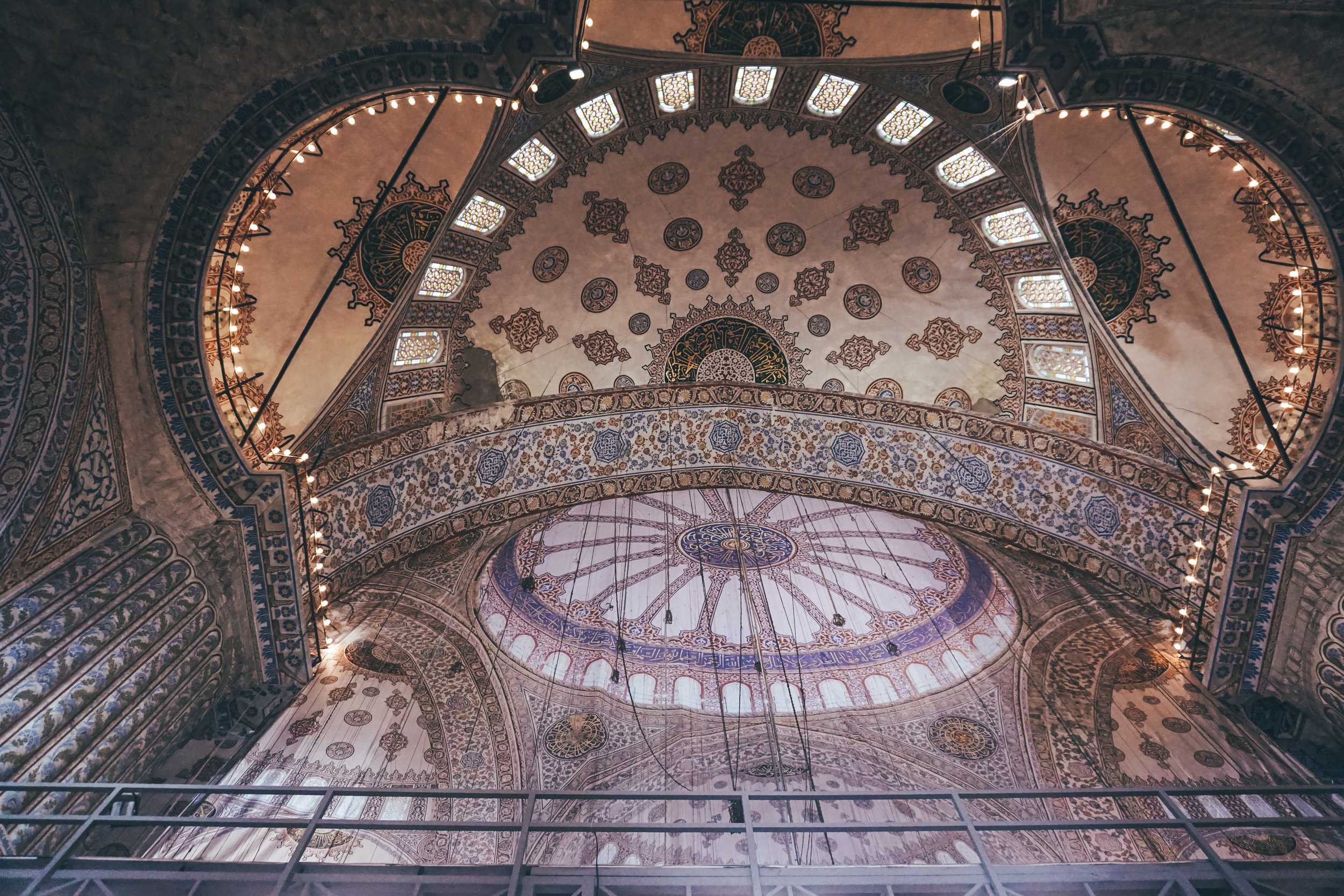
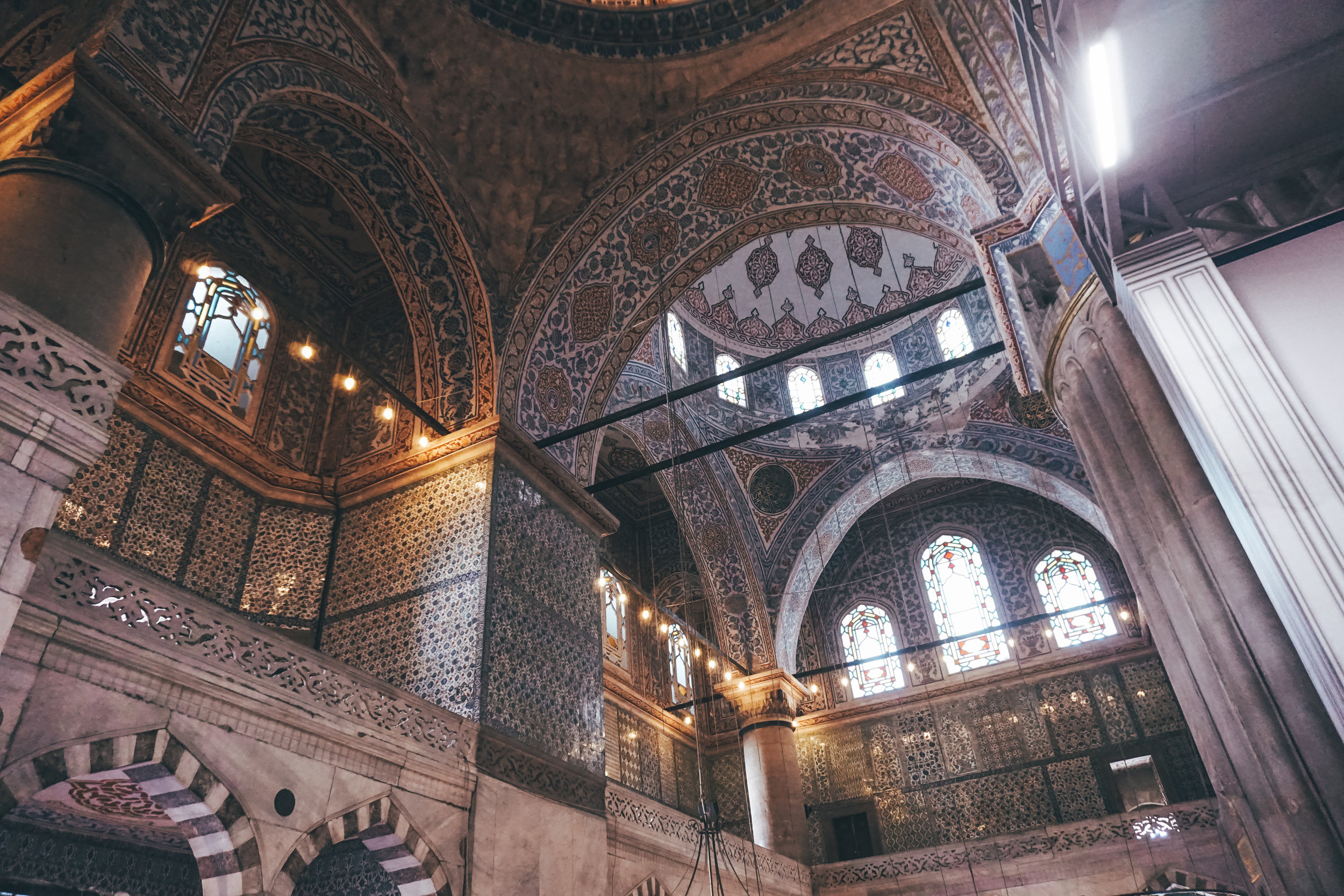
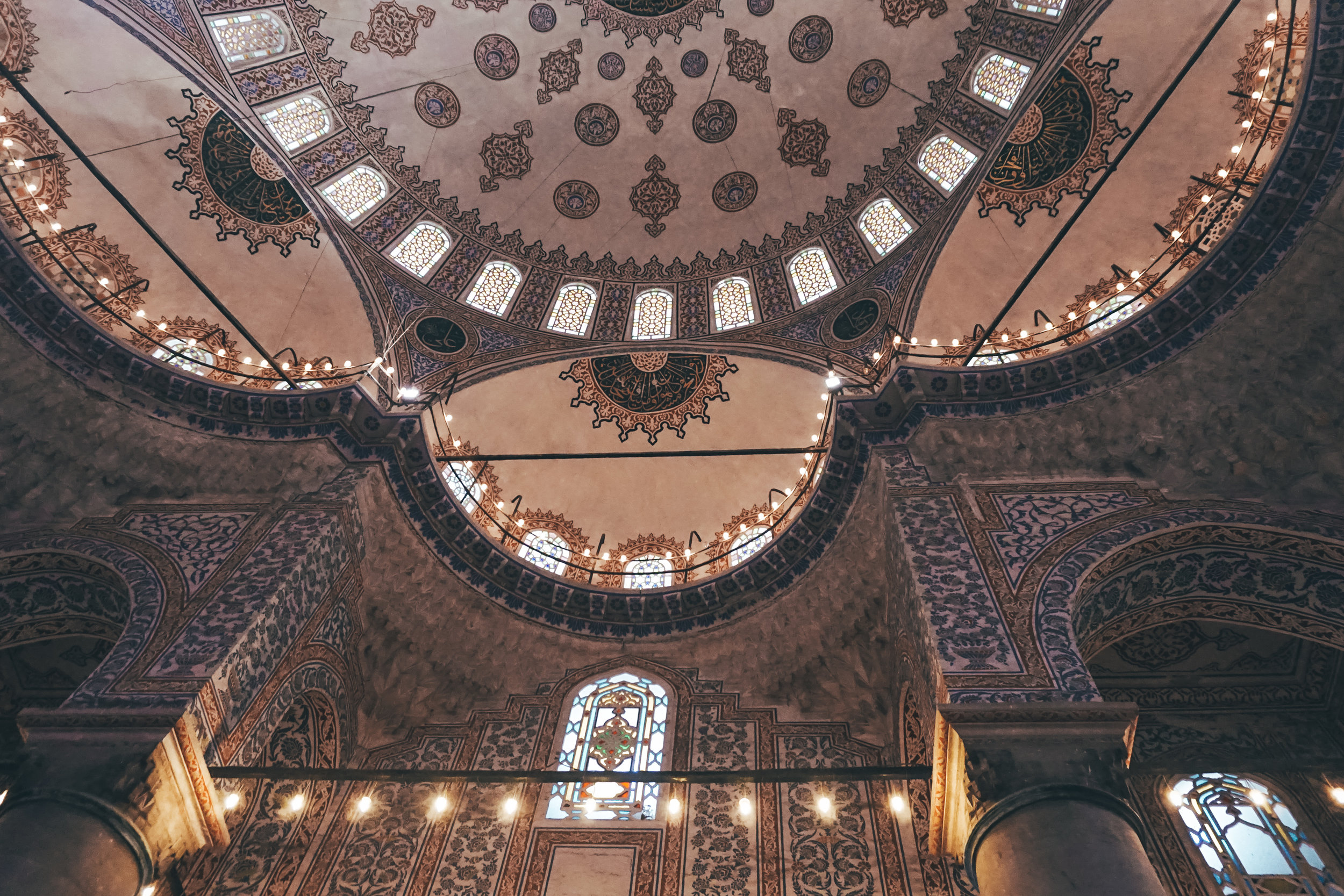

The Blue Mosque is worth the visit. It's open from 9:00 a.m. - 7:00 p.m., but plan to go either in the morning or mid-afternoon since it is closed during prayer times. Entrance is also free.
Süleymaniye Camii
Sinan, one of the Ottoman Empire's greatest architects, created the stunning mosque that is Süleymaniye. Commissioned by Süleyman I, "The Magnificent", the mosque took seven years to build and was completed in 1557.
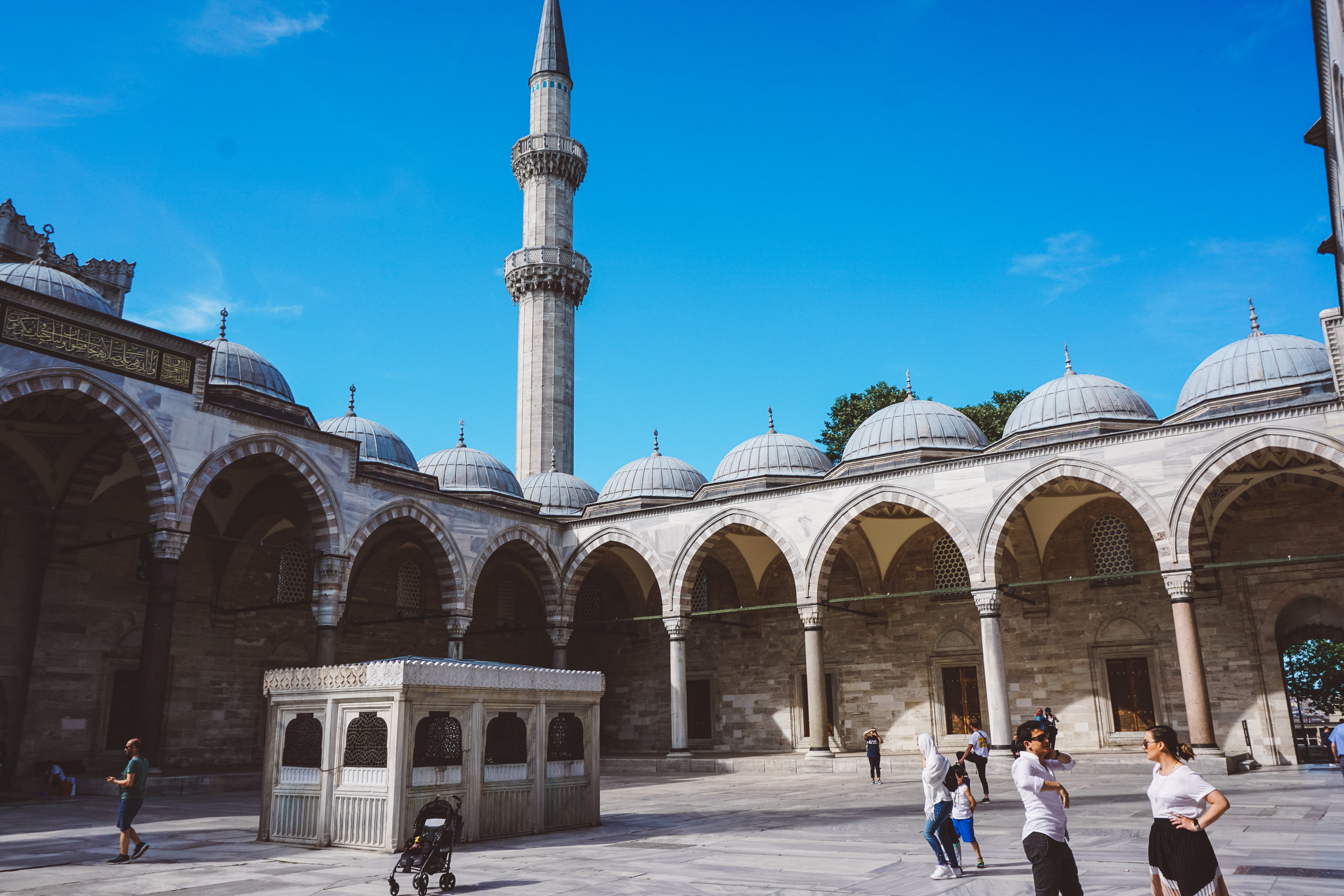
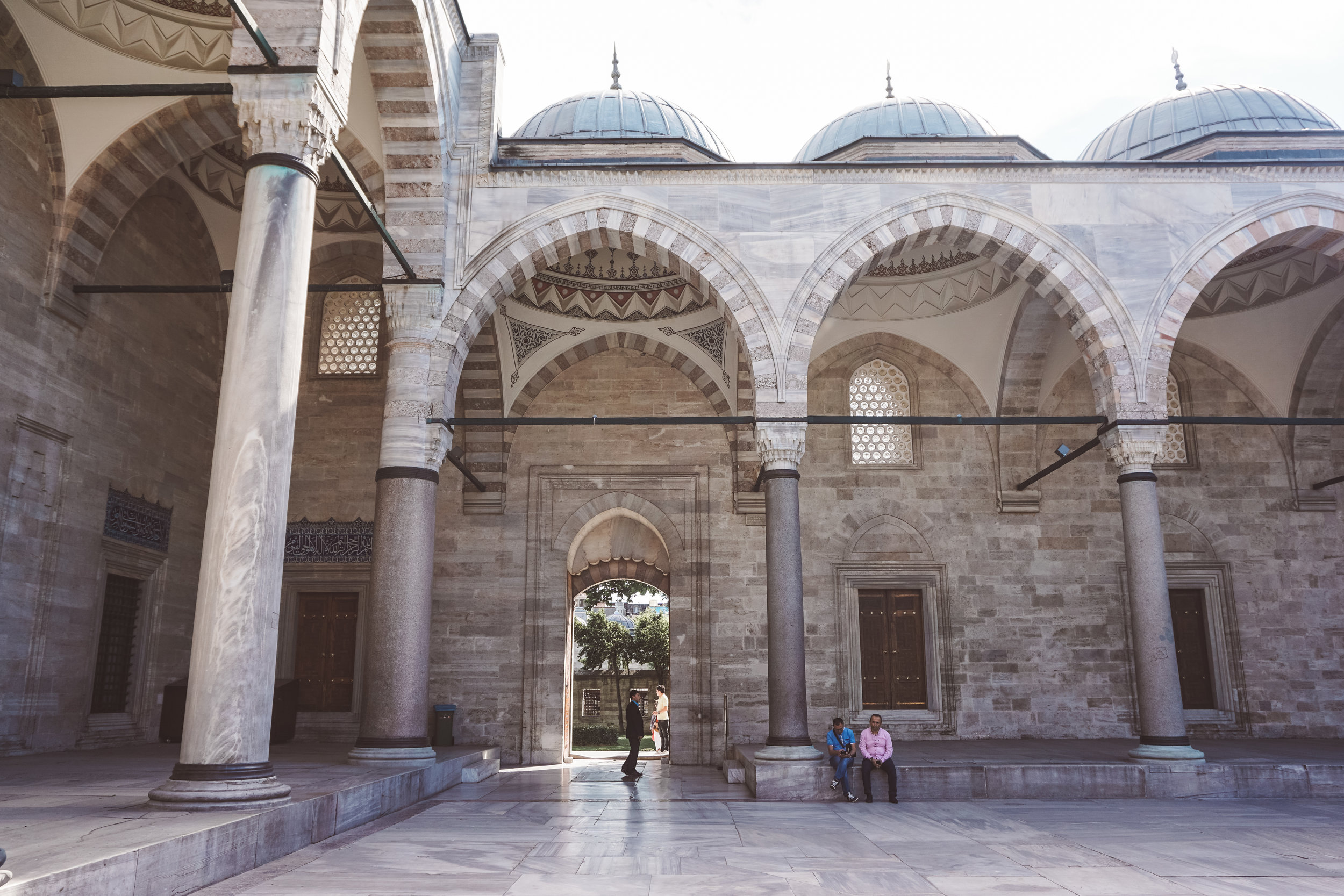
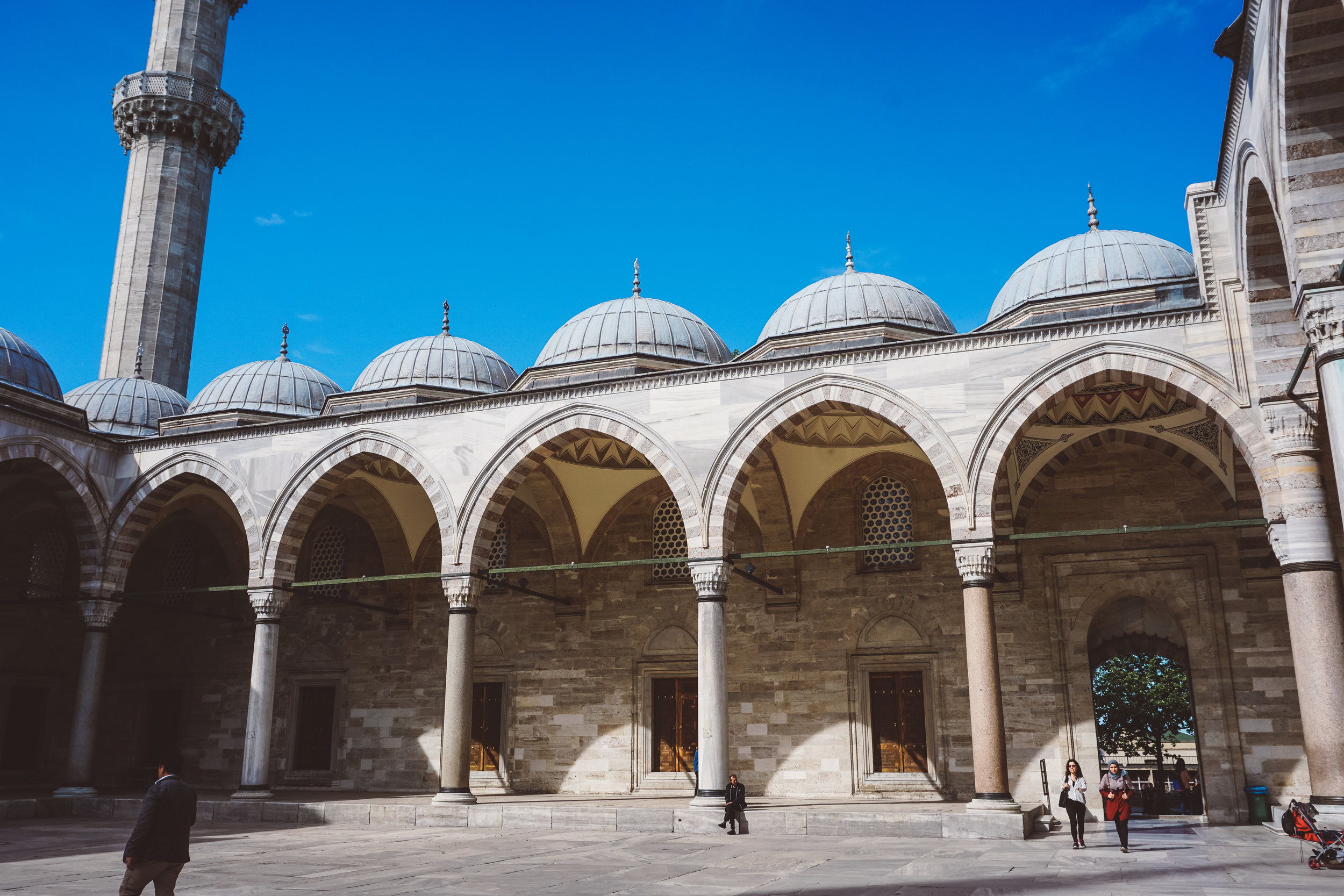
Süleymaniye Camii wasn't originally on our itinerary, but since the Blue Mosque was under construction, Özgür offered to take us there and we are so happy he did. It was much quieter and there were way less tourists than the Blue Mosque. Süleymaniye also wasn't under renovation, so being able to see the complete inside of a mosque was amazing. To see the full view of the domes and pillars was remarkable. It gave me even more of an appreciation for these incredible buildings.
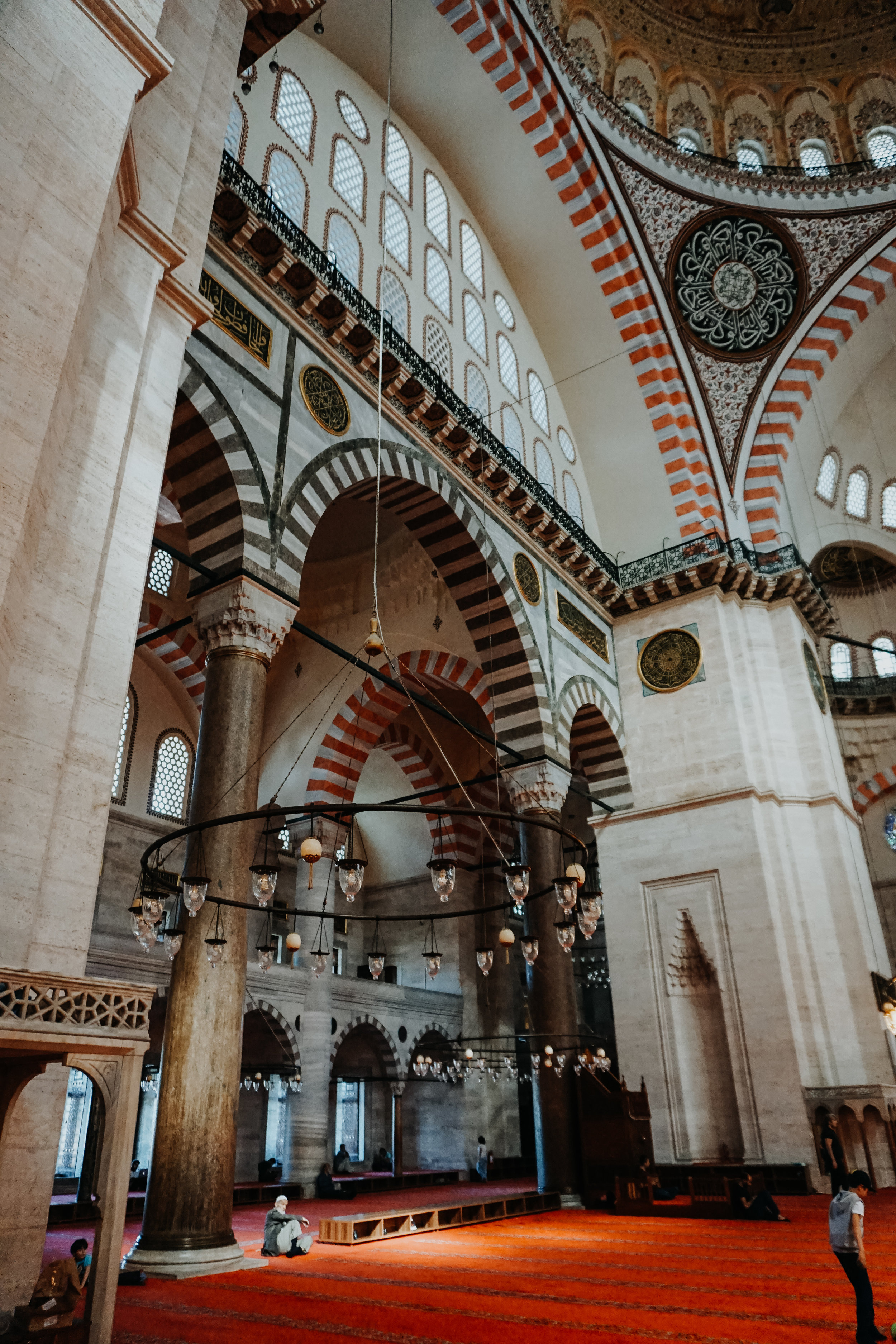
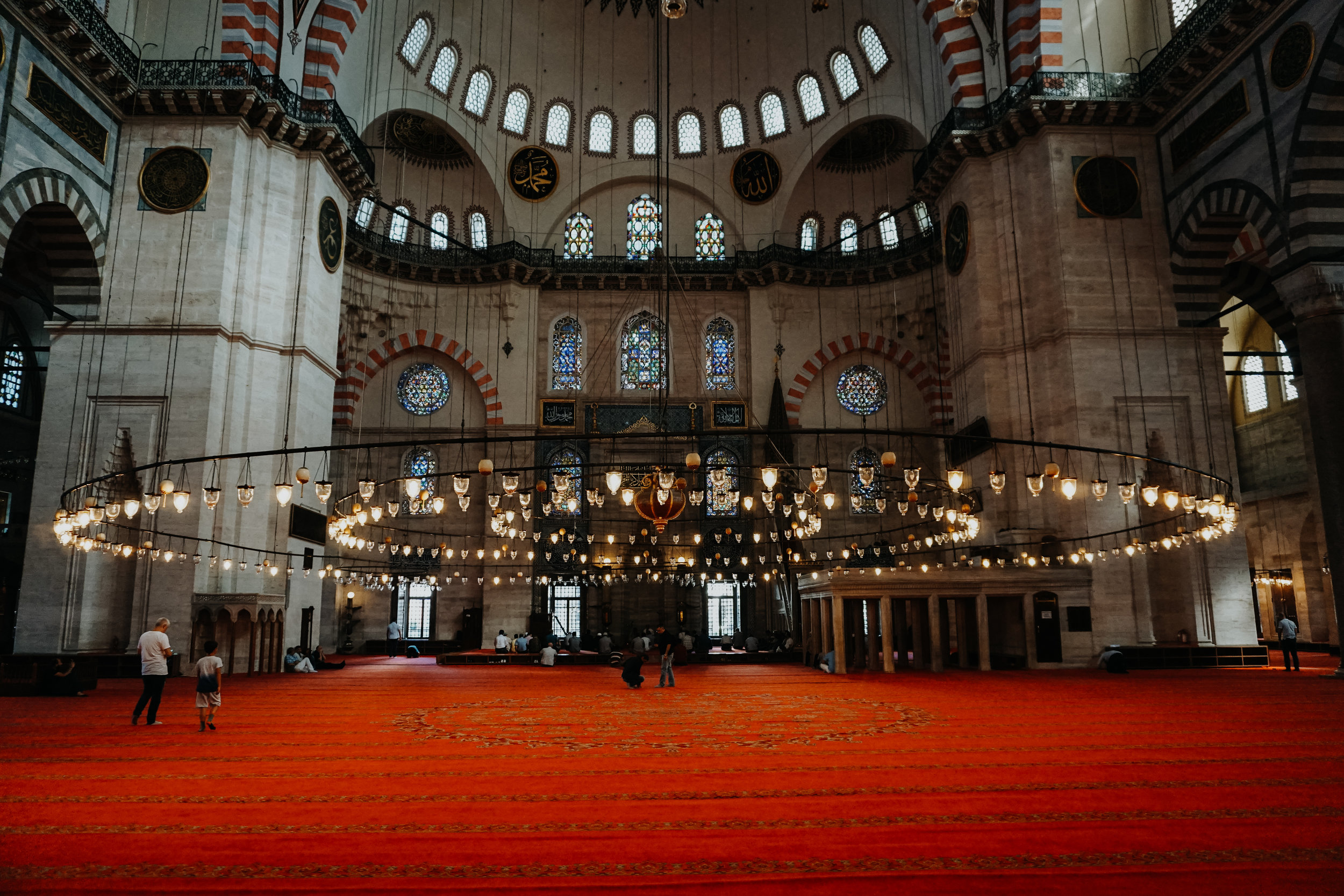
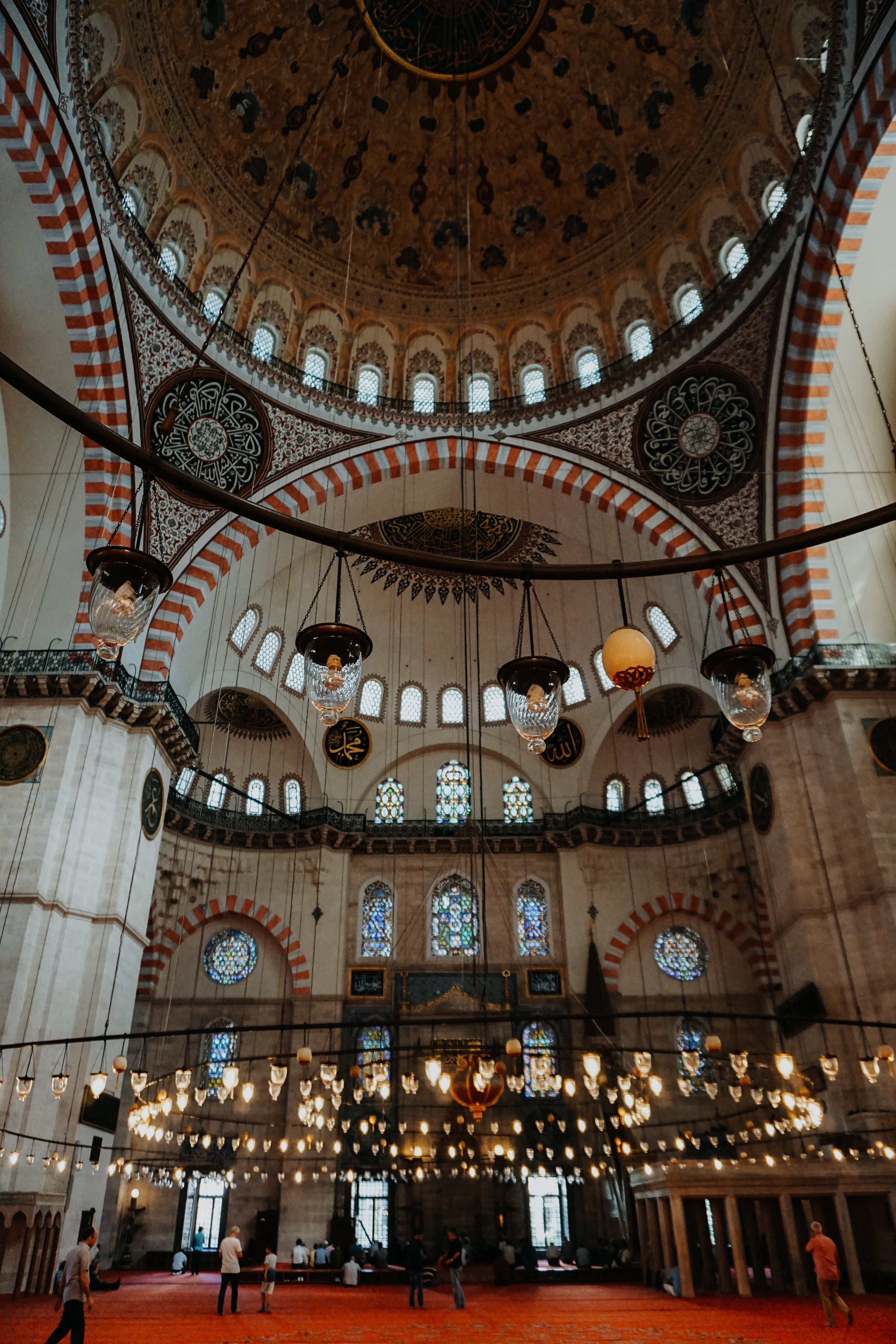
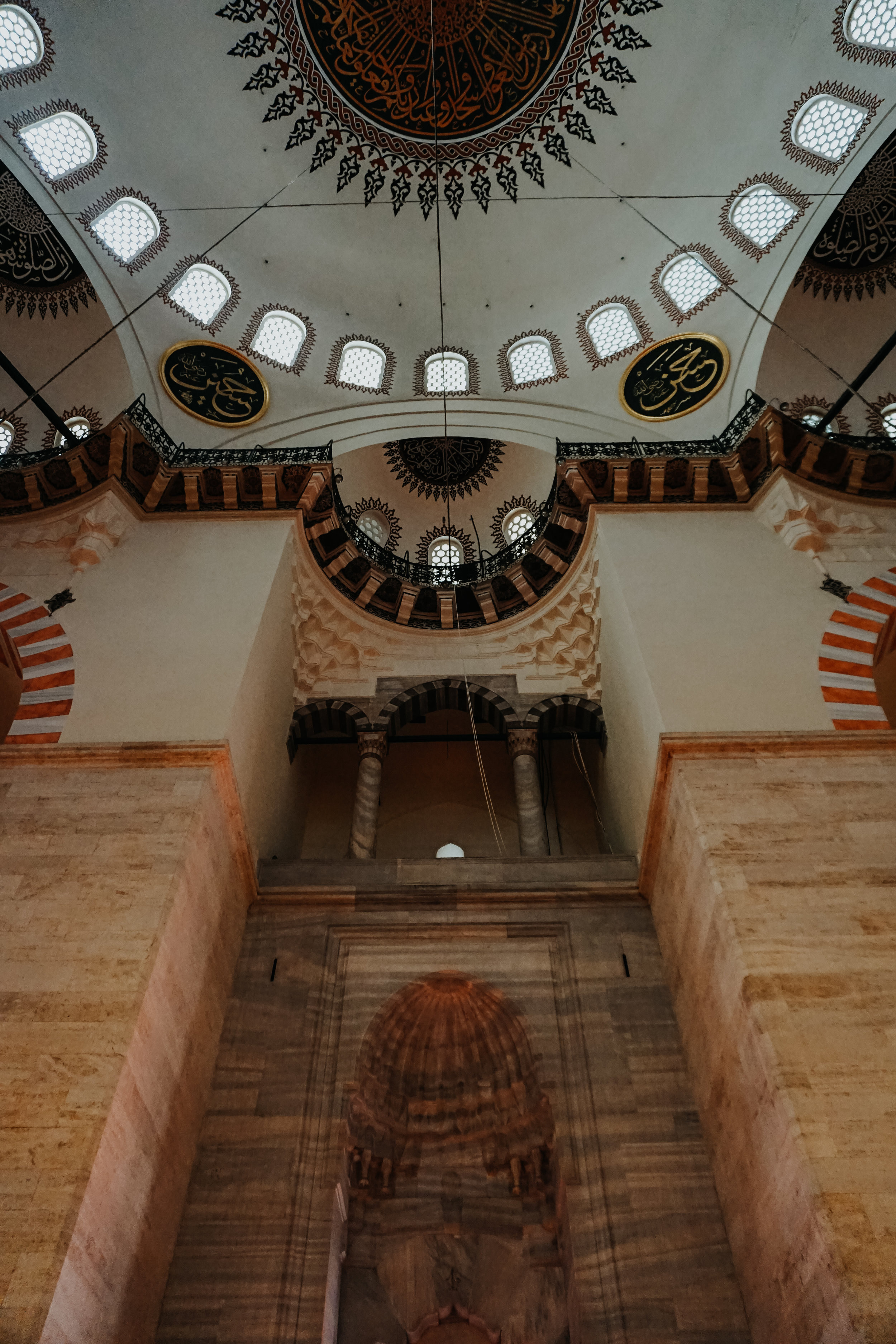
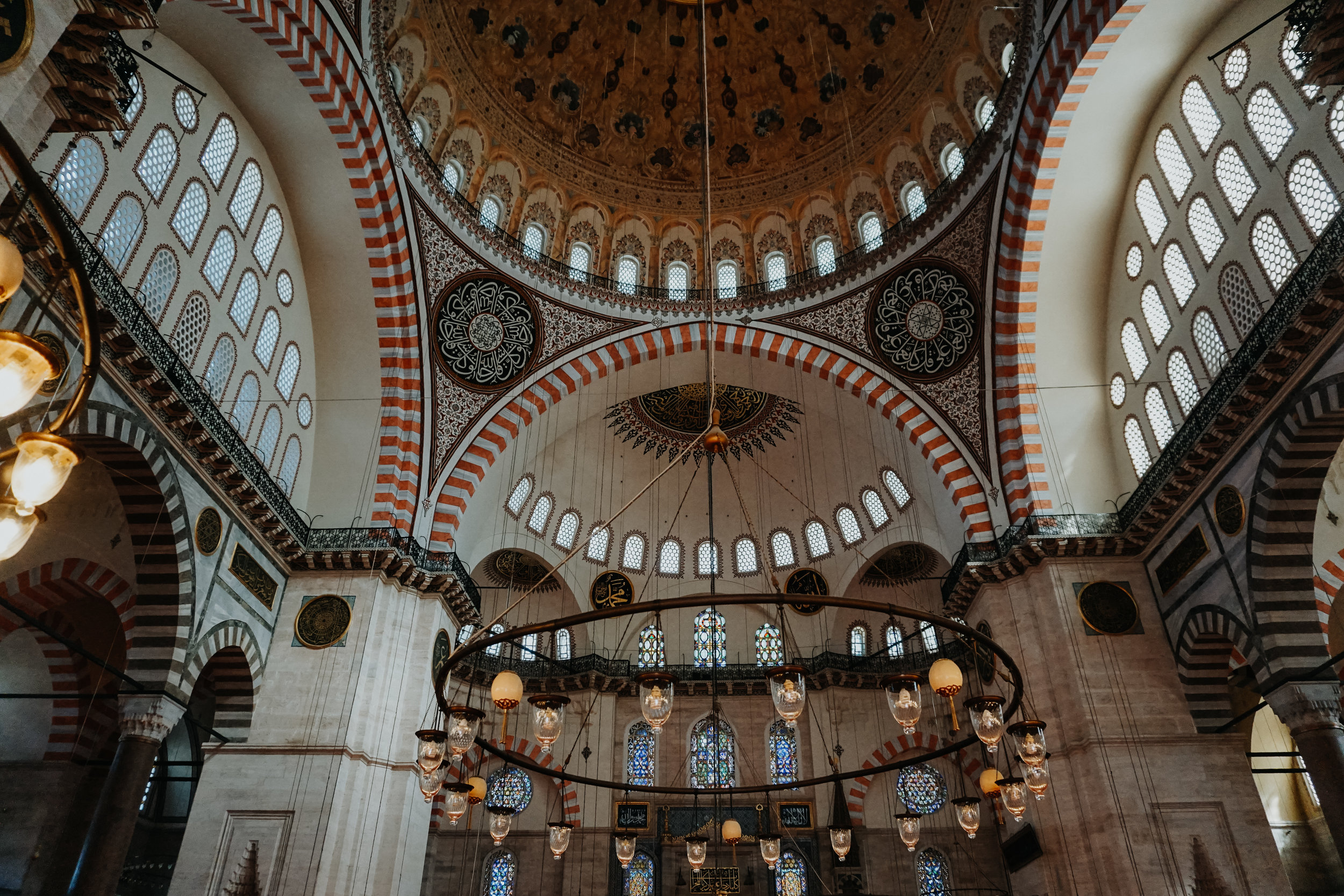
For those interested, Sultan Süleyman I and his wife are buried at Süleymaniye's complex. Also, the views of the city from the terraced gardens outside the main complex are pretty great!
I highly recommend visiting Süleymaniye Camii to get a complete view of a functioning mosque and a unique view of the city. This mosque is open to visitors from 9:00 a.m. -7:00 p.m., but also closed for prayer times. Entrance is free.
Hagia Sophia / Ayasofya
Hagia Sophia, or Ayasofya as its known in Turkish, is the most spectacular building Chris and I have ever seen. The structure standing today is the third on the site and was commissioned by Byzantine Emperor Justinian in 537 AD. I'm going to repeat that. It has been standing since 537 AD. It is an awe-inspiring, architectural wonder having survived countless wars and earthquakes. The Blue Mosque and Süleymaniye mosque were built roughly over 1,000 years after the Ayasofya and took seven years to finish. The Ayasofya was completed in five years, ten months and is significantly larger than the other two. The sheer size and architectural feat coupled with the fact that it is 1,500 years old makes it one of the most magnificent buildings on this earth. I have no idea how this isn't considered one of the Wonders of the World.
Emperor Justinian ordered its construction to be a beacon of Christianity and it functioned as a Christian cathedral until Constantinople was conquered by the Ottomans in 1453. Immediately following the city's conquest, Sultan Mehmed II ordered the cathedral to be converted into a mosque, just in time for that Friday's prayer. Minarets were added, the altar which faced Jerusalem was removed, and the mihrab was added to face Mecca. There were many mosaics in the cathedral depicting Jesus, the Virgin Mary, and others that were plastered over and all of the crosses were either destroyed or had the horizontal bar removed.
Ayasofya remained a mosque until 1931. In 1935, the Republic of Turkey opened it back up, but this time as a museum. Over the last several hundred years, but especially in the four years the building was closed before becoming a museum, teams of archeologists uncovered the mosaics from underneath the plaster. They believe all of the major mosaics have been uncovered, but teams are still working today and finding more.
When you first enter Ayasofya, you are in the Narthex. During its cathedral days, this room was where those who had converted to Christianity attended services; they were not worthy enough for the nave. The ceiling is completely decked out in teeny, tiny mosaic tiles. There are also several doors leading into the nave. Of most importance is the Imperial Gate, which was reserved for the Emperor and Patriach only. You can see in one of the pictures below that the doors used to have crosses on them, but have had the horizontal bar removed. Also, these doors were HEAVY. I couldn't even move it a millimeter using all of my body weight. [yes, I for sure tried.] You will also notice a mosaic of Jesus above the Imperial Gate that had been rediscovered.
When you enter the nave, the first thing to draw your attention are the massive calligraphic roundels at the base of the dome. The roundels are made of wood and camel skin and are enscripted in calligraphy. There are eight in total: one for Allah, the Prophet Muhammad, Muhammad's two grandsons, and four caliphates, who are successors of the Prophet Muhammad. When the country was renovating Ayasofya into a museum, they originally wanted to remove the roundels, but the Ottomans built them so big that they couldn't fit through the doors. I'm glad they weren't able to remove them because they are very cool to see.
The dome stands tall at 183 feet / 56 meters from the floor. In the pictures, you can see that there are what look like figures painted right below the base of the dome. These were angels during the building's cathedral phase that were painted over by the Ottomans. Ayasofya is currently under restoration, so the one angel that has had its face uncovered is currently blocked by scaffolding. It's pretty amazing the amount of work that had to go in removing any traces of Christianity.
As I mentioned before, since Ayasofya was originally built as a Christian cathedral, the altar faced Jerusalem, but when it was converted into a mosque, the mihrab, where the Imam would hold prayer, was placed facing to Mecca, which is why it doesn't sit directly underneath the semidome above.
On the floor in the nave is a "coronation square", which was not only the site of the Byzantine emperor's throne, but also believed to the be the centre of the world. Westminster Abbey in London also has a coronation square.
Next, we wound our way up the spiral pathway to the second floor. This passageway was used for the Empress to get up to her special outlook. She couldn't bear get up there herself, so she got pulled by humans in her sleigh. Once in the upper gallery, she had her own designated spot where she and the ladies of the court would watch the ceremonies from above. Not a bad view!
Also note all the tiny tiles in the mosaic in the arch and the iron work that had turned dark after years of candle smoke.
When you make your way down the corridor through the upper gallery, you walk through a marble door to the quarters where the church council used to meet. It is here that you can see a carving in the railing by a Viking. Yes, you read that correctly, a Viking. Legend has it that the Vikings heard about this magnificent church in Constantinople and had to see it for themselves, so they sailed all the way there. This, of course, evidenced by the carving. This.blew.our.minds. You always think about the Vikings heading West, not... East. That should help paint the picture of how incredible Ayasofya is.
Also in the upper gallery is where some of Ayasofya's greatest mosaics have been uncovered. These mosaics are HUGE and were created using the same tiny tiles as seen throughout the building. The gold tiles that you see in the photos had actual gold in them, over time, looters took those tiles as high as they could reach, which is why pieces are missing.
After admiring the mosaics, we went back down to the main level to the Wishing Column. This column has a hole in it covered by bronze plates. There are lots of legends surrounding this hole and how it came about, which has led people to believe it has special powers. One legend has it that Emperor Justinian rested his head against the spot and his headache was cured, which has some believing it has healing powers. The column is also damp, so some believe that it is the tear of the Virgin Mary. Our tour guide Özgür told us a story about a spirit that came in the night to change the direction of the building to face Mecca by using the column as his rotator, but got caught by someone in the building, so he had to come back later to finish the rotation. Because of this legend, people who visit the Wishing Column make a wish, put their thumb in the hole, and try to make a full clockwise turn inside the hole. Here's to hoping our wishes come true!
If there is anything you do while in Turkey, it has to be a visit to Ayasofya. It is open daily from 9:00 a.m. until 5:00 p.m. or 7:00 p.m. during the winter and summer respectively. The entry to visit is ₺40 / $8.50 /€7.30.
WE LOVED AYSOFYA!
Visiting the mosques and Ayasofya was the highlight of our trip to Istanbul. They are enormous, beautiful structures and I am forever grateful for getting to learn more about the Islamic faith through the eyes of a mosque.
BYZANTINE MONUMENTS
The Ottoman influence is brushed all over Istanbul, but there are still strokes of life that remain from the Roman Byzantine era. The Romans controlled the city for over 1,000 years, so it's appropriate that some relics and ruins remain. There are two notable monuments in the Old City near Ayasofya and the Blue Mosque: the Hippodrome and Basilica Cistern.
Hippodrome
During the Byzantine era, hippodromes were a form of sport and entertainment for the Romans. Think gladiators and the Colosseum, but chariot races on a track. Imagine an oval stadium with a 100,000 people watching men race chariots, each chariot with four horses, bashing into each other and racing to the death. Last man alive wins. This was the epicenter for social life in the city. Sounds like a good time, right? #nothanks
There are several hippodromes across Europe. This one in particular was built in the 3rd century AD by Emperor Septimius Severus. There is a park now where the race track and stadium used to stand, but there are three monuments remaining from its hippodrome days.
Fun fact: The stadium used to have four bronze horses, which were looted by the Crusaders and can now be found at St. Mark's Cathedral in Venice.
The Hippodrome is free to visit and located right next to the visitor's entrance for the Blue Mosque.
Walled Obelisk
It's unknown when this was built and by whom, but it was restored in the 10th century. It used to be covered in gilded bronze plaques evidenced by all the holes in its sides.
Serpent Column
Made in 479 BC, the serpent column was originally much taller and adorned three serpent heads at the top. In an effort to line the hippodrome with impressive pieces, Constantine had this moved from the Temple of Apollo at Delphi in Greece to Istanbul.
Egyptian Obelisk
This pink granite obelisk is originally from the Temple of Kartak in Luxor, Egypt from around 1490 BC. In 390 AD, Emperor Theodosius had the obelisk cut into three pieces and shipped to Istanbul. The bottom two-thirds sunk along the way, so only the top third stands today atop a carved marble pedestal. The Egyptian hieroglyphs carved in the side are still in great condition, which is incredible considering it's 3,500 years old.
Basilica Cistern
Built by Constantine, and later expanded in 532 AD by Emperor Justinian, to make sure the city of Istanbul would always have water, the Basilica Cistern is an underground water-storage tank. All major cities had cisterns and the purpose for hiding them underground was to protct the water supply. In ancient times [and I suppose modern times?], an easy way to attack a city was to poison its water supply. Hiding your water reserve would then hopefully protect you from such an attack. This one in particular was so well hidden that it wasn't discovered by the Ottoman Empire until 1535 when homeowners claimed they could collect water by lowering buckets into the ground from their basement floors.
Called the "Sunken Palace" in Turkish, the cistern has over 300 pillars that were recycled from other ancient cities, two of which whose bases are the head of Medusa. When completely filled, the cistern can hold 18 million gallons / 80 million litres of water. The inside is very dark and damp. There's no doubt you feel transported to an ancient Roman civilization down there. The cistern has been used in several films, most notably the James Bond movie From Russia With Love, and for those video game players out there, it is part of Assassin's Creed: Revelations.
The Basilica Cistern is a unique site to see. Entry is ₺20 / $4.25 /€3.65.
PALACES
As you can see from the previous two sections, the Romans and Ottomans loved to build grandiose, impressive structures to elevate their status and show off their wealth. It should be no surprise that the same holds true when it comes to their palaces. There are two palaces that we visited in Istanbul: Topkapi Palace and Dolmabahçe Palace [pronounced dole-mah-bah-chee]. They were both built by Ottoman sultans, but are completely opposite in design with one representing the traditional Ottoman / Middle Eastern influence, and the other showcasing the epitome of European imperial luxury.
Topkapi Palace
After conquering Constantinople, Sultan Mehmed II built Topkapi Palace to be his main residence and he lived there from 1460-1478. It is unlike a palace in the traditional sense in that it is not one giant mansion. The complex, as it should really be called, consists of four courtyards with beautiful gardens and the buildings spread out amongst each courtyard. It is wildly expansive and covers 7,535,000 sq. feet / 700,000 sq. meters. Sounds modest, right?
Upon entering the second courtyard, you are met by the Gate of Salutations, which is where visitors were greeted, but also where high officials who had upset the sultan were arrested and beheaded. Eek!
To the right of the gate, you can actually see the wash basin where the executioner would clean himself up and the stone that would display the head of the person executed. Eek!
On the gate when you get up close, you can see that above the door is the sultan's signature. Each Ottoman sultan had his own signature that consisted of the following: 1) three lines representing the three continents that the empire had reached -- Europe, Asia, and Northern Africa; 2) circles representing the Mediterranean and Black Seas; and the sultan's name written over the name of the sultan's father. You can see examples of this on the left and right sides of the door and right above it.
Today, the palace serves as a massive museum with tons of different exhibits: harem, kitchens, imperial wardrobe, armory, and treasury to name a few. Like a lot of places in Istanbul, some of the exhibits are closed for renovation. Özgür explained to us that after Istanbul experienced tragic terrorist attacks, tourism drastically dropped, so the government decided it would be a good time to renovate everything. Makes total sense, but I was super excited to see the imperial wardrobe and the 86 carat diamond in the treasury, but those two specific exhibits were the ones getting renovated. Oh well, just another reason to go back, right?
The first building we went into was the Imperial Council. This is the building where the sultan's imperial council would meet to deliberate. The building is done in a rococo style and covered in gilded gold.
The most fascinating fact we learned was that the sultan would hide behind a window with a golden grill and eaves drop on the council's deliberations. Despite the sultan's efforts to be sneaky, the council actually knew the sultan was listening in, so they would not speak freely in their deliberations. You can see the window in the picture on the left!
The other two exhibits we got to see were the collection of armory, so a bunch of swords, shields, axes, and body armor, and the kitchens, which had some of the cooking pots and pans and fine china used. The kitchens were actually massive because they had to feed roughly 4,000 daily, including members of the staff.
My favorite part of Topkapi was honestly the gardens. The grounds were beautifully manicured and it was a very peaceful place in the middle of a giant city. I wouldn't have minded living there!
Topkapi has one of the best views of the Bosphorus Strait. You can see across the straight to the Asian side and some of the Prince Islands. It's a great spot to snap a photo and also grab a bite to eat at the cafe.
The palace is worth the visit since it is right next to Ayasofya and all the other highlights of the Old City. It wasn't my favorite place we visited, but would maybe be better when renovation is completed. The entry to visit is ₺40 / $8.50 /€7.30.
Dolmabahçe Palace
Later in the reign of the Ottoman Empire, the sultans started to become infatuated with the idea of being more like the imperial royals of Europe. This is evidenced by Dolmabahçe Palace. In 1843, Sultan Abdül Mecit wanted to reinvent the Ottoman Empire in a European image and built a brand new palace to do so. Located right on the Bosphorus Strait, this palace is a stunner with its marble façade.
This palace is the most luxurious palace Chris and I have ever seen. I have yet to see Versailles, but from what I understand, Dolmabahçe rivals it when it comes to the amount of gold and crystal that is used in its lavish decorations. Schönbrunn Palace in Vienna was the most grandiose palace I had seen up until this point, and don't get me wrong, the Hapburgs knew how to build a palace, but Dolmabahçe takes the cake. Everything in the palace is original and for that reason, we could not take pictures inside. I highly recommend Googling pictures of this palace.
Sultan Abdül Mecit had to tax the people of Turkey and borrow money from neighboring countries to build the palace, which people did not like. There are 285 rooms and 43 reception rooms, 6 Turkish baths and the entire palace is symmetrical. When you walk down the middle of the palace, on the original wooden floors, both rooms on either side of you will have identical layouts. All of the crystal in the countless chandeliers came from England or Czechia and a lot of the fabrics for the furniture came from Italy. There are also several pianos throughout the palace because the sultans could all play piano, and were well learned and could speak several languages.
The most incredible room in the whole palace is the Ceremonial Hall. This room specifically is what puts it over the edge for most luxurious palace we have ever seen. The expansive ceiling has a dome that is 118 feet / 36 meters high. From the center of that dome hangs a gift from Queen Victoria of England: the world's largest chandelier adorned in Bohemian crystal, has 750 lights, and weighs 9,900 lbs / 4.5 tons. This room was everything.
The last six sultans of the Ottoman Empire used Dolmabahçe as their main residence. In 1923, Turkey fought for its independence from the Ottoman Empire. The founder of the Republic of Turkey, Mustafa Atatürk, became Turkey's first president and used Dolmabahçe as one of his residences. He died in his bedroom in the palace. In honor of him, all of the clocks in Dolmabahçe are set to 9:05 a.m., the time of his death.
The gardens and grounds around the palace are beautiful, as you can imagine. We had a nice time walking around marveling at all the marble and admiring the flowers.
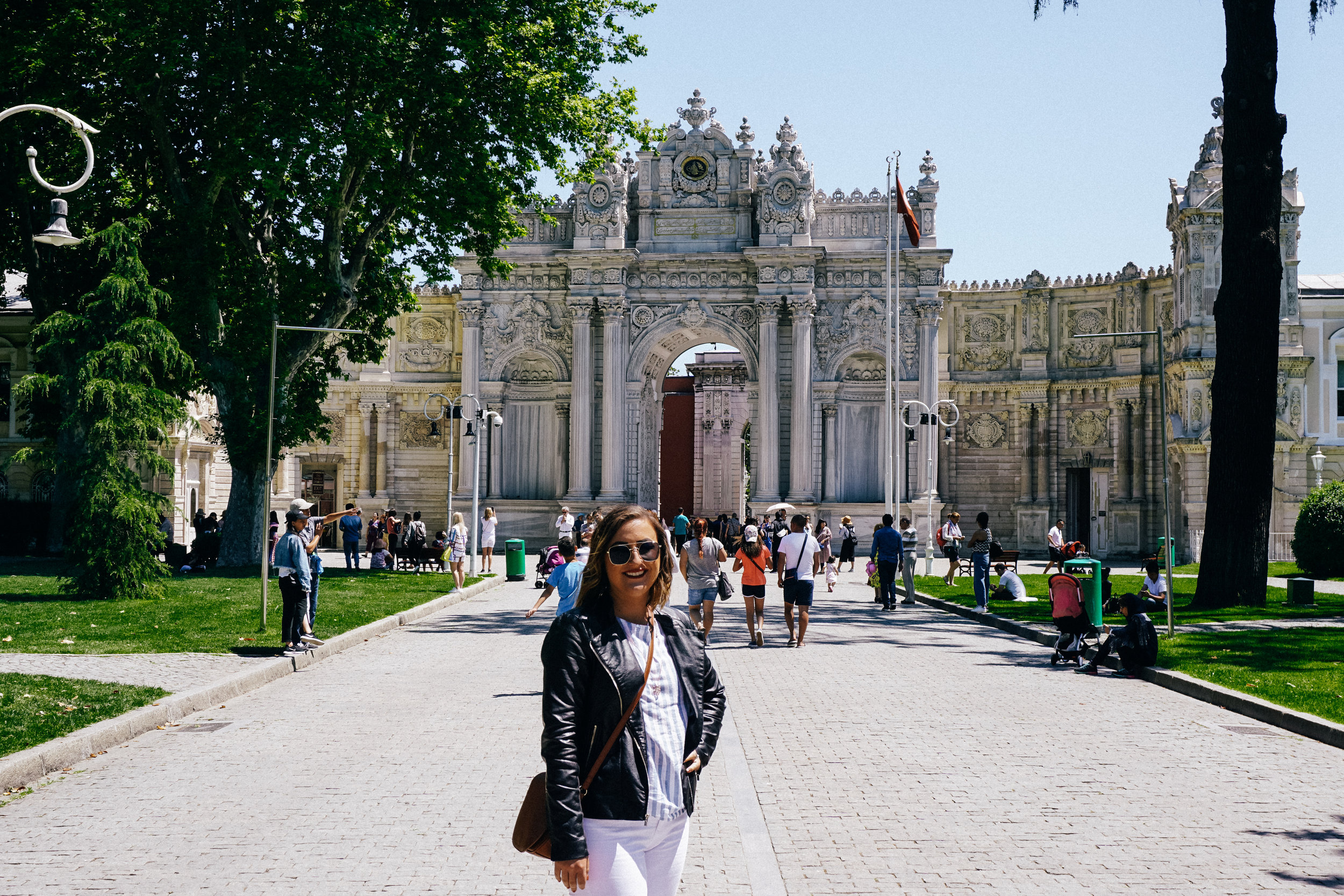
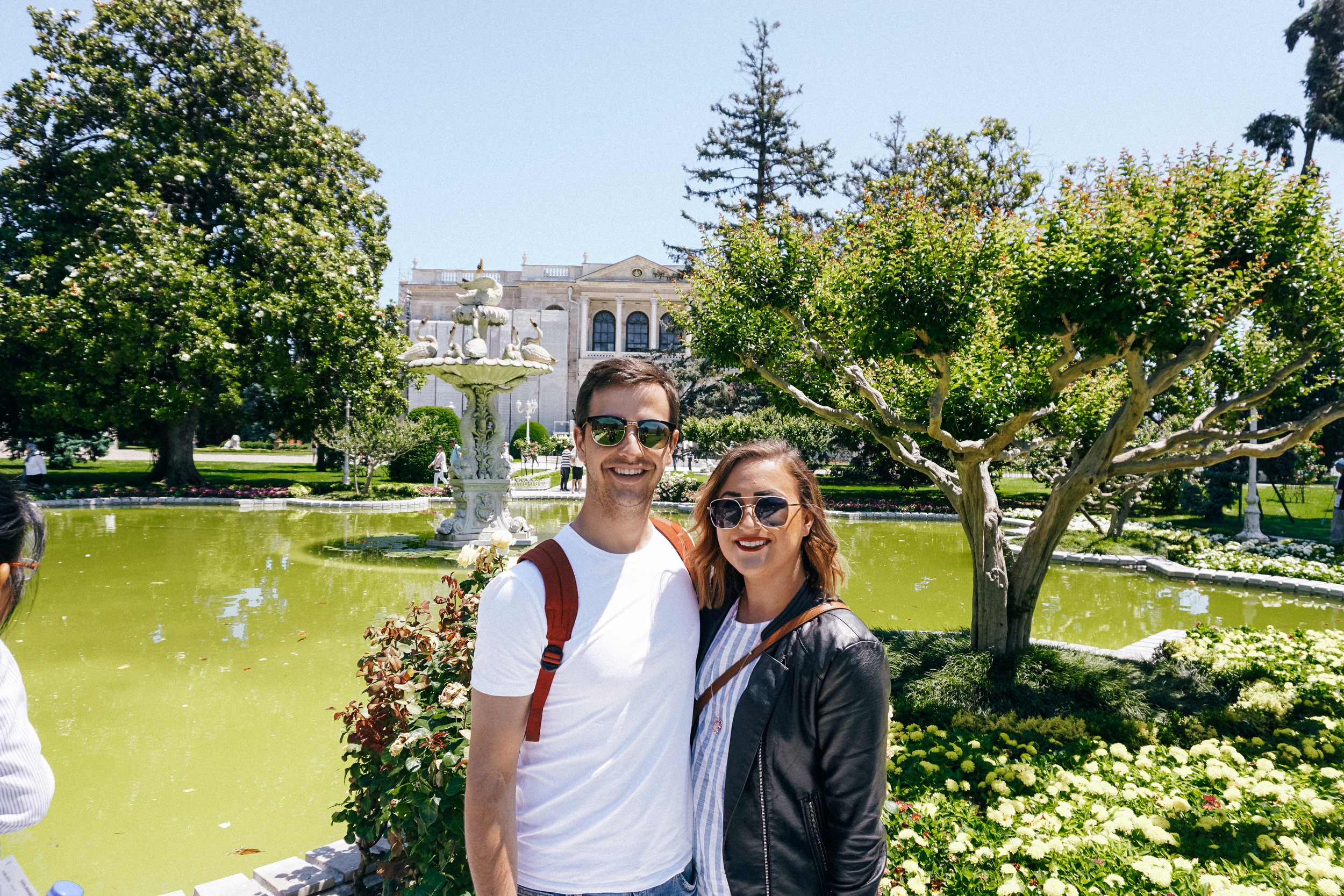
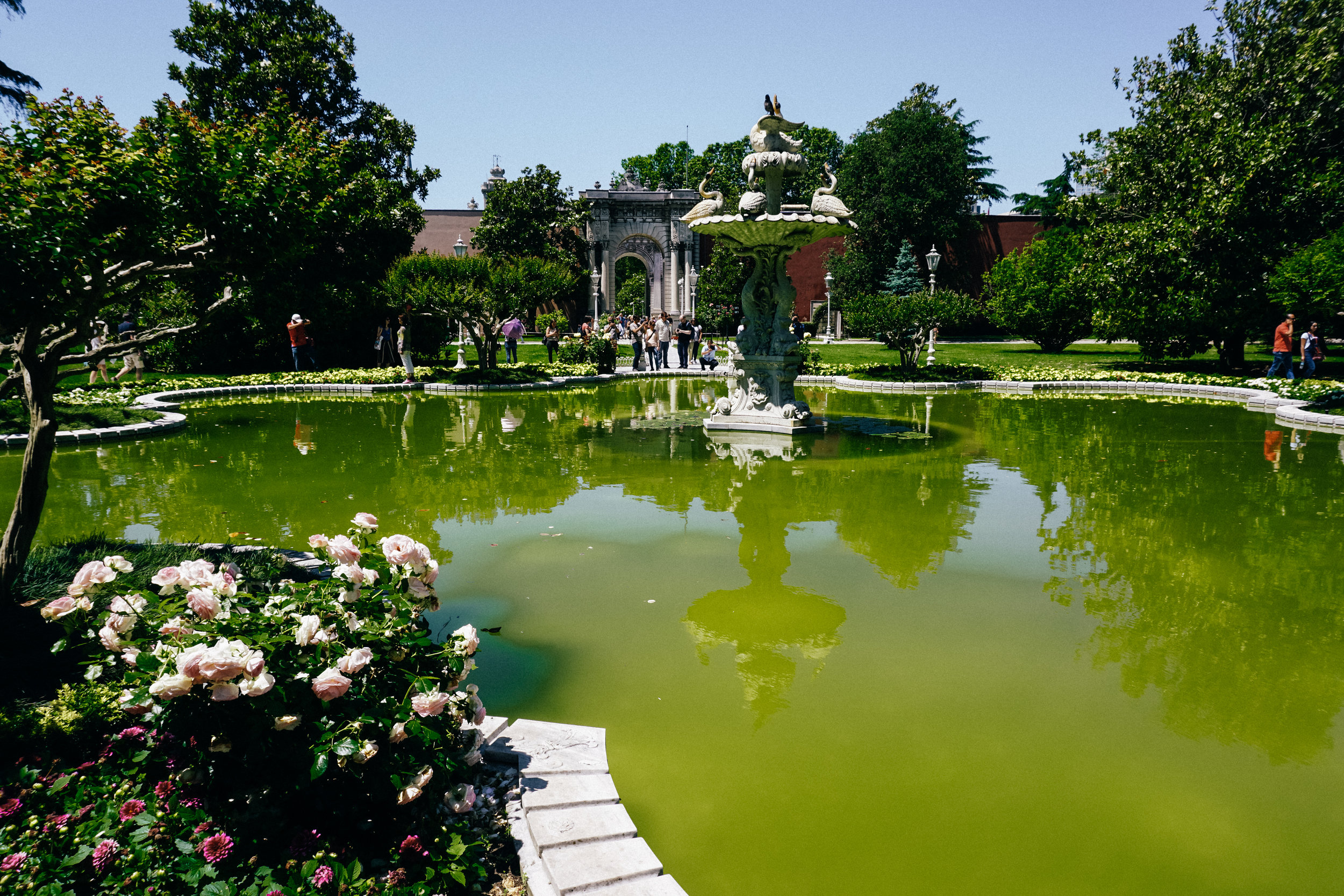
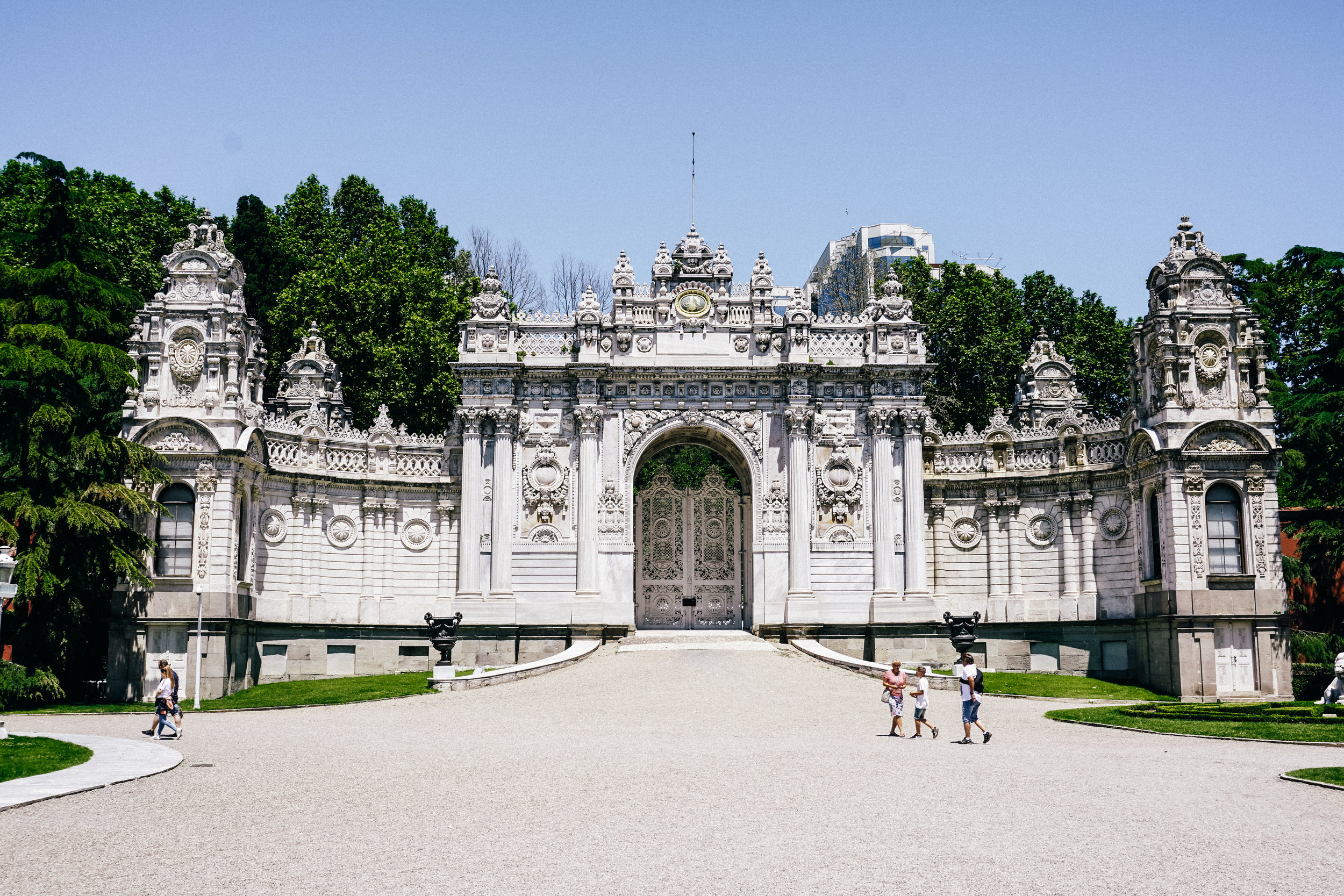
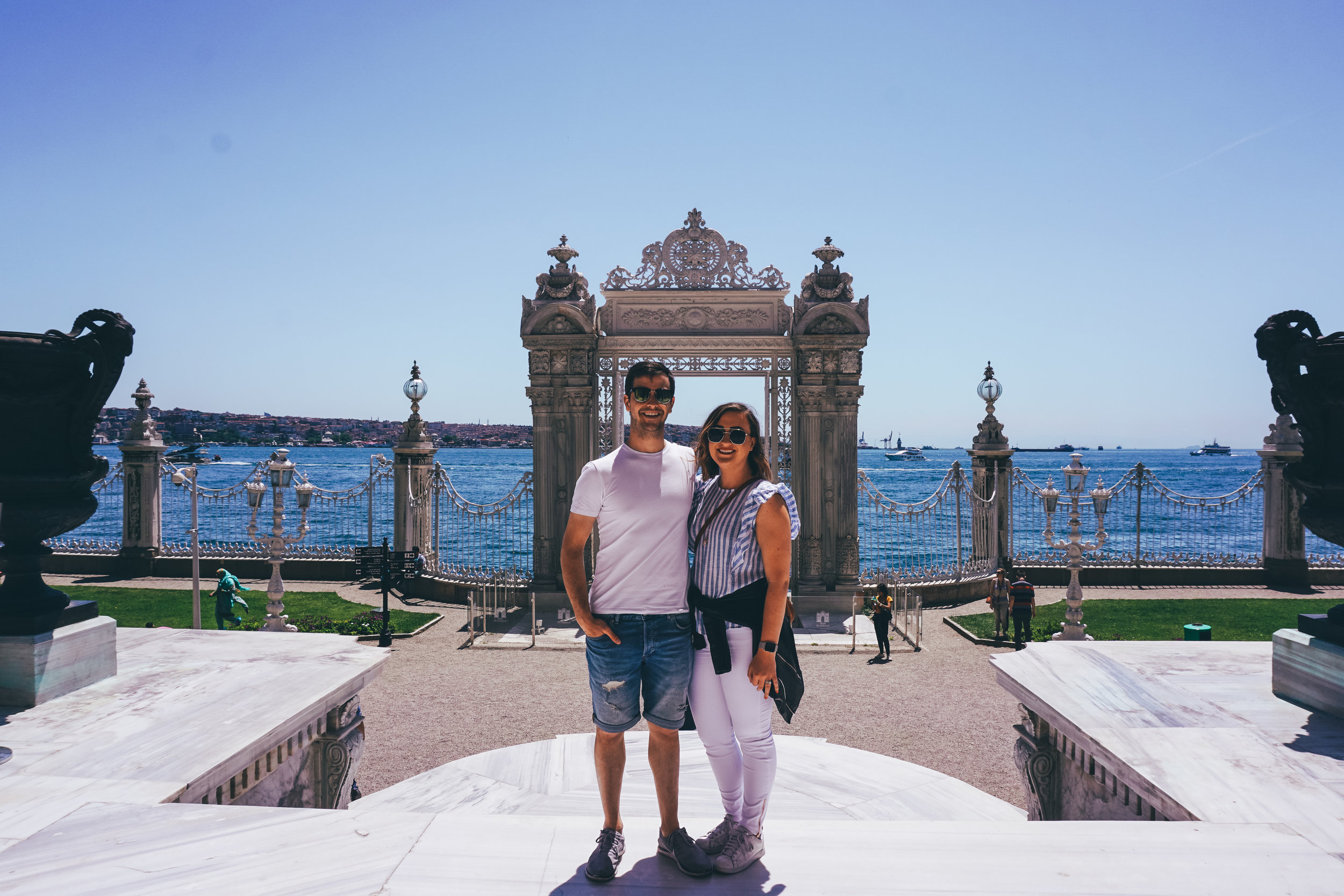
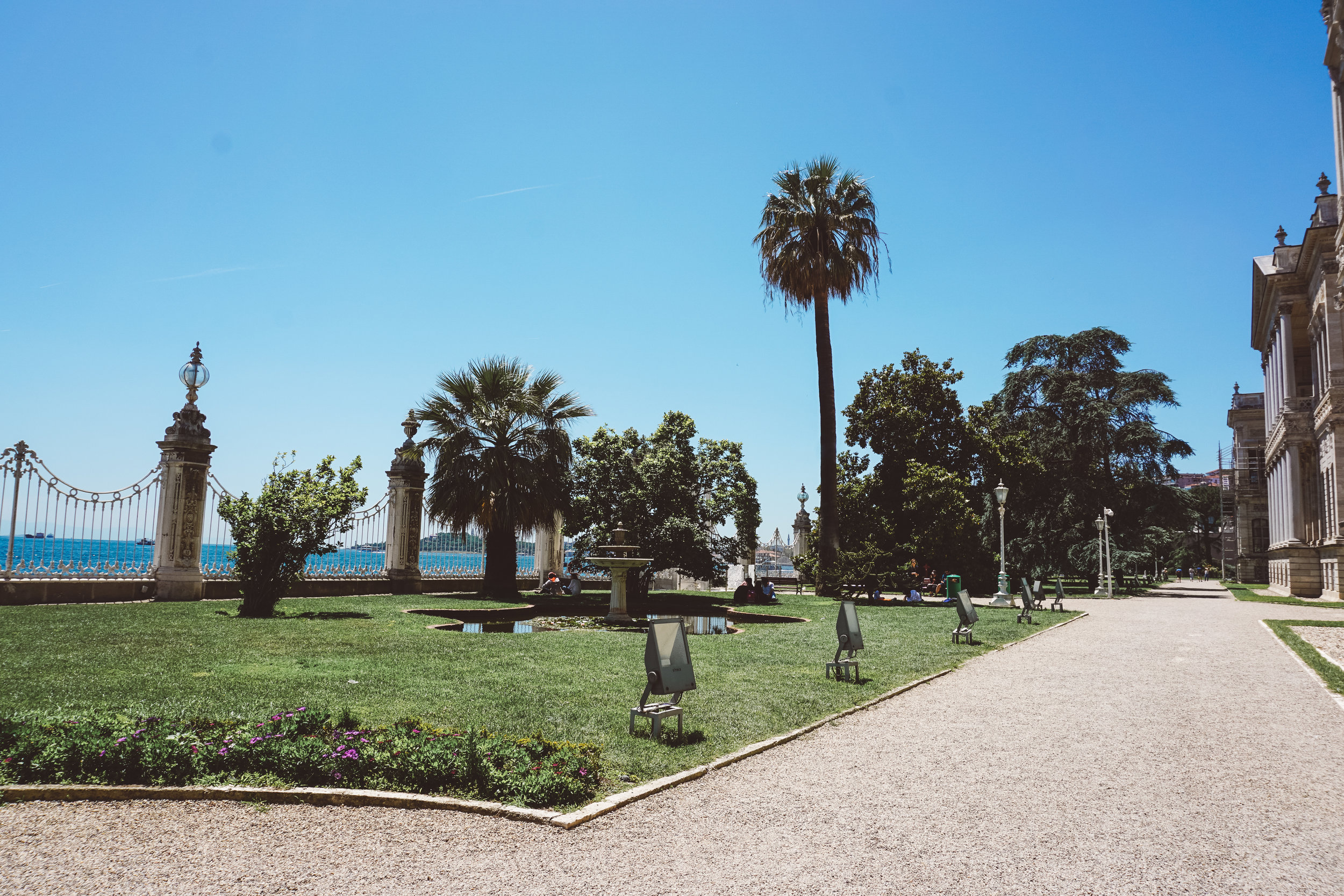
You will not regret visitng Dolmabahçe if you visit Istanbul! The palace is open every day except Mondays and Thursdays from 9:00 a.m. - 3:00 p.m. Entry is ₺30 / $6.50 /€5.60.
BOSPHORUS CRUISE
Istanbul is surrounded by water -- the Black Sea, Marmara Sea, and the Bosphorus Strait. We all know at this point that Chris and I have to get on the water wherever we go and lucky for us, as part of our private guided tour, Özgür took us out on a cruise on the Bosphorus. There cruises run several times each day, but the best time to go is earlier in the morning when it's less crowded.
The Bosphorus Strait is a crazy body of water. It is zig-zag shaped and has two currents making it incredibly difficult to navigate. Recently, a massive barge lost control and crashed into one of the priceless historical homes on the water. So that wasn't great. In an effort to minimize accidents on the Bosphorus, boat traffic runs one way for six hours of the day while the other boats wait docked in the harbour, and then it switches directions for the next six hours.
The boat departs from Eminönü Pier and cruises up the European side past the Dolmabahçe Palace, mosques, cool neighborhoods, under crazy suspension bridges, and past a massive Ottoman fortress. Fun fact about the fortress: it was built in the shape of Muhammad's name in Arabic, which can be seen from a bird's eye view. The Asian side is more residential and much quieter than the European side. The homes are massive, averaging four to six stories high. The homes are made of wood and are from the 18th century meaning they are some of the most desireable properties in the city.
The cruise was an hour and forty-five minutes long and gave us great views of both sides of Istanbul. It was a beautiful, sunny day, so getting on the water felt great. The only let down of the cruise was we didn't get to see any dolphins! Lots of jellyfish, but no jumping dolphins.
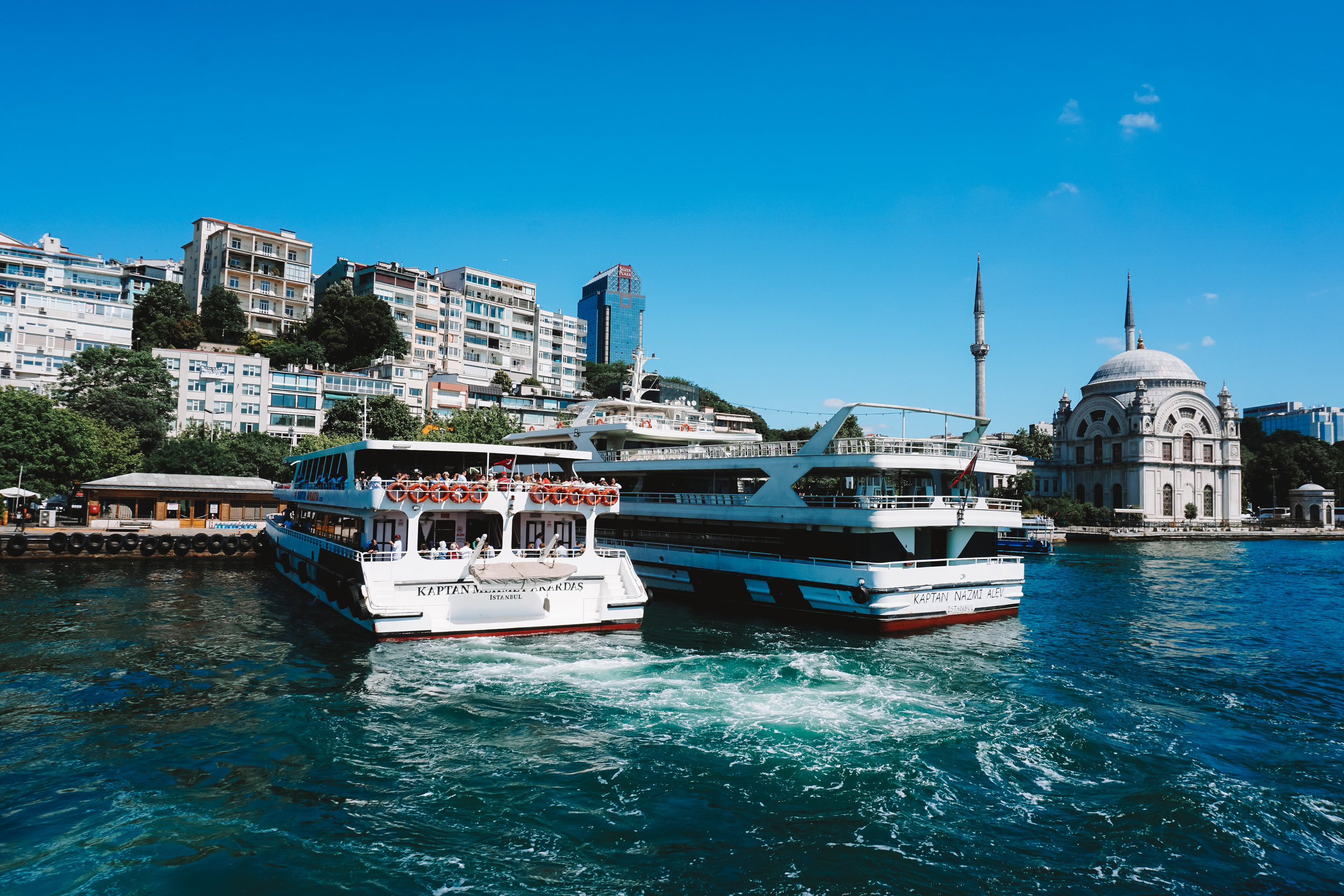
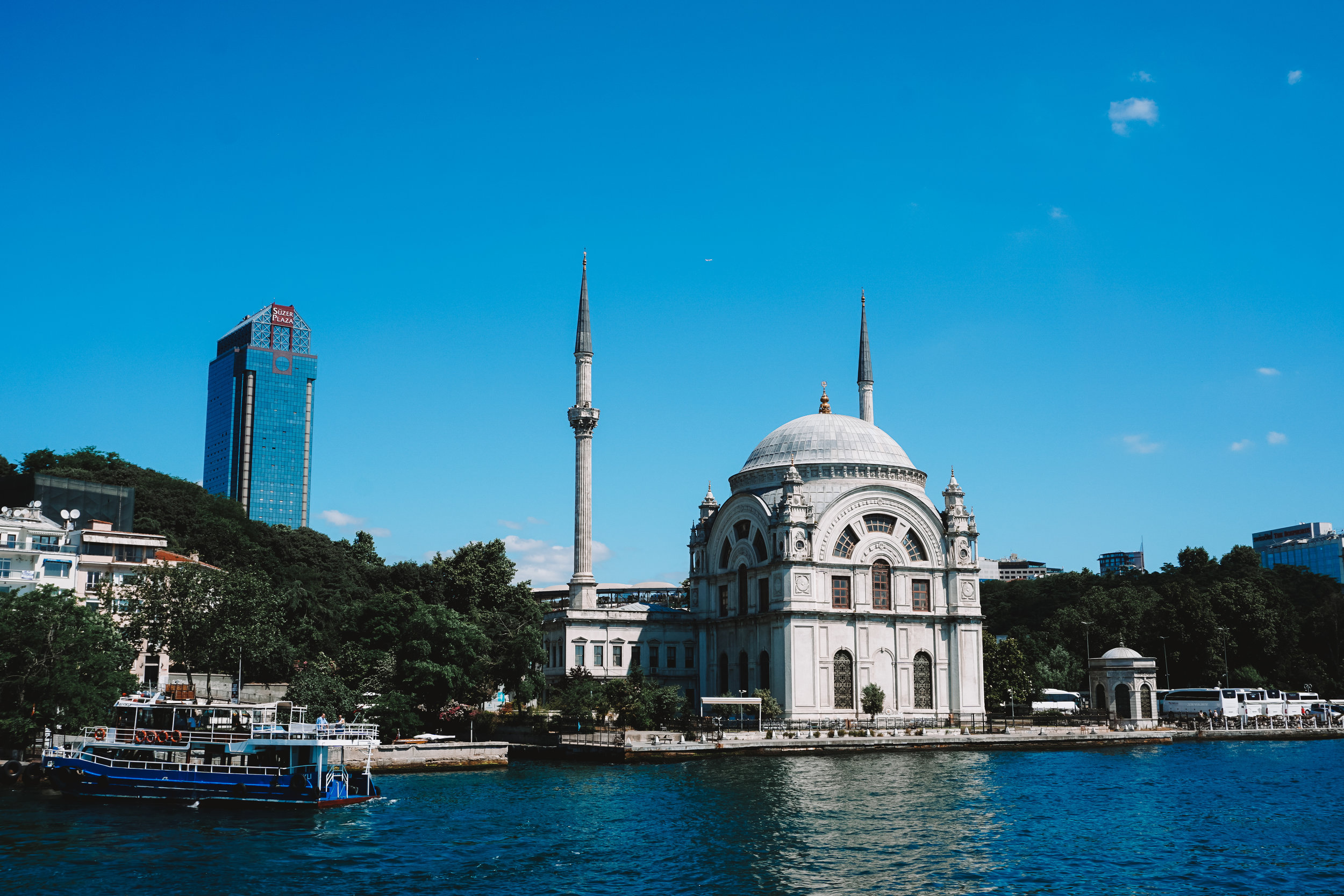
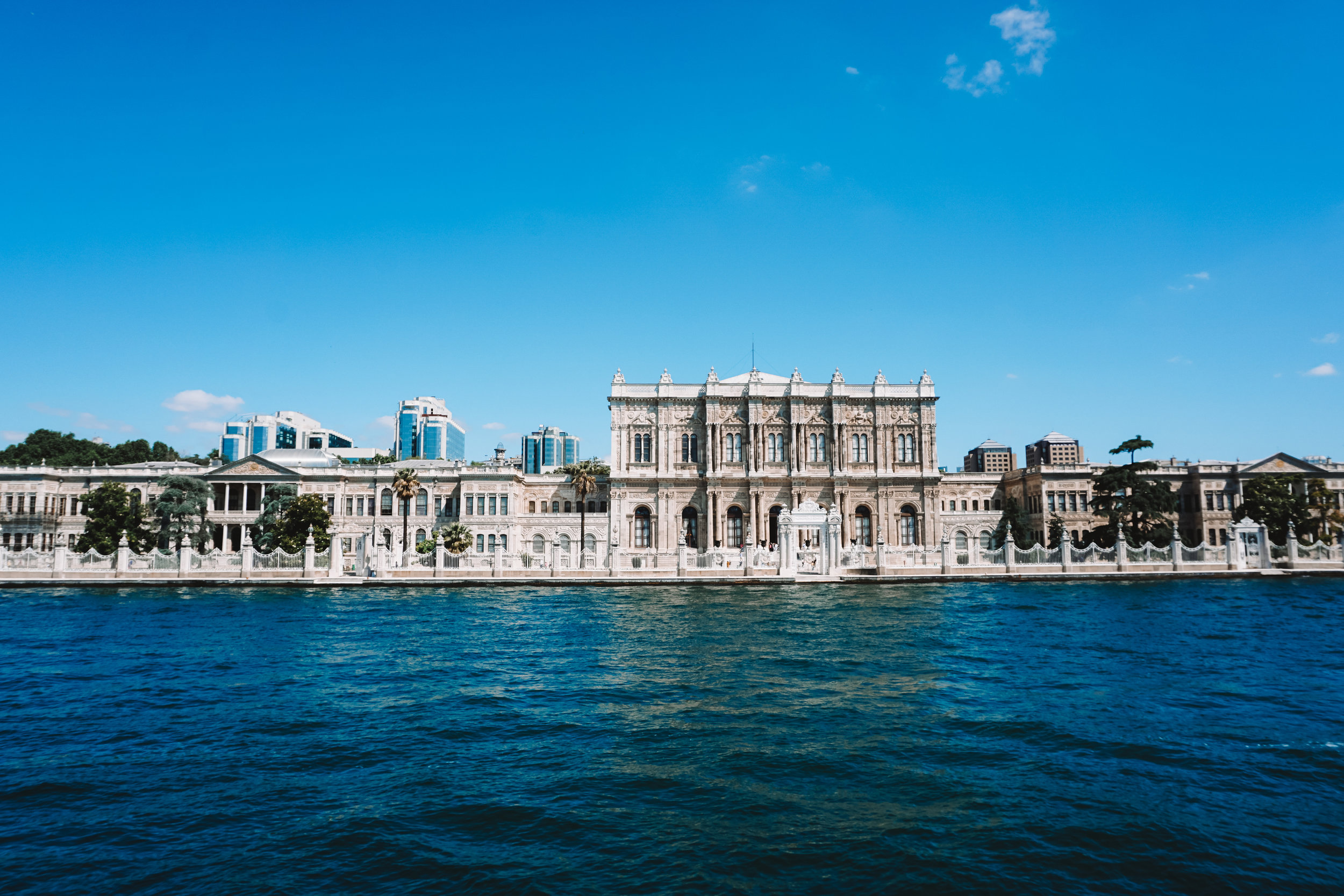
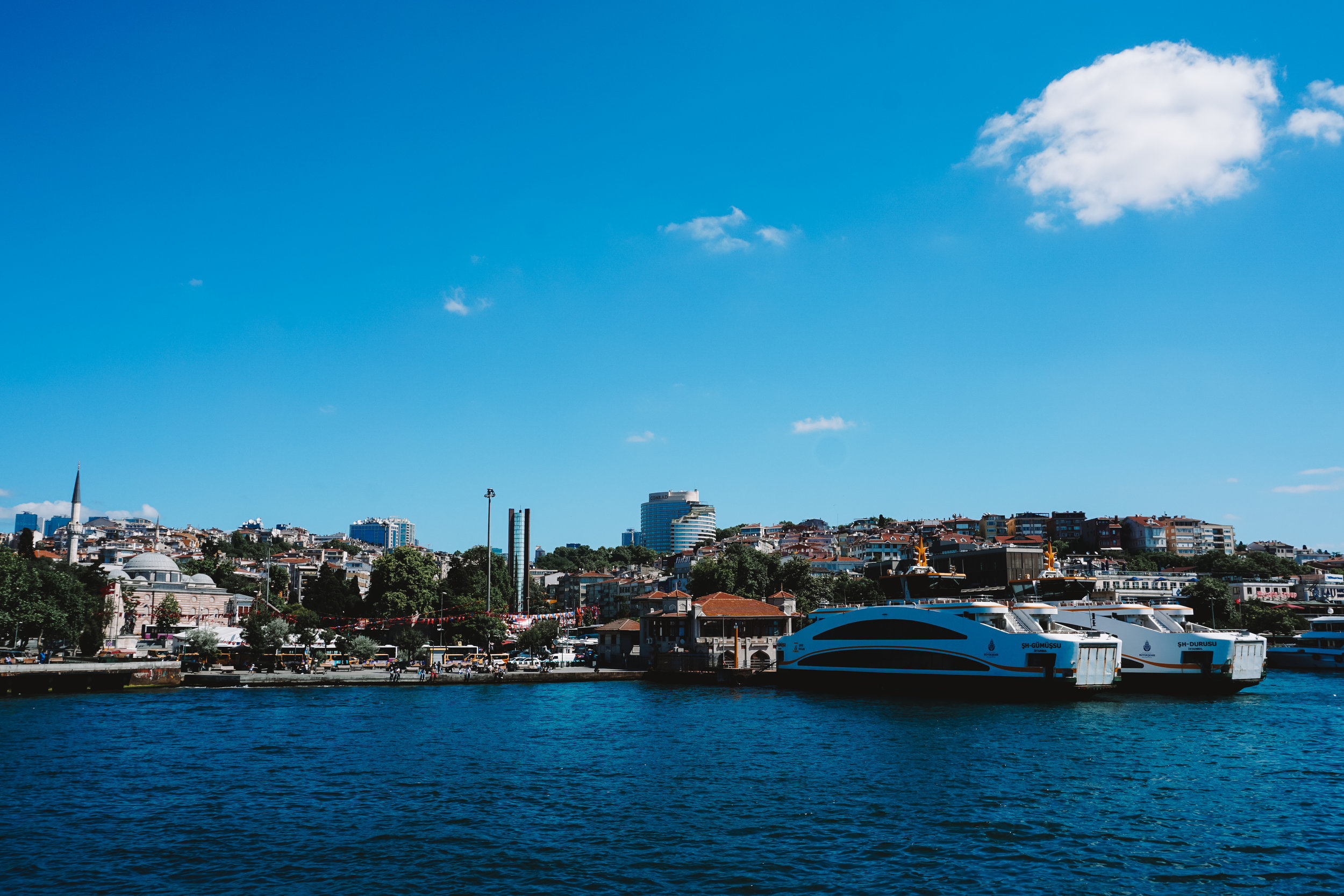
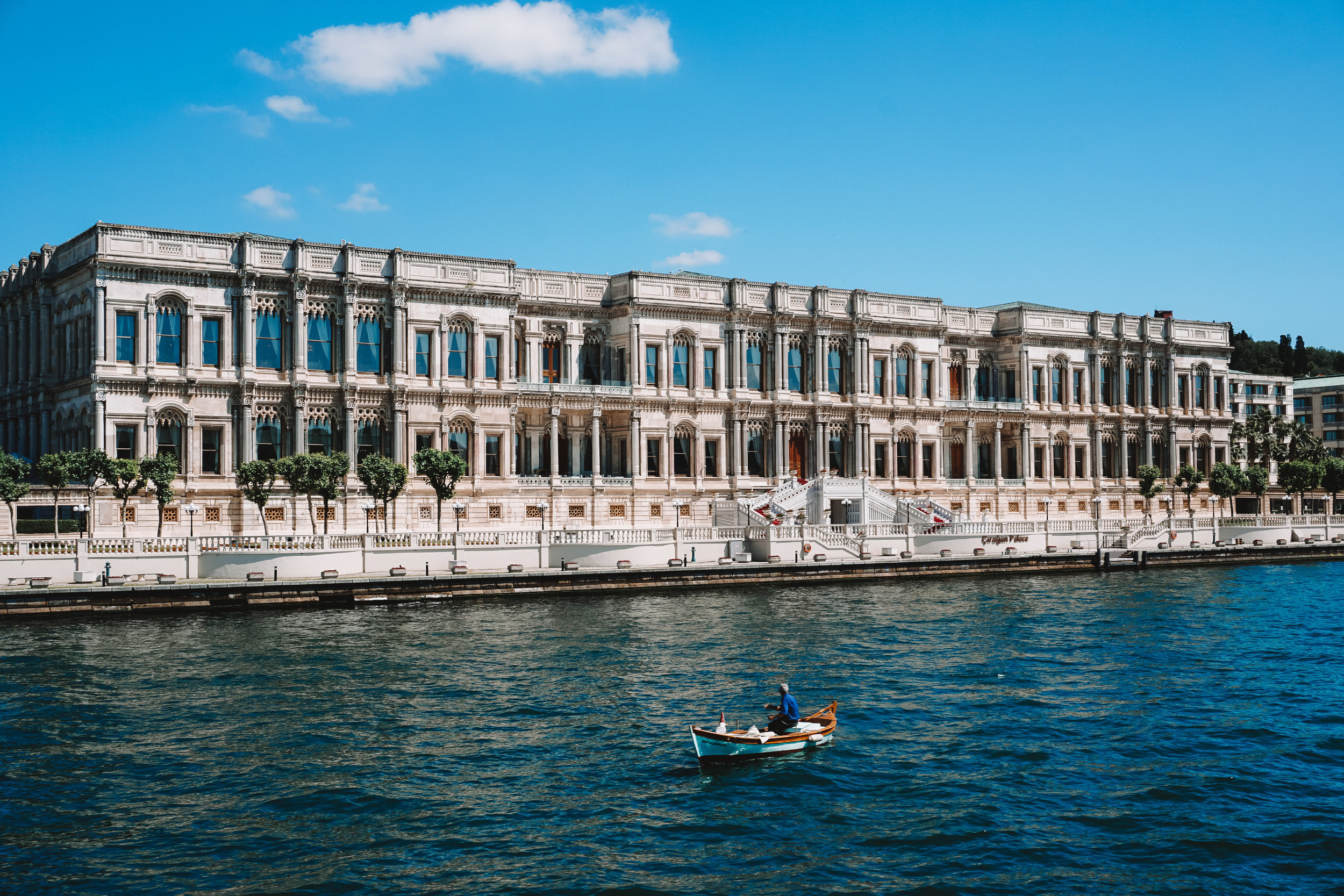
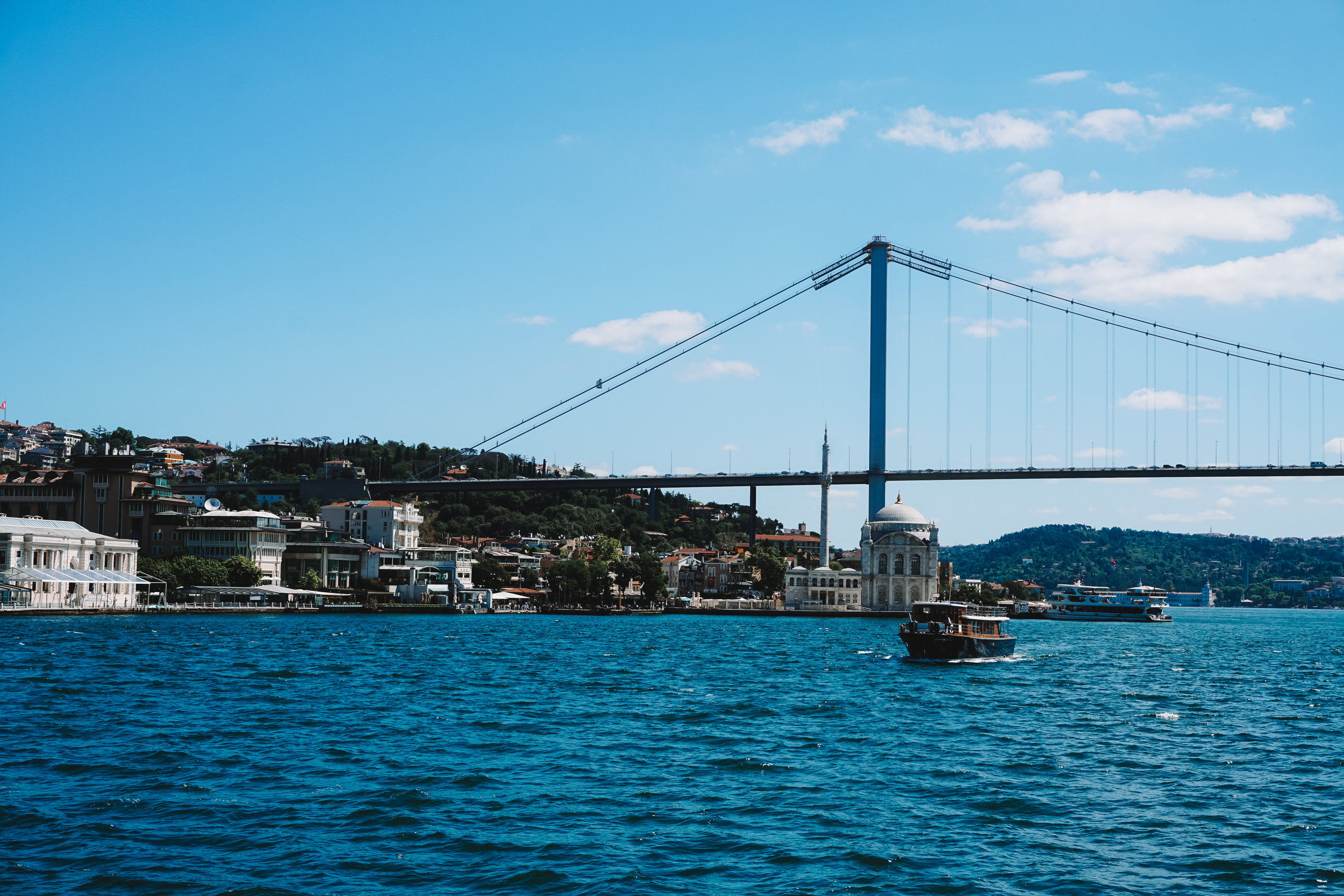
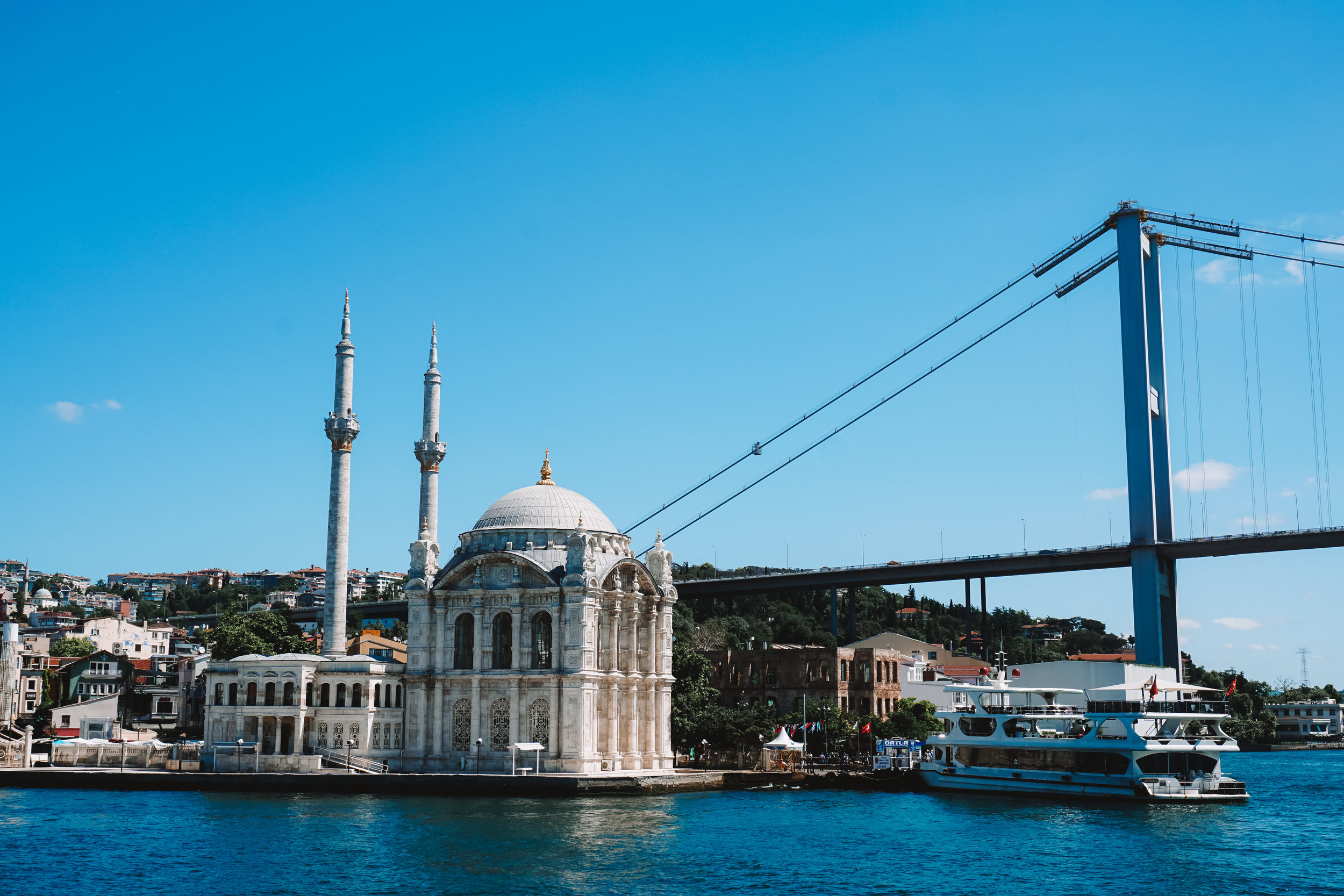
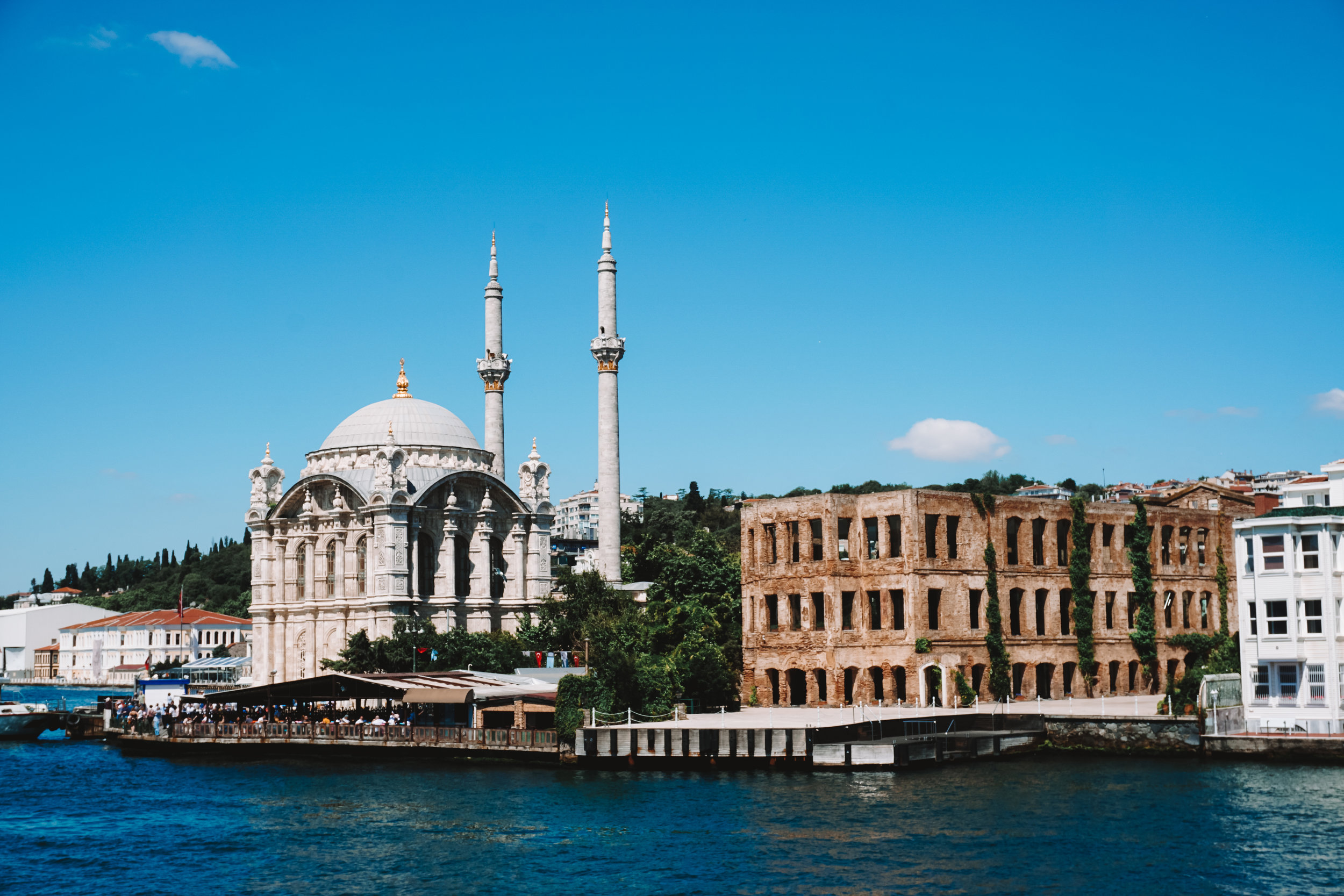
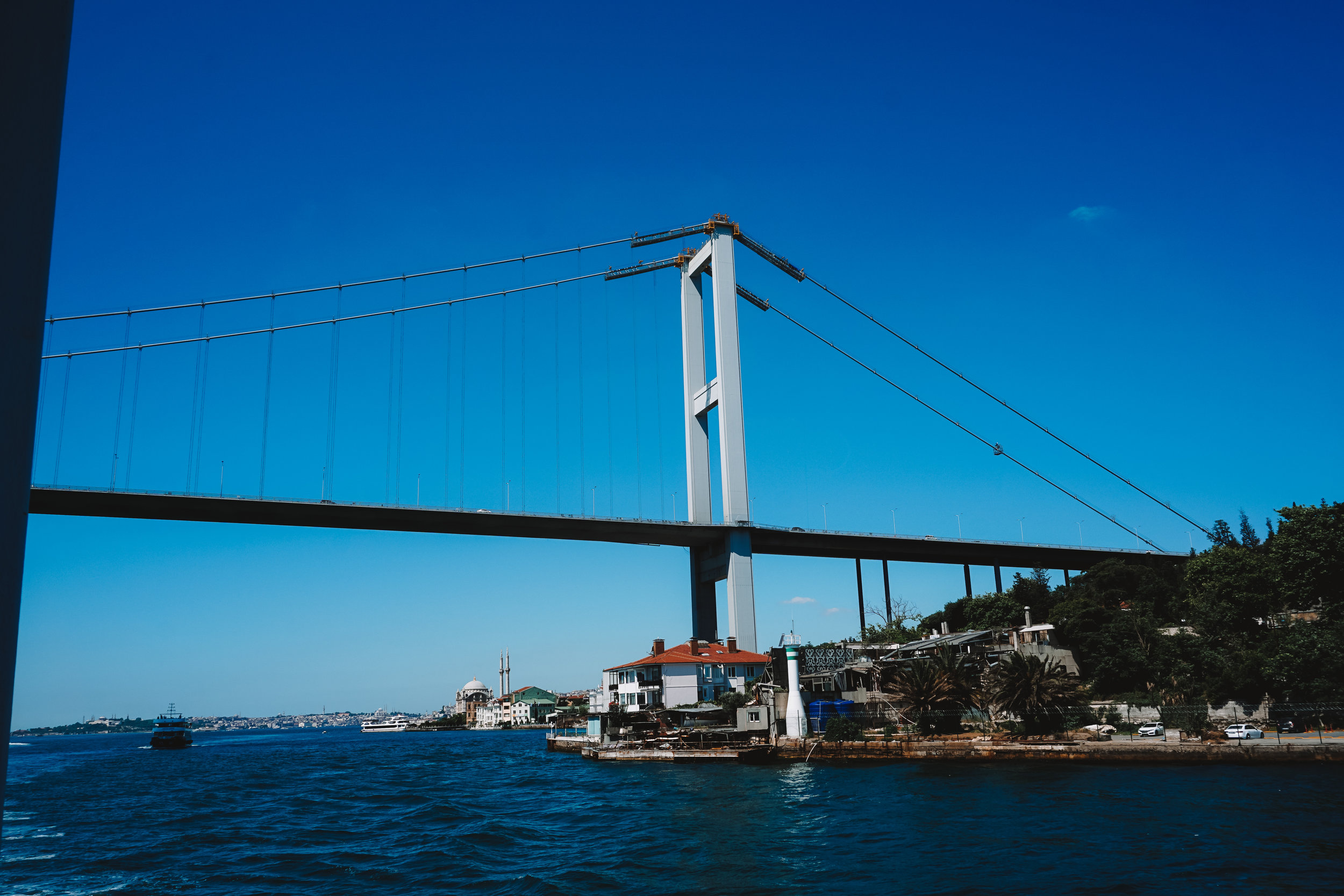
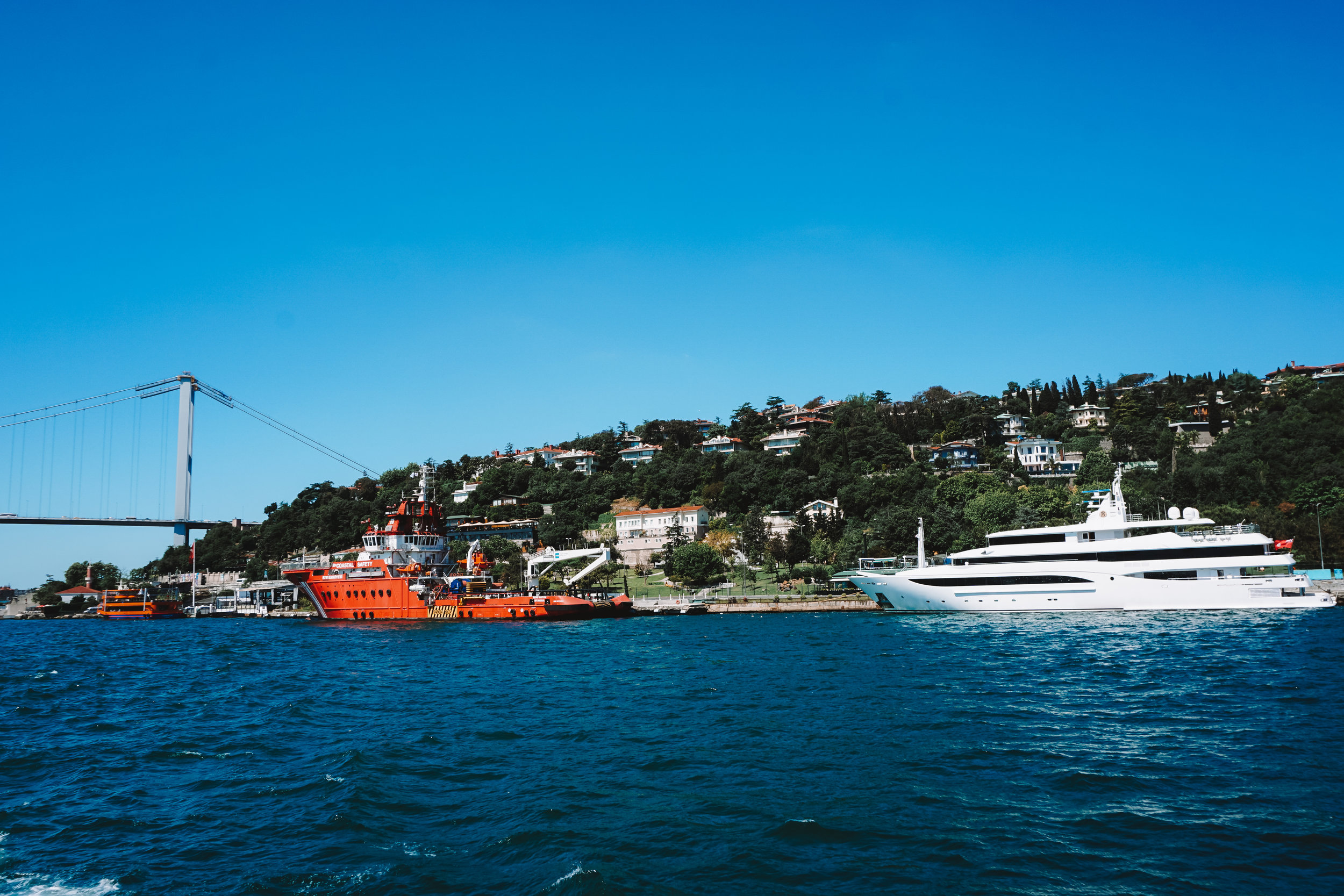
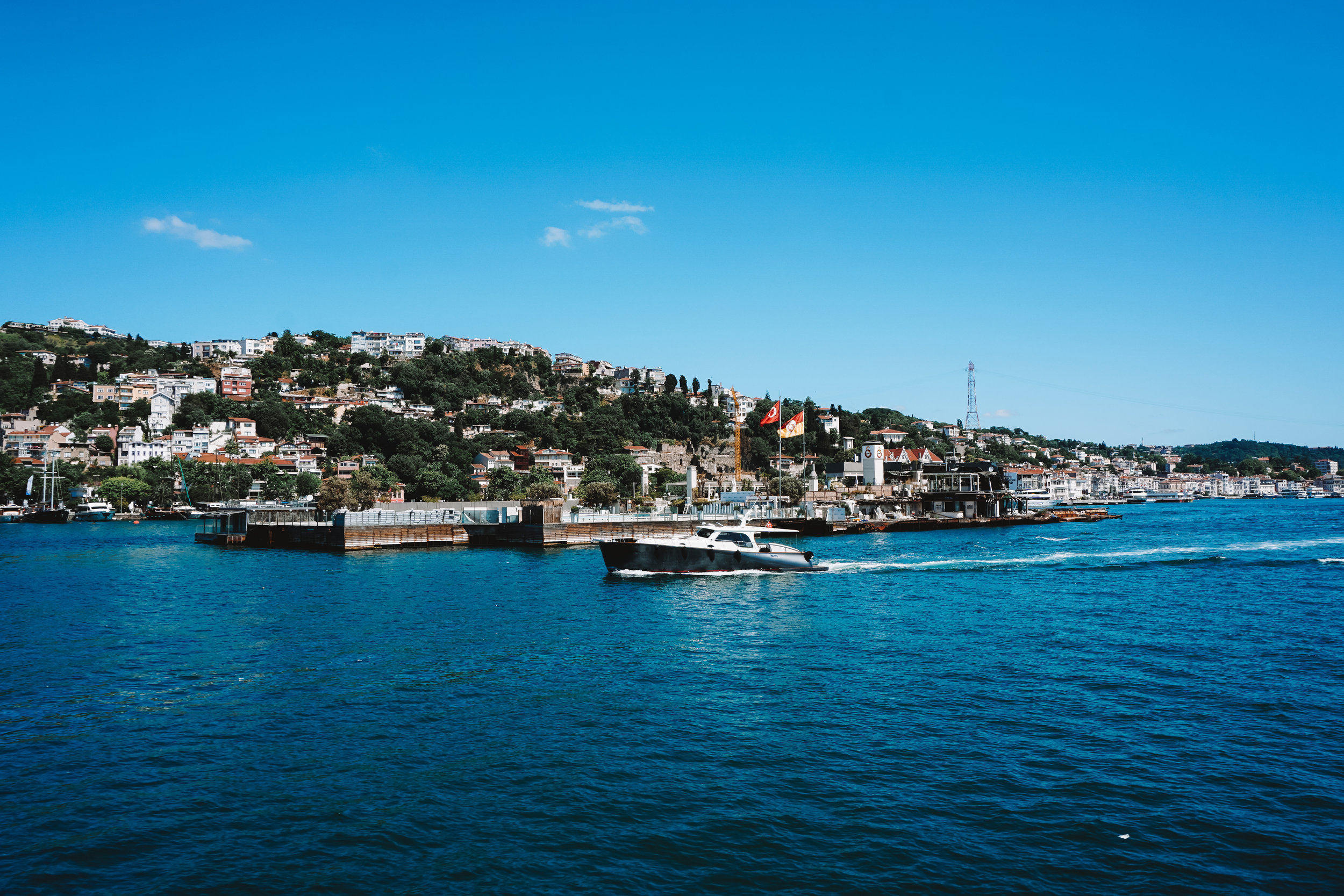


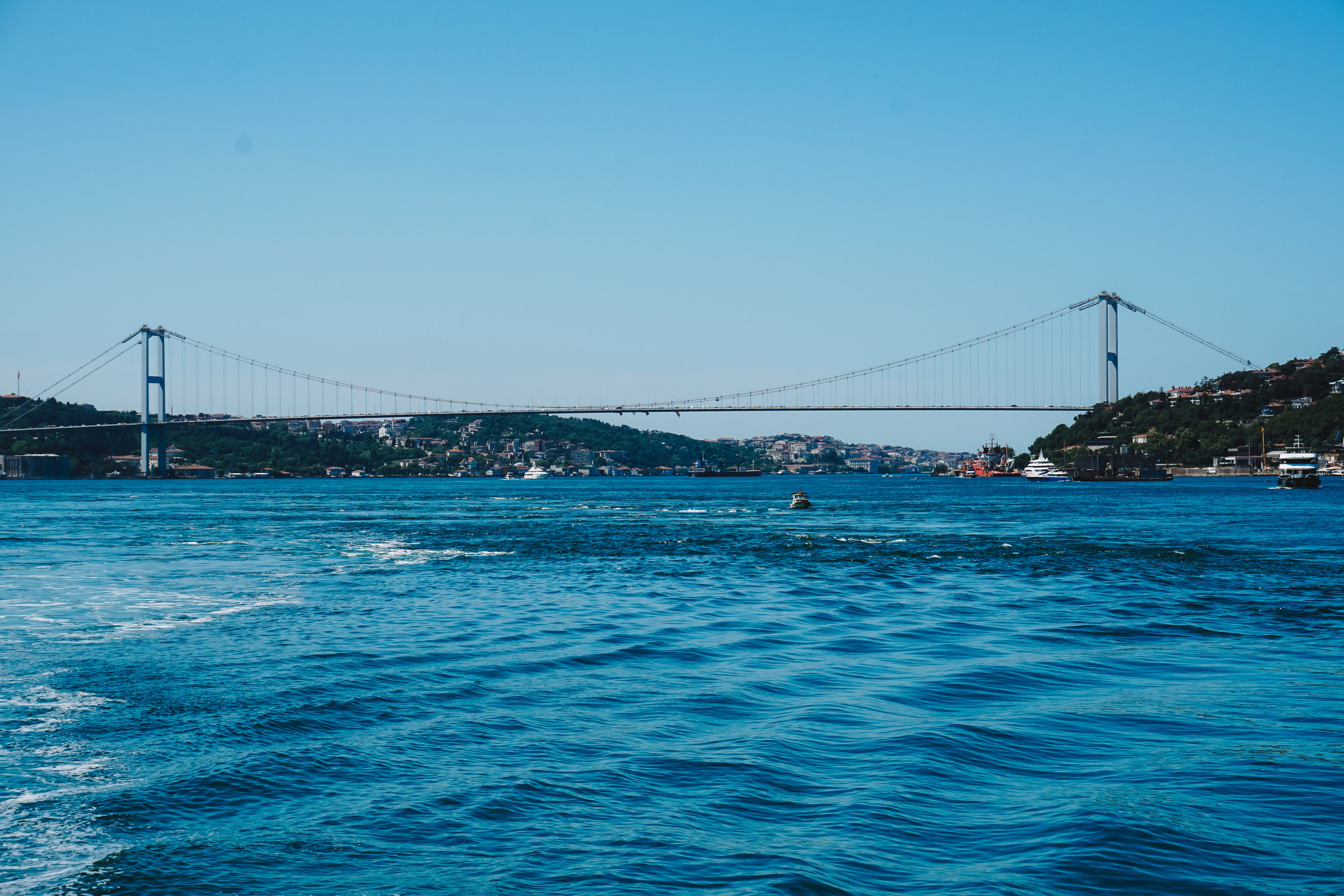
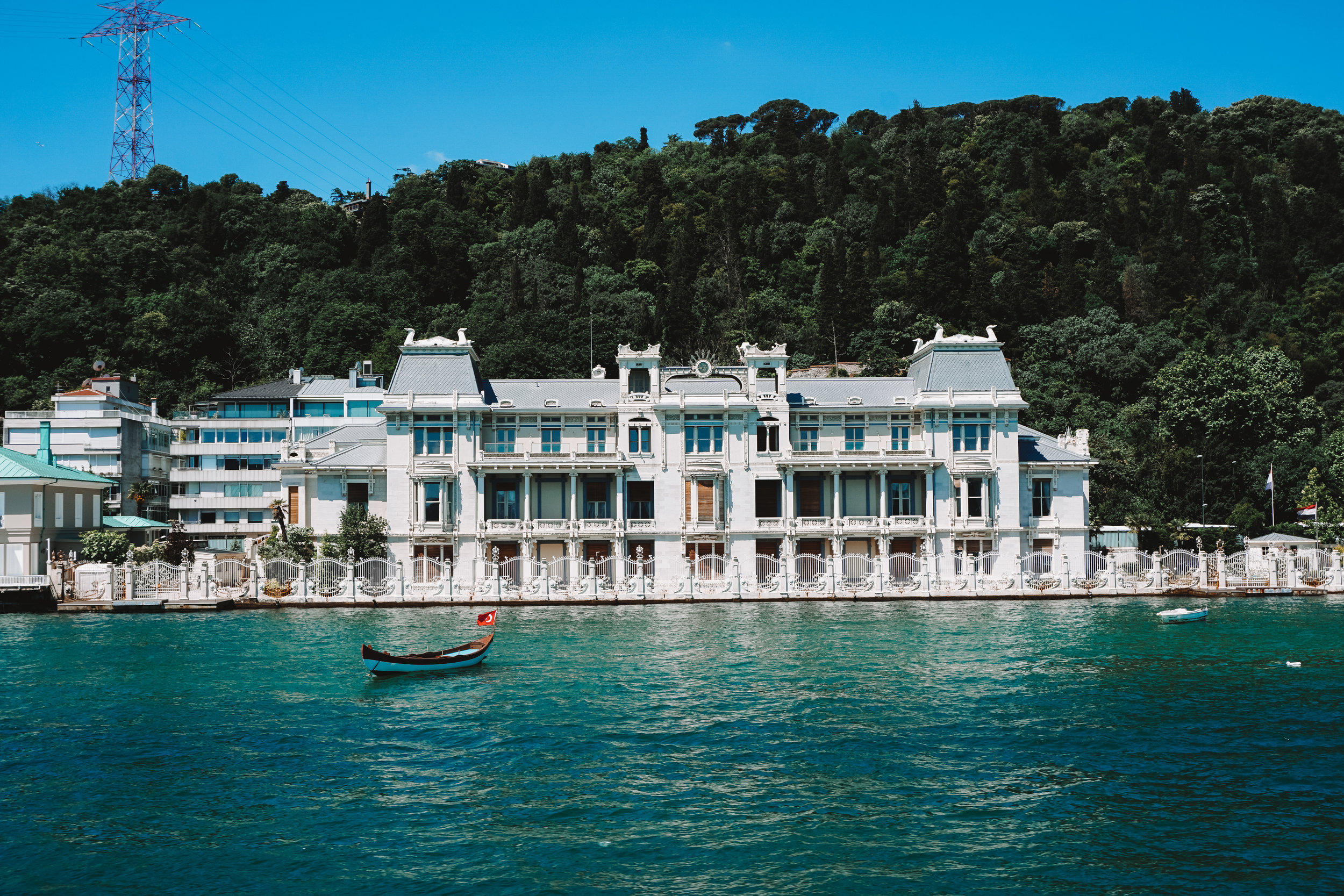
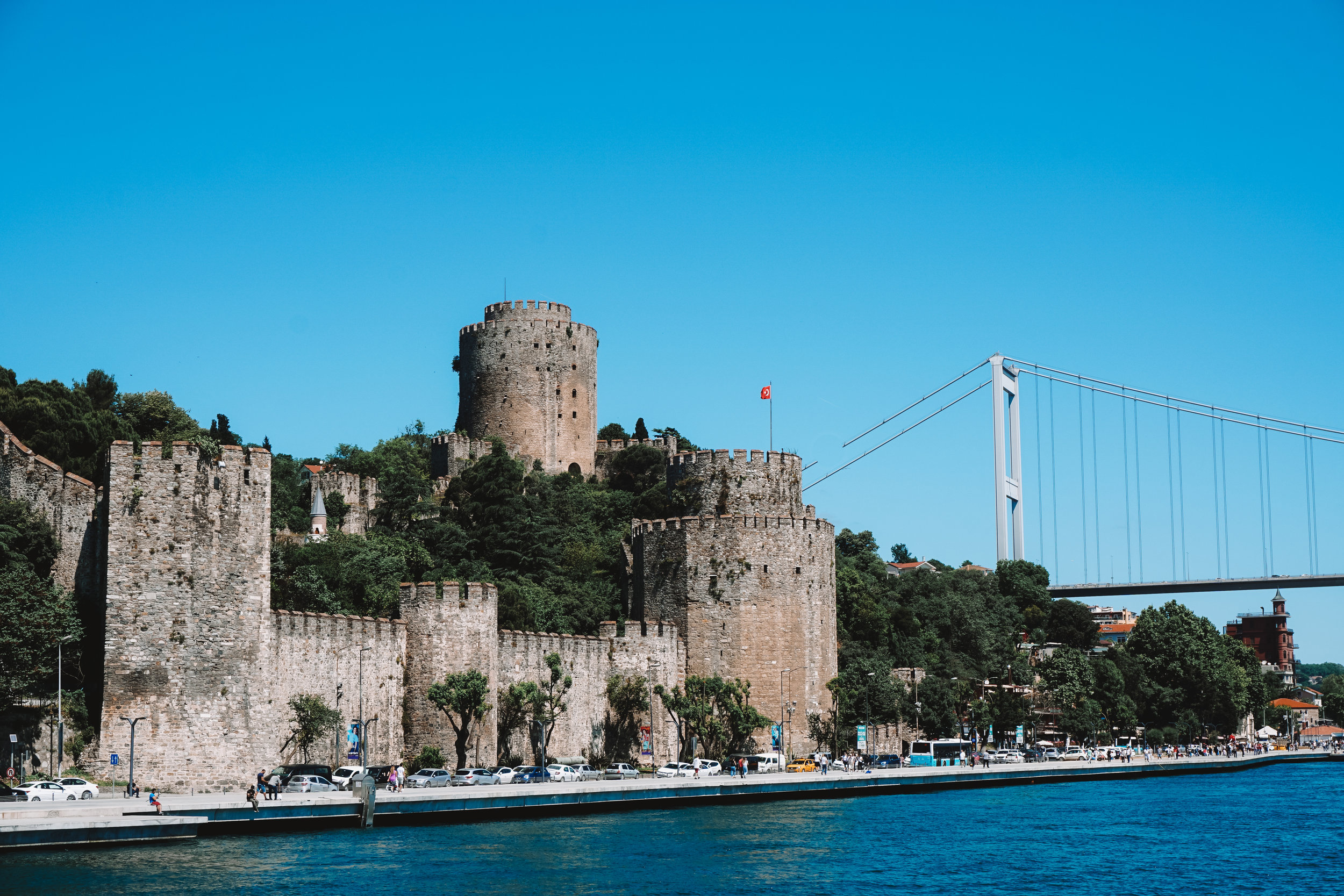
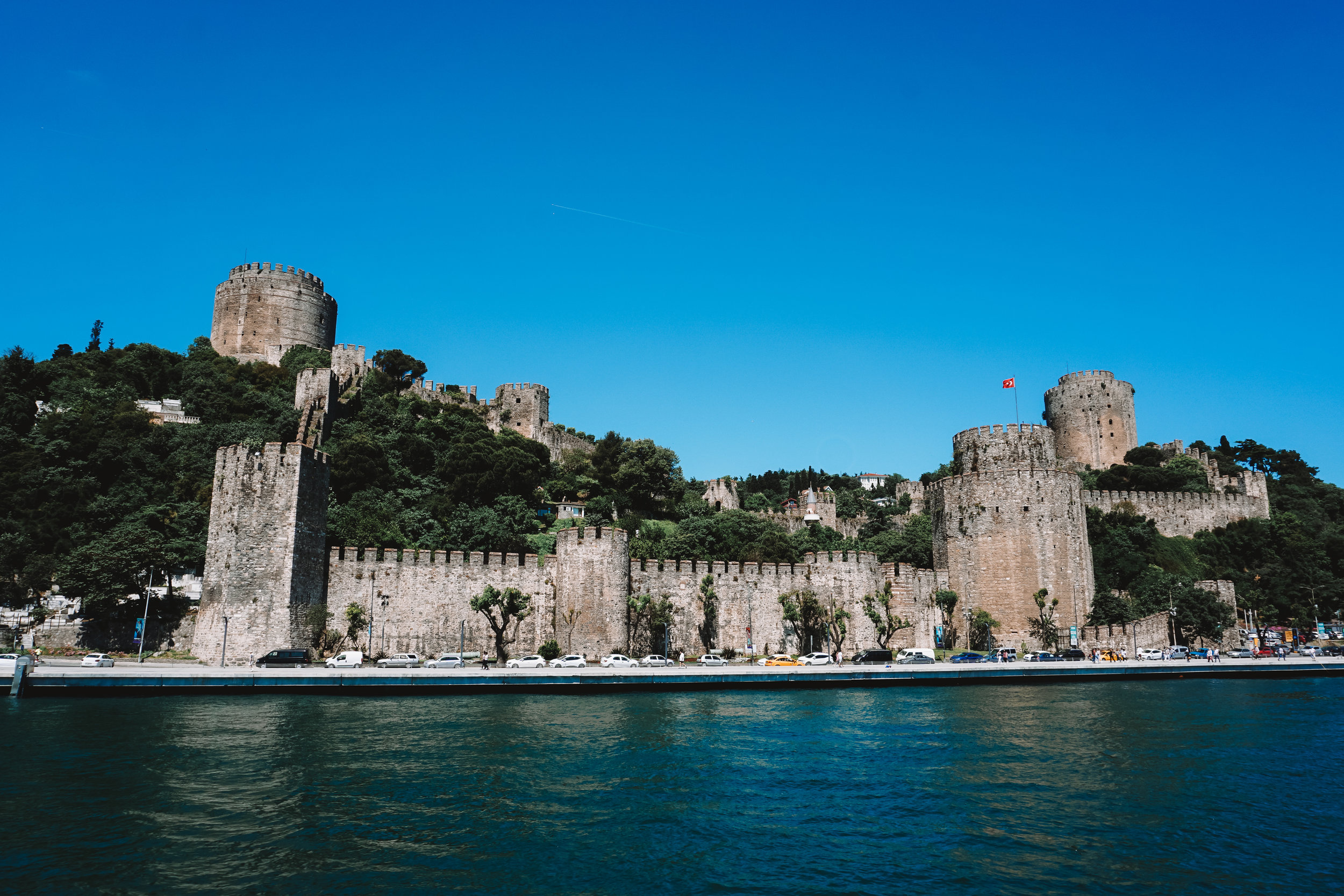
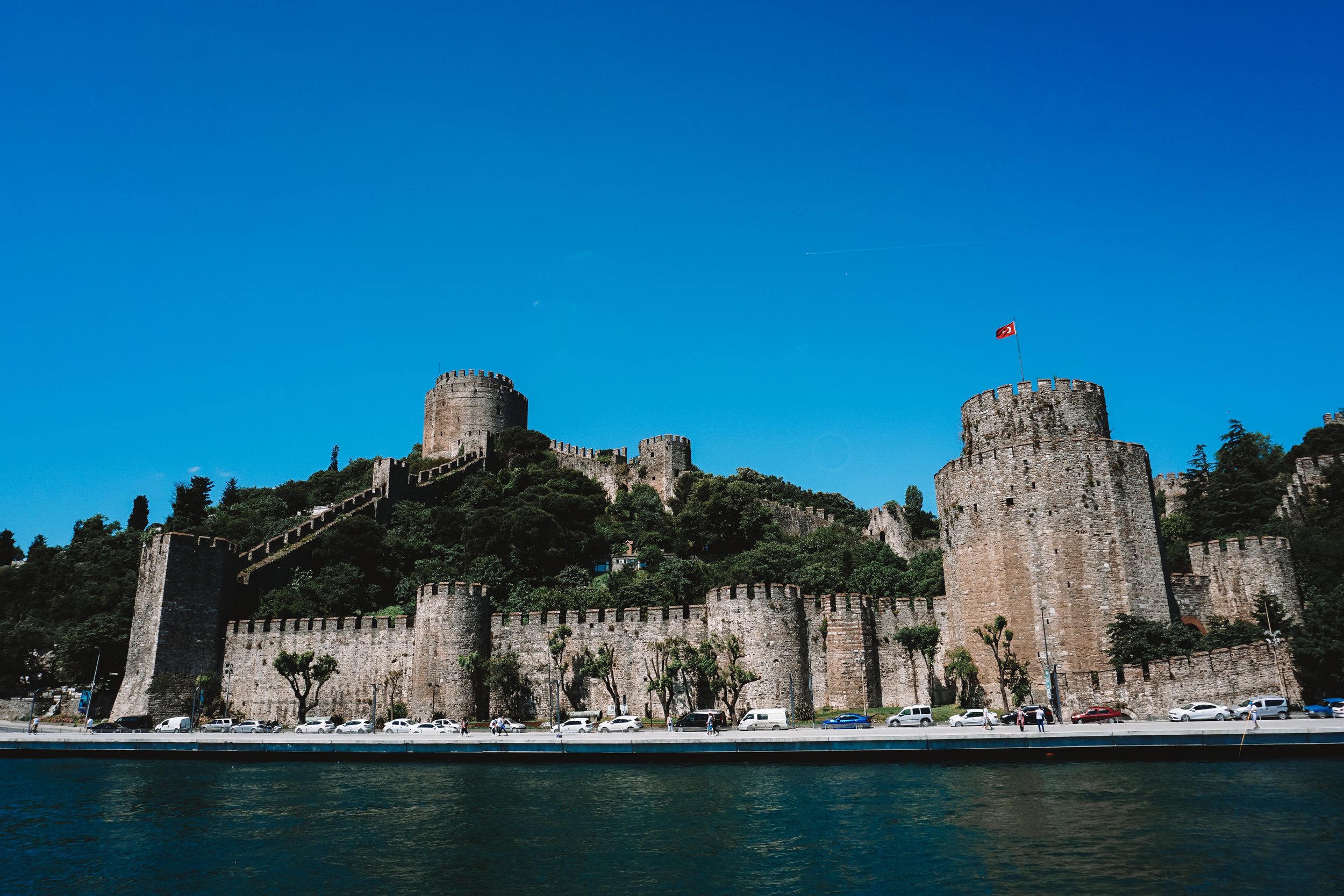
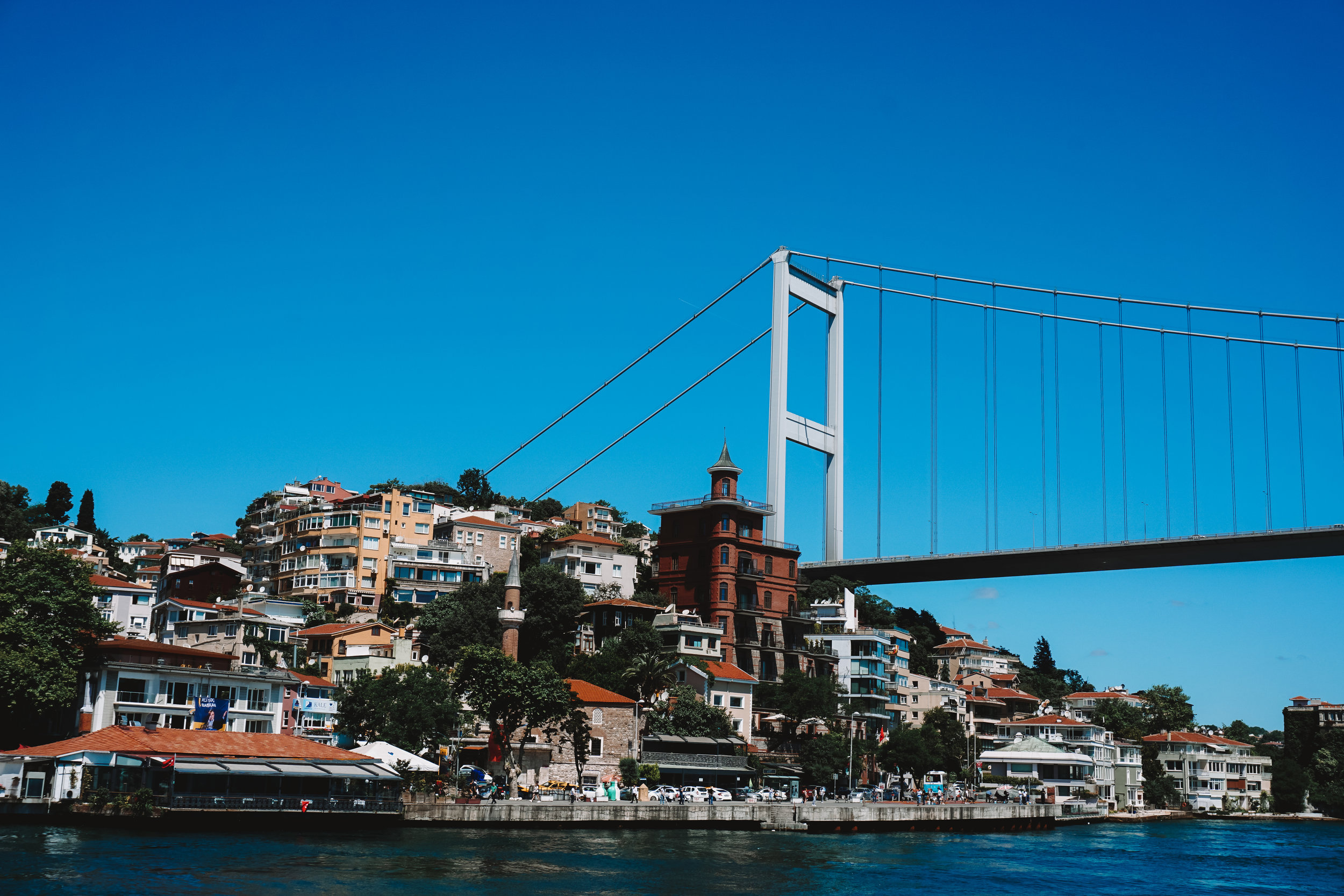
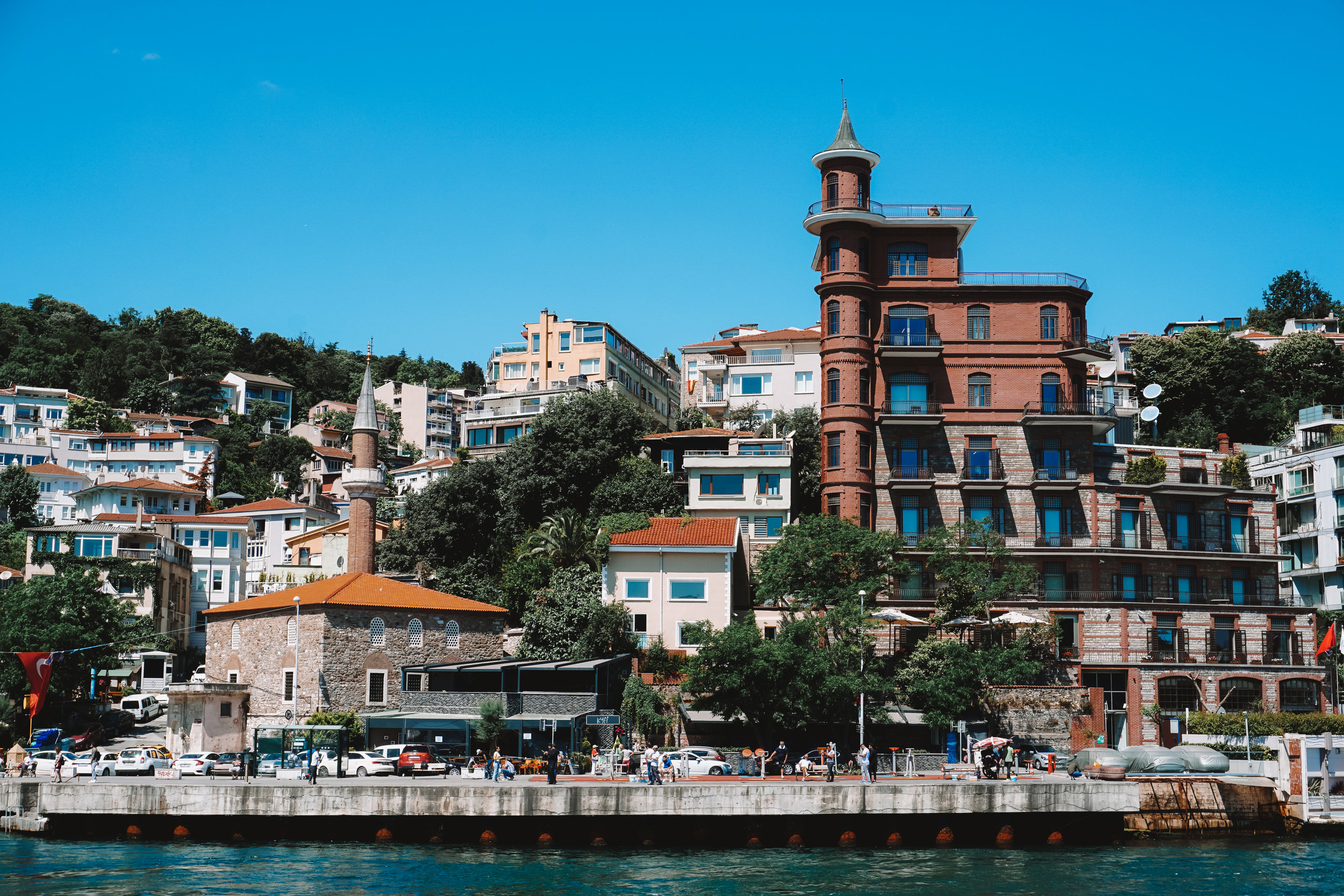
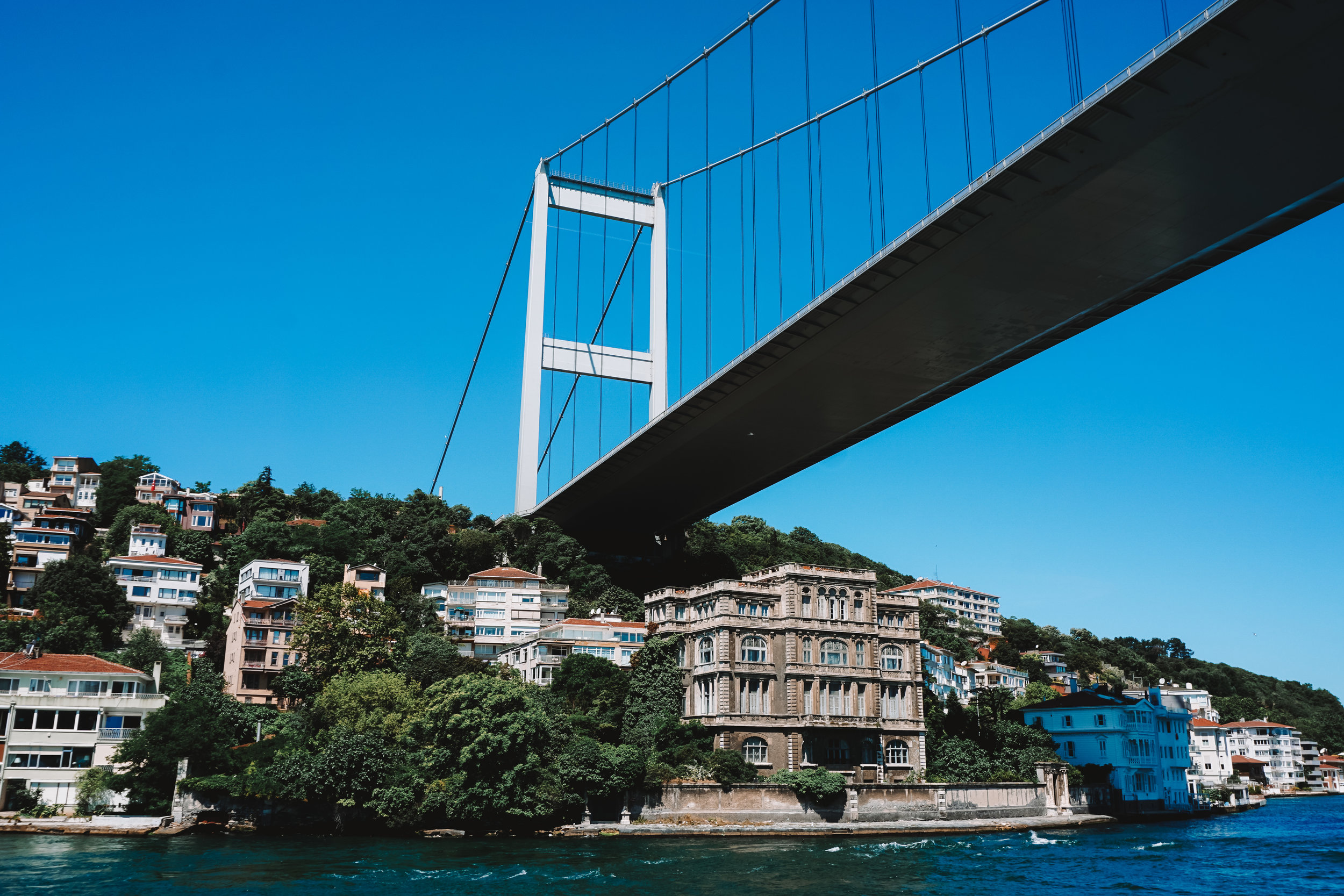
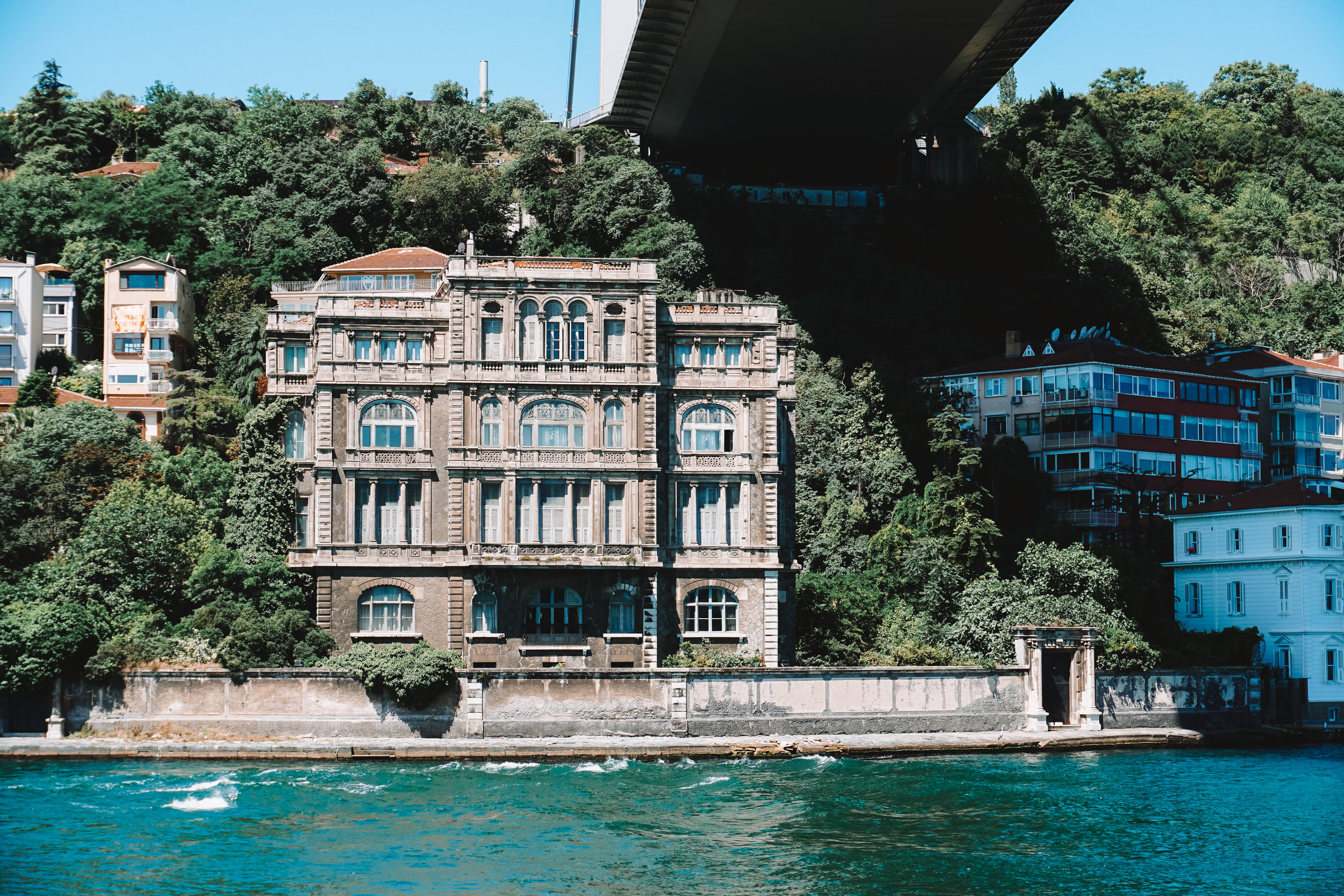
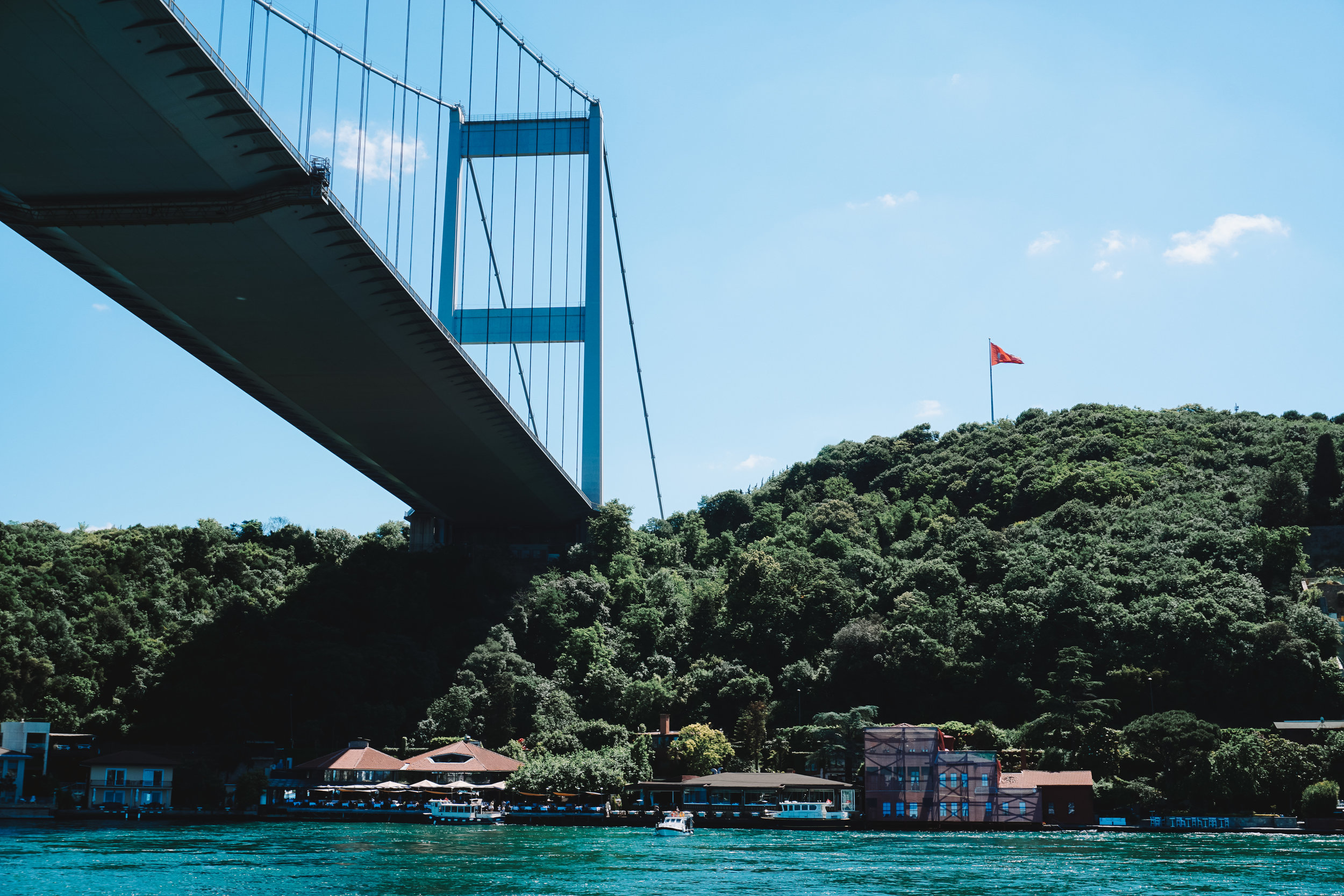
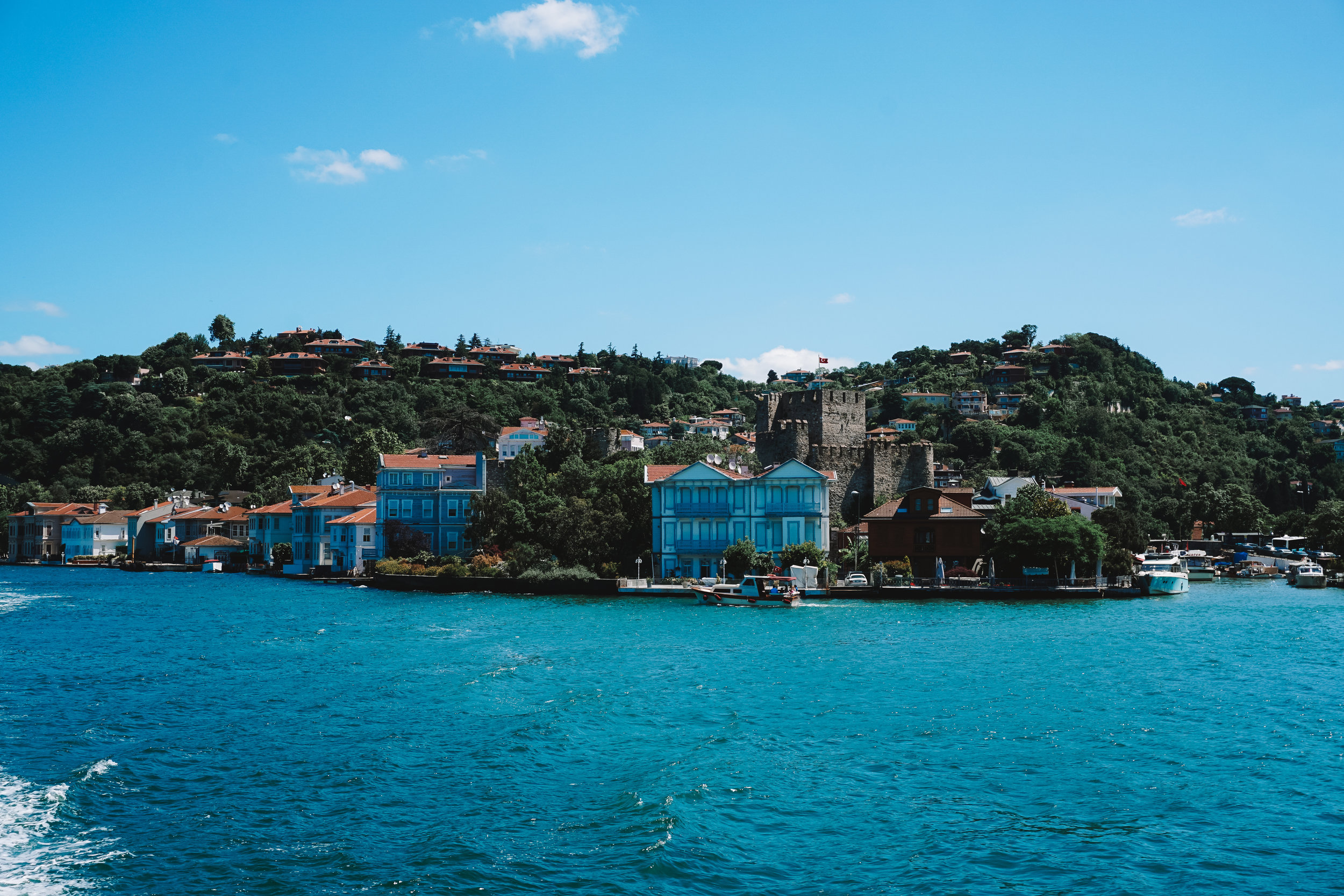
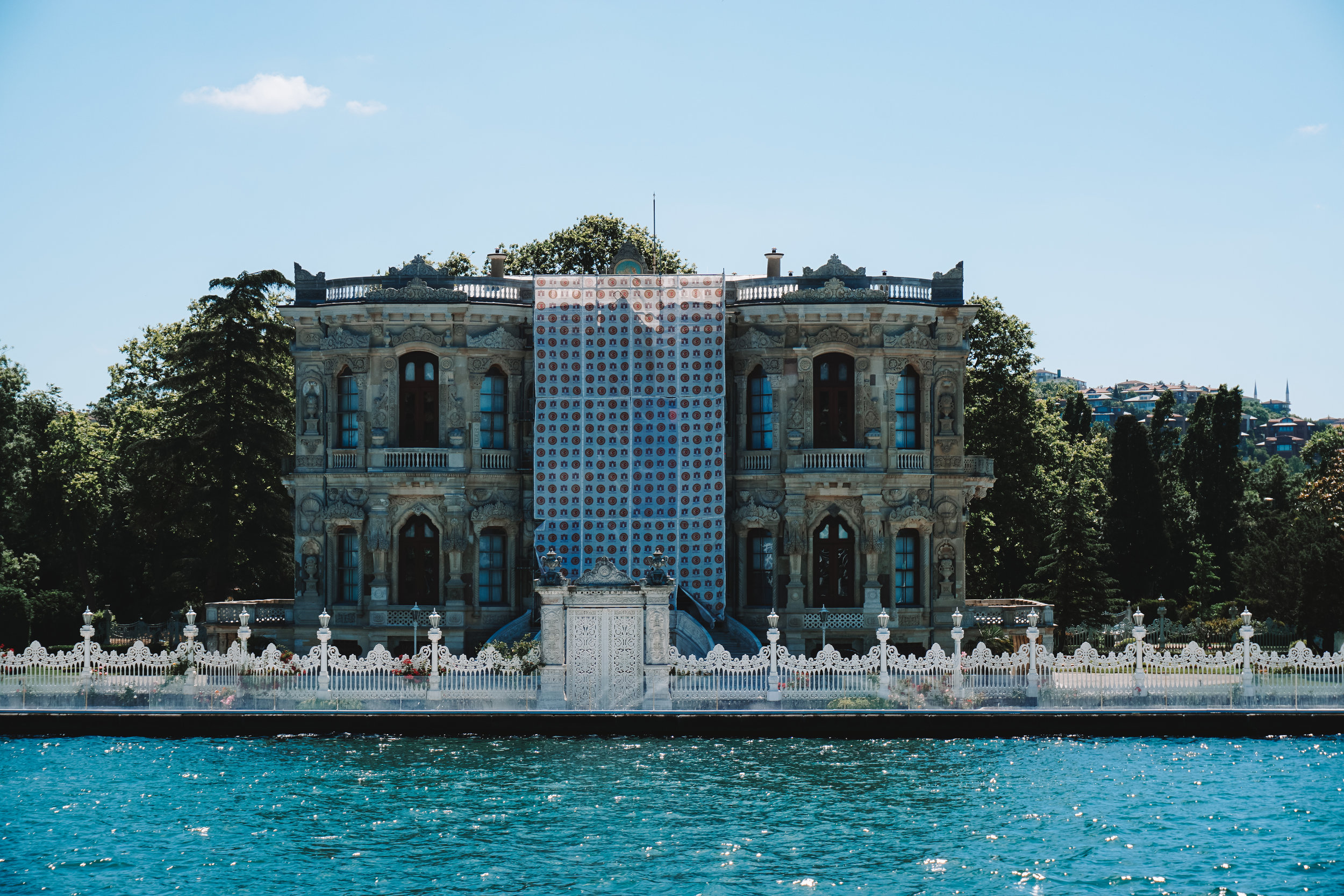
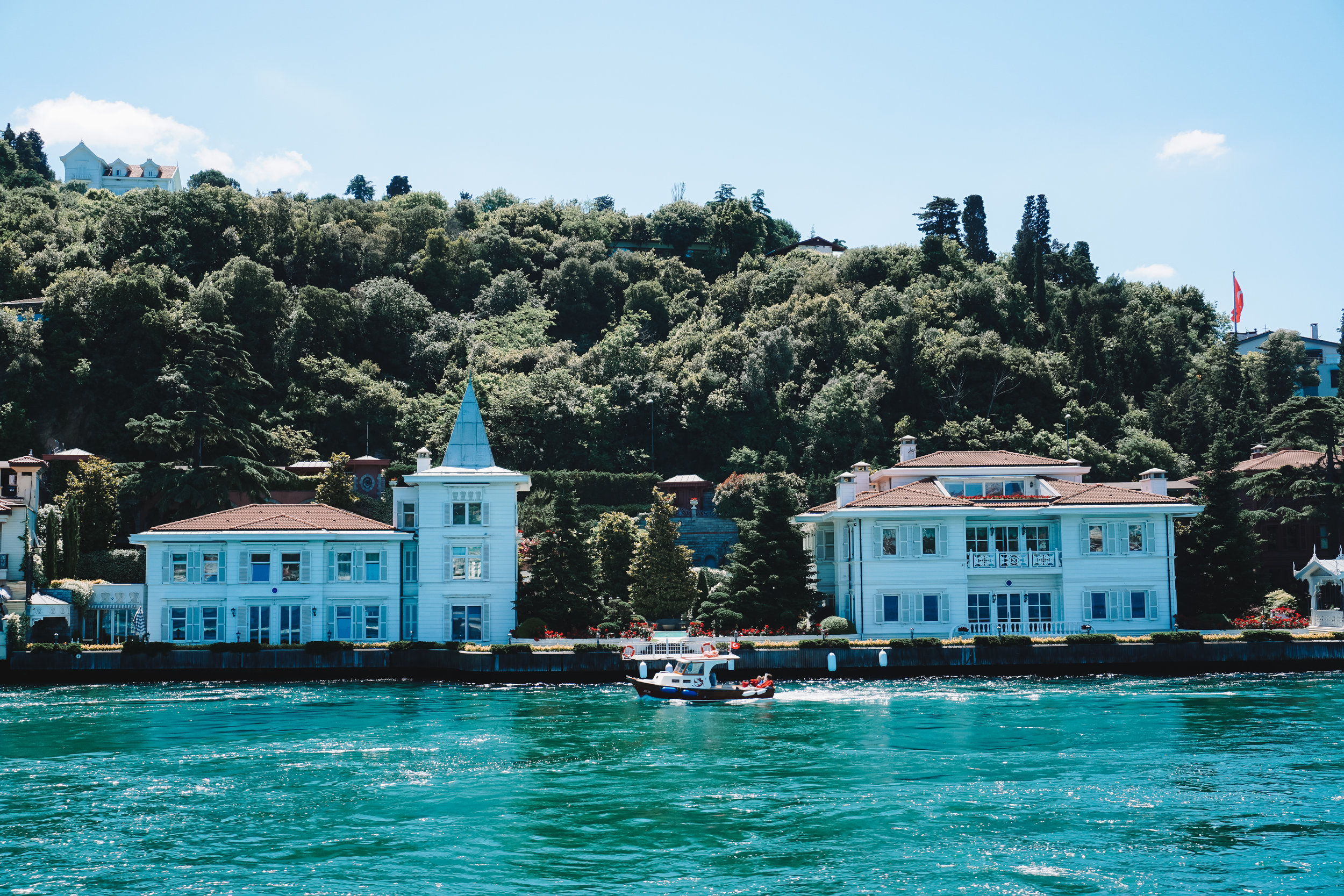
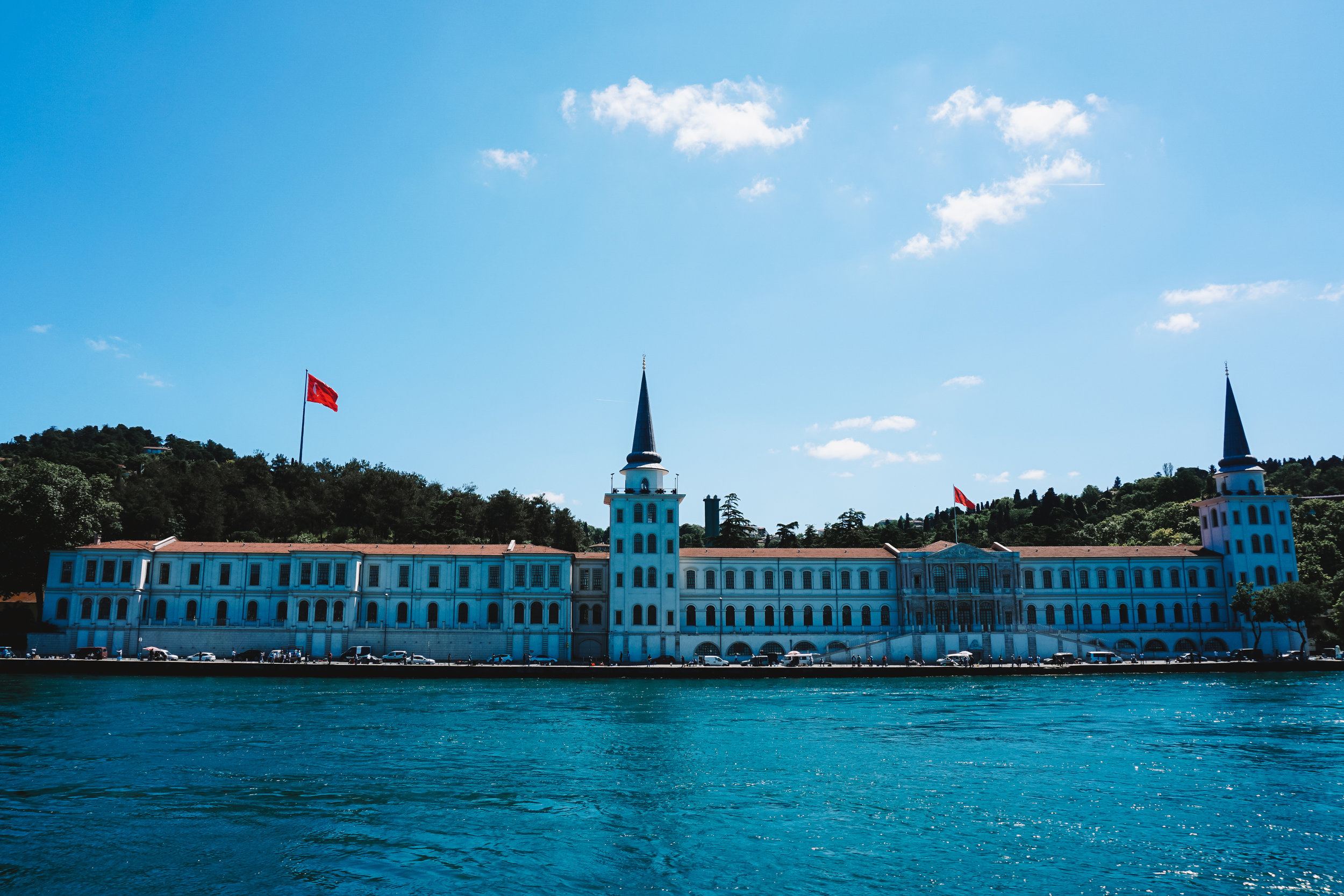
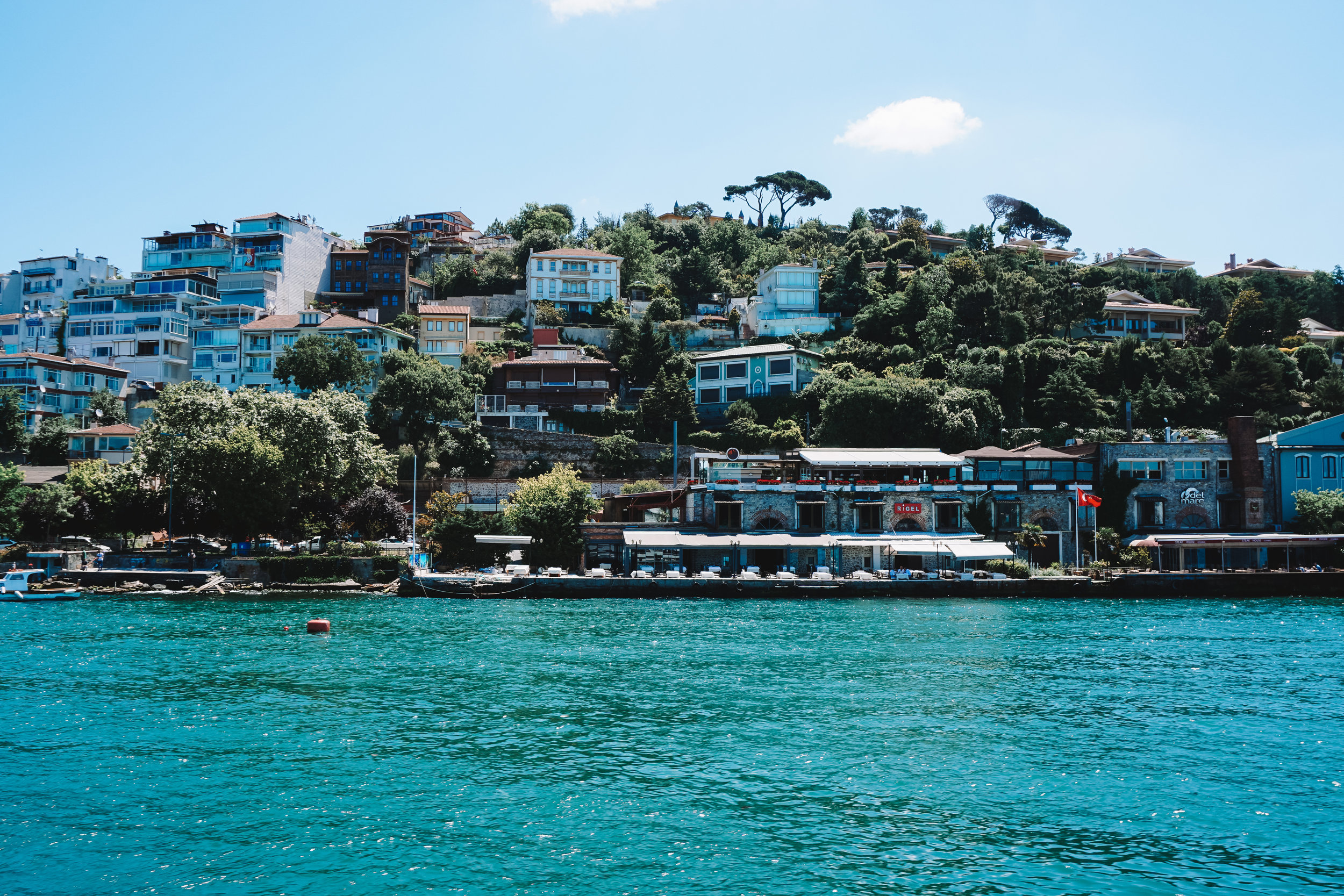
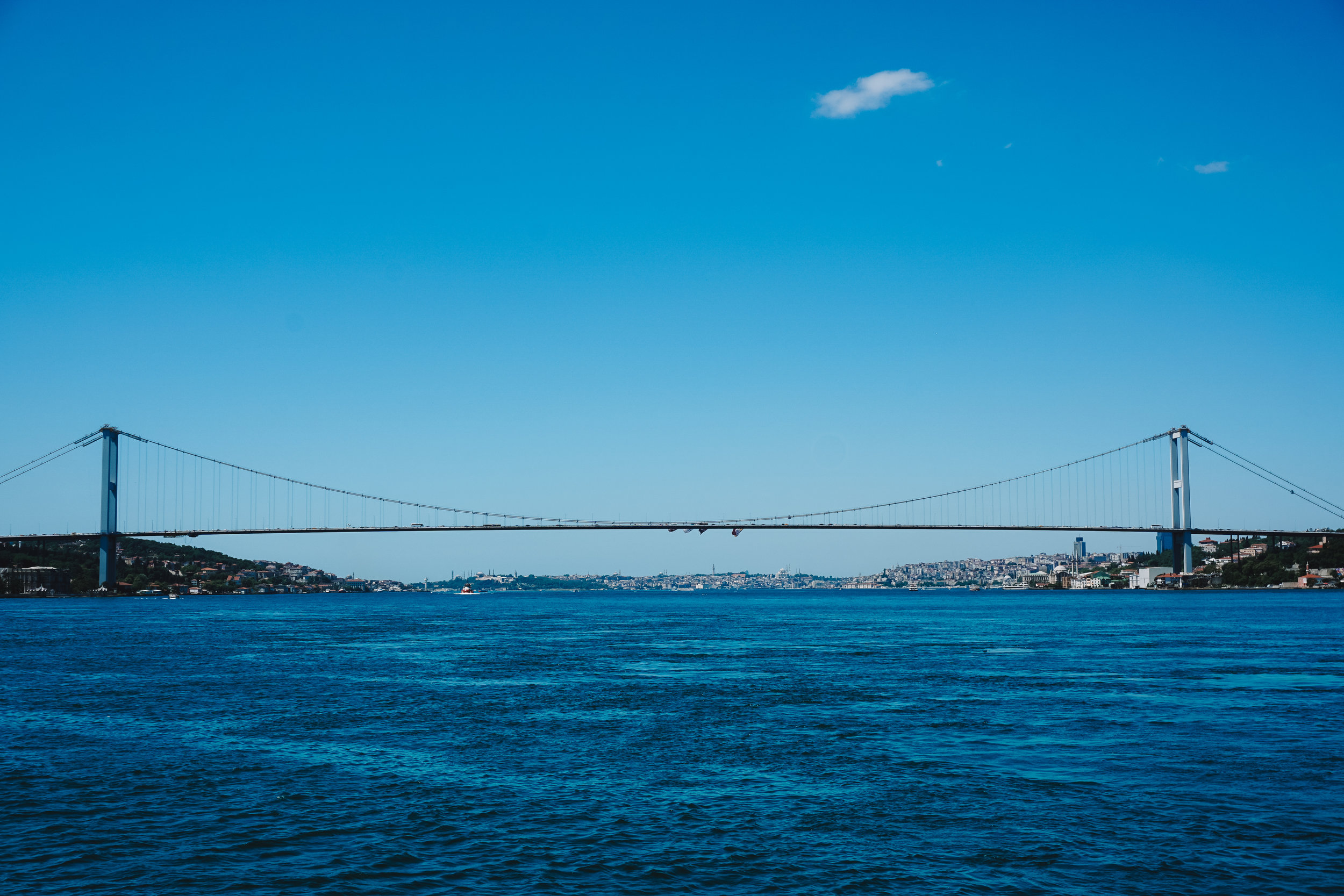
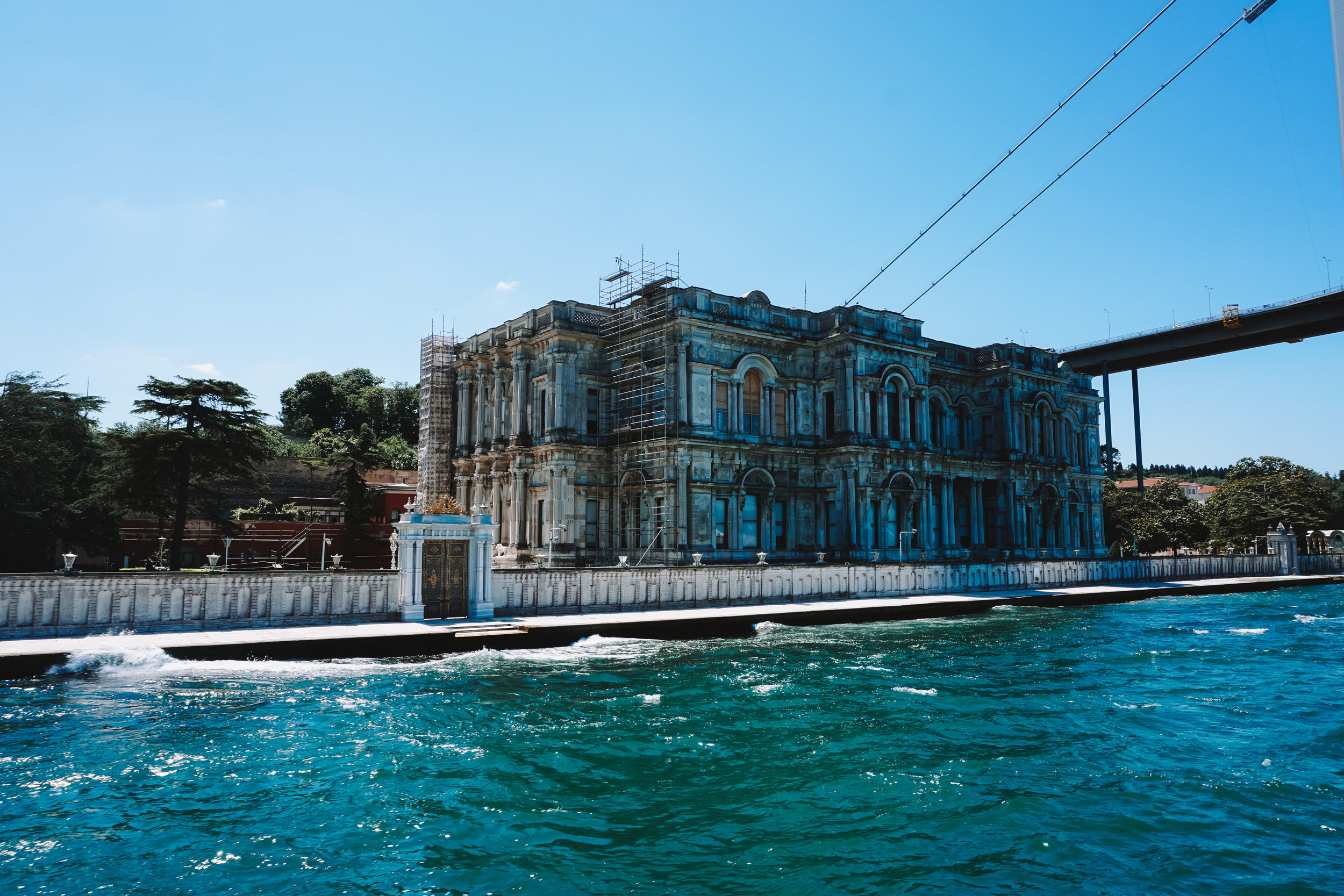
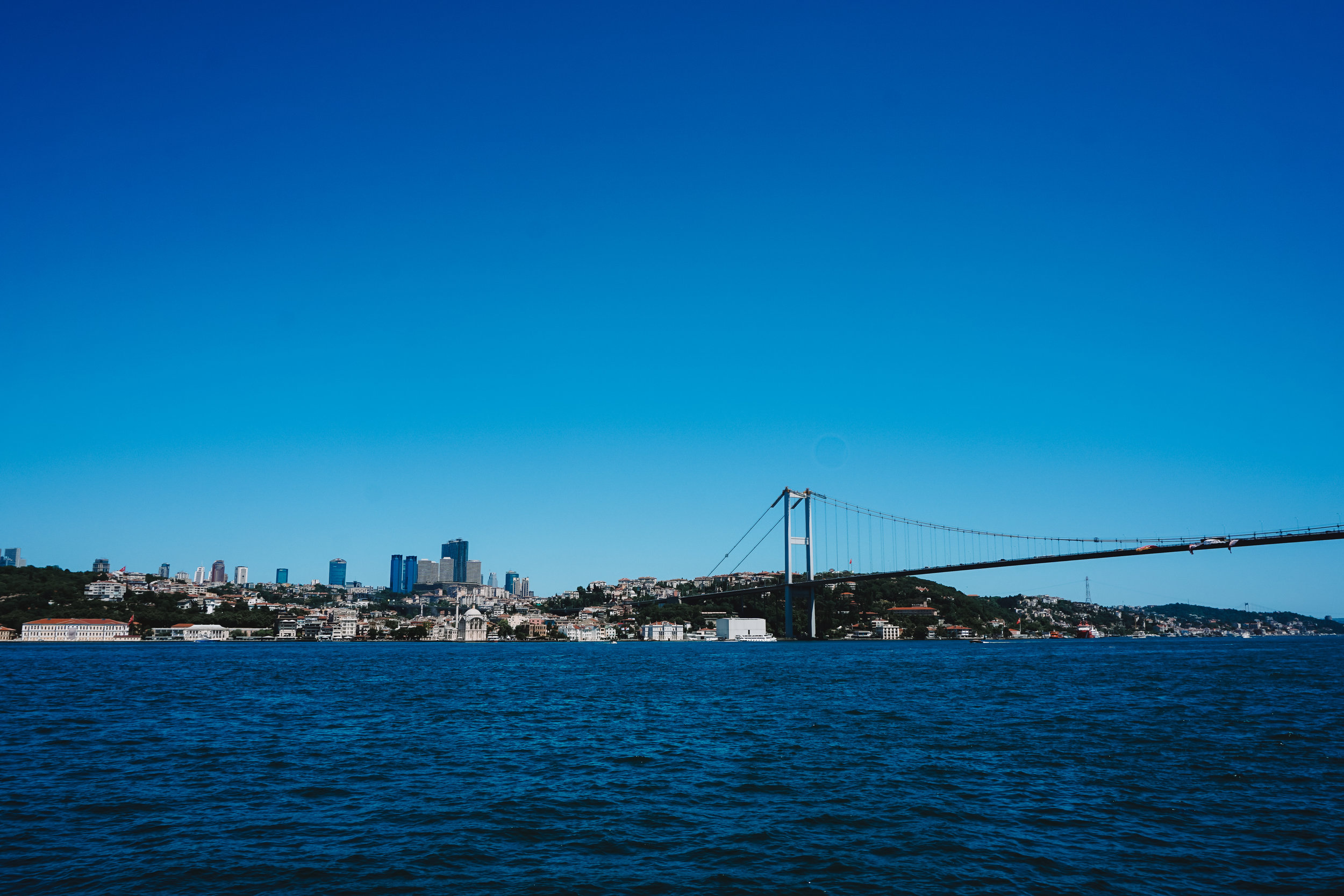
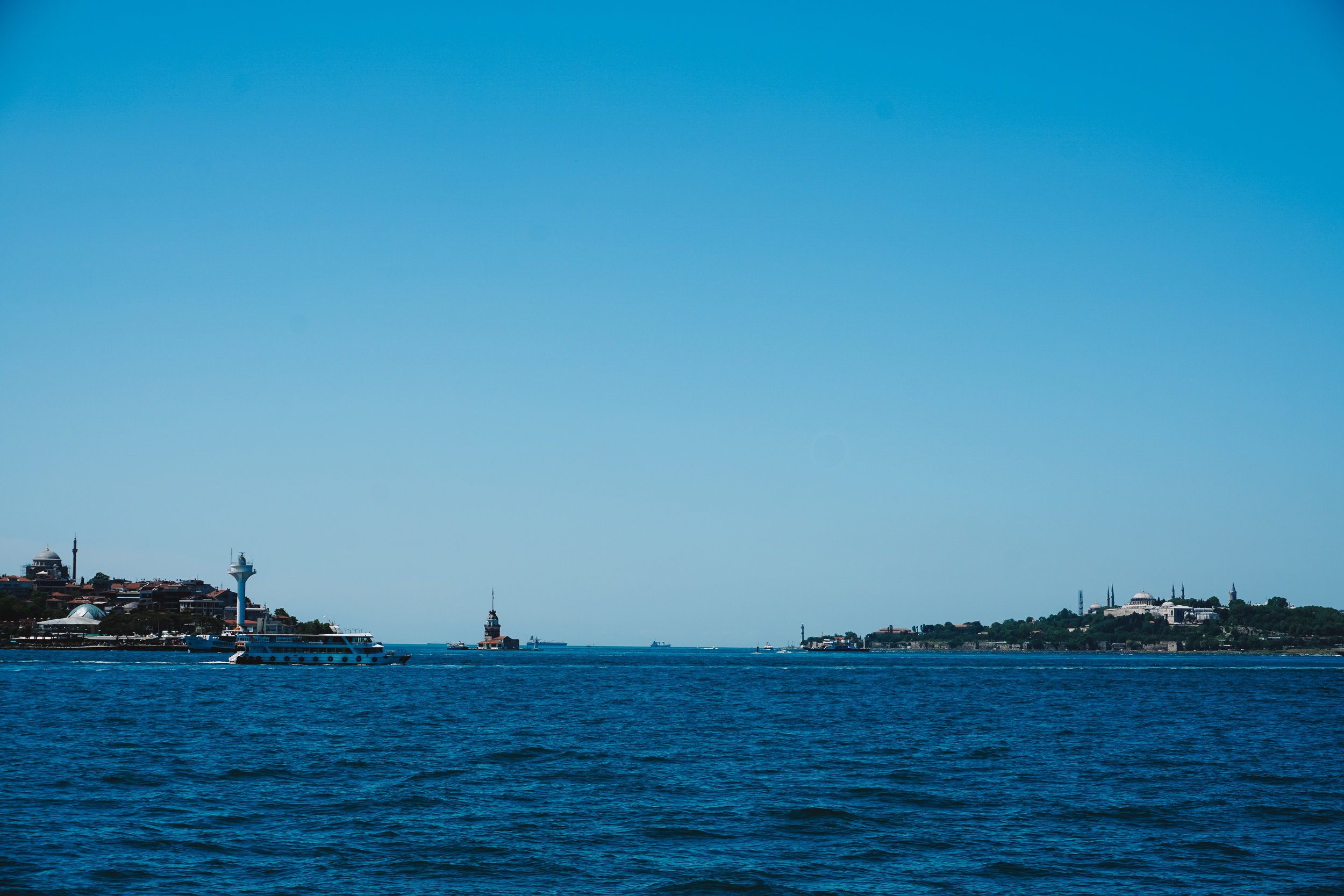
GALATA TOWER
The Galata Tower is located in the Beyoğlu neighborhood on the newer side of the city. This was one of my favorite areas of the city. It's hip, there's good shopping, and cute restaurants. The Galata Tower stands high above the area and is a fixture in the Istanbul skyline.
The tower was built in 1348 and has survived many earthquakes through restorations. At one point, it was used as the city's fire watch tower. As a city filled with wooden buildings, it was necessary to have a lookout watching for any fires in an effort to put them out as fast as possible.
The most interesting story in the history of the Galata Tower is that of a man attaching glider wings to his body, jumping off the tower, and flying across the Bosphorus Strait to the Asian side. This happened in 1630, which is crazy.
We visited the Galata Tower with Özgür, but the line was too long to go up at the time, so Chris and I went back on our last day to see if we could get up. We went in the morning and there was no line, so we went right up to the top and got amazing views of Istanbul.
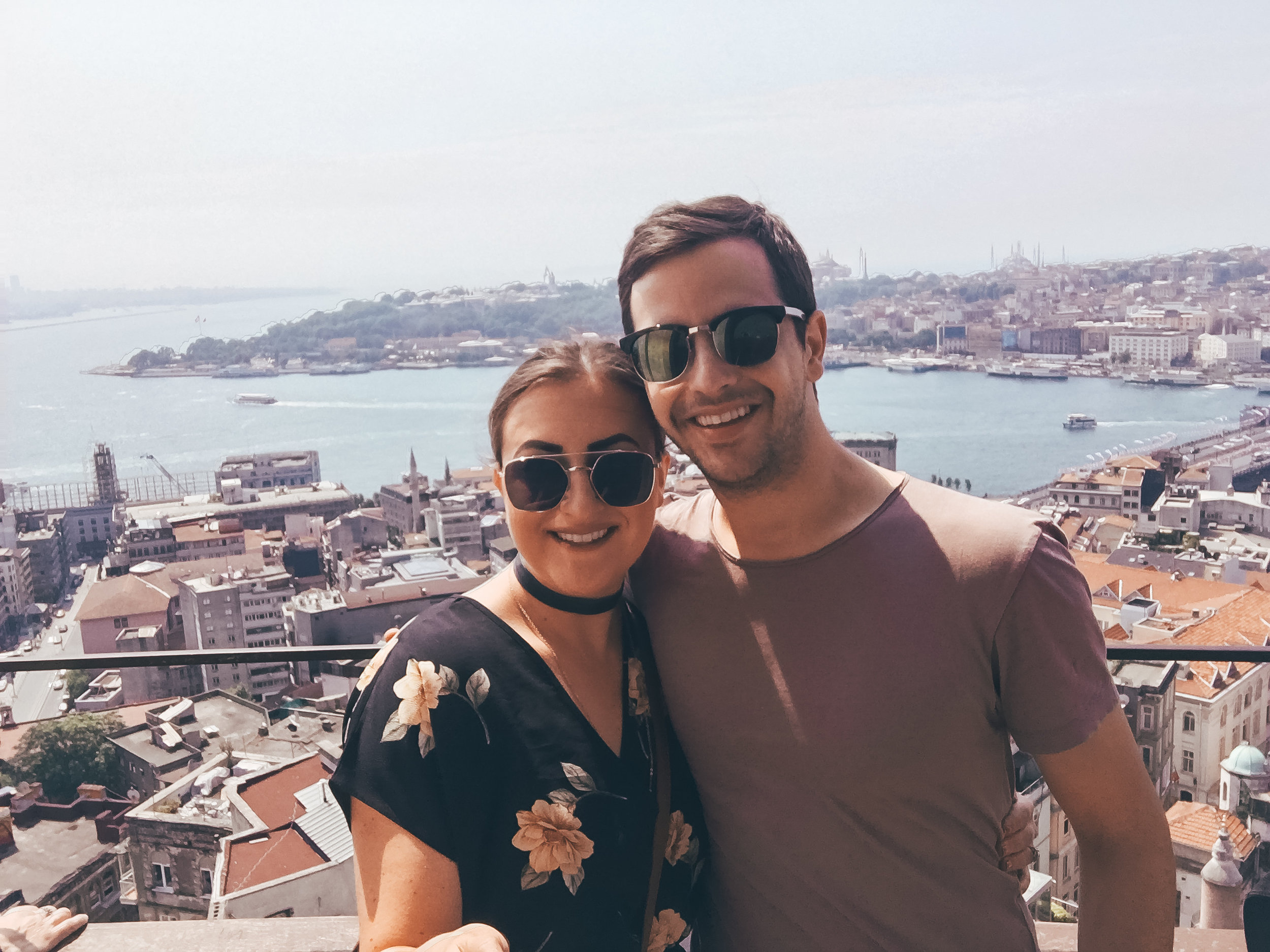
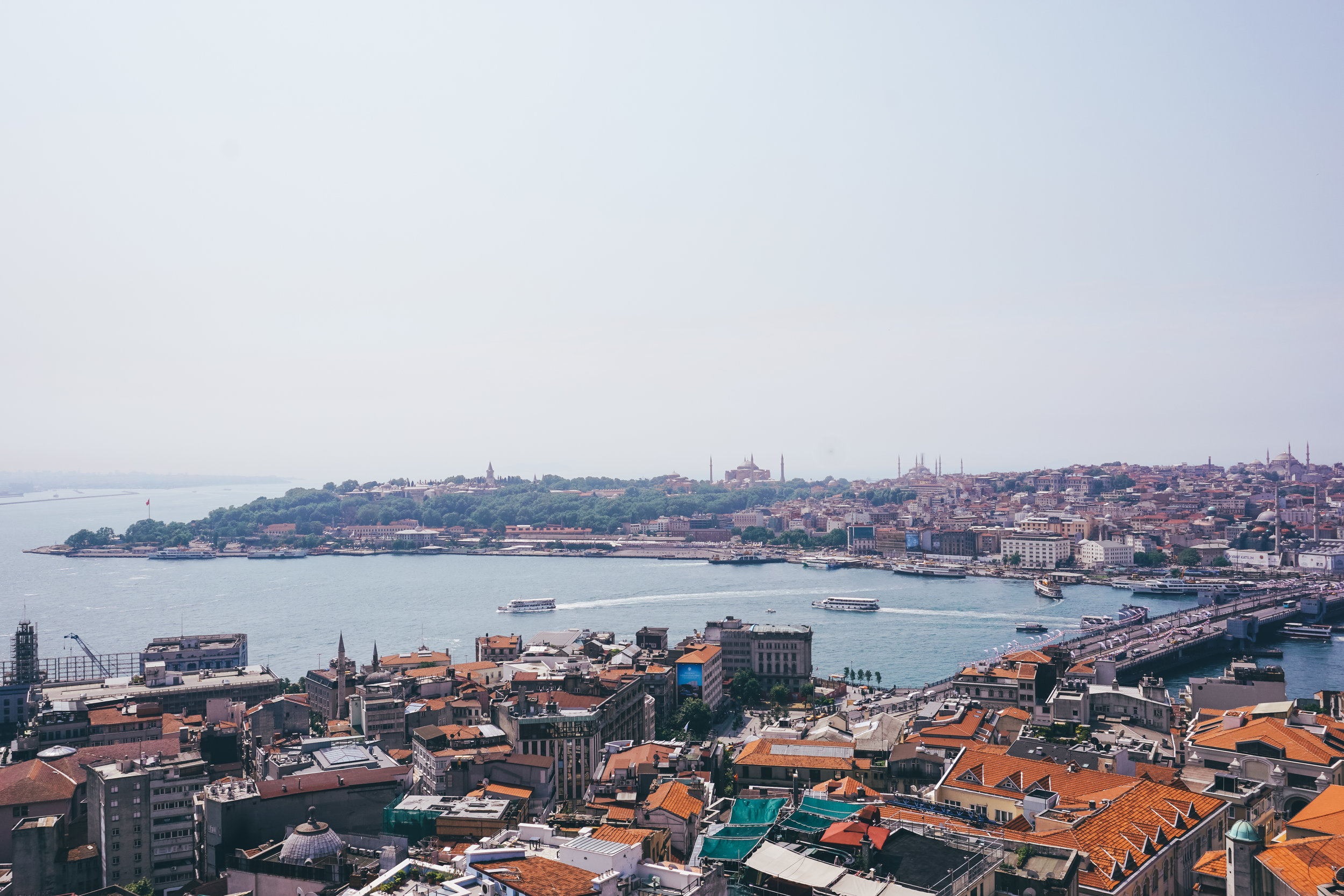
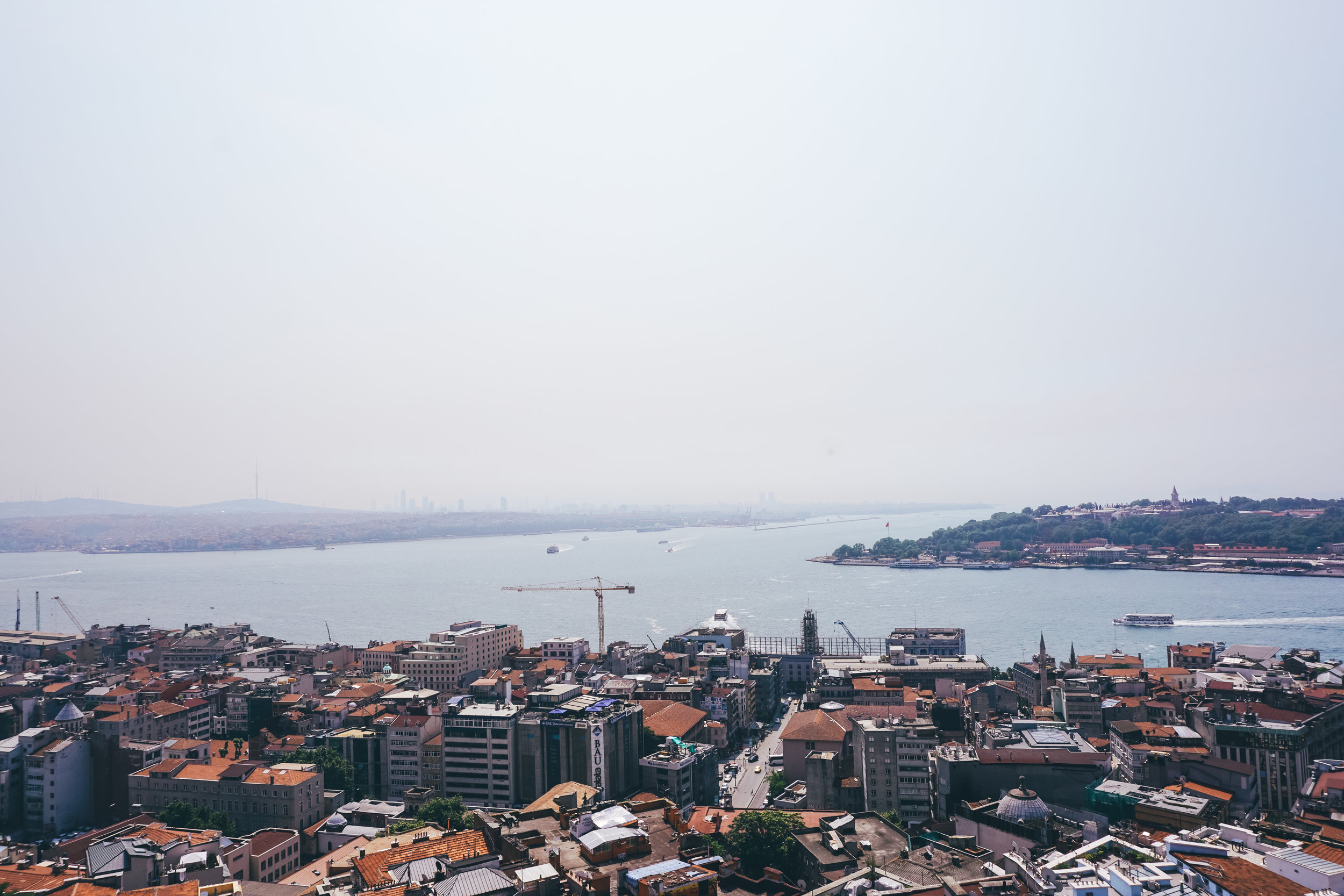
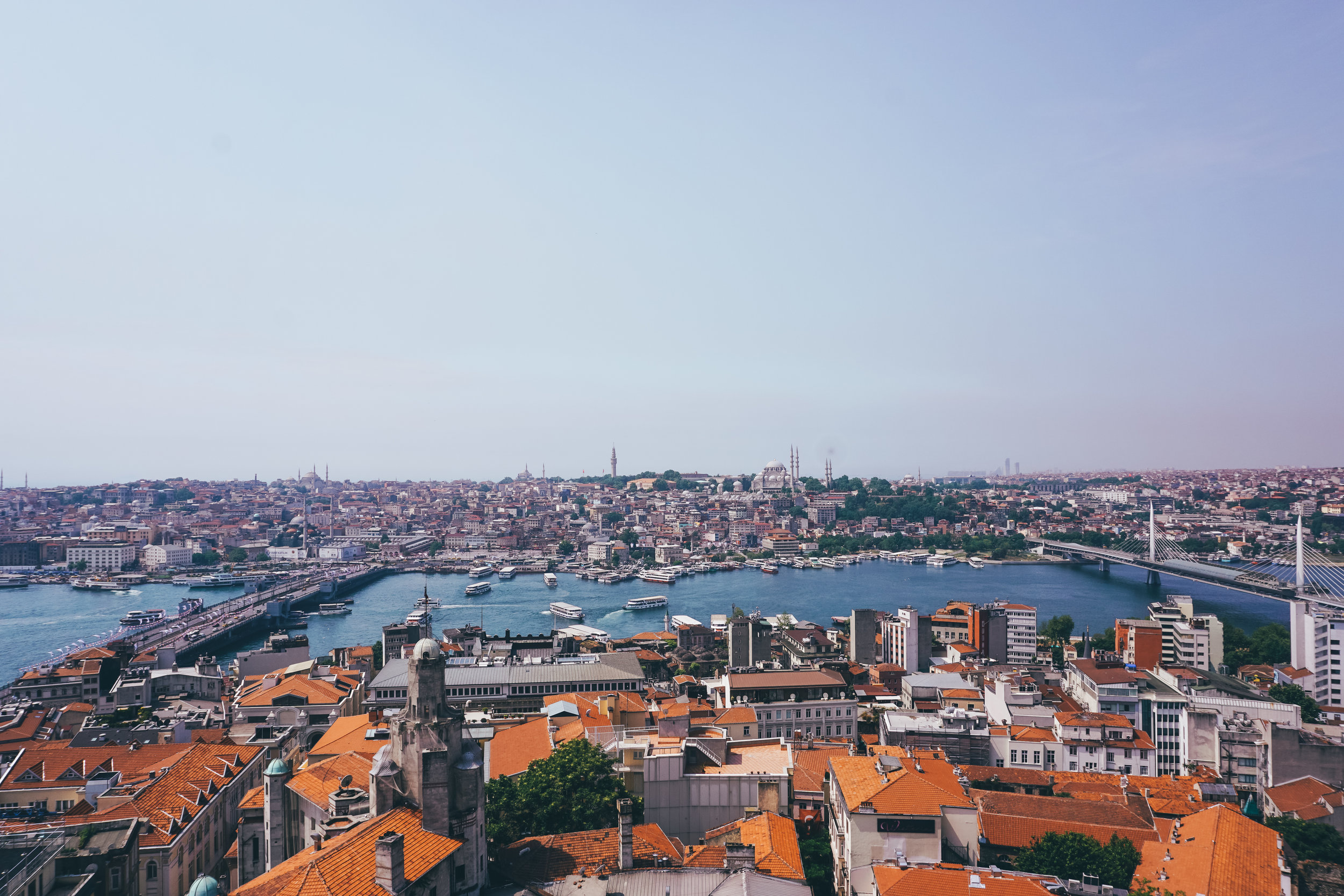
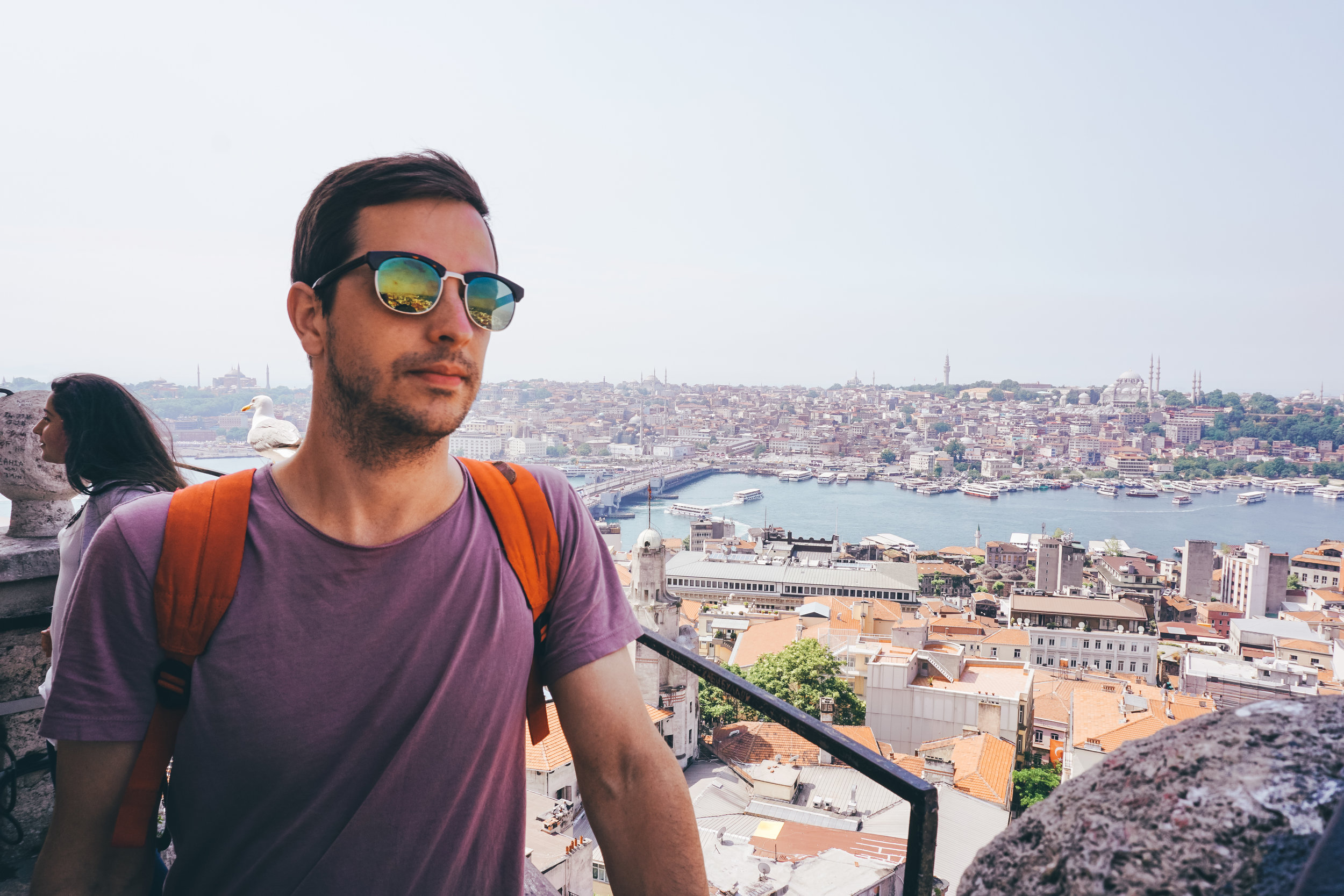
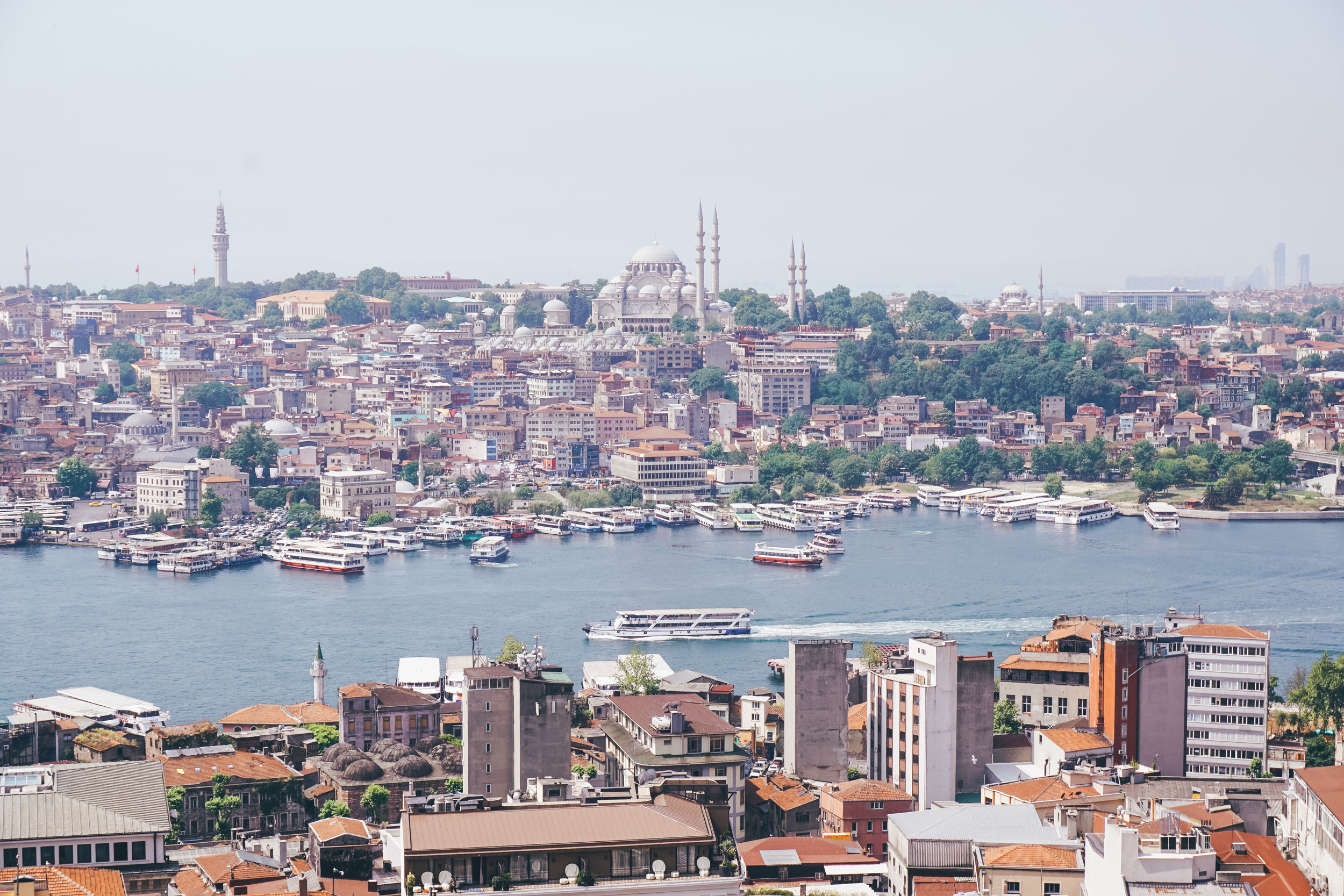
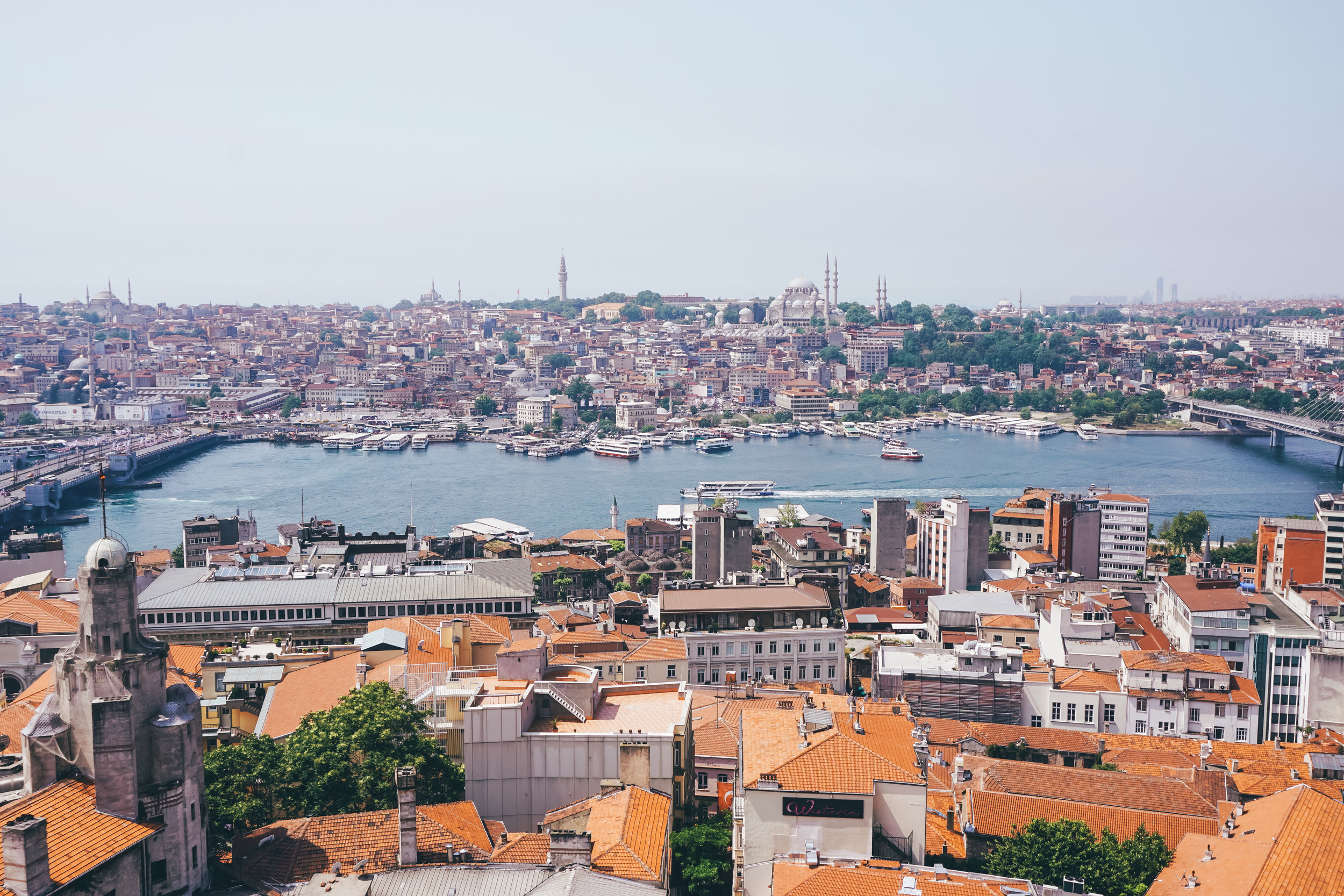
Chris and I love to see cities from above, so this was a must for us. It is open daily from 9:00 a.m. - 7:00 p.m. I suggest going early to avoid long lines. Entry is ₺25 / $5.50 /€4.70. There is also a restaurant at the top of Galata Tower tha opens at 7:00 p.m. Özgür said the food was not worth the price, so we passed on that dining experience.
FOOD
Before we left for Istanbul, we had spoken with a few people who had visited there before and everyone said, "Oh, you will love the food. Eat everything." So we were super excited to try as much as we could. The little research I had done before we left led me to a blog called Will Fly For Food and they have an entire post about the "must eats" in Istanbul. We used this as a bit of a guide while we were there and I'm so thankful we did because one of the best meals we had was on their list! The street food in Istanbul is by far the best food. We got street food every single day because it was fresh, so yummy, and super cheap. Take a look at everything we tried below. My mouth is already watering!
Street Food:
Fresh Orange Juice -- freshly squeezed orange juice is sold all over the place. It tastes delicious, was refreshing in the heat, and only cost ₺3 / $0.65 /€0.56.
Simit -- these are basically like a sesame bagel, just a little harder. Özgür said they are the best when they are right out of the oven. They are sold in little red carts all over the city, so I don't think any of them are going to be fresh out of the oven, but they were a quick and easy snack when we needed a little pick-me-up. These will run you a whole ₺1.50 / $0.32 /€0.28.
Midye Dolmas -- these are mussels stuffed with rice and spritzed with the juice of a lemon. Ooooh my goodness were these tasty. They are sold on the sides of the street for ₺1 / $0.22 /€0.19 per mussel. We could have eaten 20 of these.
Chicken, Rice, & Chickpeas -- this was one of our favorite foods in Istanbul. Because we were there during Ramadan and tons of food carts come out after sunset, we were able to hit up this stand every night on our way home since it was on the street we were staying. This meal was simple: rice, chickpeas, and rotisserie chicken. I think the rice was loaded with butter and salt, which is likely why it was so delicious. This meal cost us ₺4 / $0.87 /€0.75.
Fresh Fruit -- there is fresh fruit sold everywhere. Particularly watermelon, honeydew, and pineapple. It was all freshly cut and super juicy.
I could have seriously lived off of all the street food every day and it would have probably cost us $5.
Lunch:
Döner Kebab -- on our first day with Özgür, we had a bit of a break when we were visiting Topkapi Palace, so we hit up the little cafe for a bite to eat. It served döner kebabs and you could get either lamb or chicken. We both got chicken, fresh fruit, and a little chocolate cake for a treat.
Kebap Dünyası -- when we were wrapping up with Özgür on our second day, we walked up the main shopping street and he recommended a couple places along the way. One of those places was Kebap Dünyası. We had some of the best hummus we've ever had with warm pita bread. Chris ordered a kebab and the traditional drink called ayran, which is yogurt mixed with water and salt. I ordered chicken wings with rice on the side. This meal was super tasty. We'd go back just for the hummus.
Key Karakoy -- after I was done rejuvenating at the hamam, I found Chris at the hookah spot, and we walked down the street to find some food before Chris had to run to his hama appointment. That is when we stumbled upon Key Karakoy, which drew us in because of their waffle advertisement. We each got a coffee and I ordered a caesar salad, and we both shared a waffle with personalized toppings. Our waffle had nutella, bananas, strawberries, and crumbled pistachio. Oh my heavens this was tasty! I would go back here in a second for the waffles!
Dinner:
Halil Usta -- remember that meal that I said was the best thing we ate hands down? Halil Usta located off of Taksim Square is responsible for that incredible meal. A big thanks to that blog because there was no way would have stumbled upon this or found it on our own. Halil Usta serves traditional Turkish dishes and the one I was seeking out is called lahmacun [pronounced lan-mah-jun]. It looks like a pizza, but it is a thin, crispy crust, topped with minced meat, herbs, onions, tomatoes, and parsley. It comes cut in half so you can roll up each half and eat it like a burrito. It was unbelievably tasty. Along with the rice and chicken dish, I could have eaten this every day. Chris got the traditional dish called pide [pronounced like pita]. It's basically a boat of bread filled with toppings -- Chris got cheese and sausage. This was also phenomenal. For dessert, we ordered another traditional dish called künefe. Quoting from the food blog, künefe is "crisp cheese-filled dessert made with shredded kadayıf dough soaked in sweet syrup and topped with clotted cream". I'm pretty sure ours was topped with butter instead of cream, but holy moly this was good. It was sweet and savory, hot and gooey, chewy and crunchy. So freaking yum. This place is a must if you're in Istanbul.
Güney -- this is the Italian restaurant located right next to the Galata Tower that we had seen earlier in the day when we were out with Özgür. He said they had great wine, so we thought we'd try it out. We had patio seating on a beautiful night, which helped with the atmosphere. For starters, we ordered four different things to try: tebouleh, hummus, pickled beetroot, and an herb cheese with bread. These were all pretty good. My personal favorites were the teblouleh and beets. For our mains, I ordered a walnut salad and Chris got the Turkish ravioli. A salad's a salad, but Chris' Turkish ravioli was super yummy. He said it was one of the best things he ate on the trip. This all washed down beautifullly with a bottle of Turkish rosè.
Istanbul 360 -- I was obsessed with seeing the sun set over Istanbul, so Chris had the great idea of looking up rooftop restaurants so we could dine and watch the sky. He looked online and found Istanbul 360, which is a rooftop restaurant on the main shopping street with fantastic views of the city. The sun sets earlier in Istanbul than the rest of Western Europe, so we made our reservations for 7:30, so we could catch the whole thing. Chris asked for the best table to watch the sunset and they did not disappoint.
What was disappointing was the service and food. There was one server for the entire rooftop. We waited and waited to order and then we waited and waited for our food. Not a good look for a fancy restaurant. When we finally got our food, it was beyond lackluster. The hummus had no taste, my duck ravioli had no taste, and Chris' New York strip was not a strip, but a sirloin that was really fatty. After our first couple bites, the sun had gone down, and we opted to leave to eat street food. We left our table, found our server, politely told him how disappointing everything was, and paid our bill. In the States, we probably would have gotten our meals paid for, but not in Europe. We paid the entire $100+ bill, which felt like salt in the wound. It was by far the most expensive meal we had and it was shite as the Irish say. It might be an okay place to grab a drink, but do not eat here!
Beverages: Turkey has its own style of tea and coffee -- both are served black and strong. The tea comes piping hot in the cutest little glass; make sure to hold it from the rim so as to not burn your fingers. Turkish coffee is an institution. It is everywhere and a sign of hospitality. The end of the coffee is thick, so be sure to not drink that part. They will ask if you want sugar in it and I suggest adding it since it is very strong. Lastly, sometimes you just need a Starbucks and Istanbul has one. We hit up the Starbucks on our last day before our shopping extravaganza and it tasted so good. We each got the largest size and the total cost for the two was $6. I repeat, $6! Also, my name is now spelled Sera.
Umm also, there is a Caribou Coffee in Istanbul?! Chris and I stopped dead in our tracks and tried explaining to Özgür how crazy that is! And no, we didn't get any because #starbucks4ever.
Desserts: Istanbul has lots and lots of sweets, but the two we really liked were ice cream and Turkish delights.
Özgür recommended visiting a restaurant called Mado for ice cream. They are all over Istanbul. Turkish ice cream is a little different than what most people are used to. It is made with salep, which is from the tuber of an Orchid, and mastic, which is a resin made by trees, which makes the ice cream a bit chewier and more resistant to melting. It might sound strange, but the ice cream was delicious.
Chris and I tried several different flavors: banana, pistachio, strawberry, almond & honey, chocolate, chocolate & vanilla, and mango. A two-scoop cone was only ₺9 / $1.95 /€1.70.
Turkish delights are one of the most iconic foods you will find in Istanbul. They are rolled like logs and are made of a similar texture to a Swedish fish candy or gummy bear, but are made and sweetened naturally with flavors like rosewater, pomegranate, and pistachio. To finish them off, they are dusted in powdered sugar, or dried rose petals, or almond shavings, for example, to prevent them from sticking to one another. There are shops all over selling Turkish delights, as well as the Grand and Spice Bazaars.
When it comes to food and drink in Istanbul, eat everything. Try it all. Especially the street food.
TURKISH HAMAM
No stay in Istanbul is complete without experiencing a traditional Turkish bath, known as hamam. Hamams date back centuries and are derived from the Greco-Roman baths. The Ottomans appreciated the baths since they considered cleanliness a sign of holiness. [Remember how they must wash themselves 3x before praying in a mosque?] They believed that the bath was a chance to cleanse the skin, detoxify the body, and restore the spirit. And let me tell you, that is the exact experience we had.
There are lots of hamams in Istanbul and some have been commercialized for tourism. Özgür described them as factories trying to get as many people in and out as fast as possible. That is NOT what a Turkish bath experience is about. He gave us a recommendation for the hamam his wife frequents and since recommendations from locals are the best, we made sure to go that one: Kiliç Ali Paşa Hamami.
There are a few logistical things when it comes to going to a hamam. At this particular one, you have to make a reservation. You can either call or arrange it online on their website. The reception people speak English, so it's no problem at all to call. Traditional hamams will have separate hours for men and women since it's a bathing experience and you're half-naked. Kiliç Ali Paşa Hamami has hours for women in the morning until 4:30 p.m. and then it switches over for the men. So we made my appointment for 2:15 p.m. and Chris' appointment for 4:45 p.m. The entire staff while I was in there was female and vice versa for Chris.
When I arrived for my appointment, I checked in, got a fresh juice, and was given a towel and sandals to go change into in the lockers on the second floor. In certain hamams, you can go completely naked underneath the towel. At this particular one, I'm fairly certain you are required to wear a suit, which is what I would have done regardless. When I was done, I went back downstairs and was greeted by my attendant, Özlem. She led me into the actual bath part of the hamam. Everything was marble. Everything. It was the most gorgeous room I have ever seen. It was also very warm and steamy. Not quite sauna hot, but close. She had me sit down by a spigot and proceeded to dump loads of buckets of water on me for my first cleanse. Then she brought me to the main room, which had the most beautiful dome with star-shaped skylights letting the sun shine through. In the middle of the room was a large circular marble slab. Here is where I got to lay flat on my back to relax. The marble slab was heated and felt so nice. I switched between looking up at the star skylights and closing my eyes to let the reality of where I was and what I was doing sink in. After what felt like ten minutes, Özlem brought me to one of the stations that line the walls in this circular, main room. Again, everything was marble. She had me take off my bikini top and sit down. She started by taking a course mitt and exfoliated my entire body. I had heard that this can hurt, but mine didn't. It felt really good. Strike that. She did have to go a little harder on my face because I was the dummy who had a full face of makeup on going into this. Pro tip: Don't wear a full face of makeup to the hamam because your face will feel raw after all the scrubbing. Next, she dumped more buckets of water on me, the water temperature changing between warm and cold. Then, she covered me in soap suds. She took this linen bag that almost looked like a laundry bag, dipped it in soapy water, moved it around so it filled with air, and then she wrung it out over me, and let the soap suds cover me. It felt like I was 7 years old again and overfilling my parents' jacuzzi bathtub with waaaay too much soap and creating a mountainous bubble bath. I was engulfed in bath bubbles and all I could do was giggle. Özlem used the soap suds to clean my body. My eyes were shut the whole time because the soap made them sting a little, plus there was still some mascara running to add to the sting, so she would say "lady" and help me move around so she could make sure she cleaned everywhere. The best part was as she cleaned, she also massaged every muscle. I didn't know before this that fingers could get massaged, and you know what? It feels great. After I was all sorts of clean came more bucket loads of water for the rinse. The final step was my hair. She actually washed and conditioned my hair. It was so nice. Once your body is clean and your soul restored, you get a fresh towel and get to go relax back in the main room outside of the bath on these massive couches with pillows. Once I was ready to to go, I went back up by the lockers to change and get ready. They have hair dryers, mirrors, and lotion, so I was able to get mostly back to normal. One thing I had forgotten was a hair brush, but it was really nice to be able to blow dry my hair.
Technically, you aren't allowed to take pictures inside, but I was able to capture a quick before and after shot. Check out the hamam's website to see more pictures of how amazing it is inside.
Kiliç Ali Paşa Hamami was one of the most luxurious experiences I have ever had. Basically I feel like a peasant washing myself now. :) It's an incredible hamam and I highly, highly recommend going. The cost to experience the hamam was only ₺220 / $48 /€41. SO CHEAP! You can also add on an oil massage if you want for an additional cost.
After I was done, I found Chris around the corner at a hookah bar on the cutest street filled with restaurants. It was super fun to recount the hamam and let Chris know what to expect for his appointment over some hookah and Turkish tea!
STREETS OF ISTANBUL
Speaking of cute streets... Istanbul is filled with them. Narrow roads, uneven cobblestone, greenery hanging from street wires, cats and dogs everywhere. So here is a little break in the light reading to enjoy some of my snapshots from our walks around the city.
SHOPPING
When Chris and I go on trips, we don't normally do a whole lot of shopping. If anything, we'll buy print to hang on the wall or a small piece of home decor to have a piece of that trip with us at home. Other than that, we're not into t-shirts, shot glasses, etc. Istanbul flipped the script on us. There were so many shops with handmade items that it was hard not to ooh and ahh at everything. Not to mention the two bazaars in town that offer endless possibilities. I'm going to walk through the bazaars, the shopping districts, and recount our rug and lamp shopping experience.
Grand Bazaar:
As part of our private guided tour, Özgür took us through the Grand Bazaar, which is essentially a mini city. Founded in 1461 by Sultan Mehmet II, this is the epicenter of shopping in Istanbul. With over 4,000 shops, you can find anything that you're looking for: rugs, lamps, jewelry, spices, tea, you name it. However, the Grand Bazaar is crazy touristy, crowded, and highly overpriced. No locals shop there. A lot of the shops won't let you take pictures either. So we walked through it and walked right out. I was able to snap a few photos without getting yelled at.
Spice Bazaar:
The Spice Bazaar, or Egyptian Bazaar, is Istanbul's other bazaar, but on a much smaller scale. This is where the locals shop, so this is where we went based on Özgür's recommendation. This marketplace was built in 1660, and was called the Egyptian Bazaar because most of the goods sold there came from Egypt.
We set out to shop on our last day in Istanbul, so that any food we bought would be as fresh as possible when we brought it back to Ireland. We had briefly visited the Spice Bazaar with Özgür, who introduced us to one of the shop owners that he trusts. This helped for when Chris and I visited the Spice Bazaar later, we knew exactly where we wanted to go. We went in with the mission to buy Turkish delights, pistachios, and spices. This shop had it all and more. We tried apple tea, tried perfumes, smelled all the pistachios, tasted different kinds of nuts, and tasted nearly every kind of Turkish delight. That is the awesome thing about shopping at the bazaar, they will let you try anything and everything. We ended up buying 200 grams each of cumin, chicken seasoning, and chili flakes. All of the spices were imported from Iran. We bought 200 grams of twice roasted pistachios -- we definitely should have gotten more. Lastly, we got an assorted box of five different Turkish delight flavors that we got to choose. The shop owner was super great, so it made for a fun experience.
Shopping Near Galata Tower:
There are loads of shops along the main shopping street, İstiklal Caddesi, but if you keep walking towards Galata Tower, there are really cute shops along the way. This area was way less crowded and a bit on the hipstery side. We made a few pick ups: an old piece of tile that was framed and a few beaded bracelets. The only thing I regret not buying were towels from the shop that sold the same linens that the hamams have.
Lamps & Rugs:
After grabbing the tile, bracelets, and goods from the Spice Bazaar, Chris and I set out to find a specific rug seller, who my friend Shereen recommended. We had walked from Taksim Square, down the shopping street, down to Galata Tower, across Galata Bridge over to the Old City, and climbed the hills with the sun shining down and impatience setting in.
We found the rug guy's shop address on Instagram, but it wasn't where it said it was. We thought we'd keep walking to see what we could find and stumbled into a beautiful lamp shop called Sultan Lamps. We went into this day knowing we wanted to buy lamps, but a rug would be a big maybe. So we thought let's pop into the lamp shop to see what kind of quotes we can get. We met one of the owners, Recep, who was super kind and helpful. He served us tea and water and started to explain a bit about the lamps. We learned that all of the globes are handmade, but only some of them have handmade copper fixtures. The others are machine made. We talked about getting a three-globe lamp and really wanted one that hung from the ceiling, but ultimately decided on a floor stand since we are renting. Recep talked through different coloring with us, showed us how to change out the globes, everything. We also organized with him to have the lamps shipped to our home, which was perfect. Recep is an A+ human and I would buy from him any day. He chatted with us even after we got home to make sure we got the lamps okay and said we were welcome back to his shop any time.
While we were at Recep's shop, we mentioned we were interested in buying rugs, but couldn't find this certain shop. He told us his brother owned a rug shop around the corner, so he took us there himself to introduce us to his brother, "John Travolta". Back in the 70s, this guy was the spitting image of John Travolta and has had the nickname ever sinse. You guys, I honestly don't even know his real name, which is a shame. So for the sake of this story, he is John.
As soon as we got to the shop, we met John and all four of us went down into the lower level. The floors were covered in rugs. I'm talking floor to ceiling piles of rugs. John brought us to a showroom area of sorts. He sat in what seemed to be his "throne", while Recep, Chris, and myself took a seat on his velvet couches. John had someone take our order for refreshments. Recep and I had Turkish coffee and Chris had water. While we were waiting on our drinks, John gave us a brief rundown on Turkish rugs. We learned that the best rugs in the world come from Iran, Turkey, Azerbaijan, and Turkmenistan. They each have their own weaving technique, no technique being better or worse than the other, just different. This entire lesson was given in between him snapping at the kid to make our drinks faster.
While we sipped on our drinks, John wanted to get to know us. The Turkish, behind the Irish, are the most hospitable we have ever met. They love to entertain, get to know one another, and will help anyone in need. John loved that we had just gotten married and offered a Turkish saying translated to English that goes like this: "A life without a wife is like a kitchen without a knife." I like that! We learned that John had been to Minnesota before. He had actually lived in San Diego for five years and loved America. I think this boded well for us when it came to negotiating. Throughout our whole time with him, he called Chris his brother and me his sister. He was either the smoothest talker, or extremely likeable, or both.
When we told John we only had about 45 minute before we had to head for the airport, the show really started. John and his associate laid out rug after rug after rug. We probably saw 30-40 rugs when we narrowed in on one. To be sure it was the perfect magic carpet, John had me go sit on the rug I liked, called over two more guys, and they lifted me up so I could feel like Jasmine in Aladdin singing "A Whole New World". It was probably one of the funniest / best moments of my life. This rug was brand new and had taken one woman 12 months to make it by hand. It is gorgeous. John and his associate continued to pull out other rugs. This tactic worked well for him because he laid one out that Chris loved. So now we had one that I loved and one that Chris loved. I told Chris I was winning this battle because I had the perfect spot for the one I liked. John told us that the rug that Chris liked was 160 years old and formerly used for riding camels. It has four different weaving patterns and is stunning. I was ready to walk away with one rug, but then John gave us the quote for the two of them, plus threw in two pillow cases, so it turned into an "f it" moment and we got both. We can justify it any way we want, but we know we'll have these rugs forever and we will always have the story. It's one month later, and we haven't regretted the decision for a second. Hugo also loves them. :)
TRANSPORTATION
Istanbul is a massive city and spread out among different bodies of water, and two continents for that matter. So getting around is a little trickier than other cities, but nothing difficult by any means. We walked most places, but did take several taxis, Ubers, and trams.
Airport to Istanbul:
Getting to and from the airport is fairly simple. There is a bus company, Havataș that runs shuttle buses every half hour from 4:00 a.m. - 1:00 a.m. It drops off in the Old City and in Taksim. We had originally planned on taking this bus, but we landed into Istanbul after 1:00 a.m., so that was no longer an option for us. There is also a metro subway option, but that stops running at midnight. So we had to grab a taxi. When we got out of the gates in the airport and through customs, we were called over by a guy offering a private taxi service. He was telling us that the taxi drivers can't be trusted and that he could offer us a fixed price with a verified, licensed driver. He quoted us something like €45, which seemed pretty high because our Istanbul book said a taxi would be around ₺70, which is roughly €13. But we were extremely tired, not in the mood for finding alternative and potentially sketchy transportation, so we went with the private cab. We got to our Airbnb super quick, so it worked out just fine. Now on our last day when we were heading back to the airport, we took an Uber, which is what I would recommend doing. It's much cheaper and you know you won't get scammed.
Getting Around Istanbul:
Taxis: As I mentioned, we were told that the taxi drivers can't be trusted, and we didn't know if the guy was just telling us that because he wanted to sell us an over-priced ride, but our tour guide Özgür confirmed it. He said that they will try and drive longer routes, overcharge, and take advantage of people, especially tourists. We took cabs when we traveled around with Özgür, but since he is a local, he knew exactly where to go and he could communicate with them in Turkish. During our first cab ride with Özgür, the taxi driver definitely tried going a different route, but Özgür wouldn't let him, and he tried to charge us for asking him to put the air conditioning on. If he was doing this with a local, can you imagine what he would have done if it had just been us? We had taken for granted how easy it was to travel around when we had Özgür with us, which became very clear when we tried to get our own taxi on our third day when it was just us exploring. We wanted to go back to the Old City to see the mosques again and walk around. Chris remembered that it had cost us ₺20 to get to the Old City with Özgür, but when we asked a taxi driver how much it would be, he said ₺60. Chris challenged him explaining we had gone the exact same distance two days before for ₺20 and the taxi driver laughed and consulted the group of other taxi drivers standing nearby and they all laughed at us and said no way it is less than ₺60. We said thanks, but no thanks and found another way. So hopefully that gives you a sense of how the taxi drivers operate. We didn't trust them.
Uber: Özgür told us the best way to get around Istanbul for tourists is to use Uber. Interestingly enough, the Turkish government has banned residents from using Uber to help support the taxi drivers, so they can't use it. Once we downloaded Uber and got it working, it was a dream come true. We had trusted drivers in big, nice vehicles, and the best part was that it was super cheap. Getting around cost us literally next to nothing. That trip we wanted to take from Taksim back to the Old City cost us ₺30 / $6 / €5.50 and we got to ride in a big cozy van and got refreshments. After our big shopping adventure, we took an Uber from the far side of the Old City back to our Airbnb in Taksim, asked the guy to wait, and then went to the airport and I'm pretty sure it cost us $13. So if you find yourself in Istanbul needing to get around, 100% use Uber.
Trams: There is an option to purchase an Istanbulkart, which is the city's metro card. This would allow you to ride the subways and trams in town. The only time we took the tram was when we took the T1 after visiting Dolmabahçe Palace to make our way to the Spice Bazaar. The T1 takes you from the New City to the Old.
Funicular: There are two cable cars that run in the city. The first is the Tünel, which is the second oldest underground system in the world, behind New York's subway system. It is a one car tram that is run on cables. It only travels 1,880 feet / 573 meters up the steep slope from Galata Bridge to Beyoğlu. It was the cutest little thing, so we're happy Özgür had us ride it.
There is a second funicular that runs down the main shopping street in Taksim and I'm not certain people pay for this one since there were always people hanging off of it. It was cute when it would go by.
A FEW LAST NUGGETS
- Even with the recent terrorism in 2016, we never felt unsafe, but it was unnerving to see the rubble of a nightclub that had been the target of an attack.
- English is definitely not widely spoken, but we never had an issue.
- The hospitality was some of the best we have ever experienced. The Turkish are so friendly!
- The city has lots of stray cats and dogs, but the city makes an effort to control them. If you see a dog with a tag on its ear, it has been spayed. Most of the shop owners put out food and water throughout the day for all the dogs and cats. I never felt bad for these animals because they seemed super content.
- The smoking population might be a little higher in Istanbul than other places. We were only ever bothered out at restaurants when people at nearby tables would light right after their meal.
- The weather was sunny and beautiful the entire time. The high each day was between 74-78 degrees Fahrenheit / 23-25 degrees Celsius. It was lovely.
- We talked with Özgür a bit about his opinions on Turkey joining the European Union or not. In his opinion, he thinks Europe likes calling Turkey part of Europe, but doesn't deem it good enough for the EU. Conversely, he said Turks don't want to be part of the EU because it would be a bureaucratic and logistical nightmare.
All in all, Istanbul ranks in the top five trips Chris and I have ever taken. It was cultural, historical, and an eye opening experience. It was exciting to step ever so slightly outside of our comfort zones. The architecture, food, and people are worth visiting 1,000 times over.
We have a crazy packed next couple of months with loads of visitors and quick trips to Krakòw, Poland and London, England, so I will do my best to post along the way. Exciting times!
Until next time...
Şerefe! xo,



